After arriving in Munich and dropping off our bags at the Le Méridien, we headed over to the Residenz. After walking through the former palace, we had lunch nearby and returned to see the Cuvilliés Theatre. We then took a quick walk through the nearby Hofgarten before visiting the nearby Theatinerkirche. We continued on to see the Marienplatz and adjacent New City Hall. We popped into the nearby St. Peter’s for a quick look before walking around the old town area to end the day.
Trip Plan
The original plan for this trip was to fly into Zurich, spend a day visiting the city, and then take the train to Munich, spending the day in Bregenz, Austria, on the way. Unfortunately, the GDL union in Germany called for a 35-hour strike to take place when we were planning on going to Munich via Bregenz. GDL is the union that covers Deutsche Bahn’s train engineers. The strike is anticipated to result in widespread cancellations and delays.
Out of all the potential options, the best one was to simply fly directly into Munich. But, because the strike also included Lufthansa ground service workers, who also handle partner airline United’s flights, we had to depart a day earlier than planned. So, we ended up departing a day earlier and decided to also return a day earlier, keeping the number of nights for the trip the same.
So, for the first two full days of this trip, we are staying in Munich to avoid any potential issues from the DB strike. In subsequent days, we plan on visiting Zugspitze, the tallest mountain in Germany, and Neuschwanstein, Germany’s most famous castle. The exact timing of when we do what will depend on weather forecasts. In particular, we want good weather for the visit to Zugspitze so that we can actually see something other than clouds!
Arrival
After arriving at Munich Airport, we quickly entered the country, collected our checked bag, and caught the S-Bahn to the Hauptbahnhof. Our hotel, the Le Méridien, was on the south side of the station. Our room was not ready at the time so we dropped off our bags before heading out agian.
Residenz
We took the tram to the National Theatre stop, which is in front of the Residenz. The Residenz is a former palace and currently houses a museum showing many of the palace rooms as well as other artifacts.
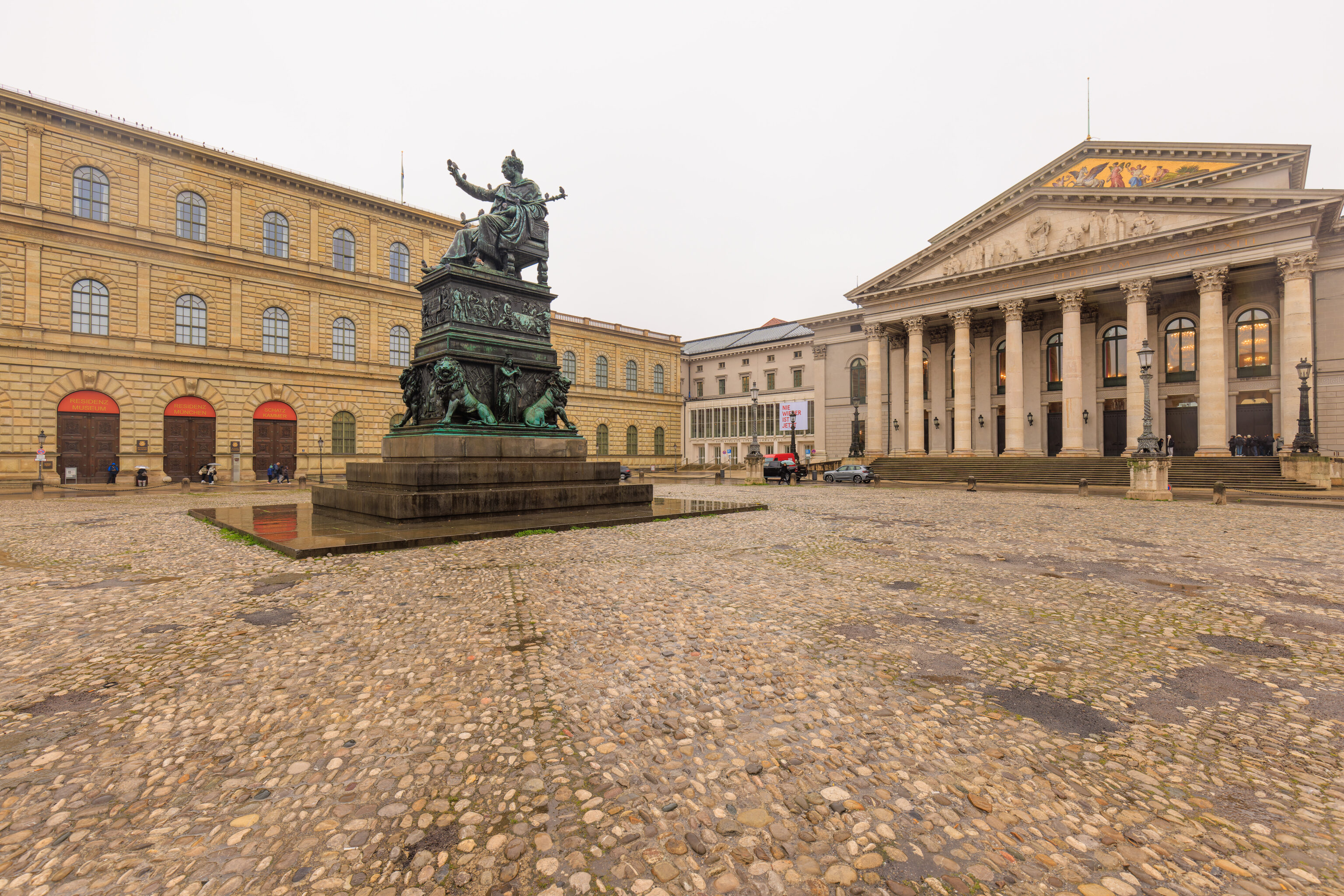
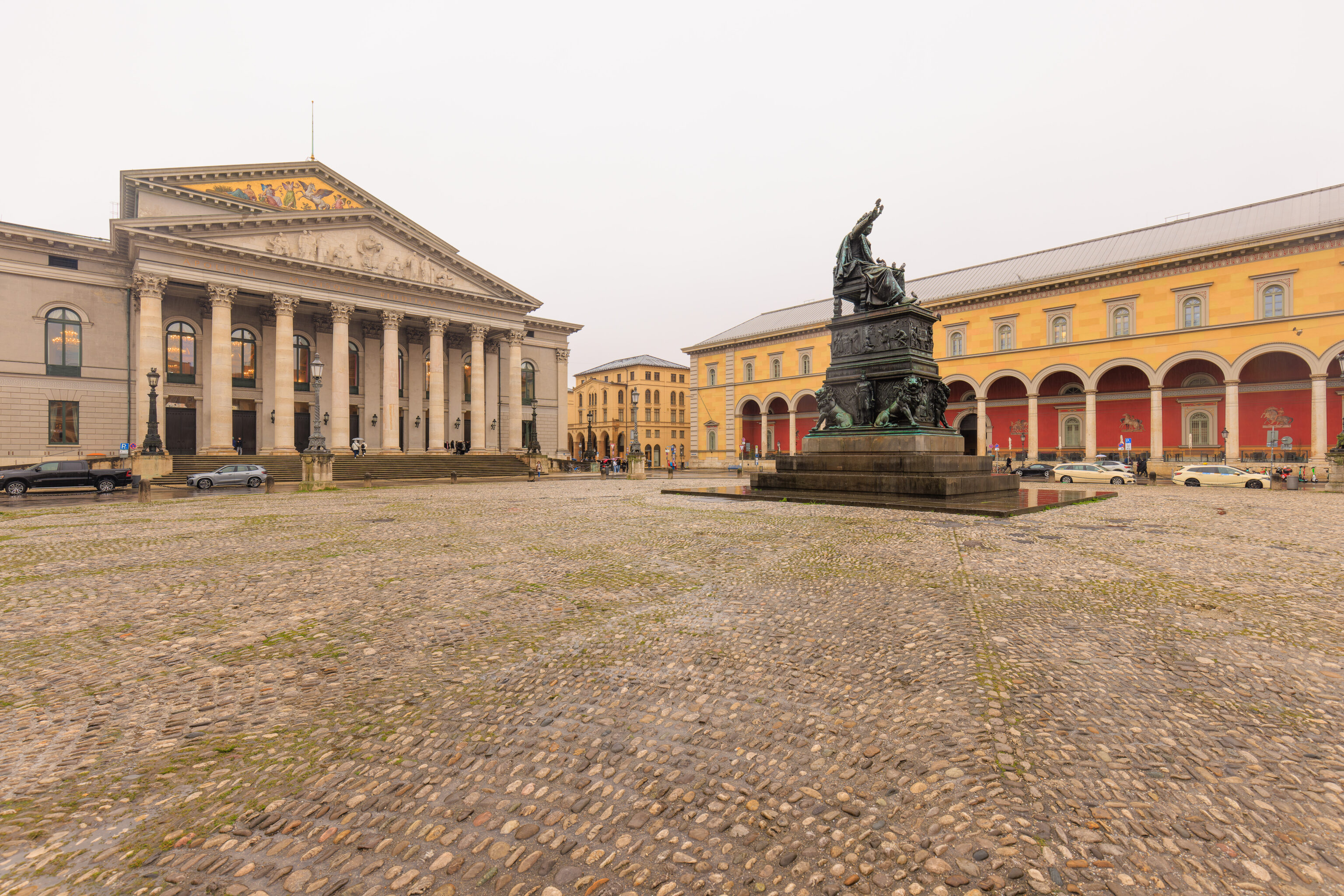
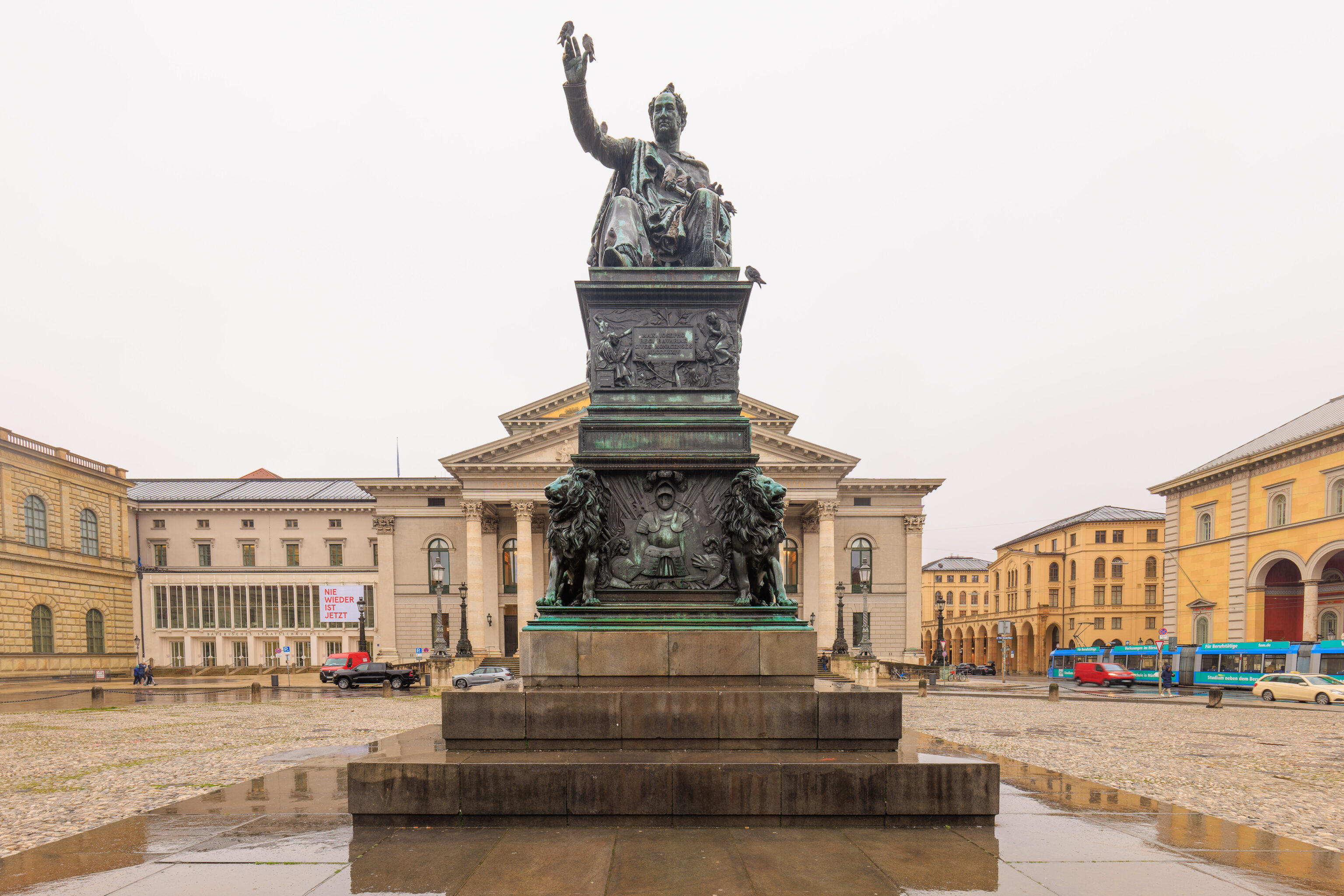
We arrived a bit before the Residenz’s 10am opening time. We walked around the Max-Joseph-Platz in front of the building for a few minutes while we waited for the doors to open. This plaza, and statue, are named after Maximilian I Joseph, the last leader, or Elector, of Bavaria while it was still part of the Holy Roman Empire. The Elector title comes from the role as a member of the electoral college which elects the emperor. After the the Holy Roman Empire fell, he became the King of Bavaria.
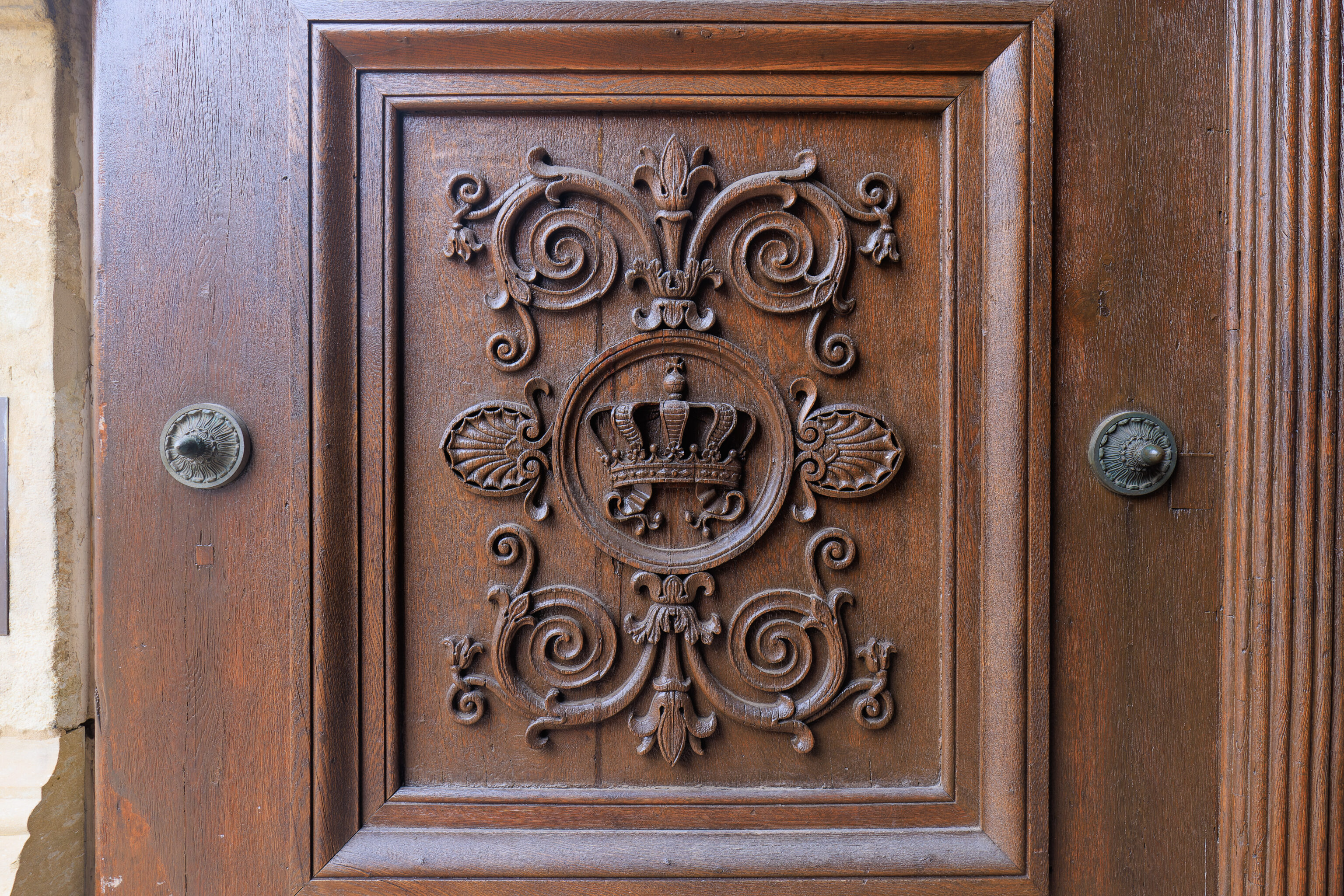
Soon, the front doors were opened and we entered.
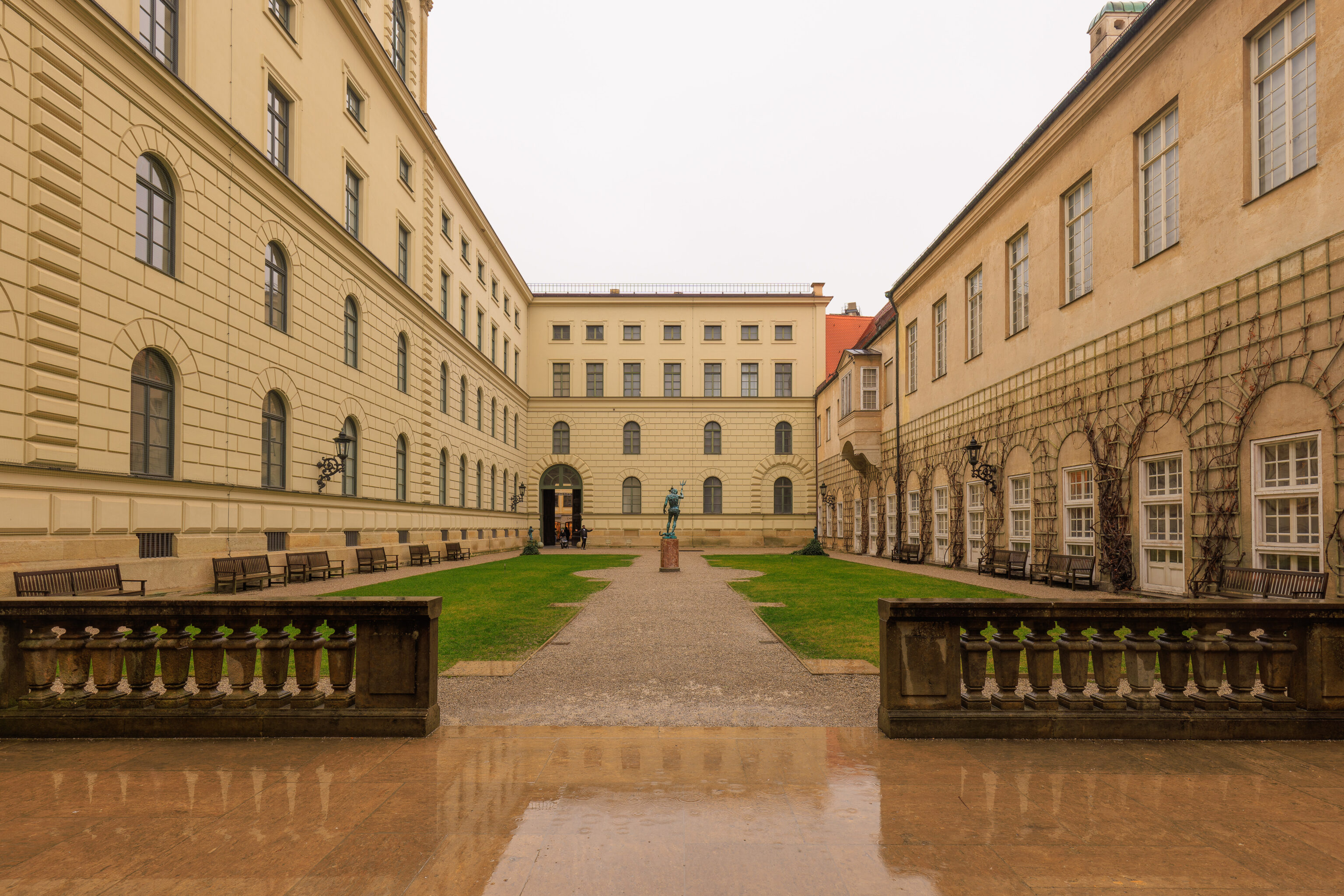
We waited for a few minutes more in this courtyard in front of the ticket office and museum entrance before it opened.
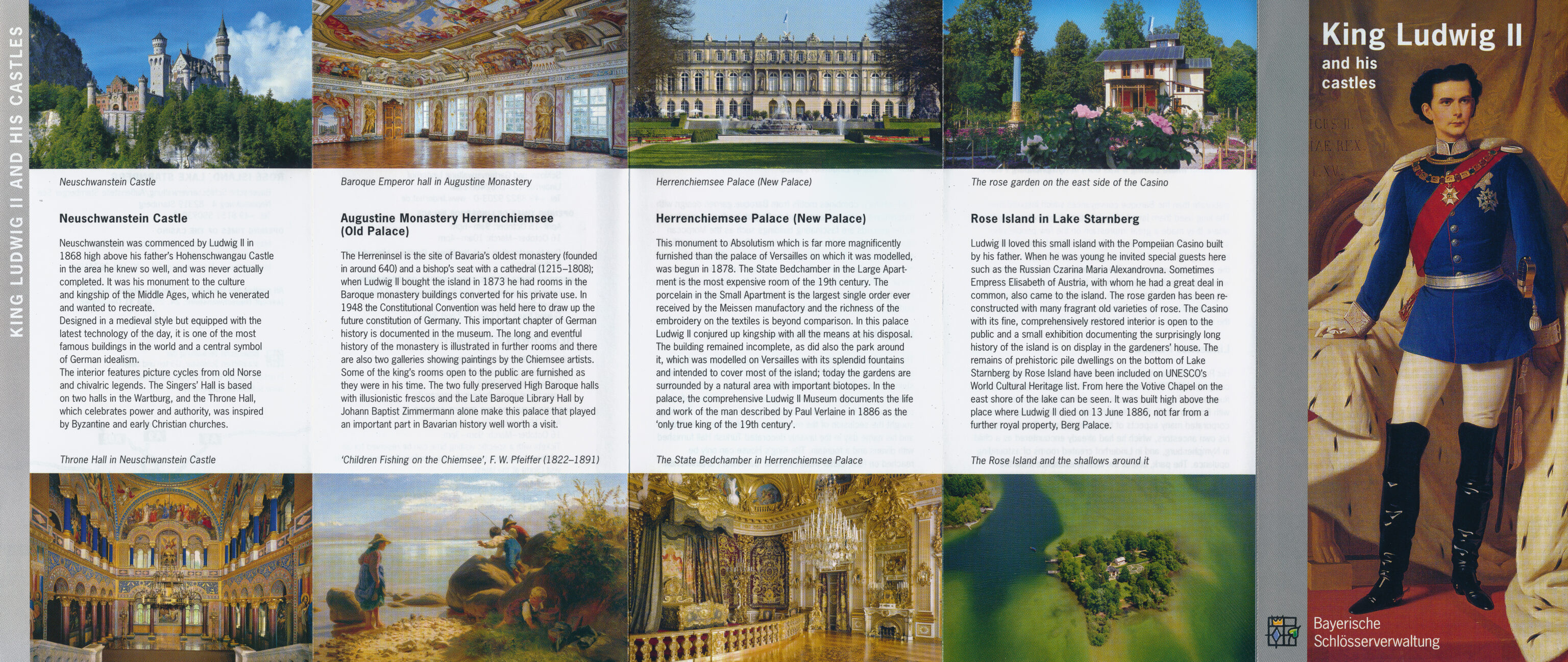
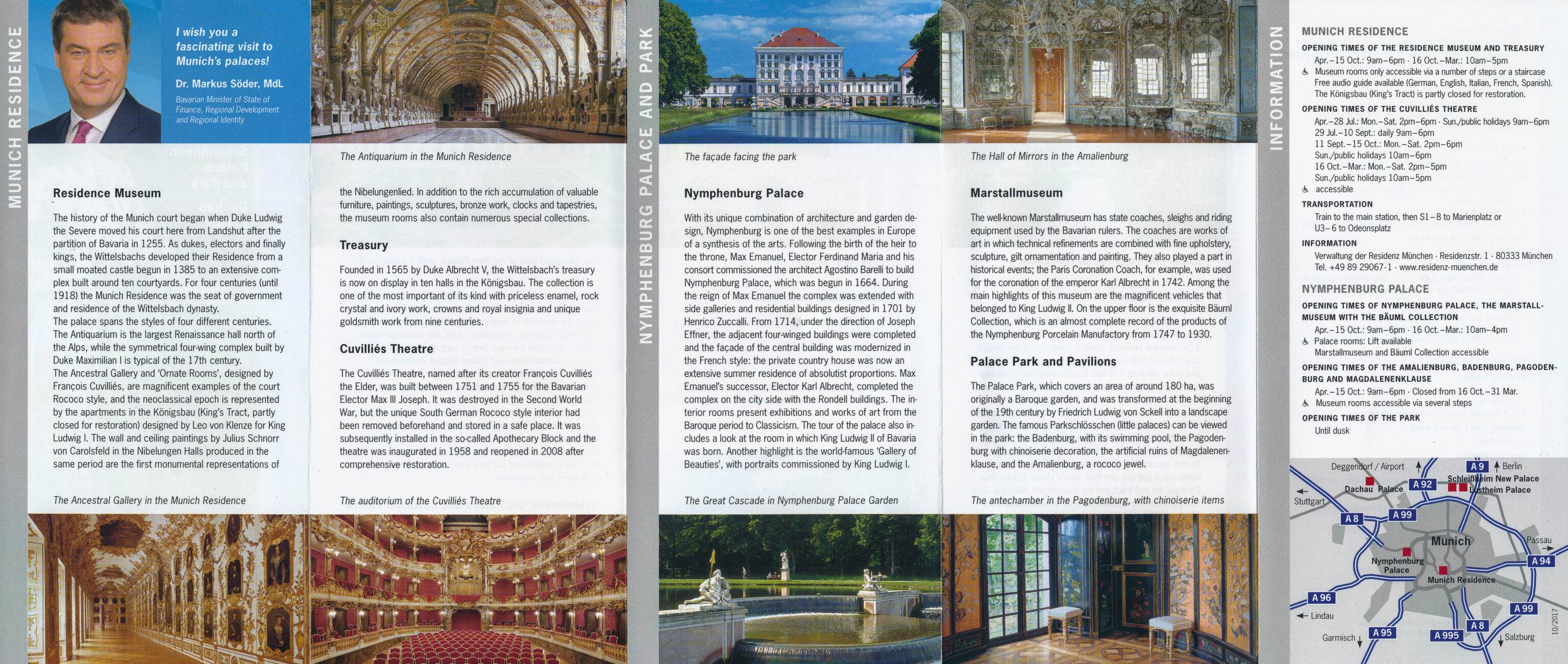
Various informational pamphlets were available. This one is about the palaces built or used by King Ludwig II, though it does not include the Residenz.
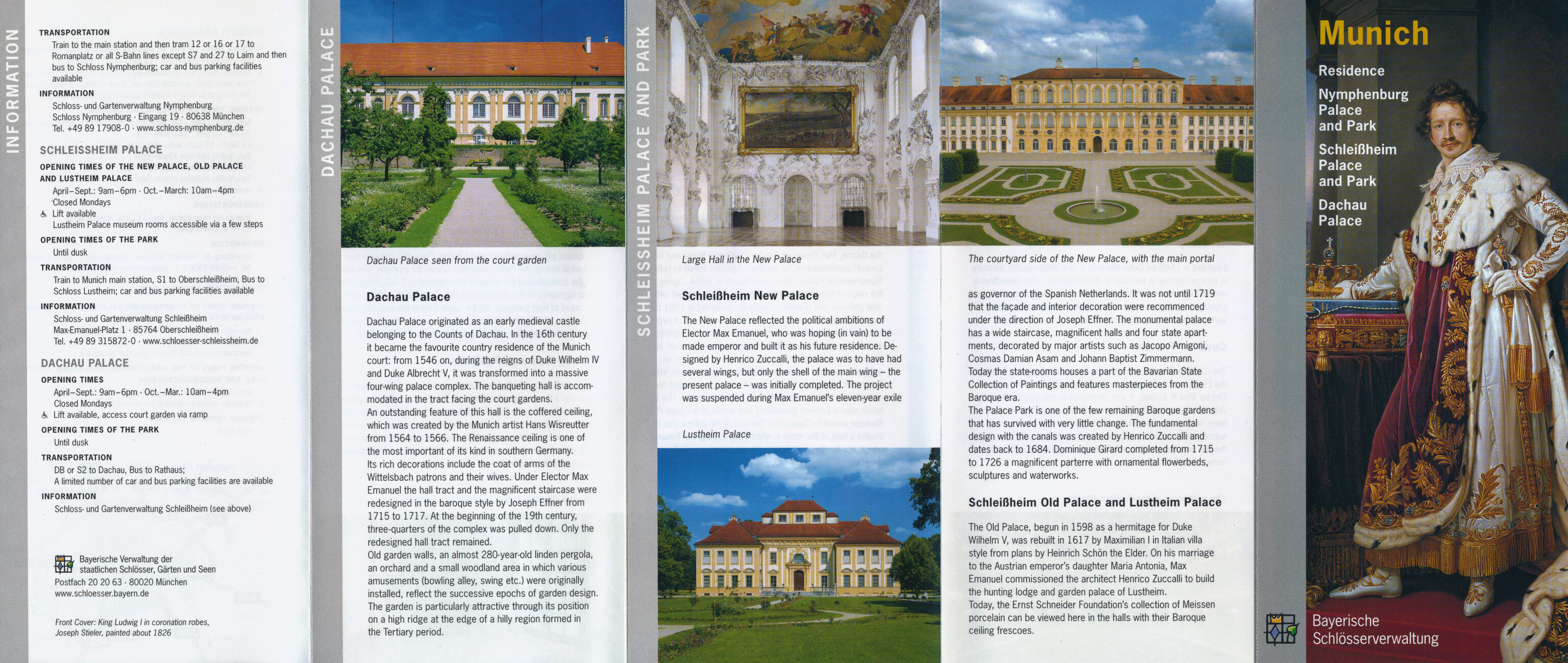
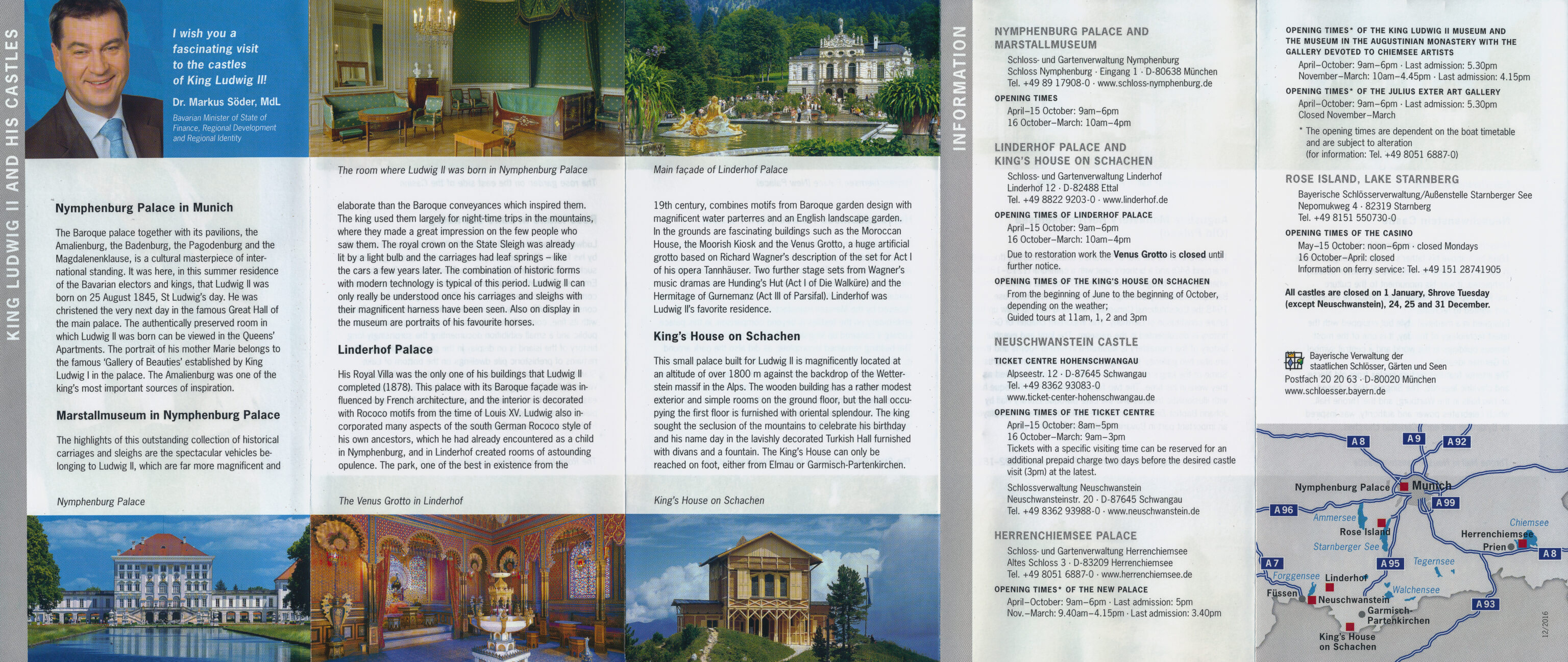
This pamphlet describes the various palaces that are in Munich.
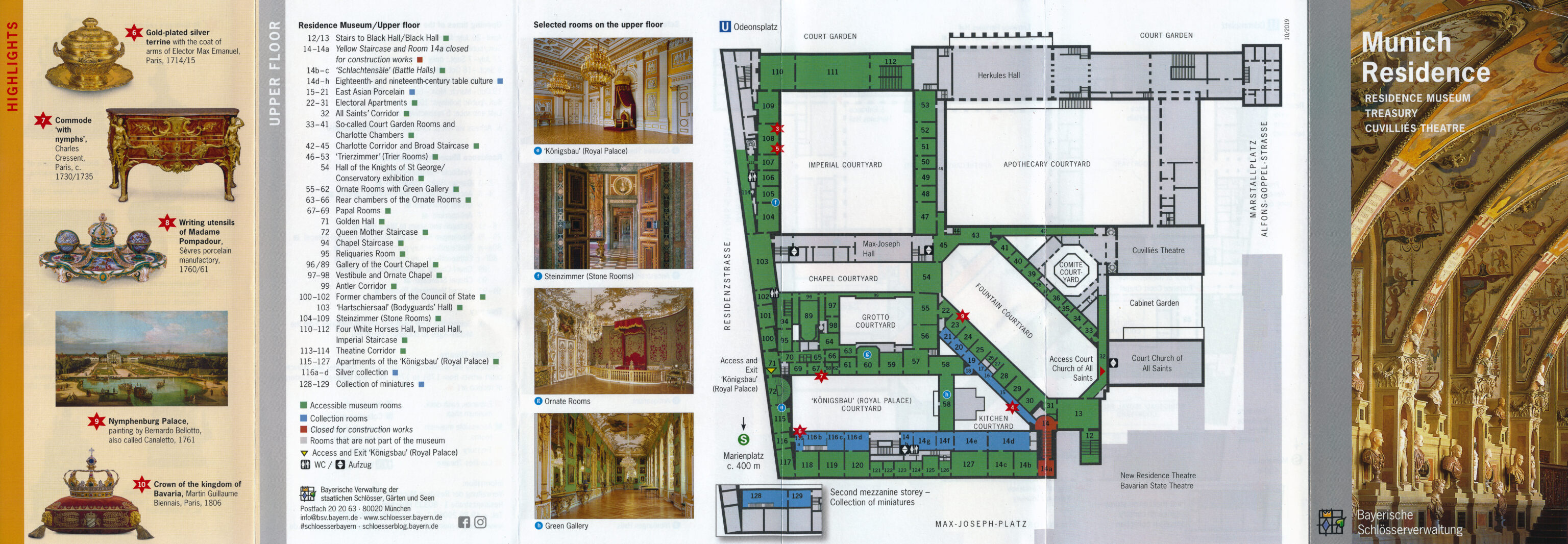
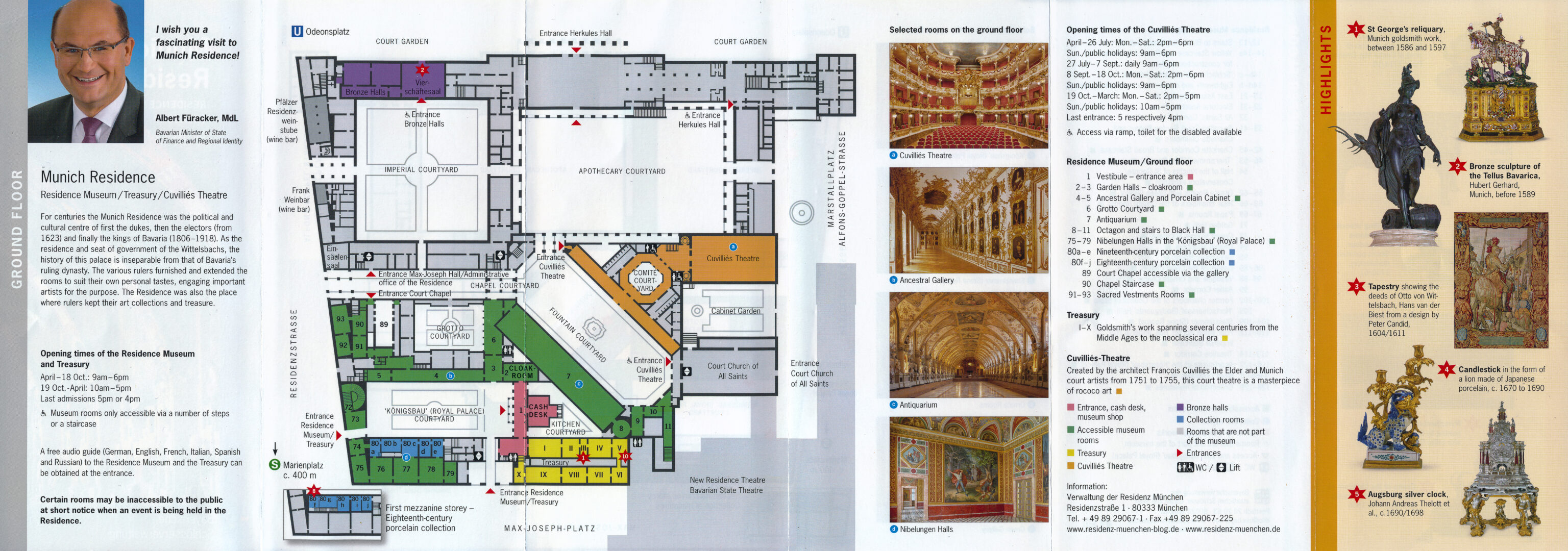
Finally, a pamphlet with a map of the Residenz as well as a bit of descriptive text.
There were various ticket options available. We picked the one that included everything – the main museum, Treasury, and Cuvilliés Theatre.
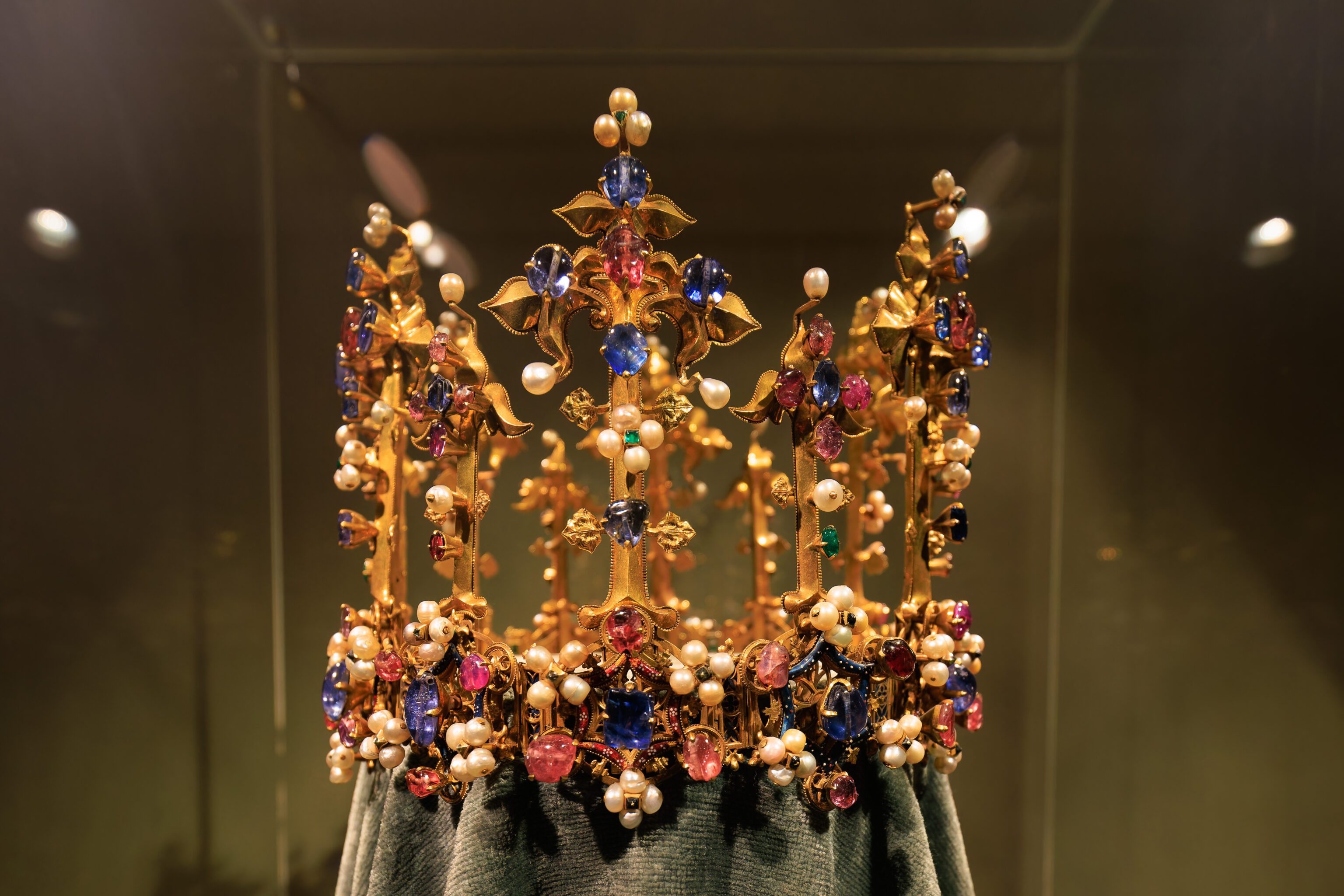
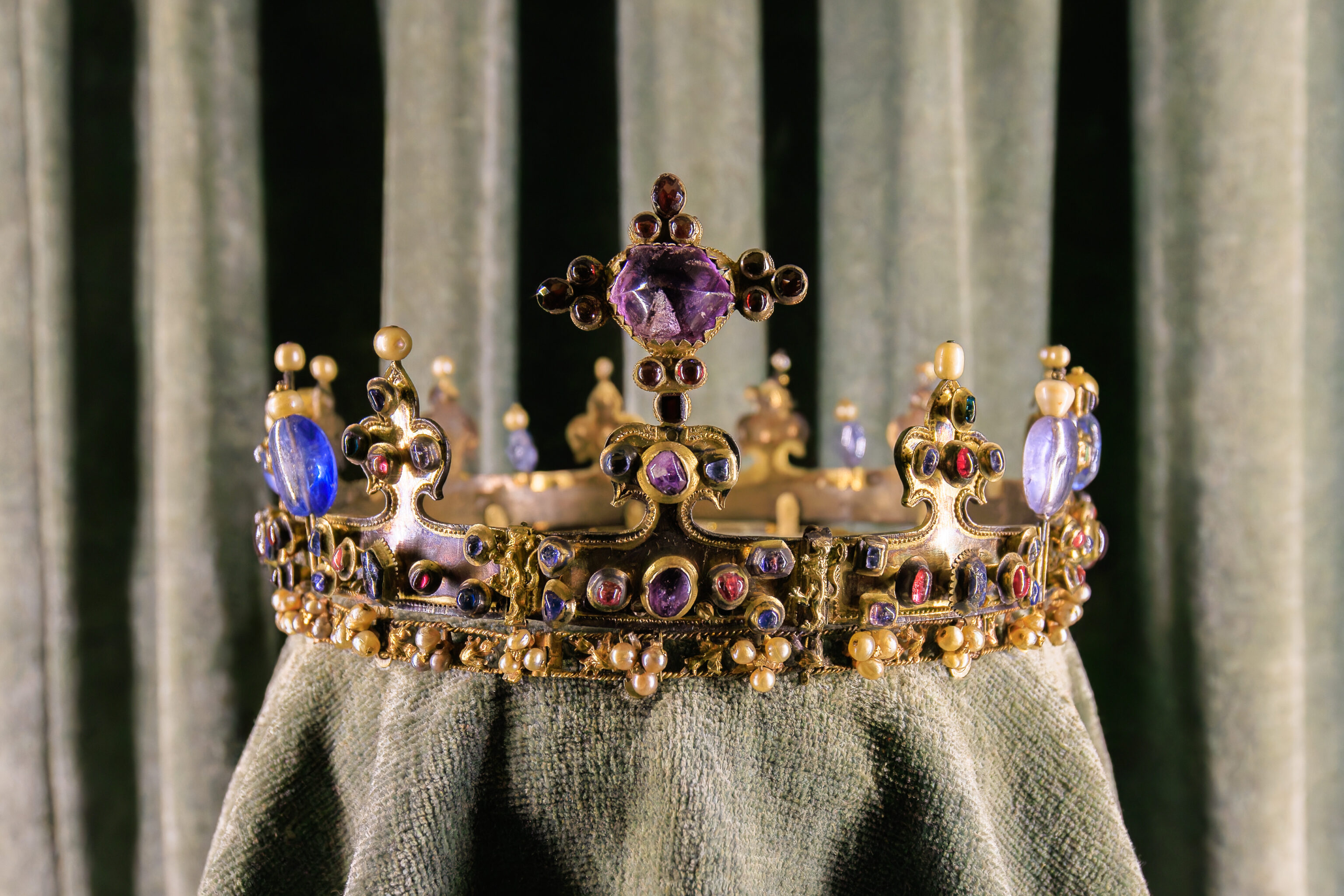
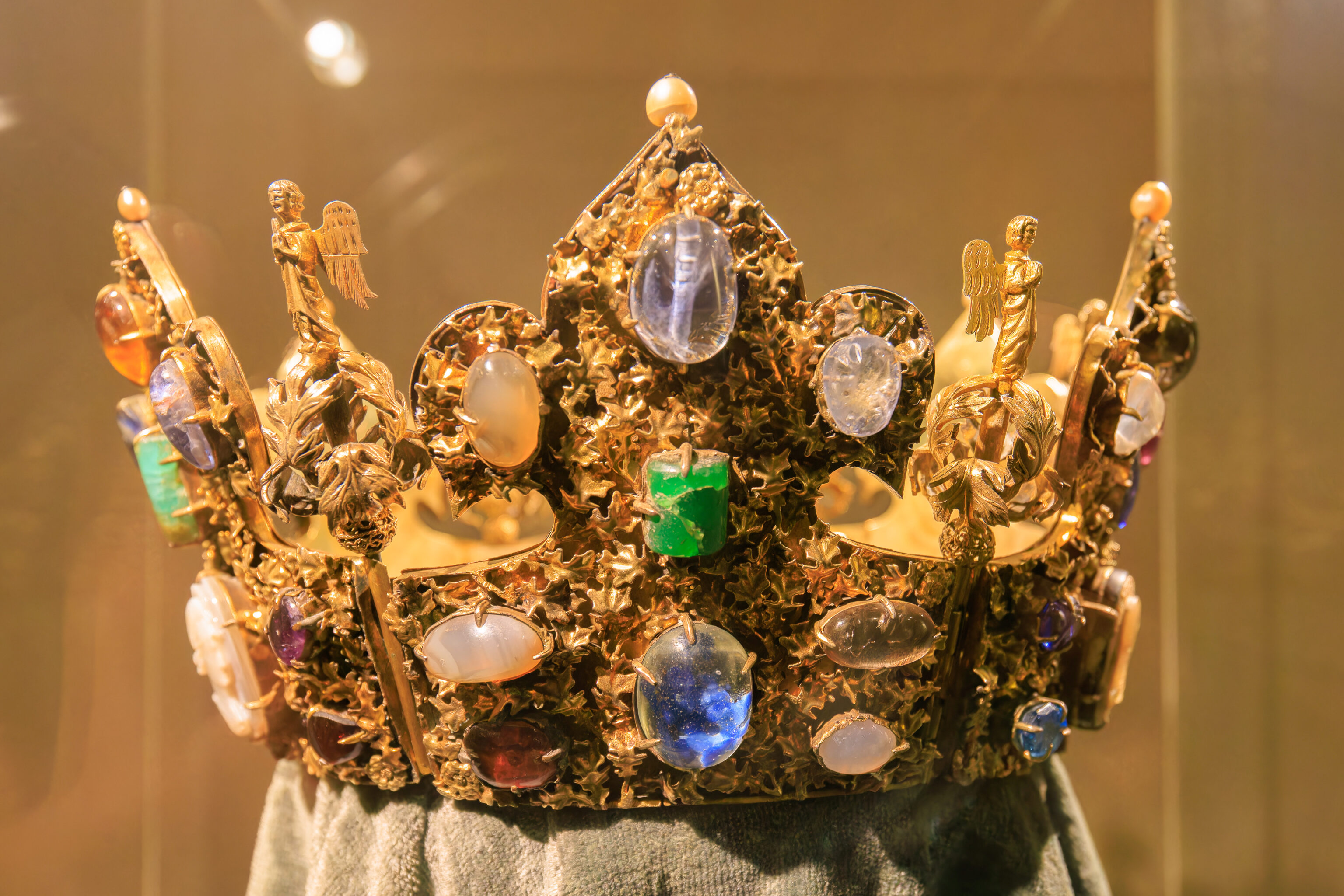
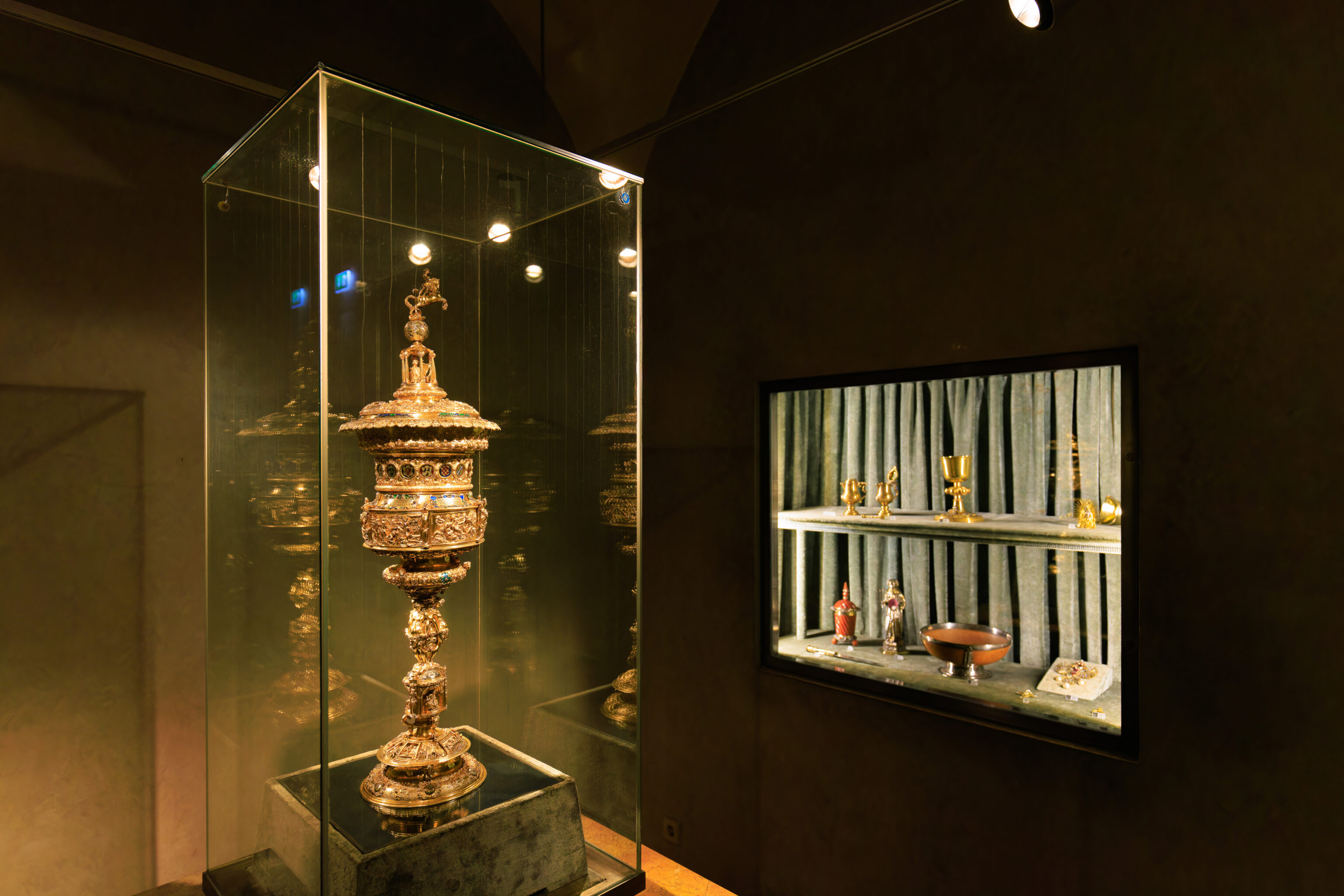
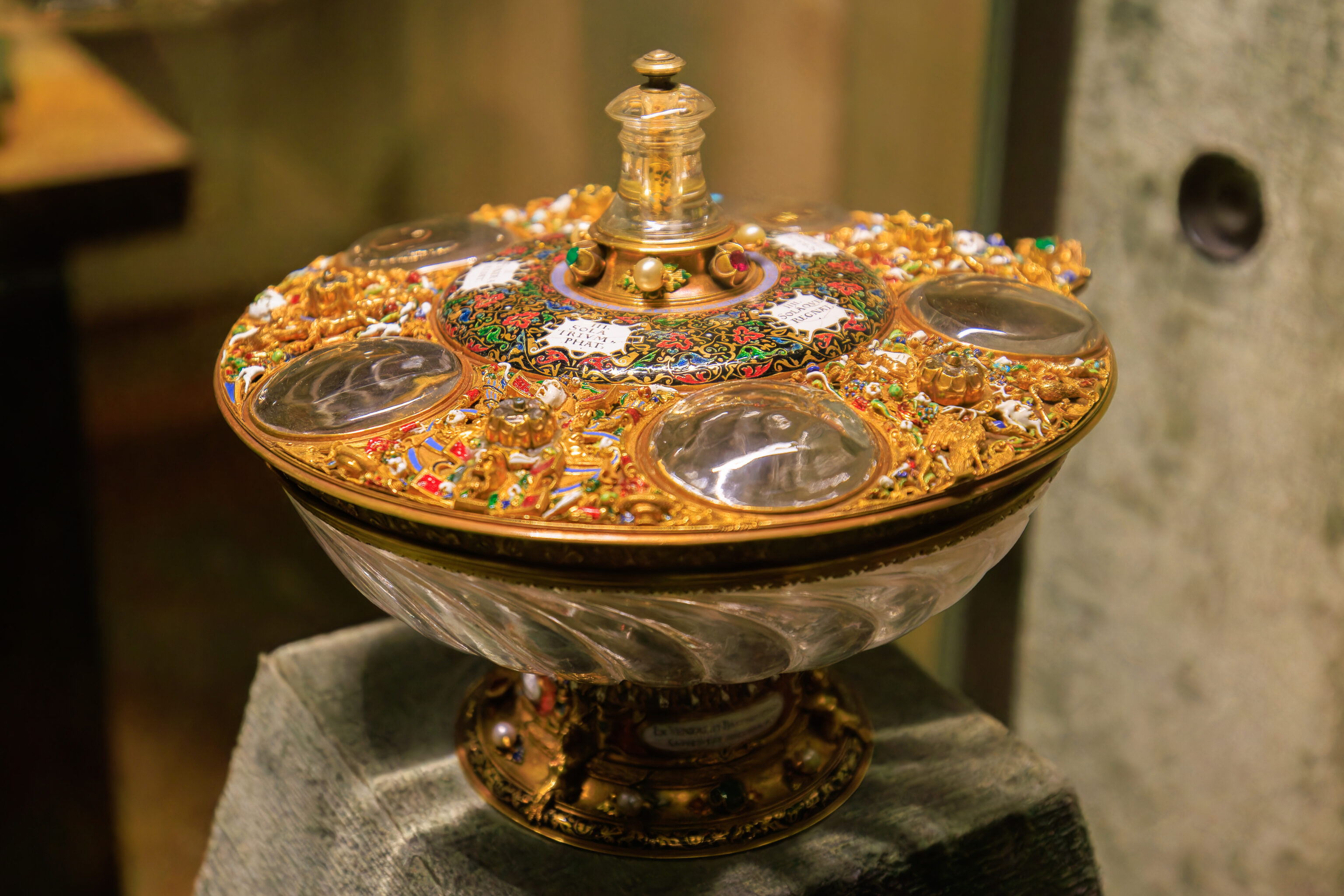
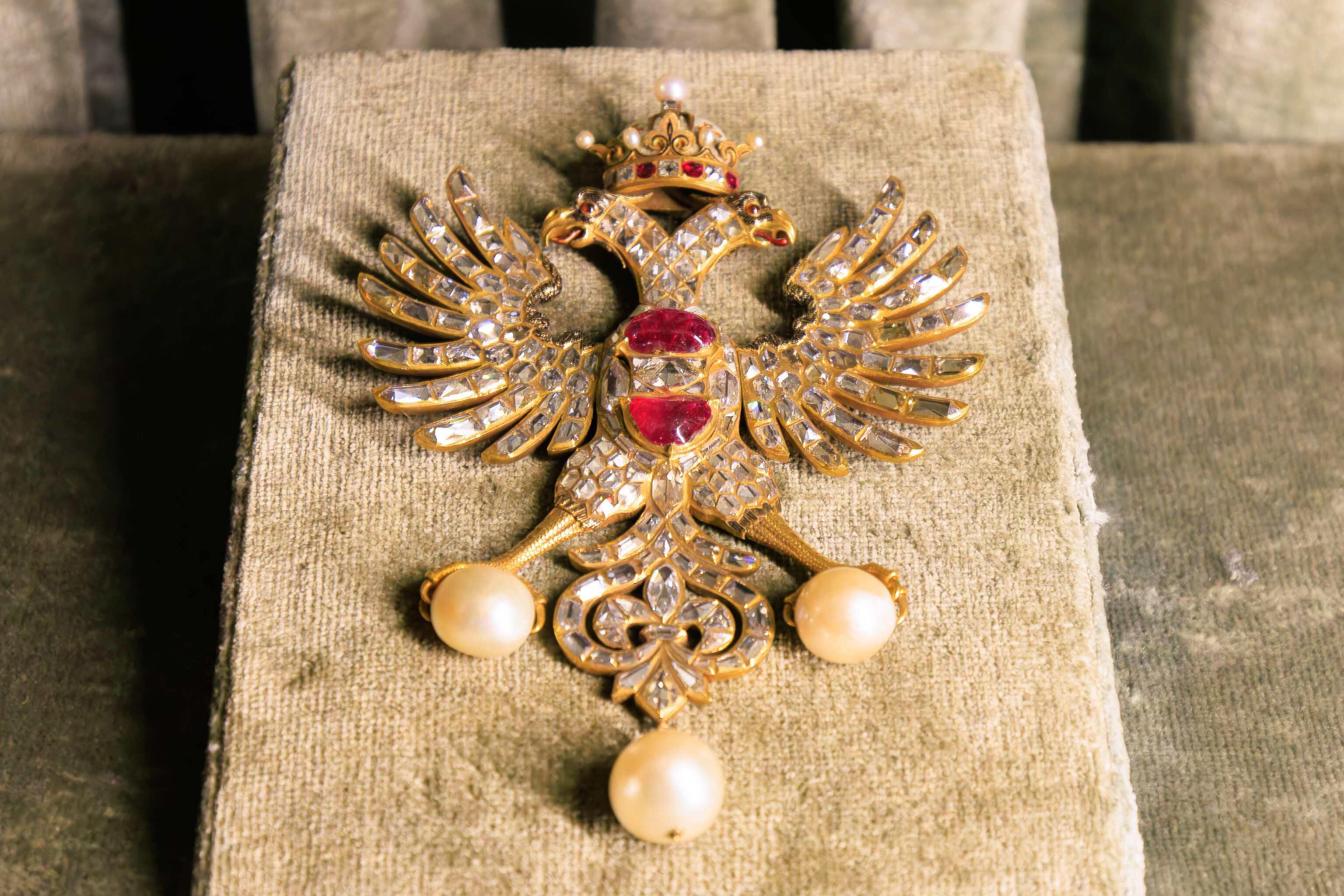
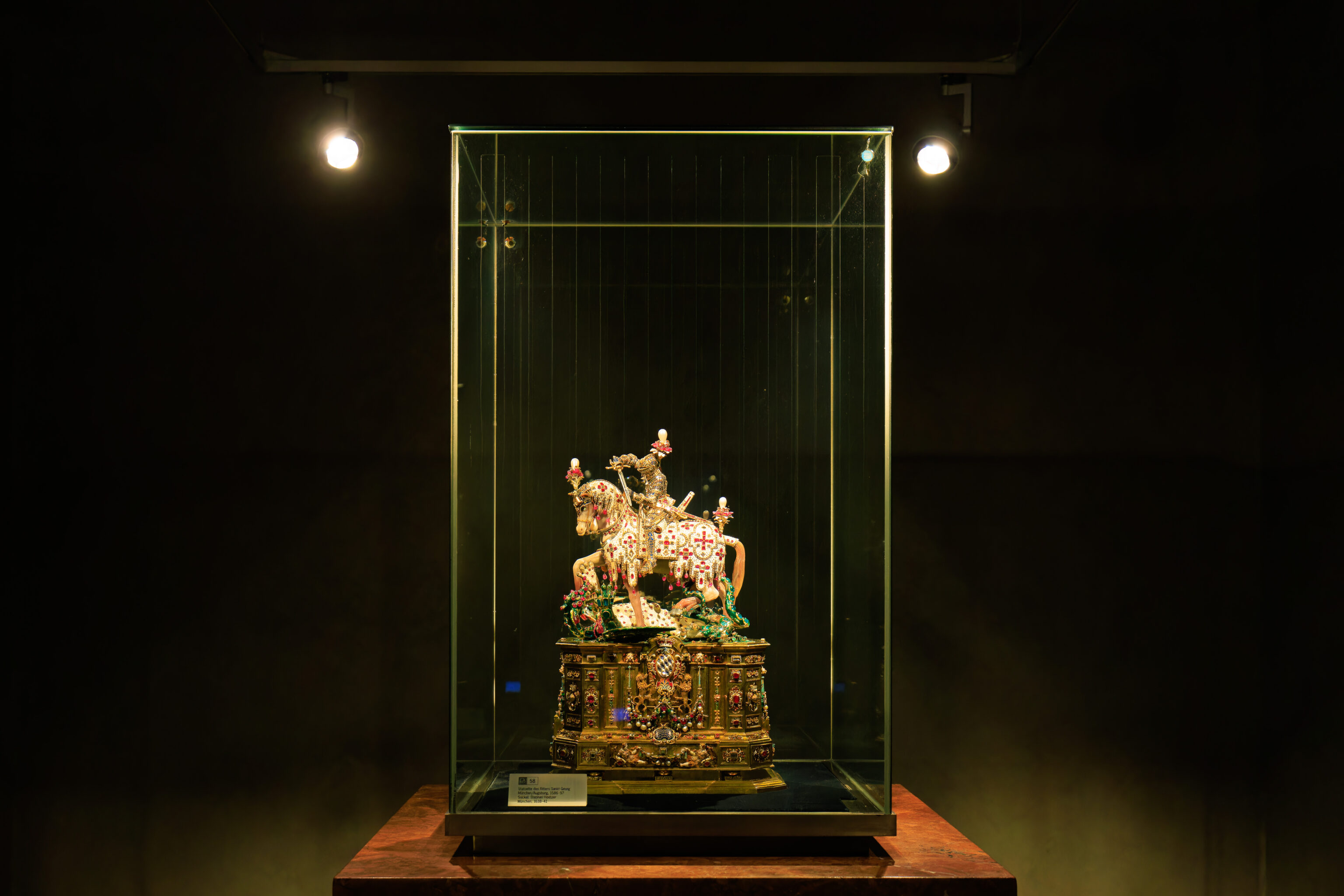
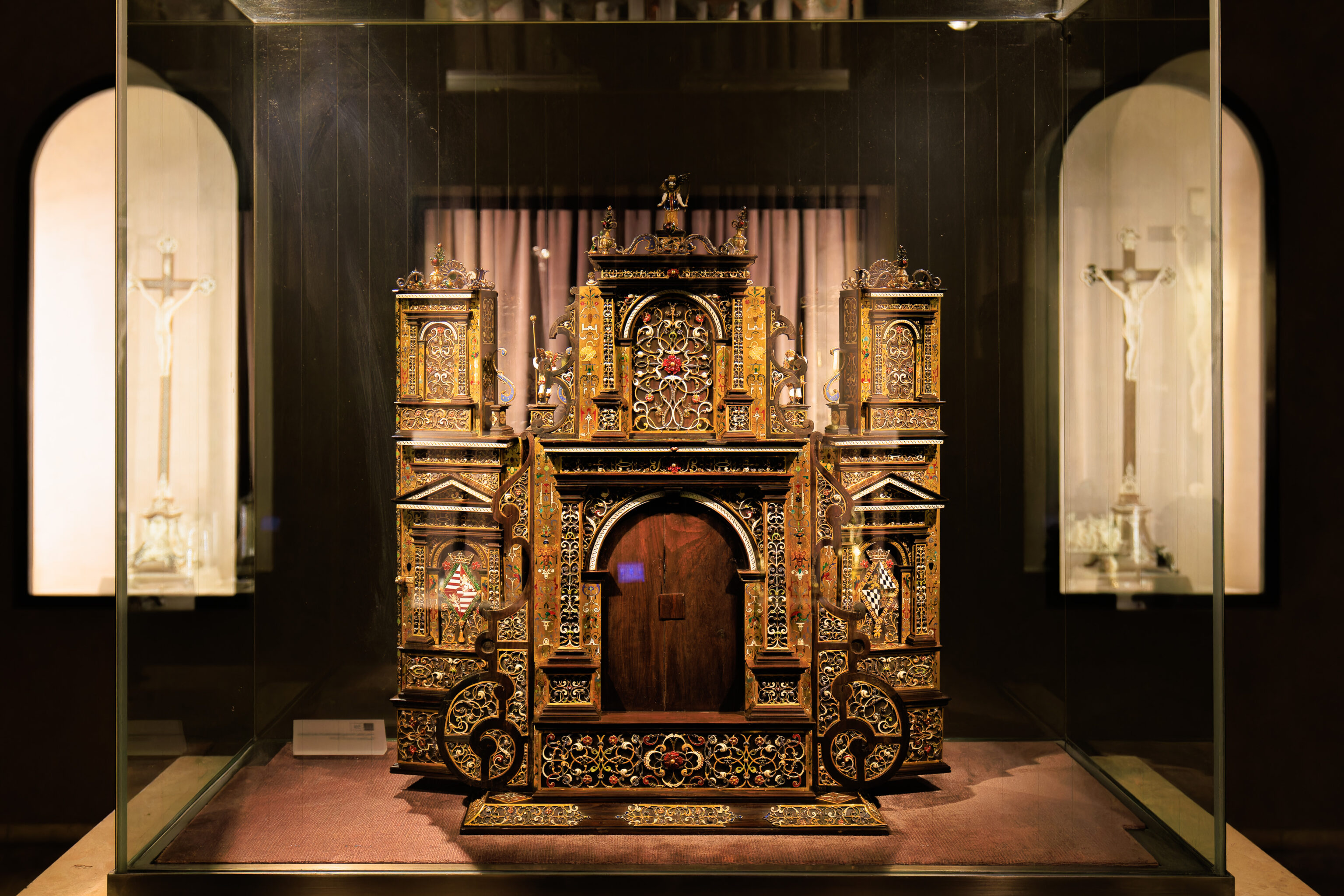
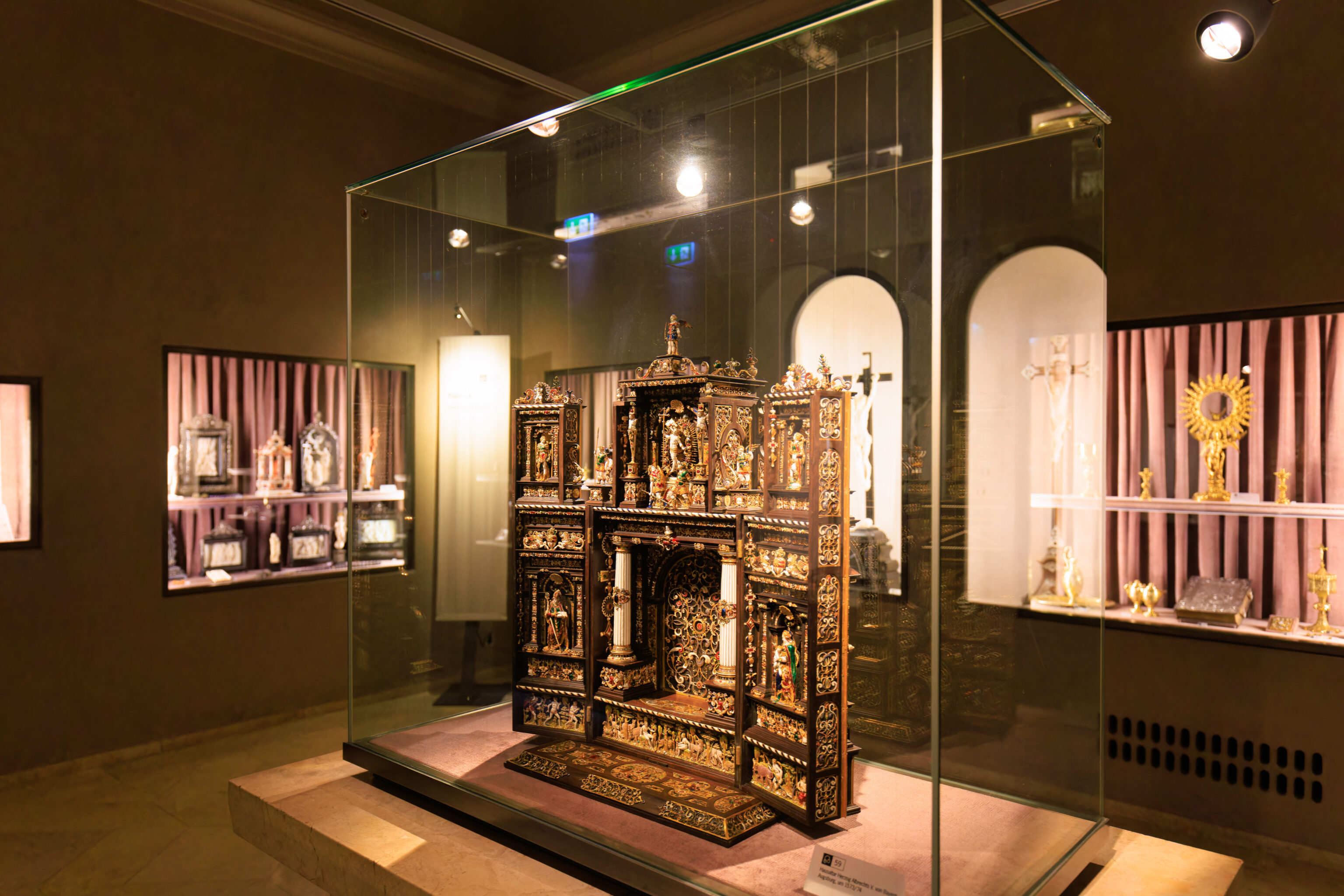
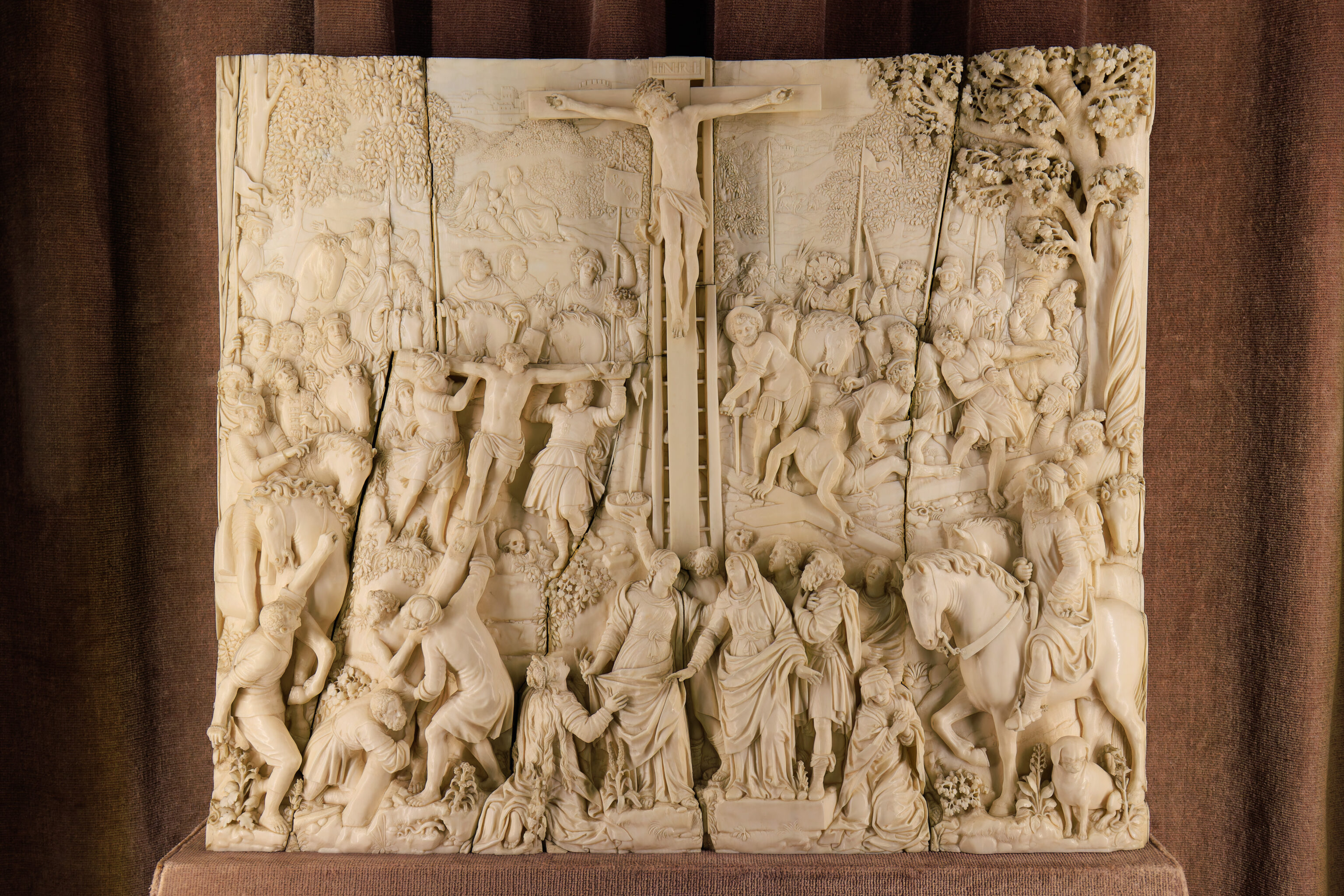
We started off in the Treasury, which holds a collection of royal artifacts. The provided audio guide has details on many of the items, though there was way too much to listen to. A top 10 option, or perhaps a 30 minute audio tour, would have been nice.
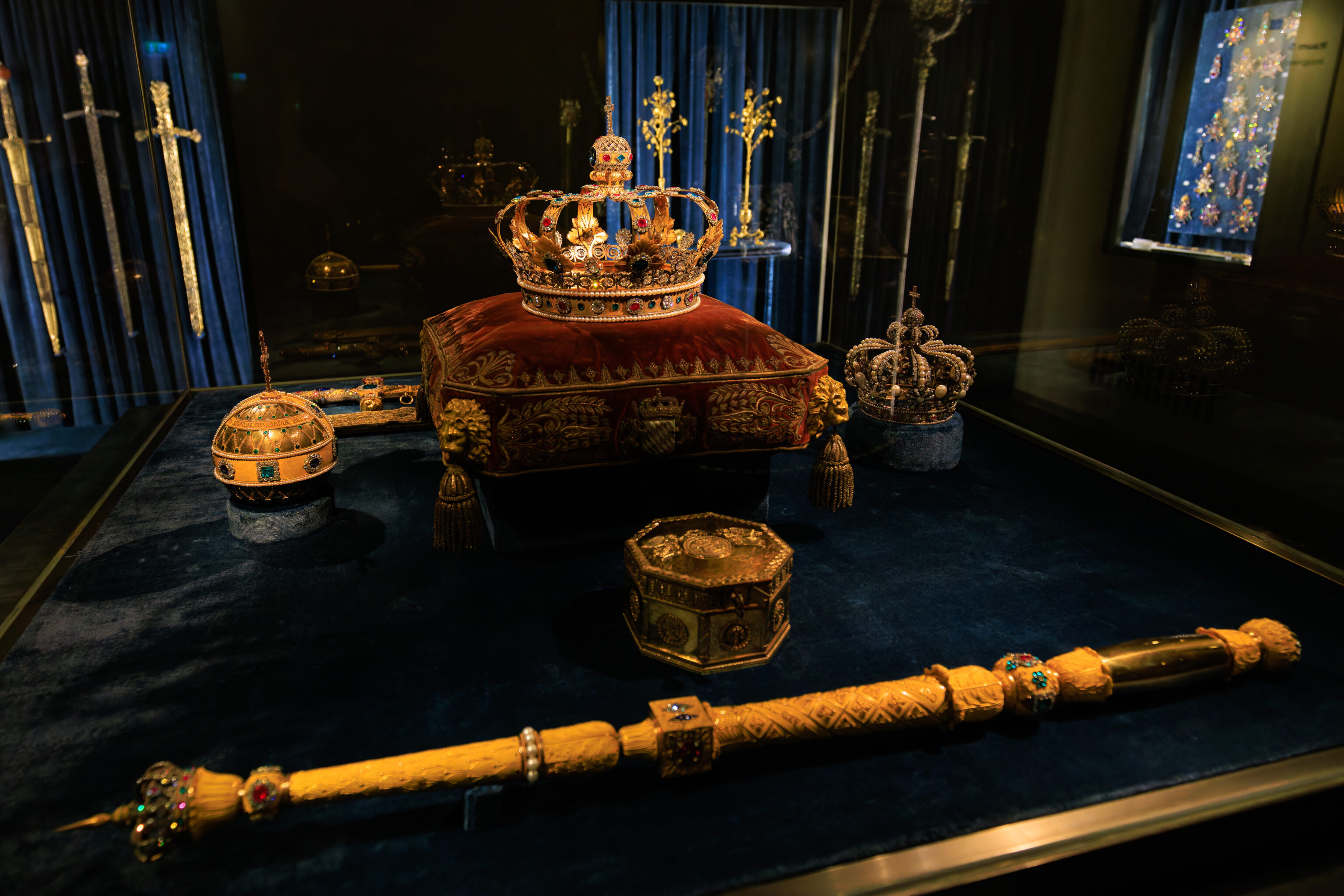
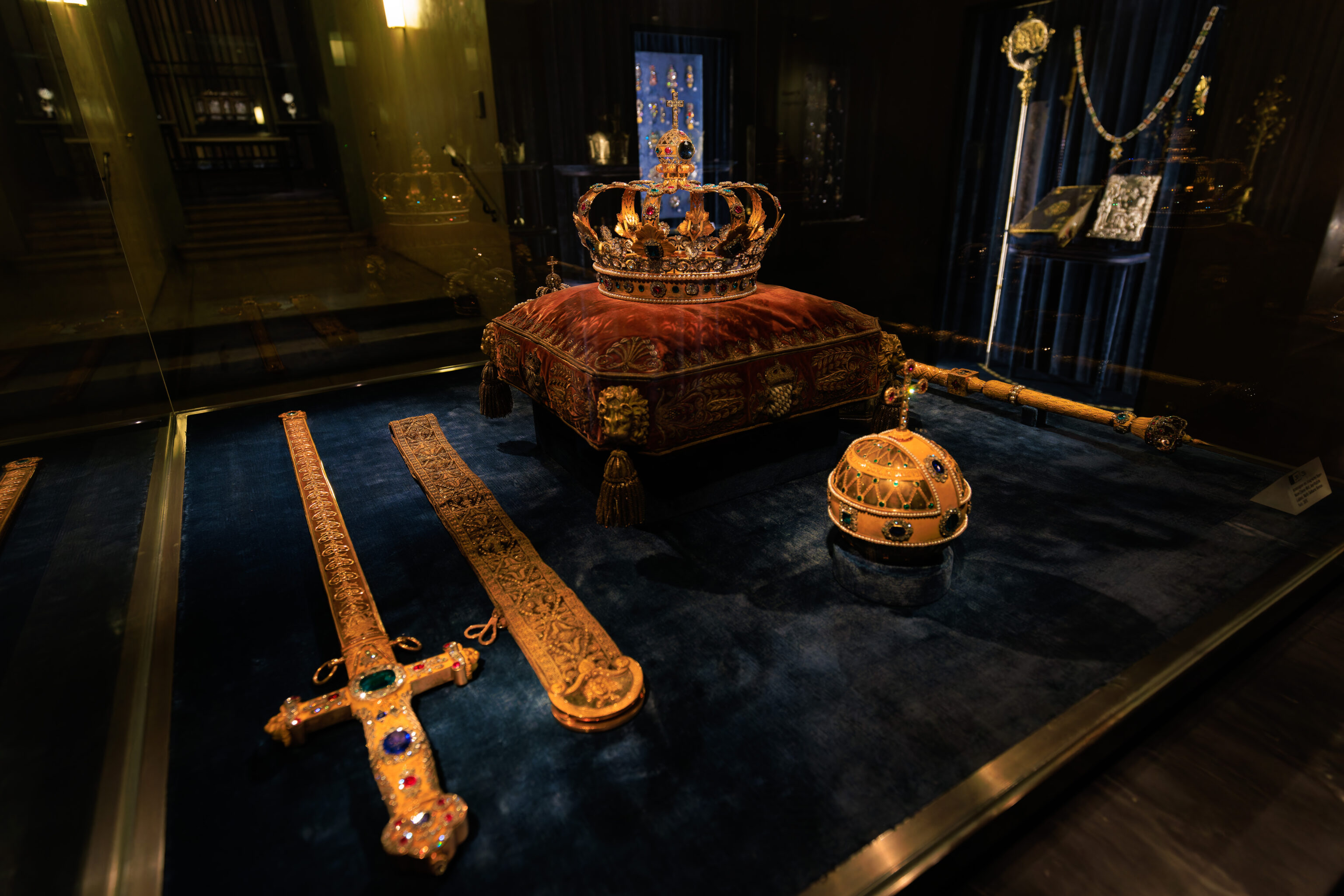
The most important items here are probably in this display. It contains the Crown of Bavaria. The crown wasn’t worn but used as a symbol of the King. Also in the display are the Queen’s crown, state sword, royal orb, and royal scepter1.
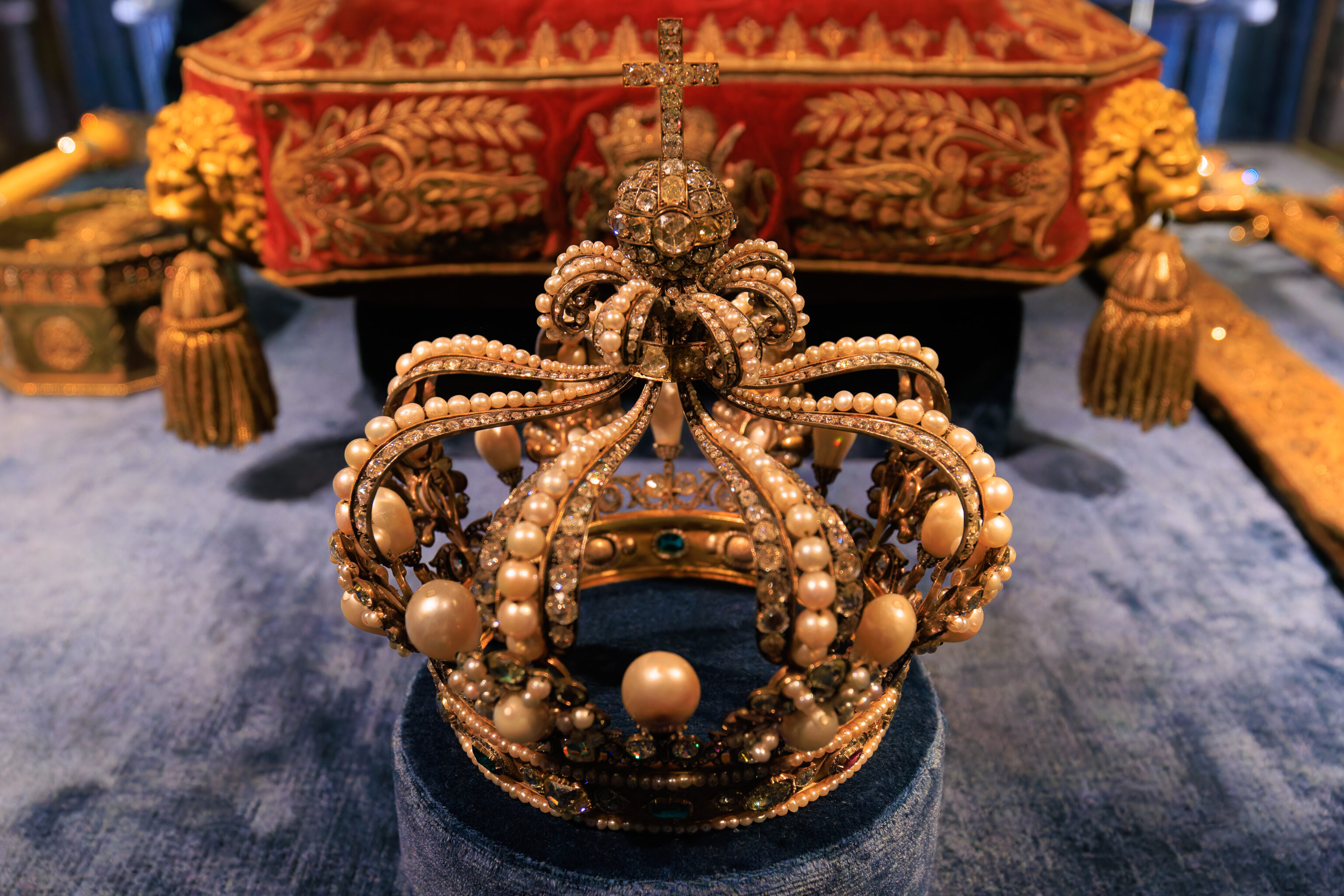
A closer look at the Queen’s crown.
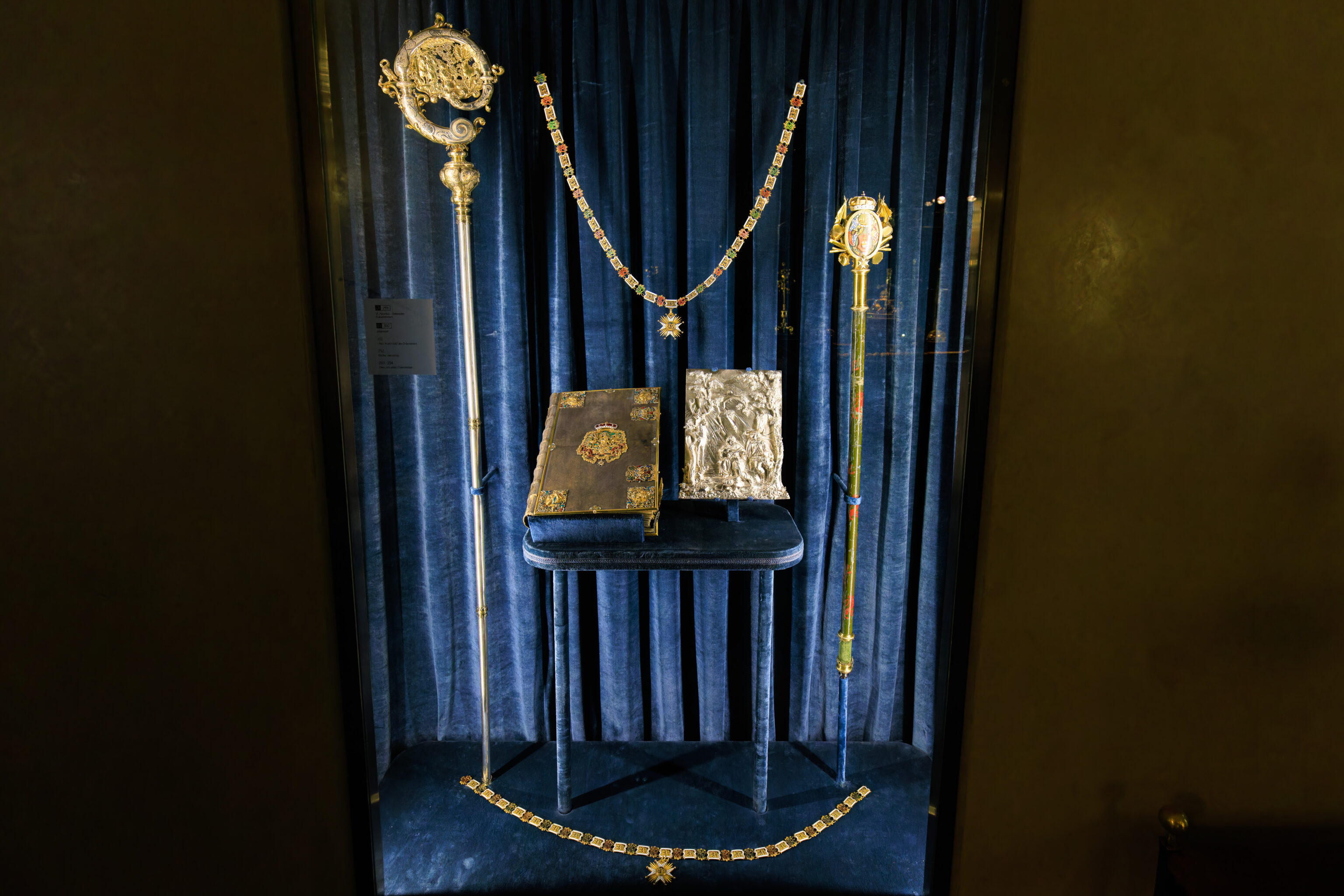
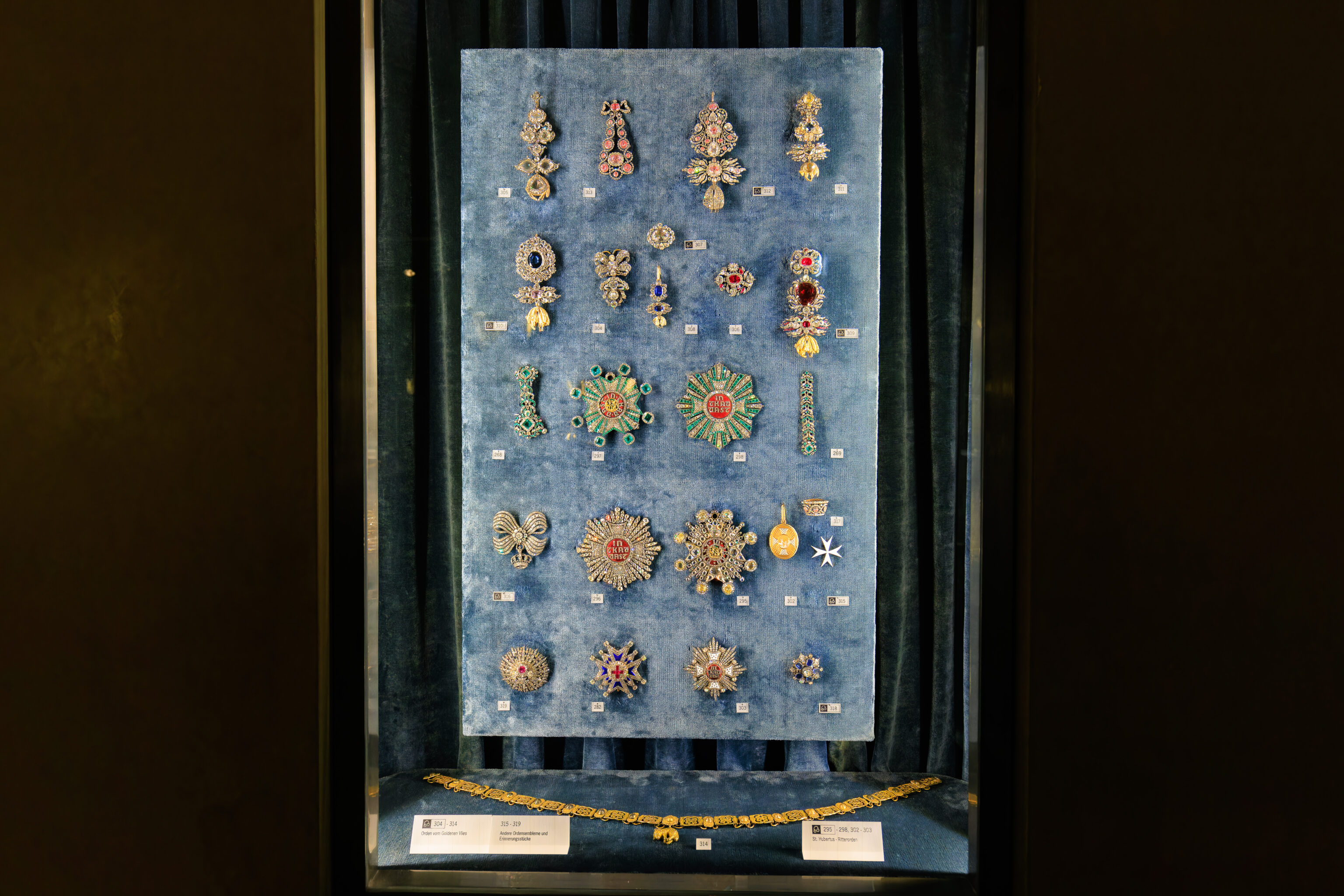
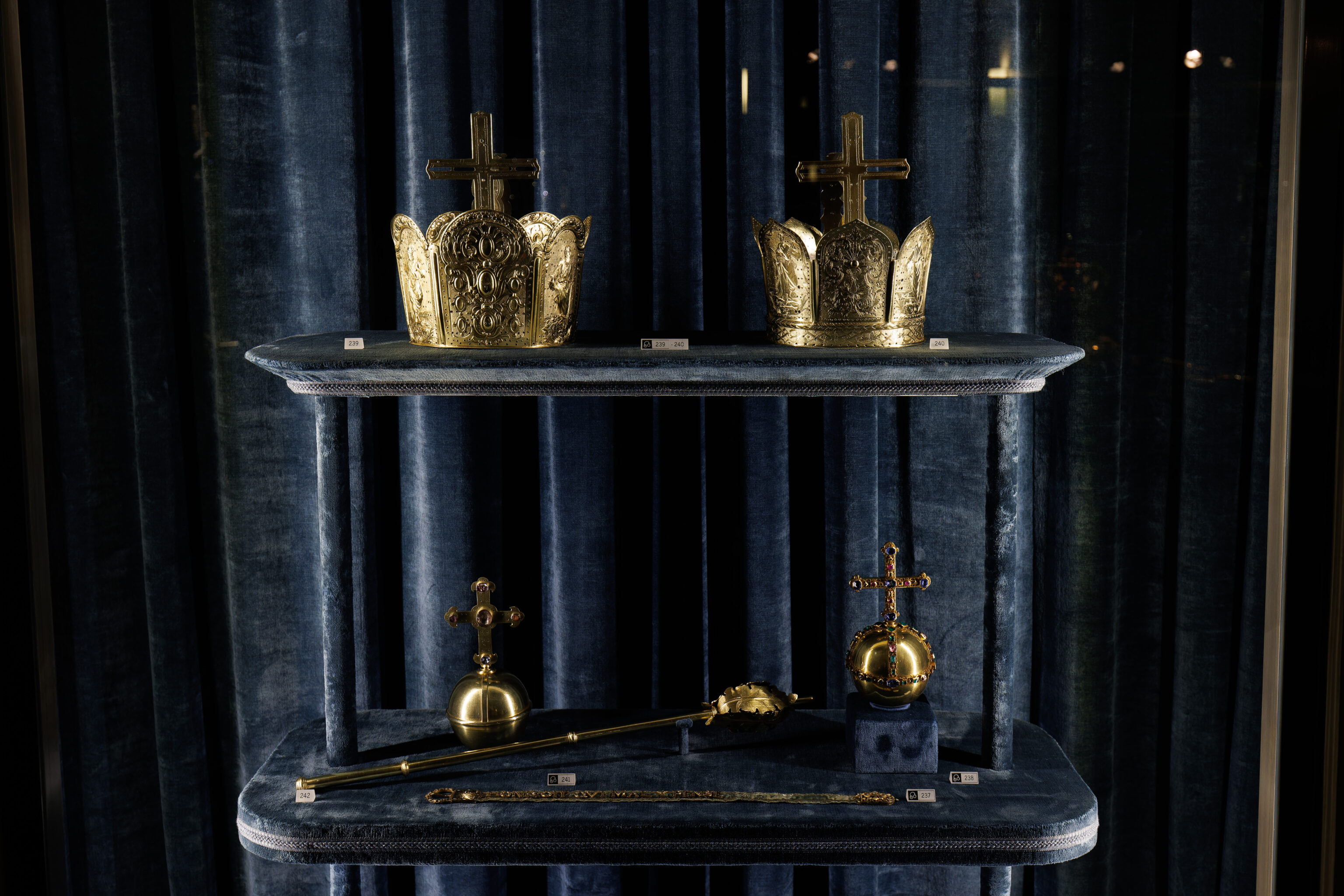
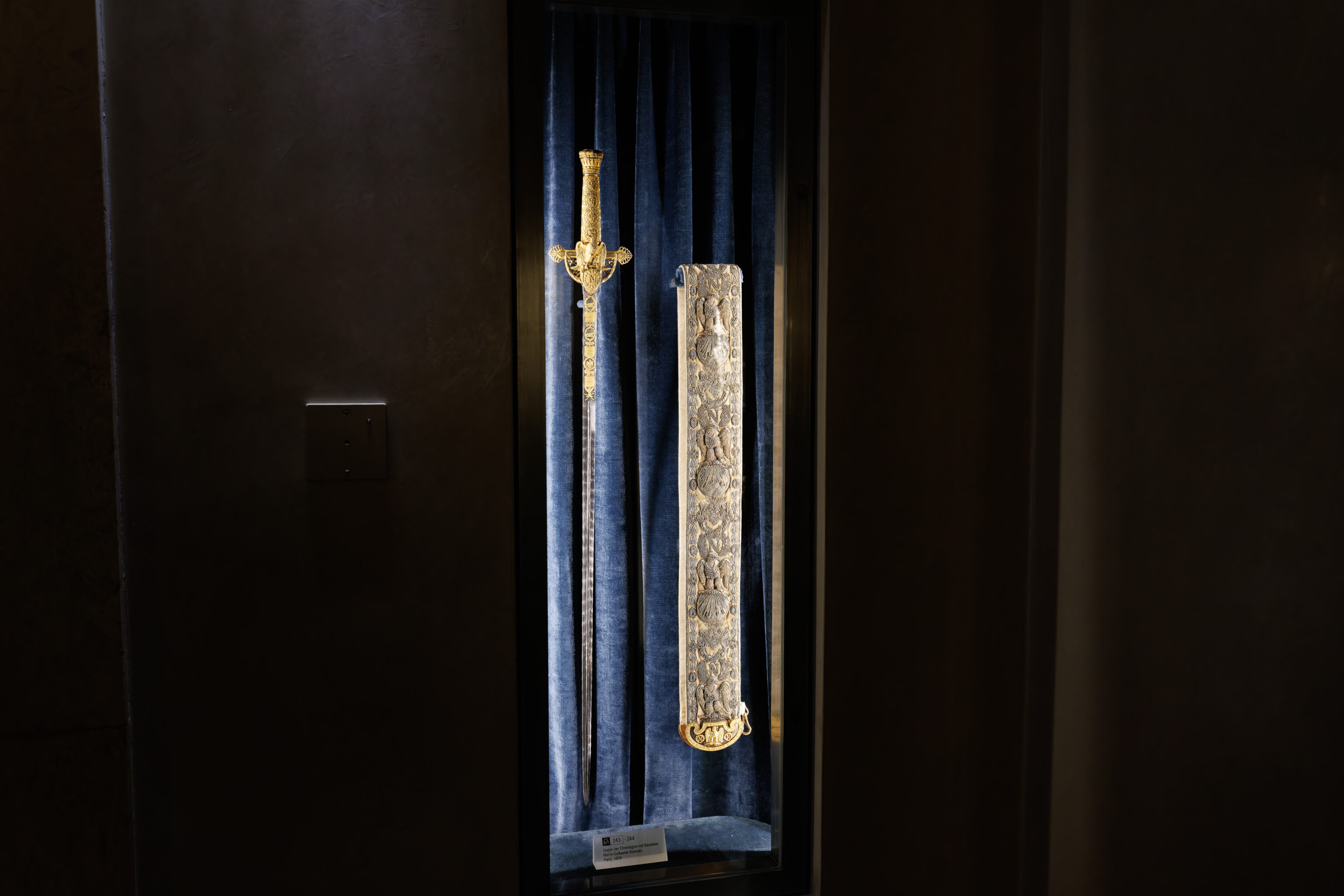
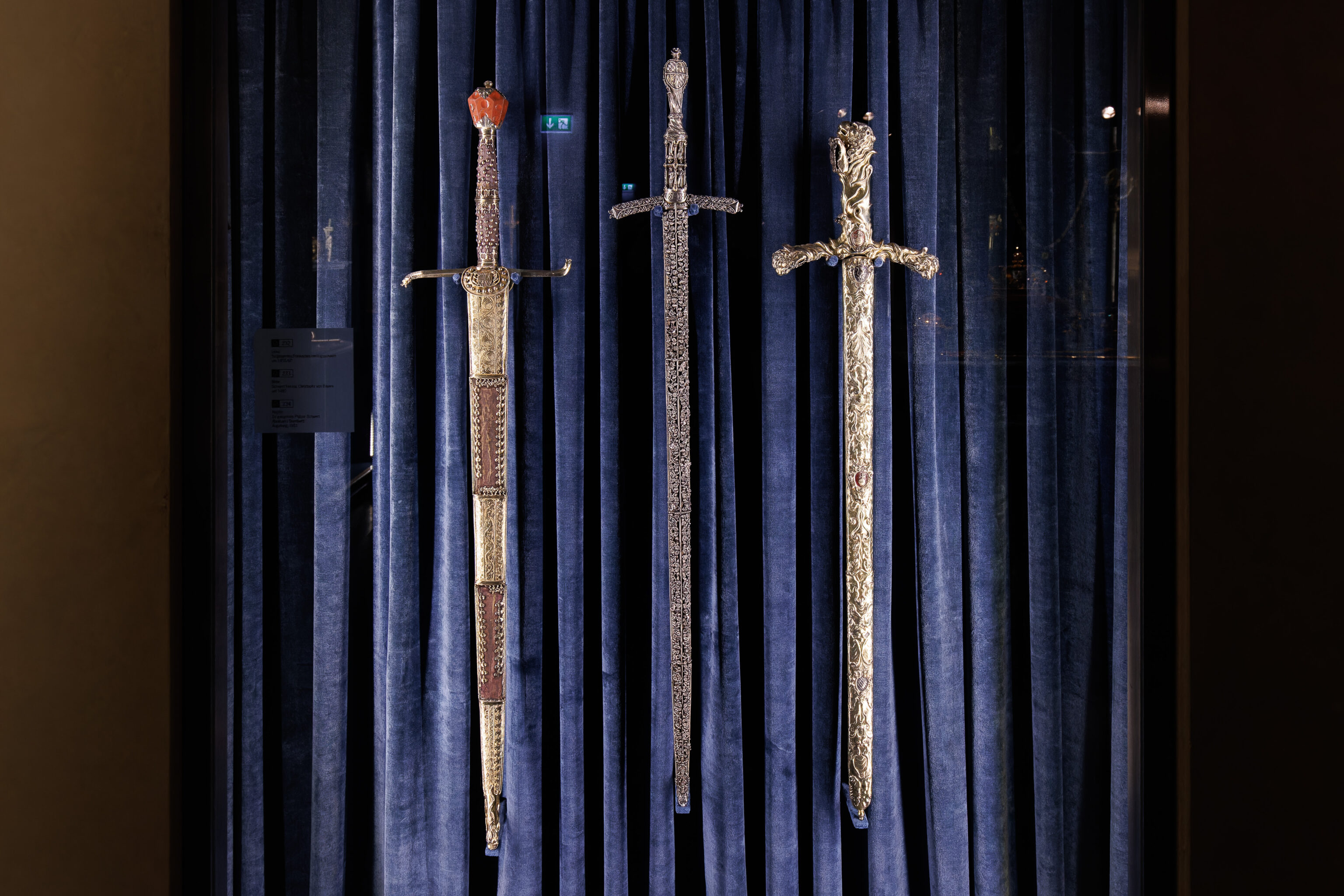
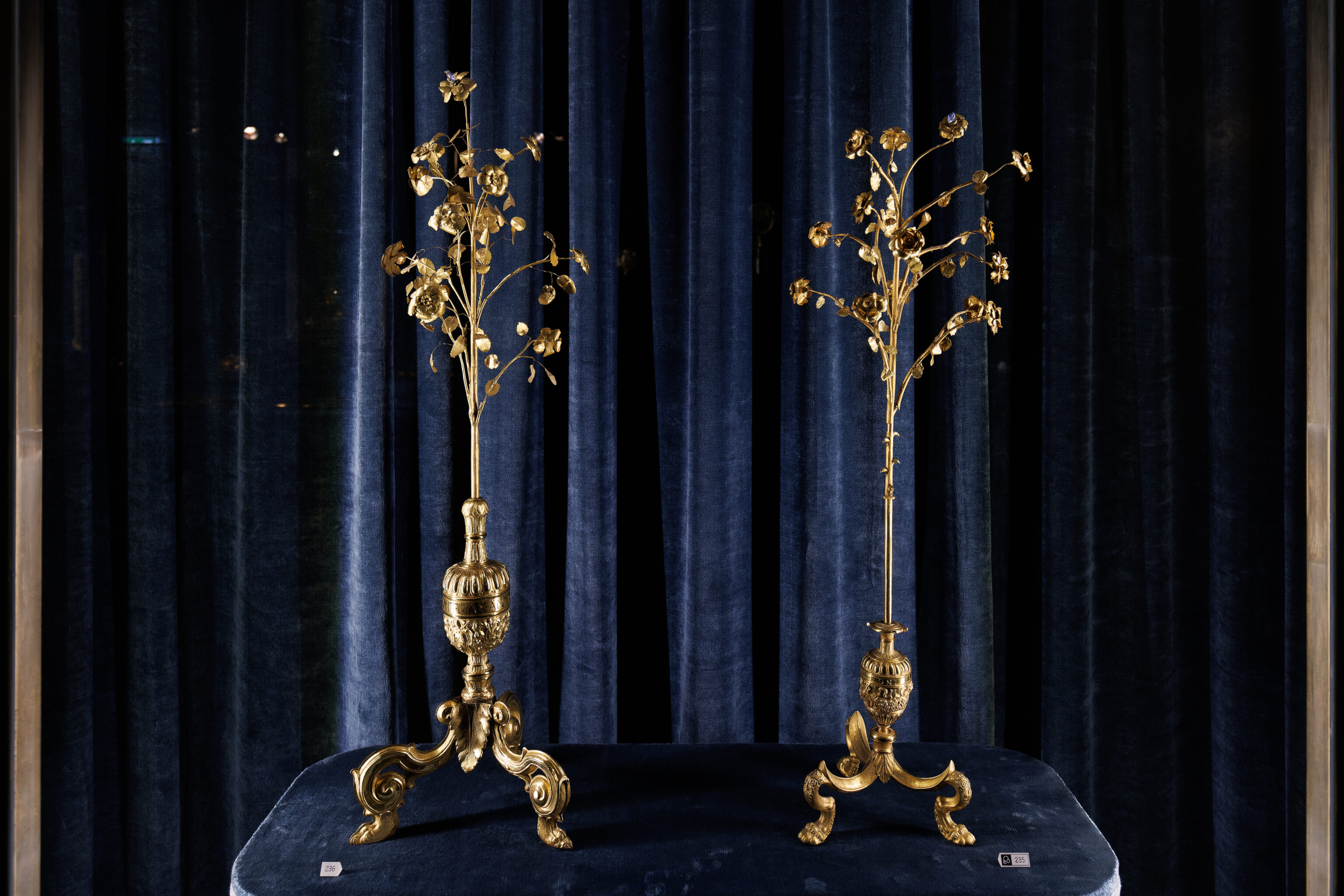
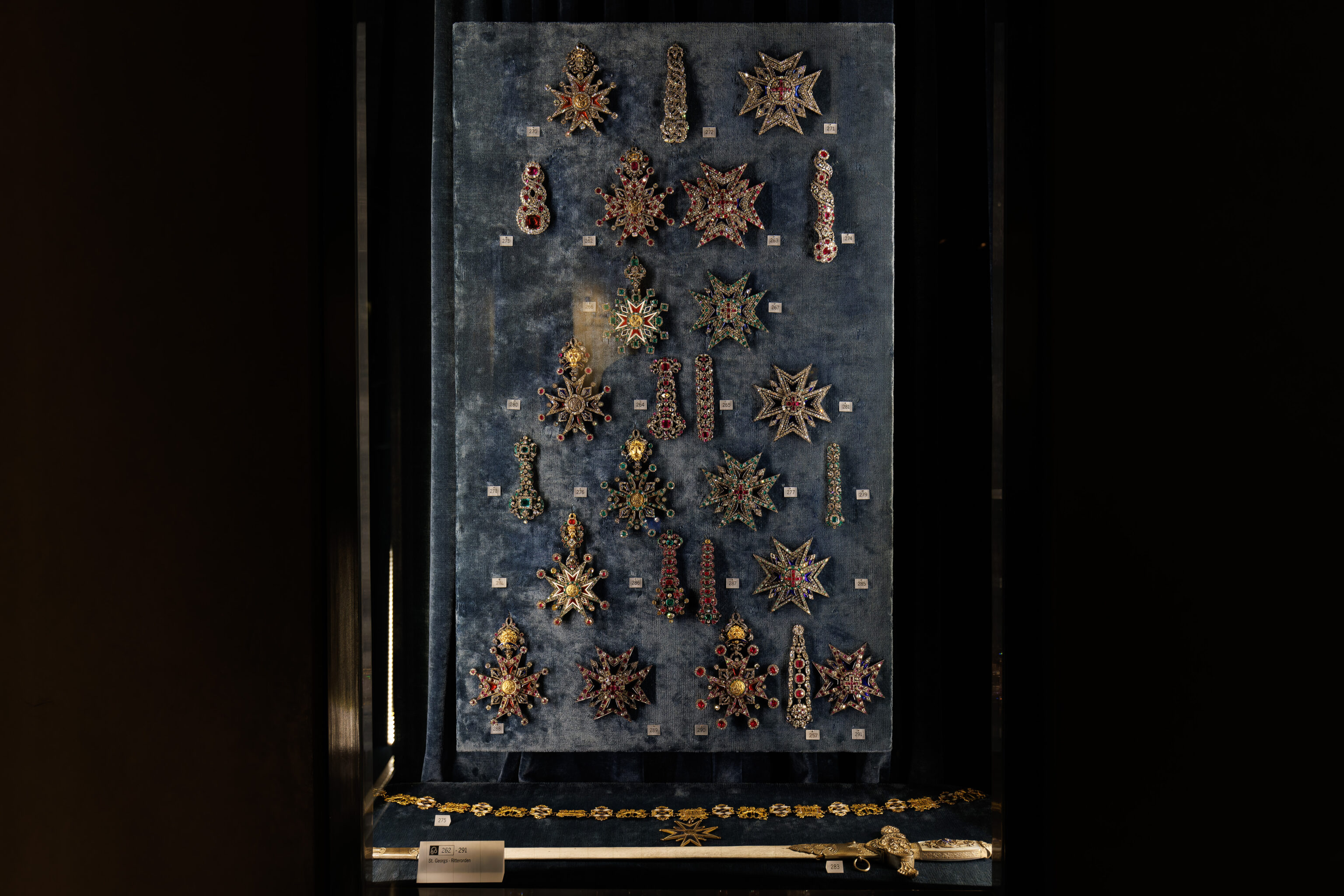
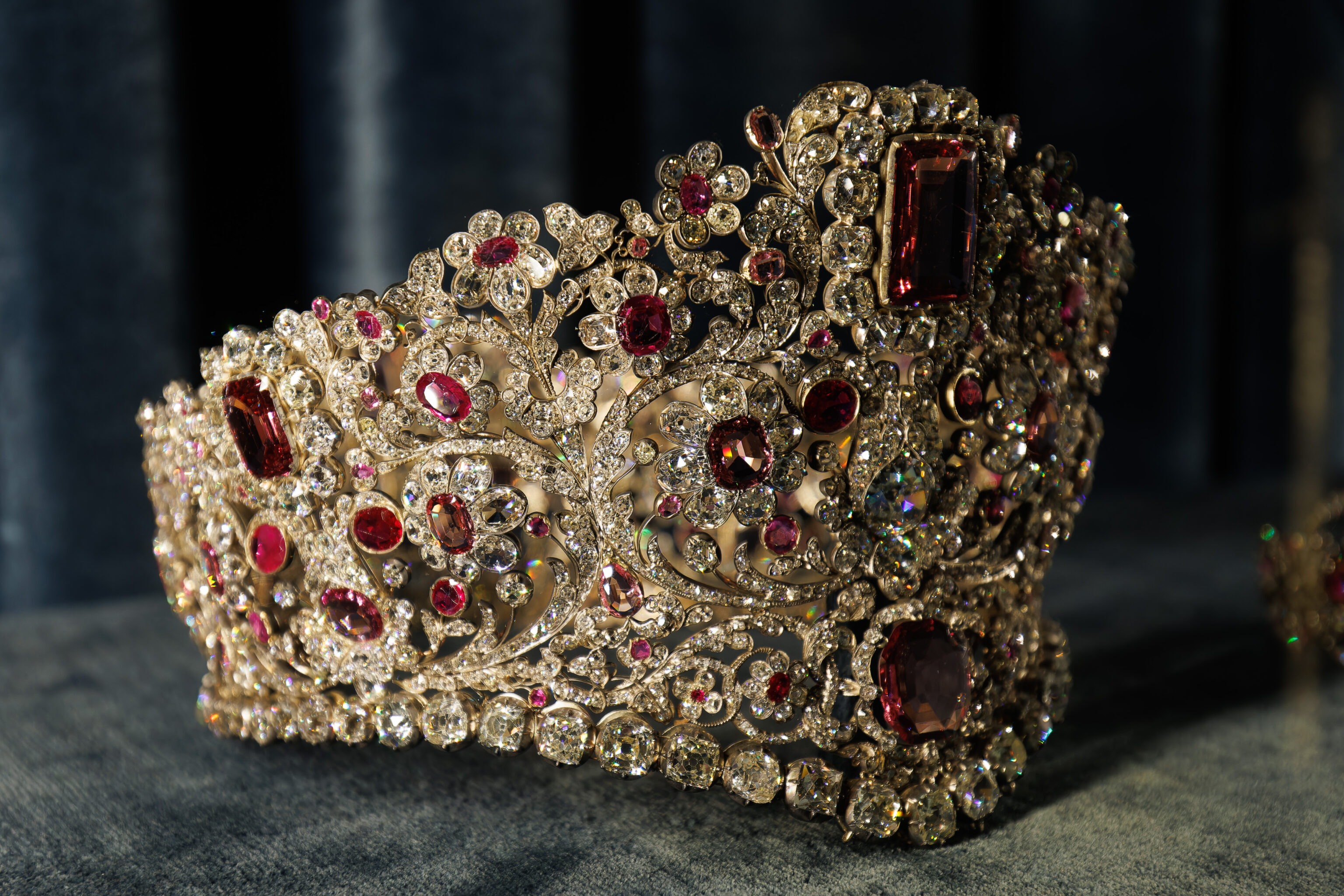
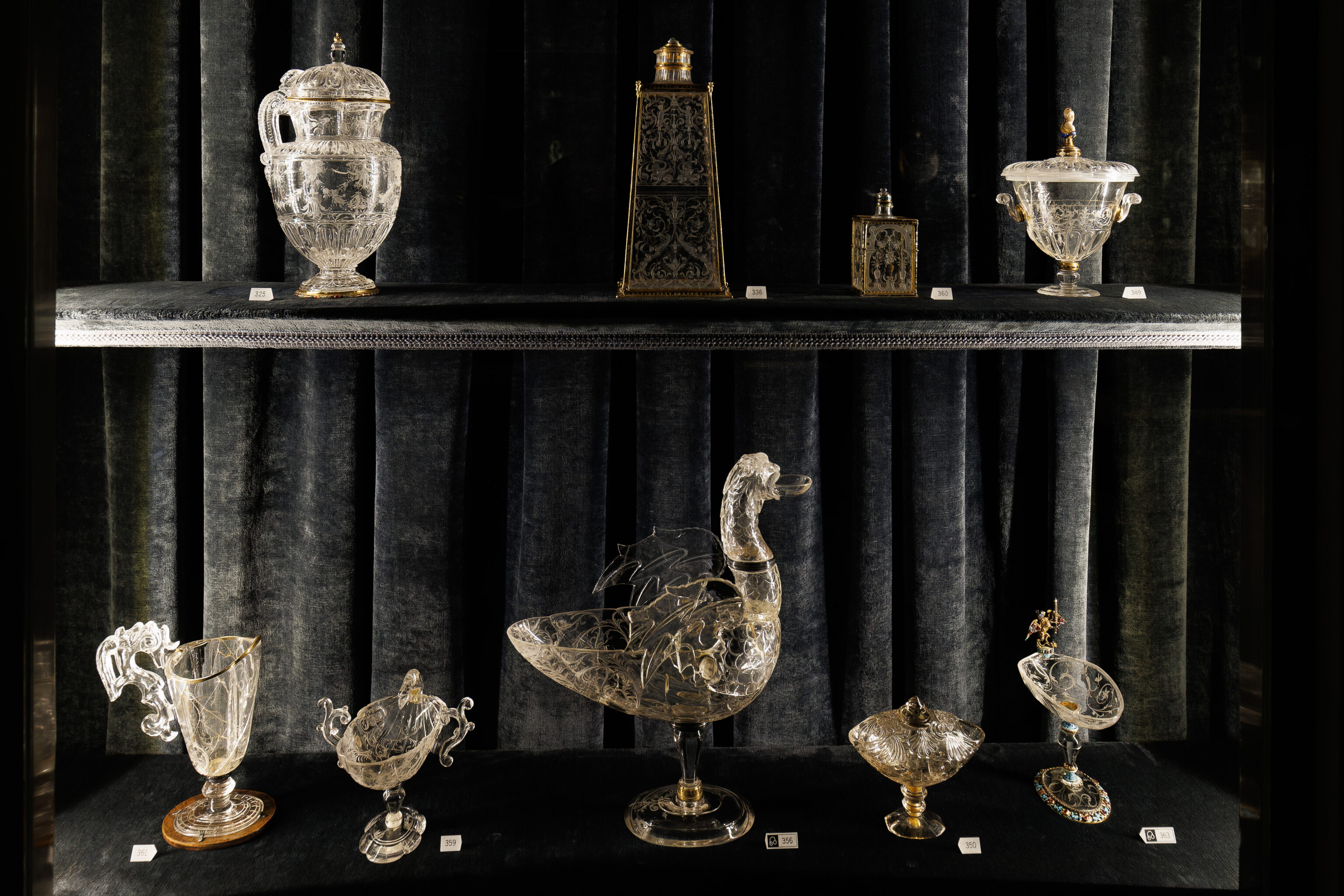
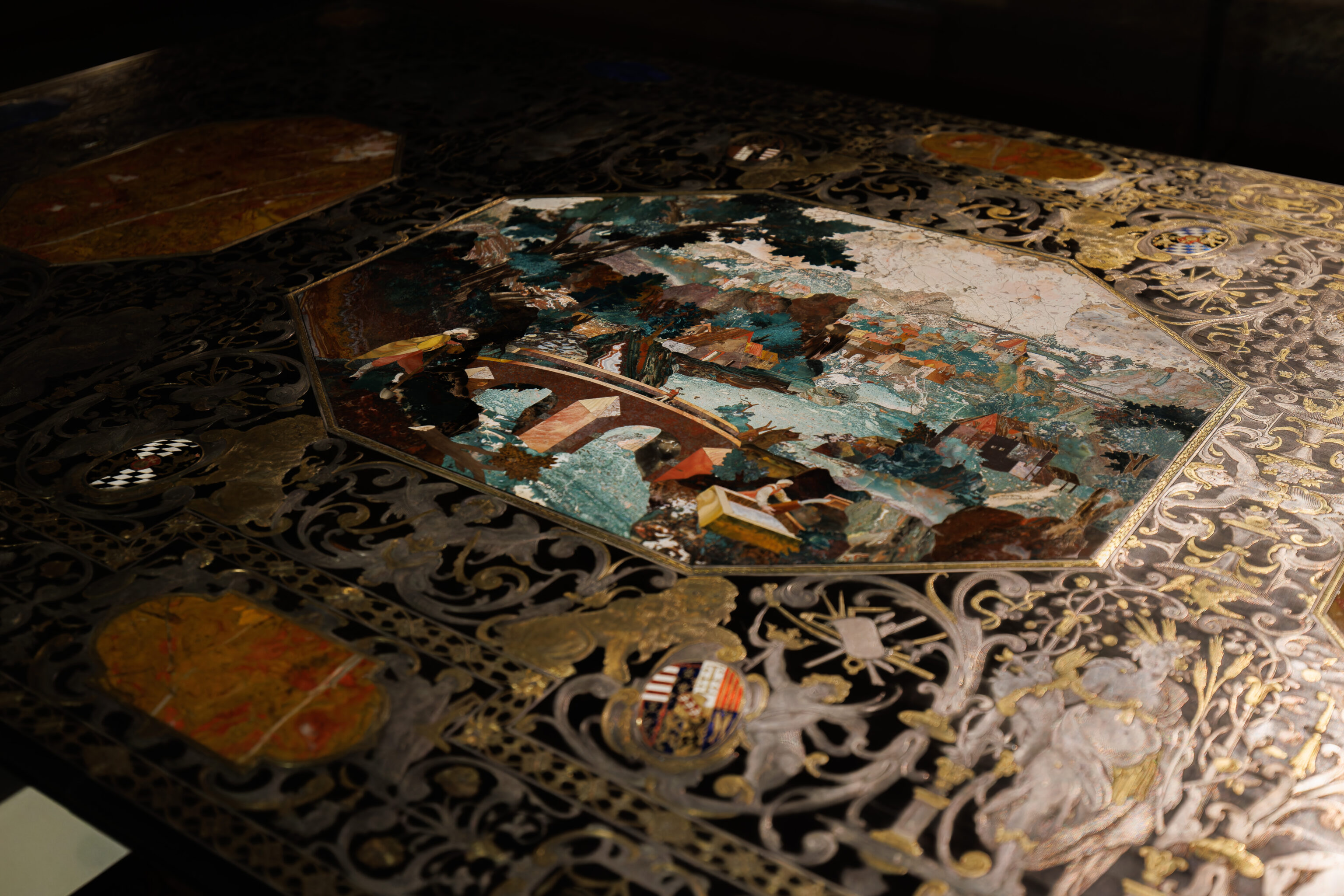
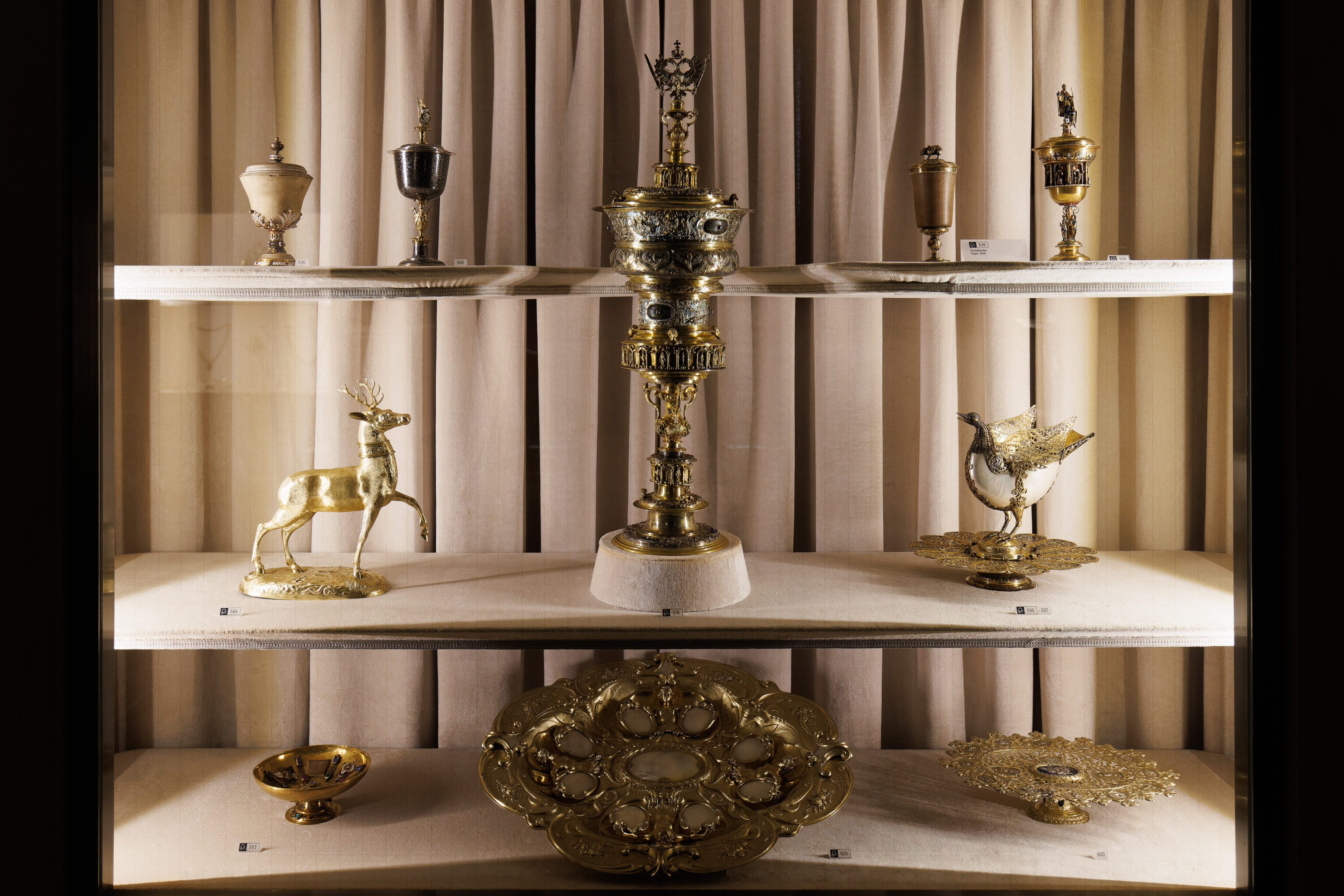
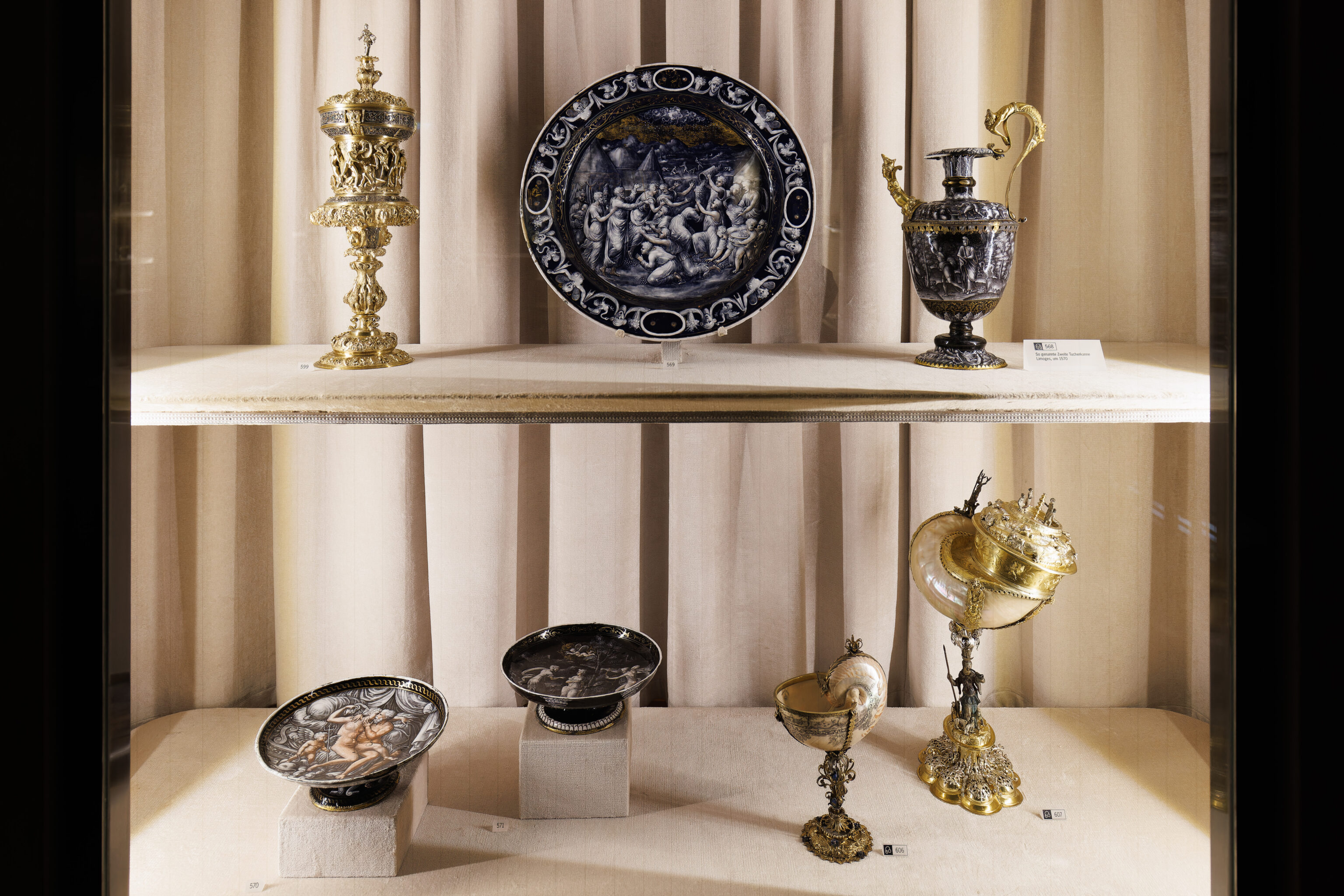
We continued walking through the various rooms of the Treasury, taking a quick look at the collections. We took photos of some of the items that seemed interesting.
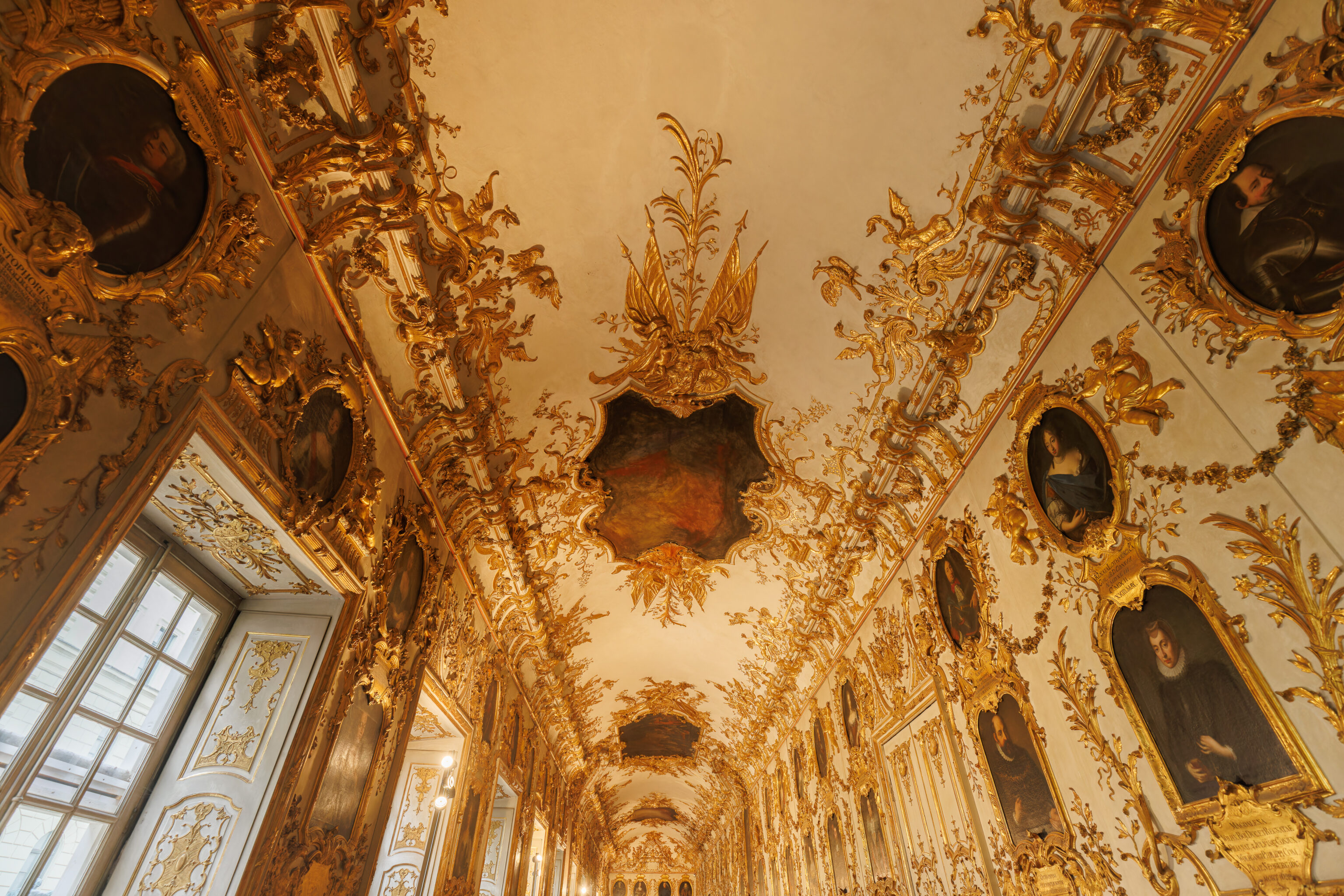
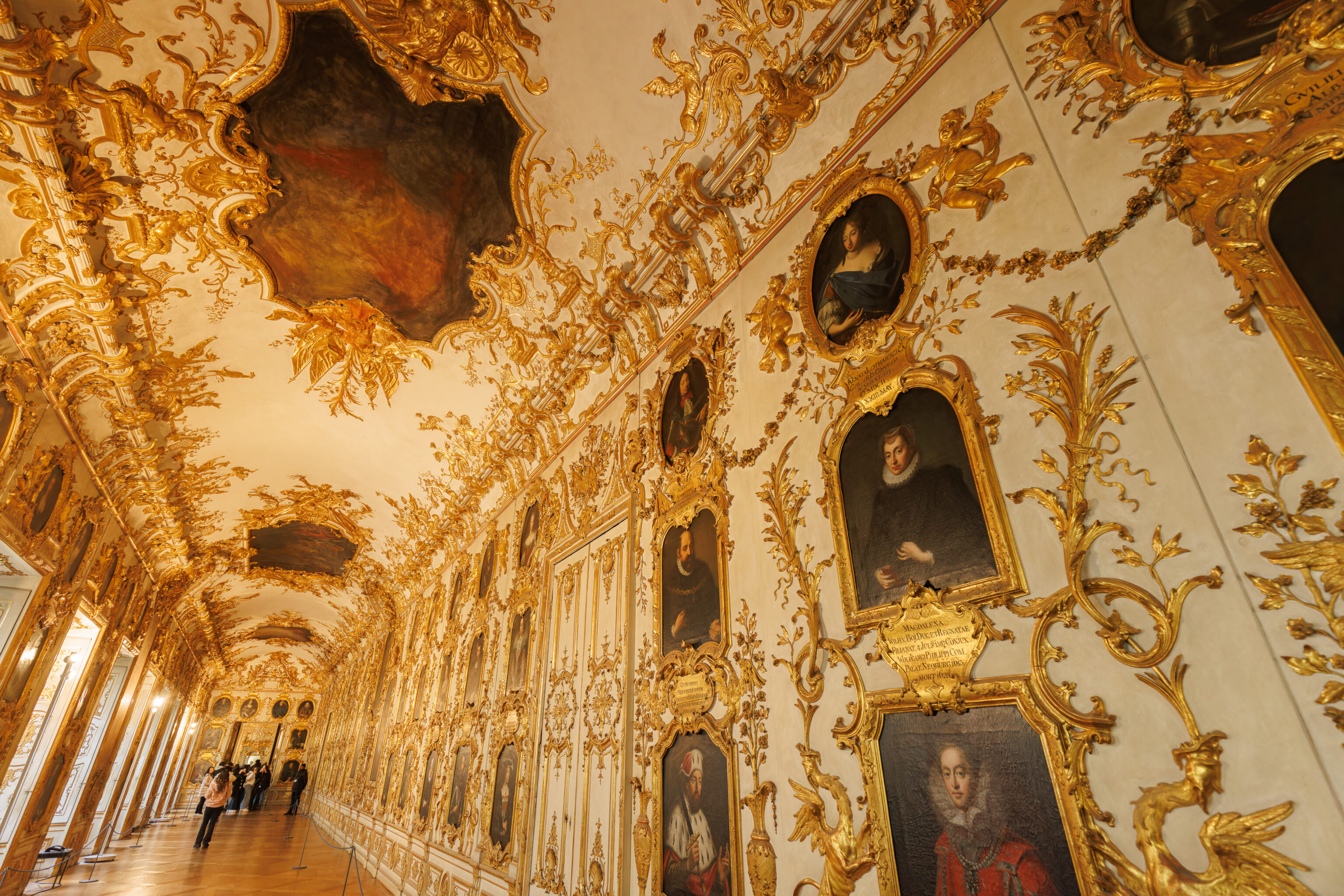
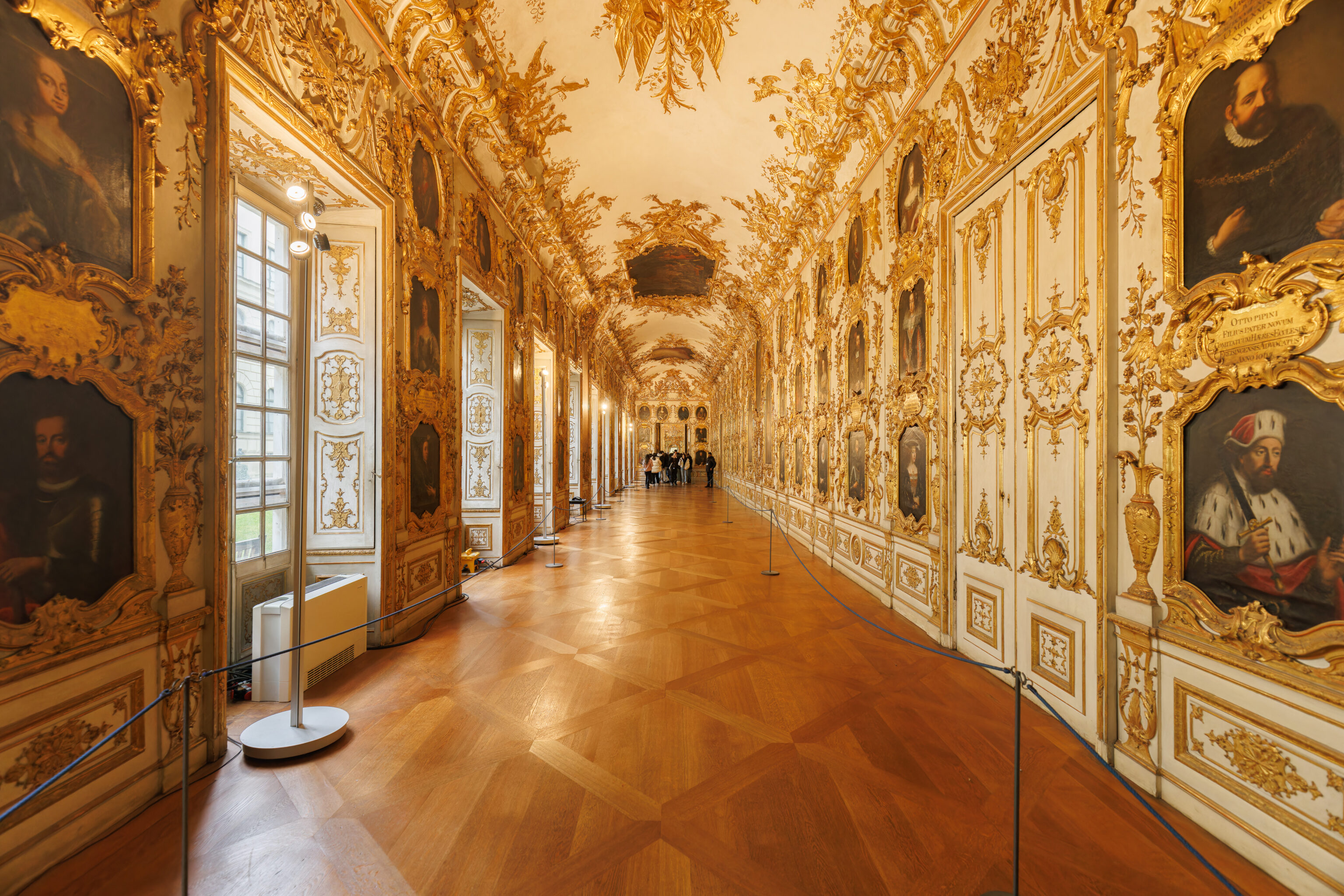
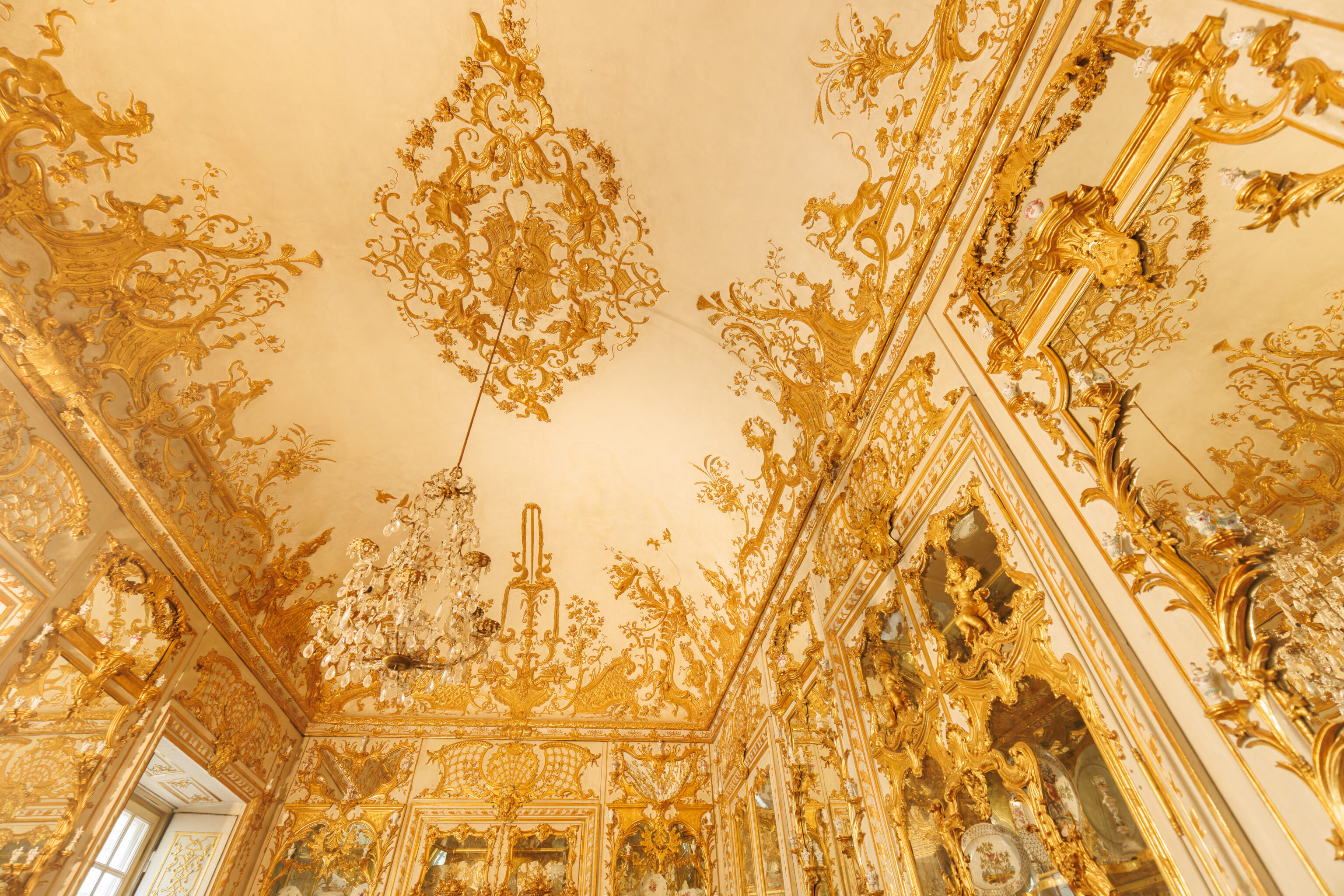
After walking through the Treasury, we entered the Residenz’s palace rooms. The first room we entered was a long, ornately decorated hallway named the Ancestral Gallery. As the name suggests, the room contains portraits of the Bavarian House of Wittelsbach, which ruled from the 11th century until the end of the Kingdom of Bavaria after World War I.
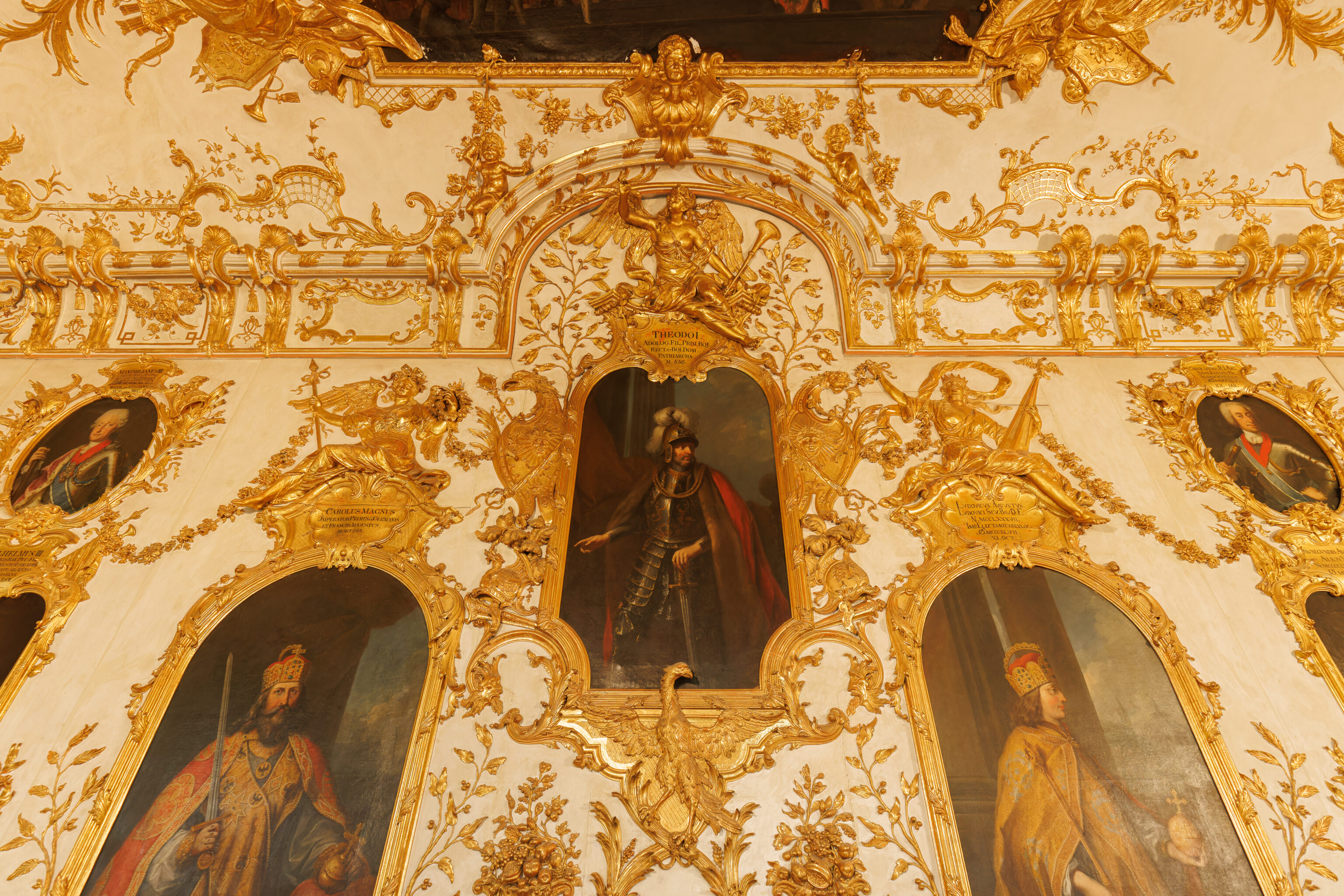
This portrait, at the center of the room, is titled Theodo I, though the year of death seems to imply it is actually Theodo II. There doesn’t seem to be much that is easily researched on Google in English about these early rulers of Bavaria. The German Wikipedia page refers them to being legendary2.
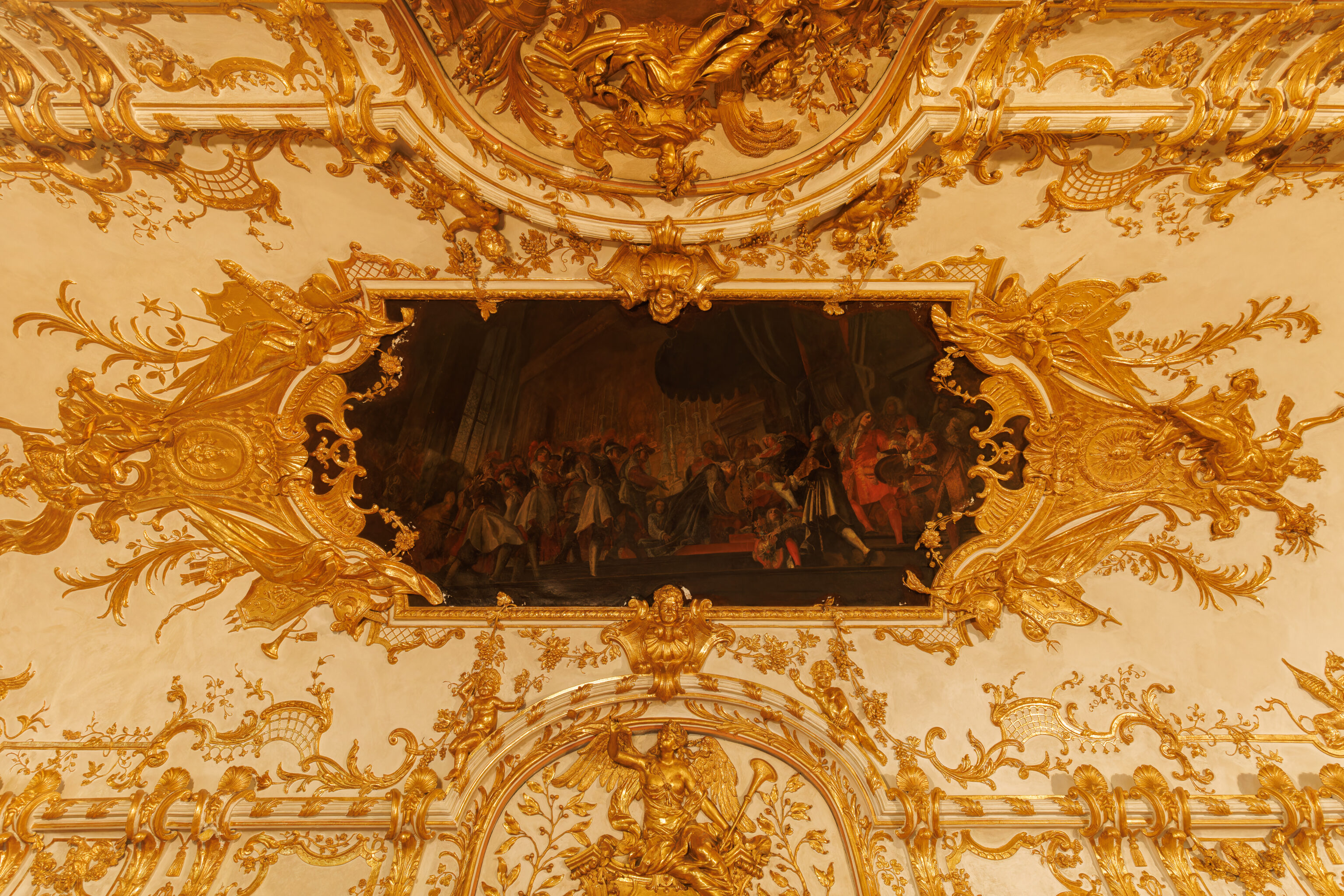
This painting, above the Theodo portrait, was referred to by the audio guide. Unfortunately, not having the actual audio guide content as a reference means that we’ve forgotten the details!
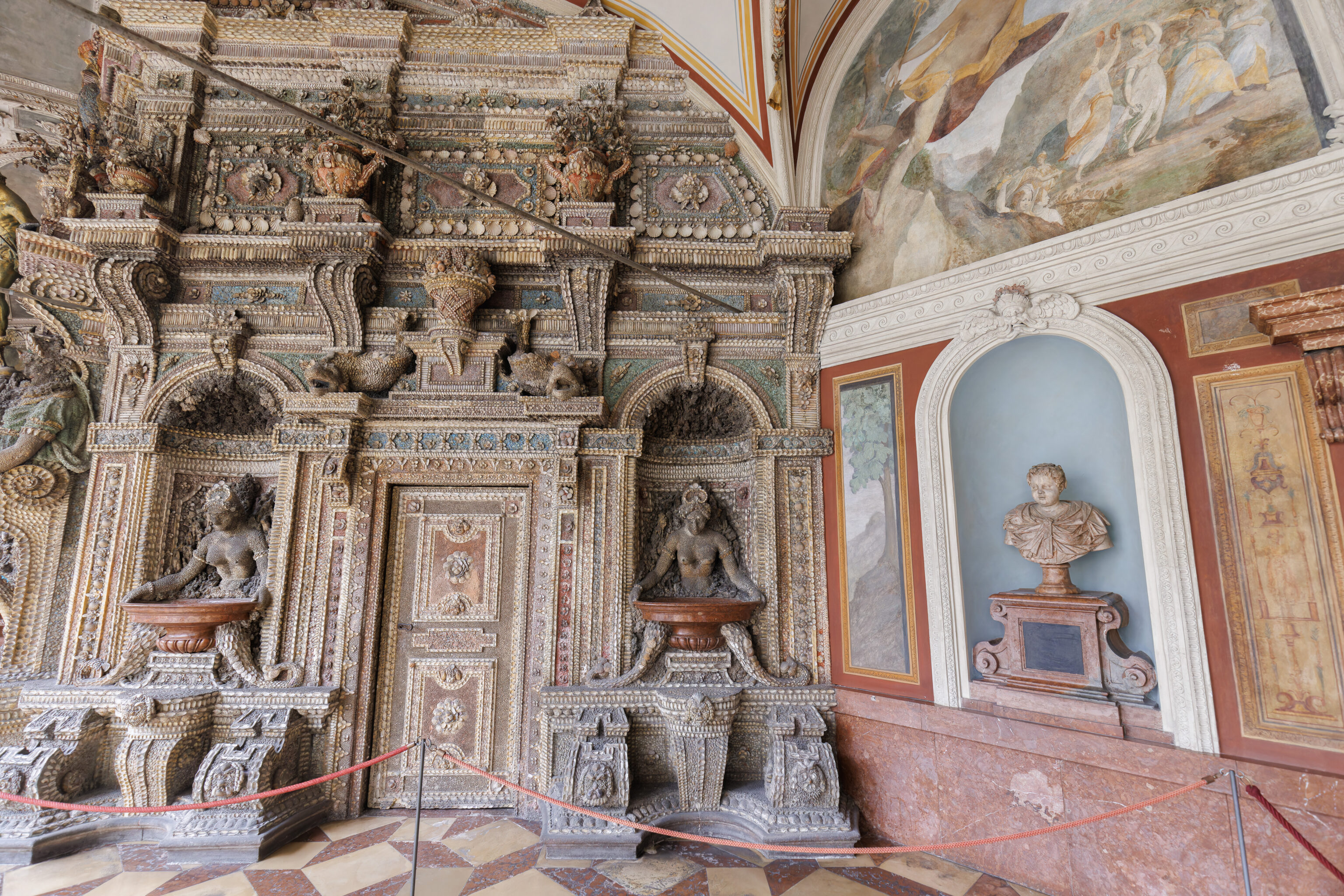
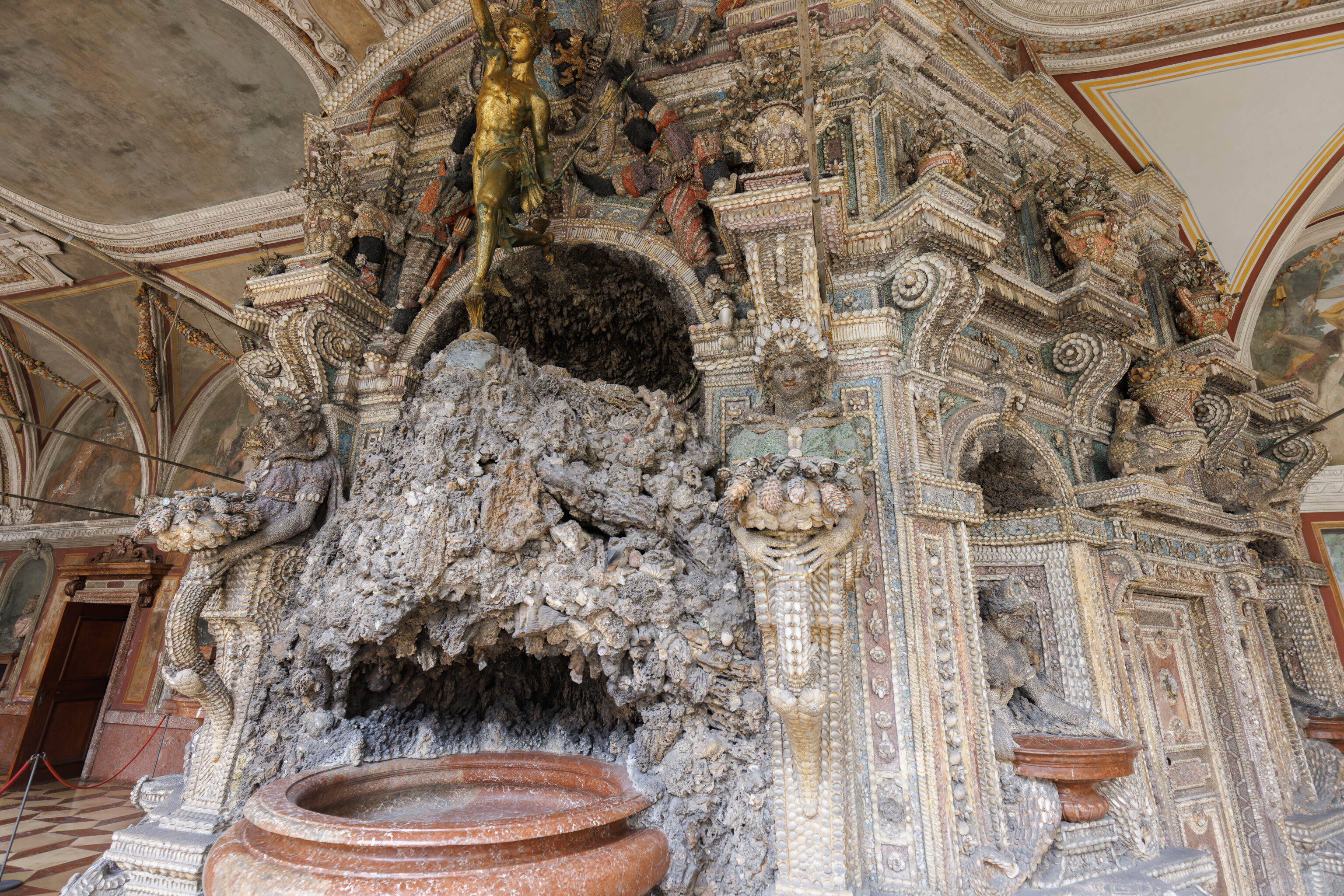
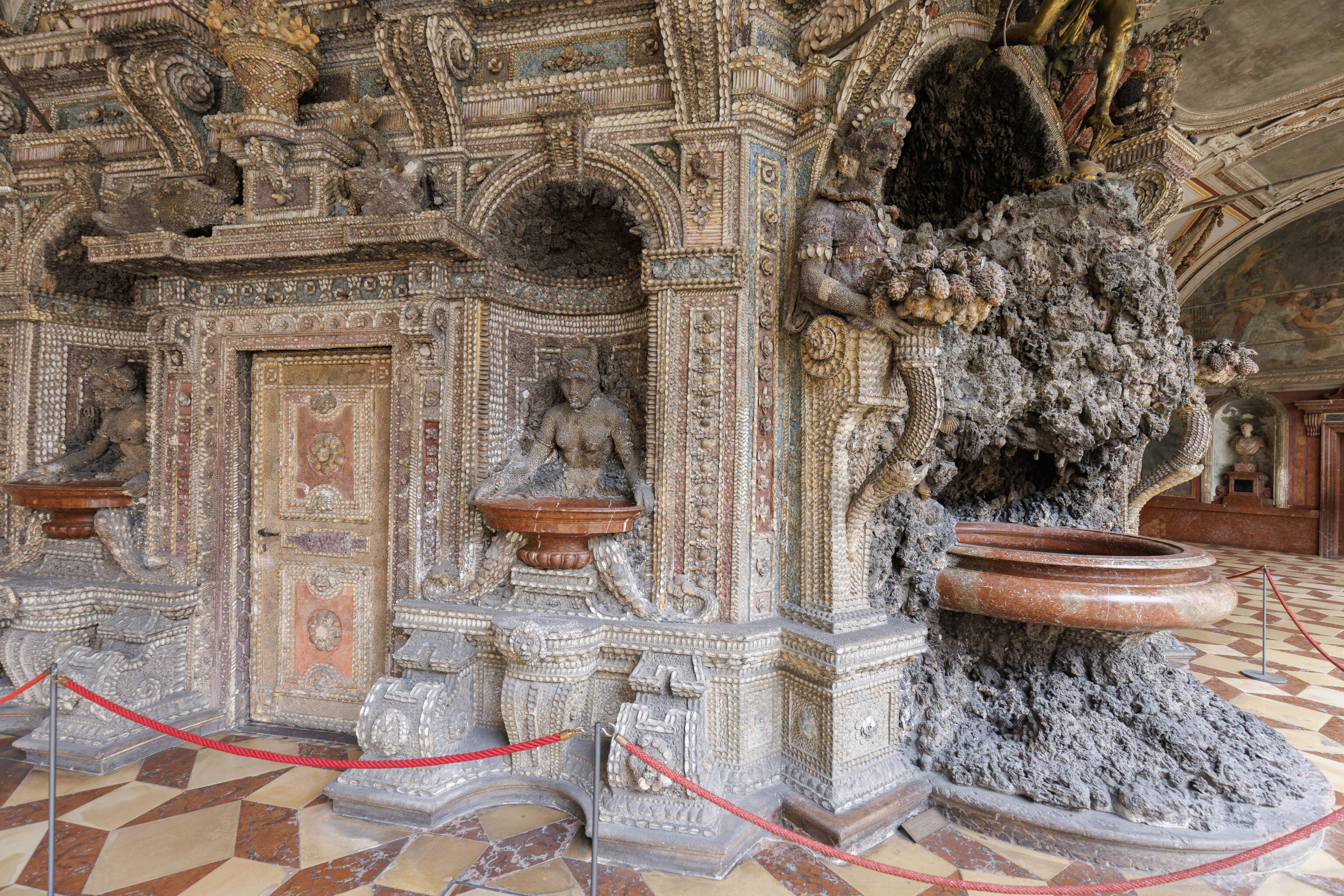
The next room we walked through was the Shell Grotto, an artificial cave-like structure made of seashells.
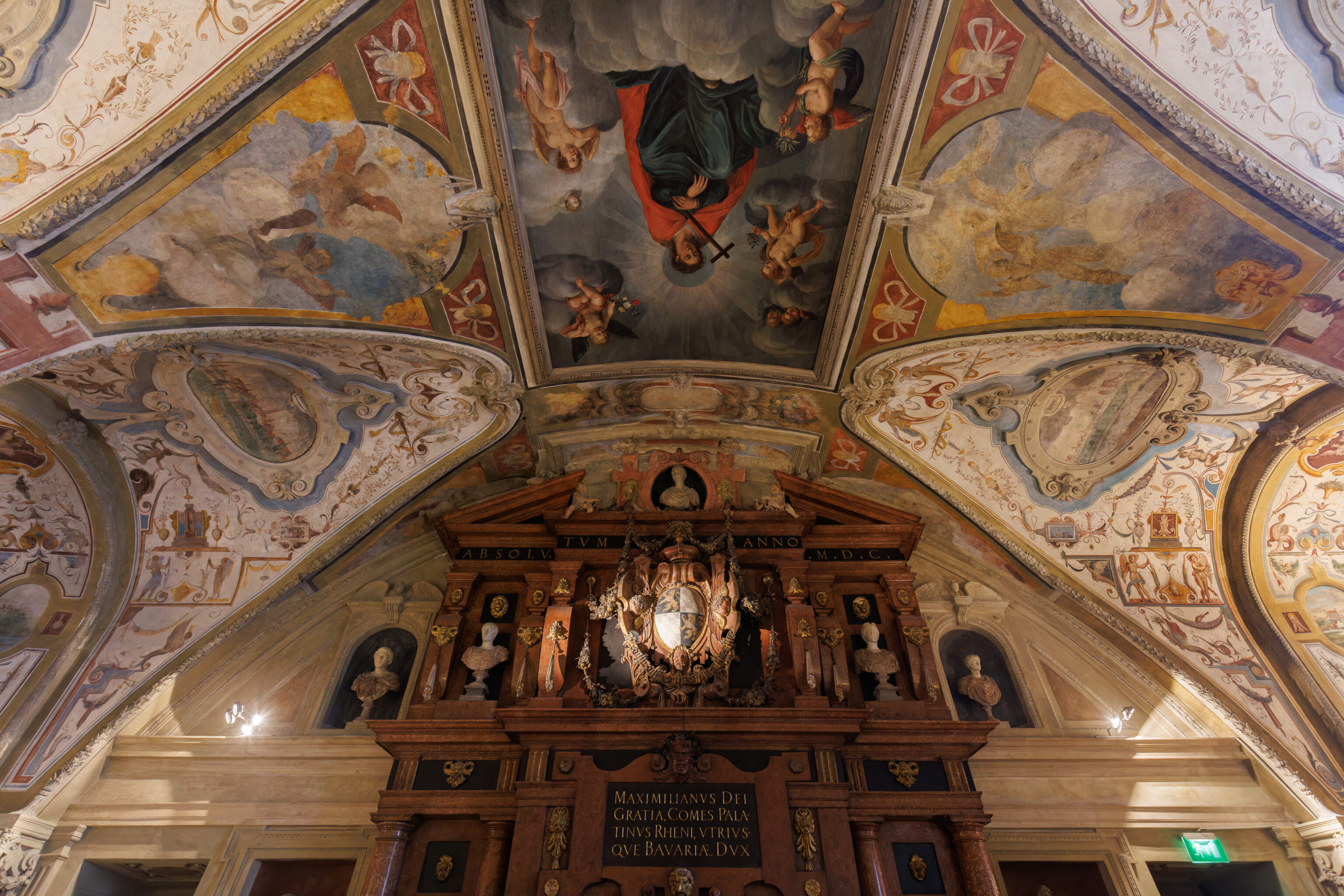
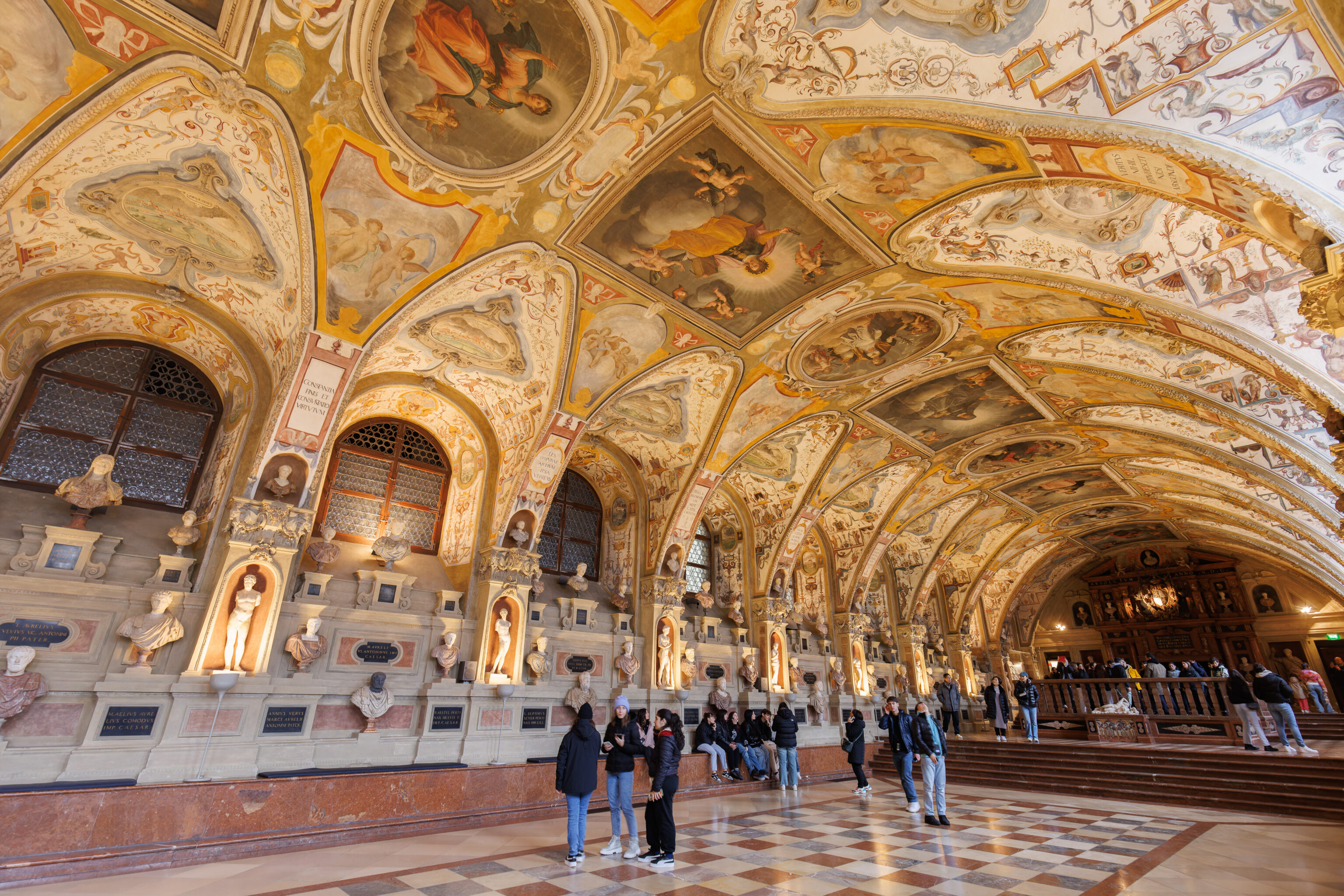
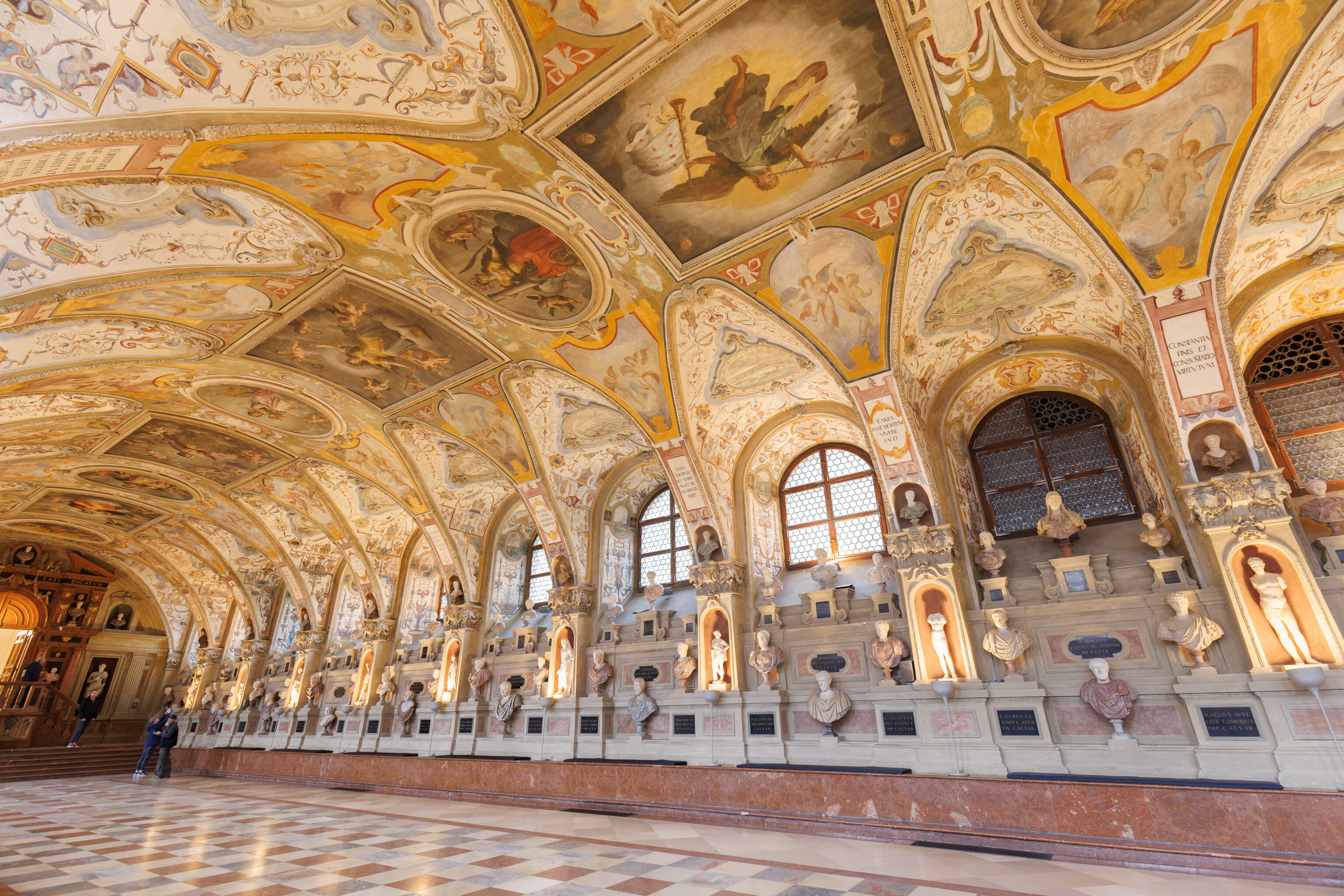
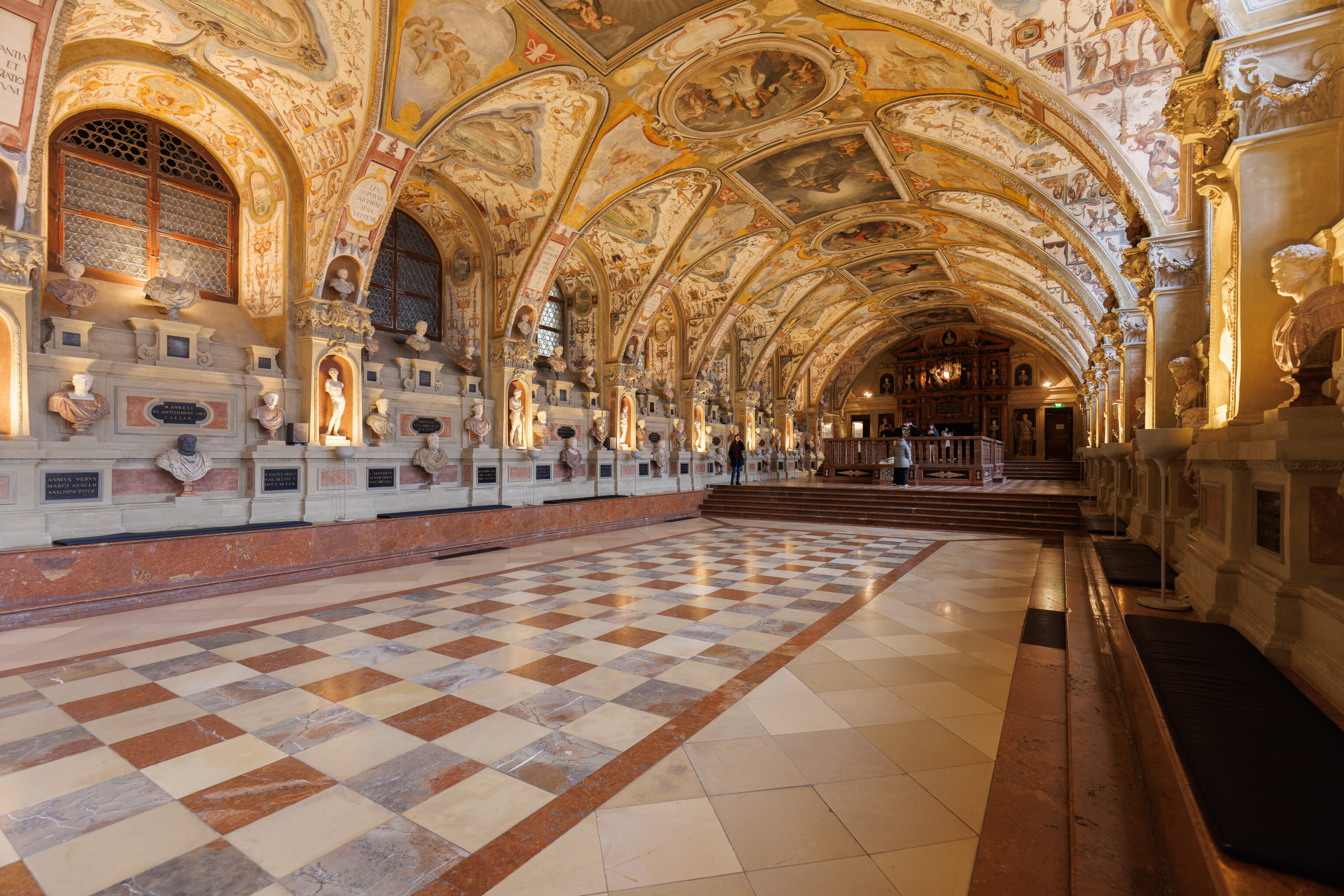
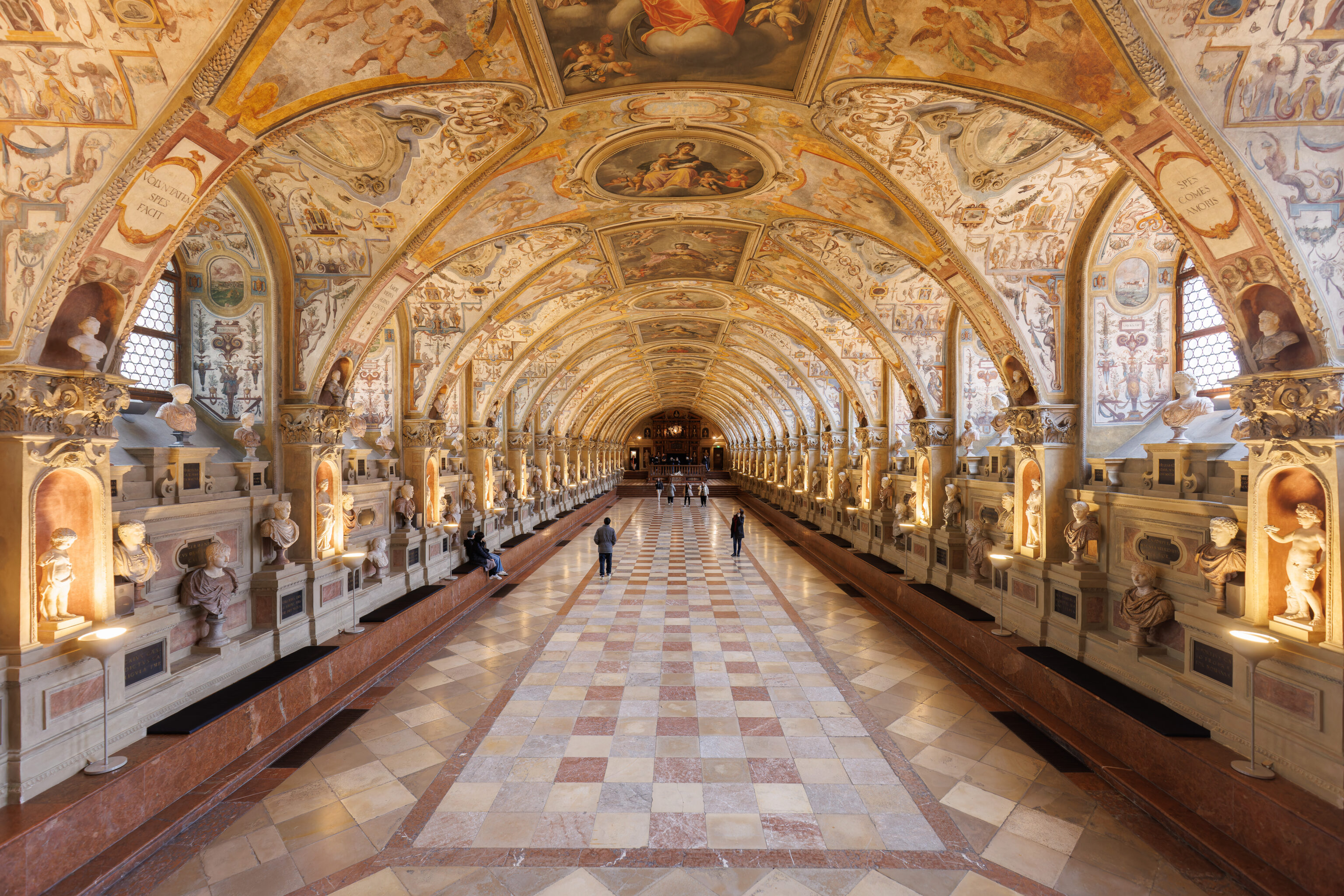
We then walked through the Antiquarium. This ornate hall contained many sculptures, most of which seemed to be from the Holy Roman Empire.
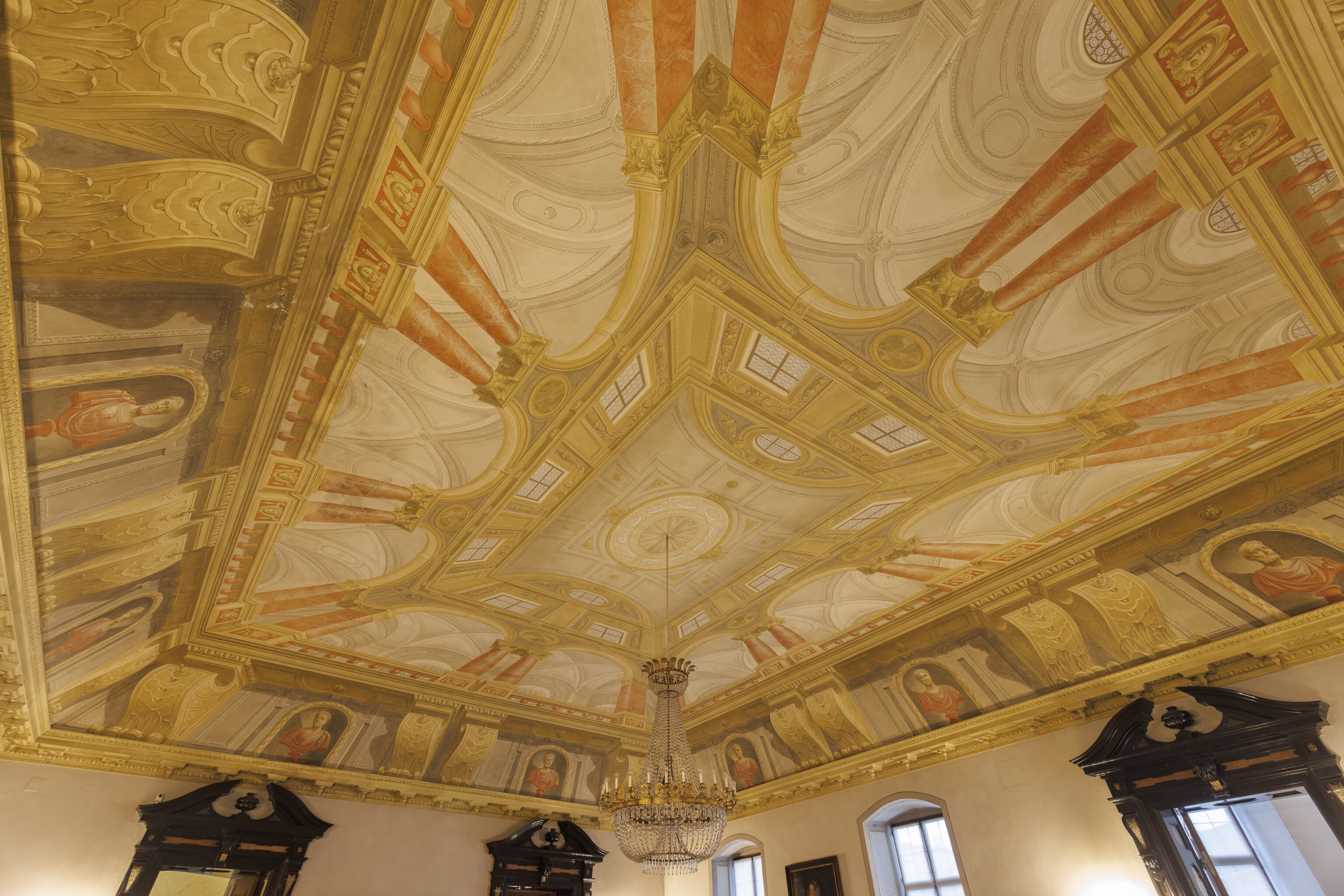
The ceiling in this room was painted to appear three dimensional. The effect is supposed to work best when directly underneath.
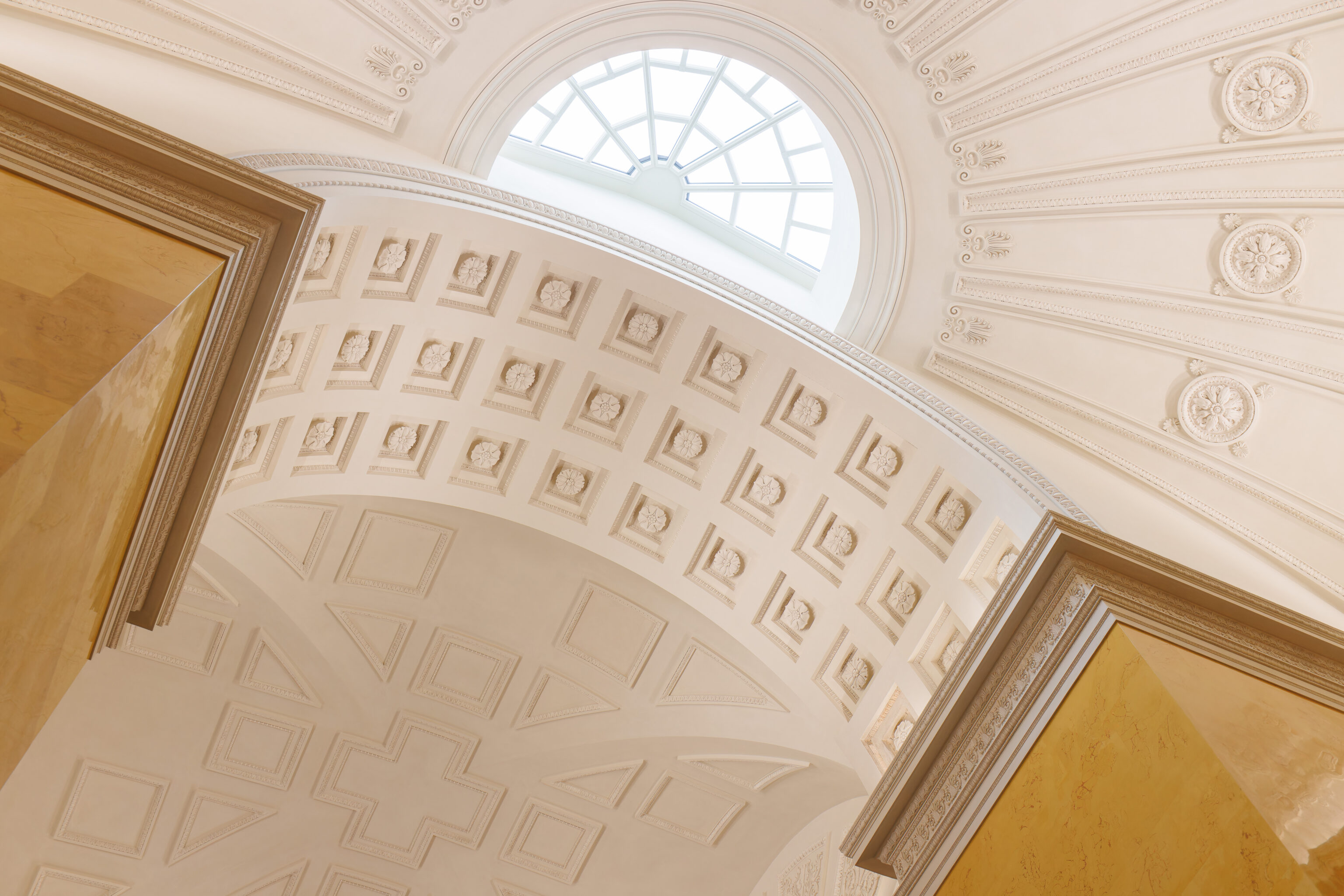
These squares above with flowers within reminded us of Paris.
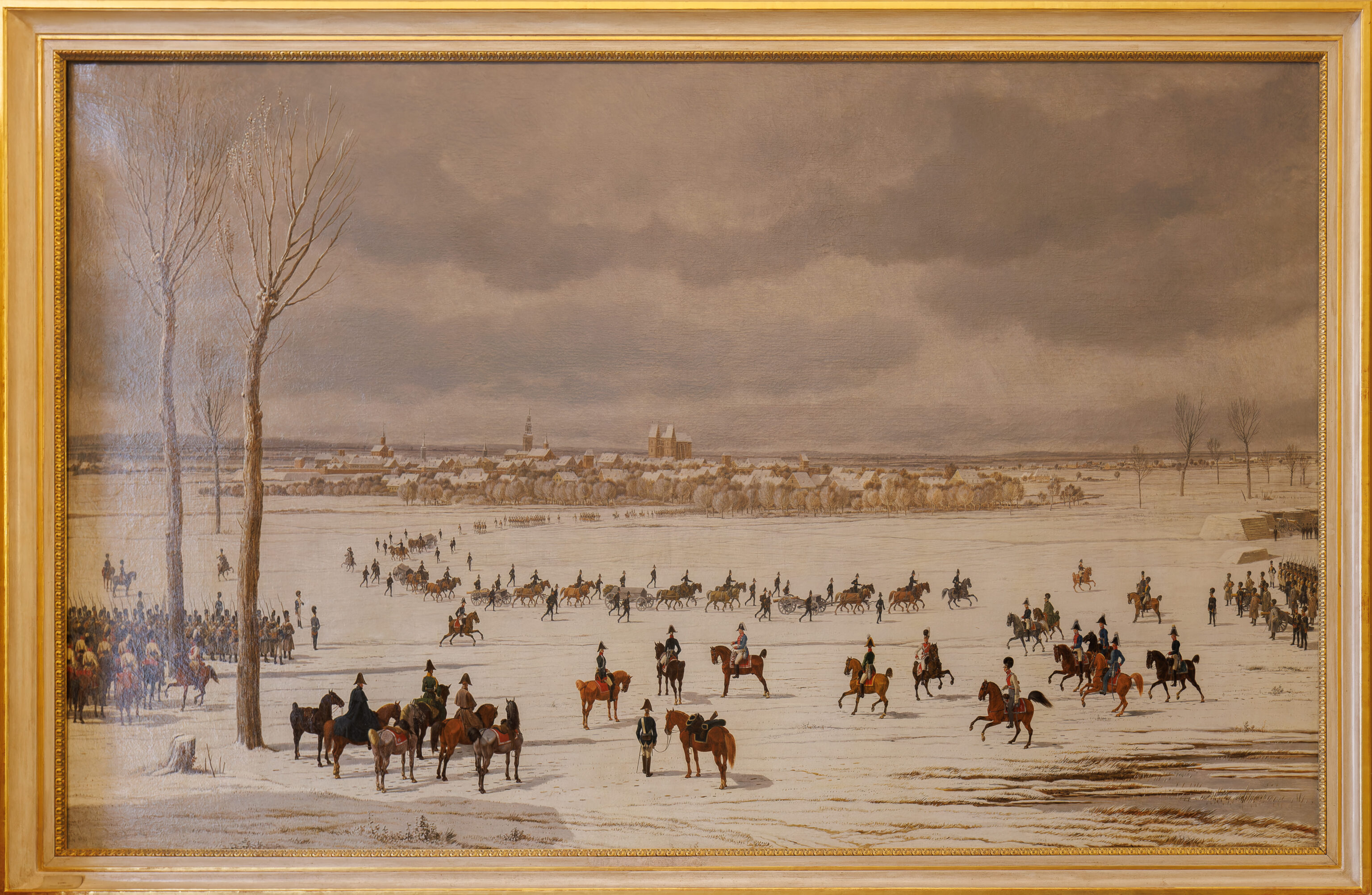
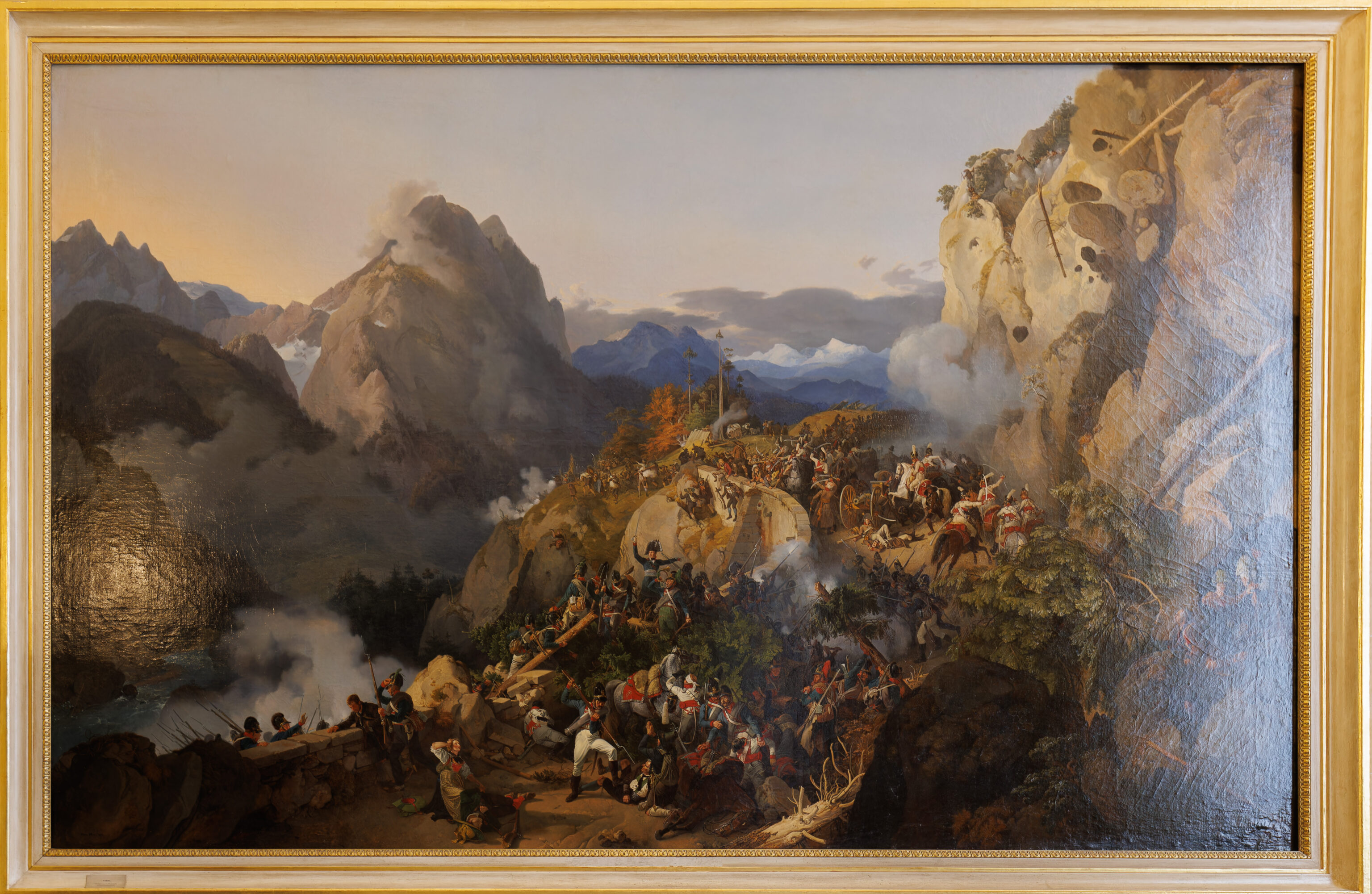
Many of the rooms in the palace were decorated with paintings depicting various historical scenes.
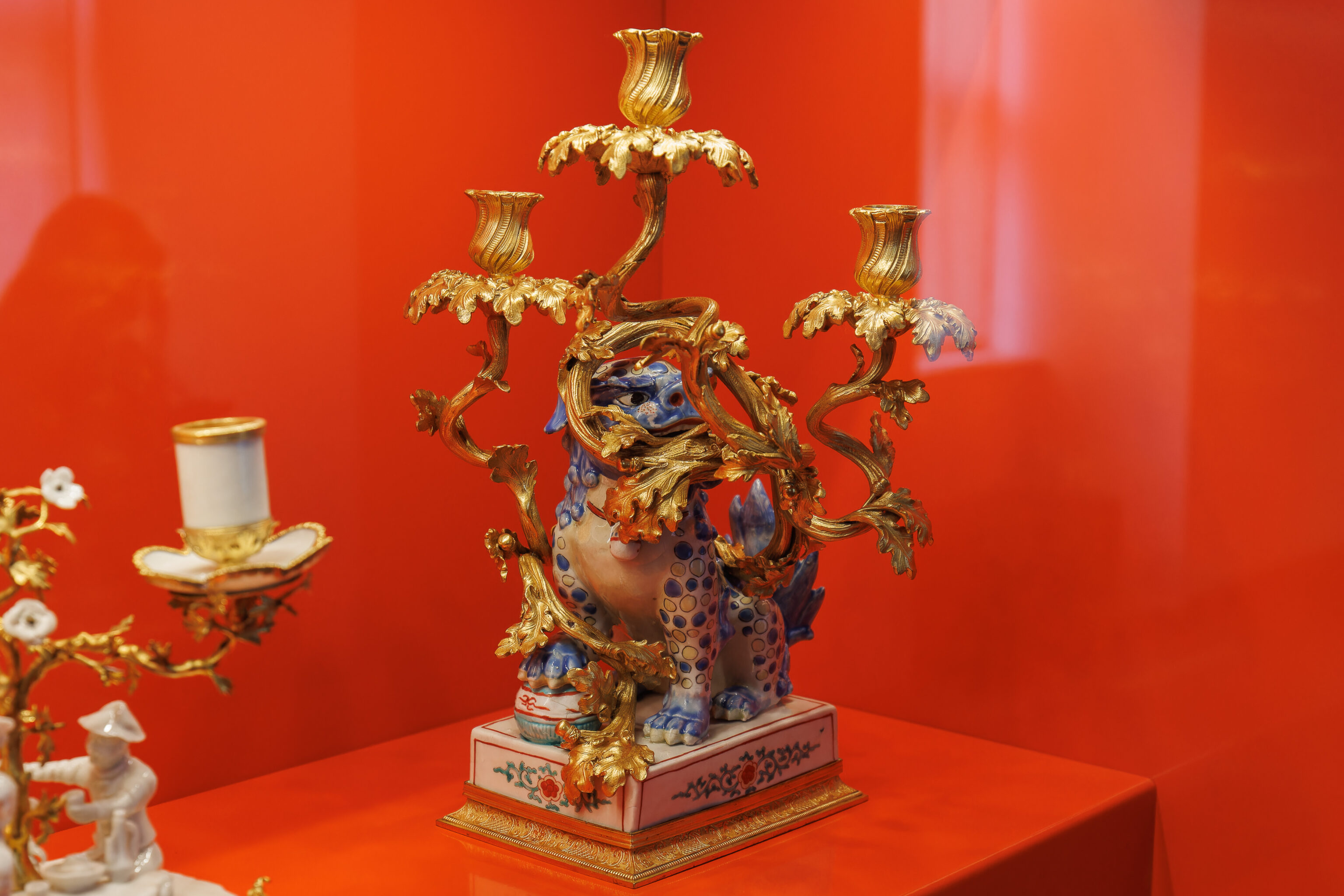
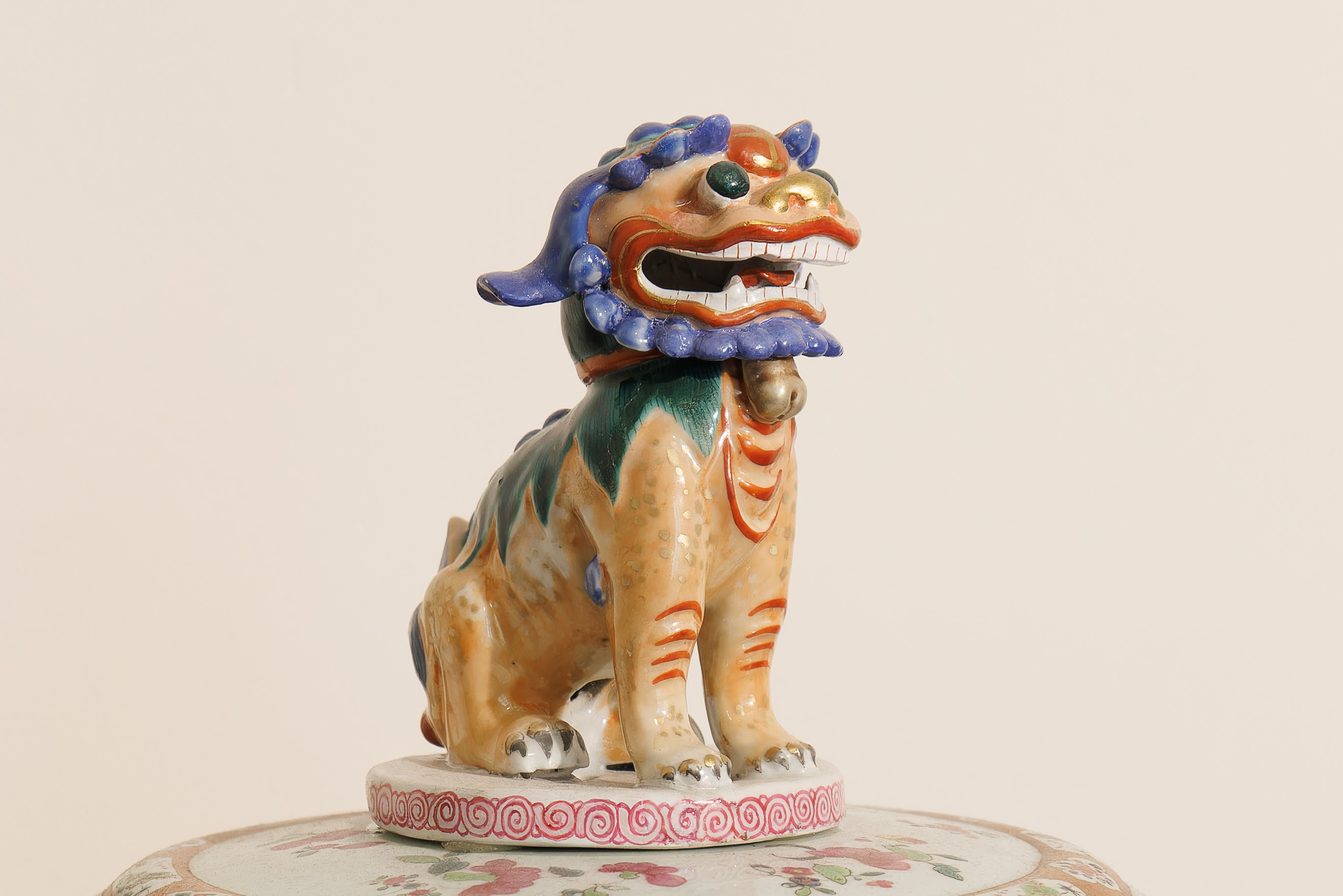
There was a collection of Chinese porcelain.
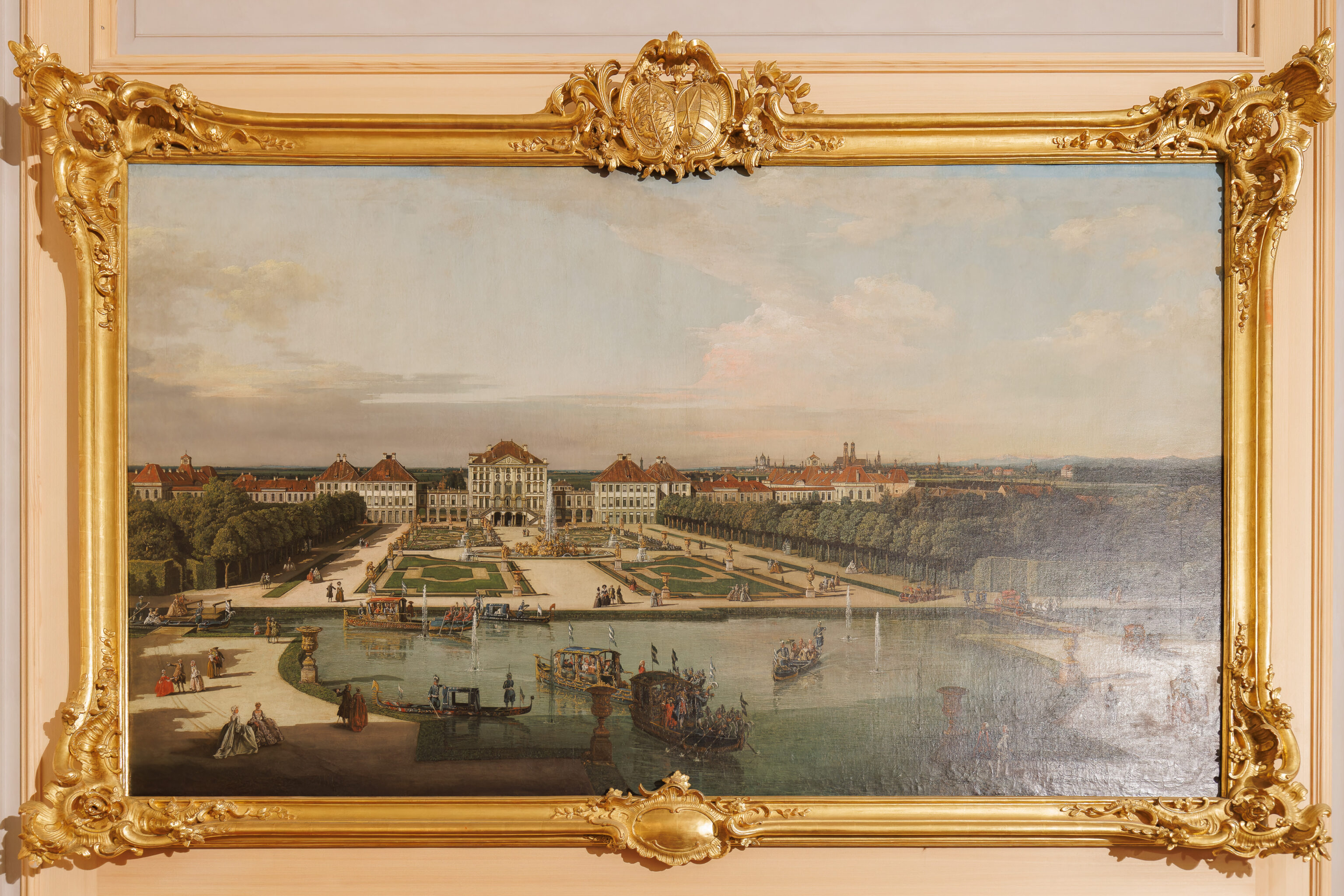
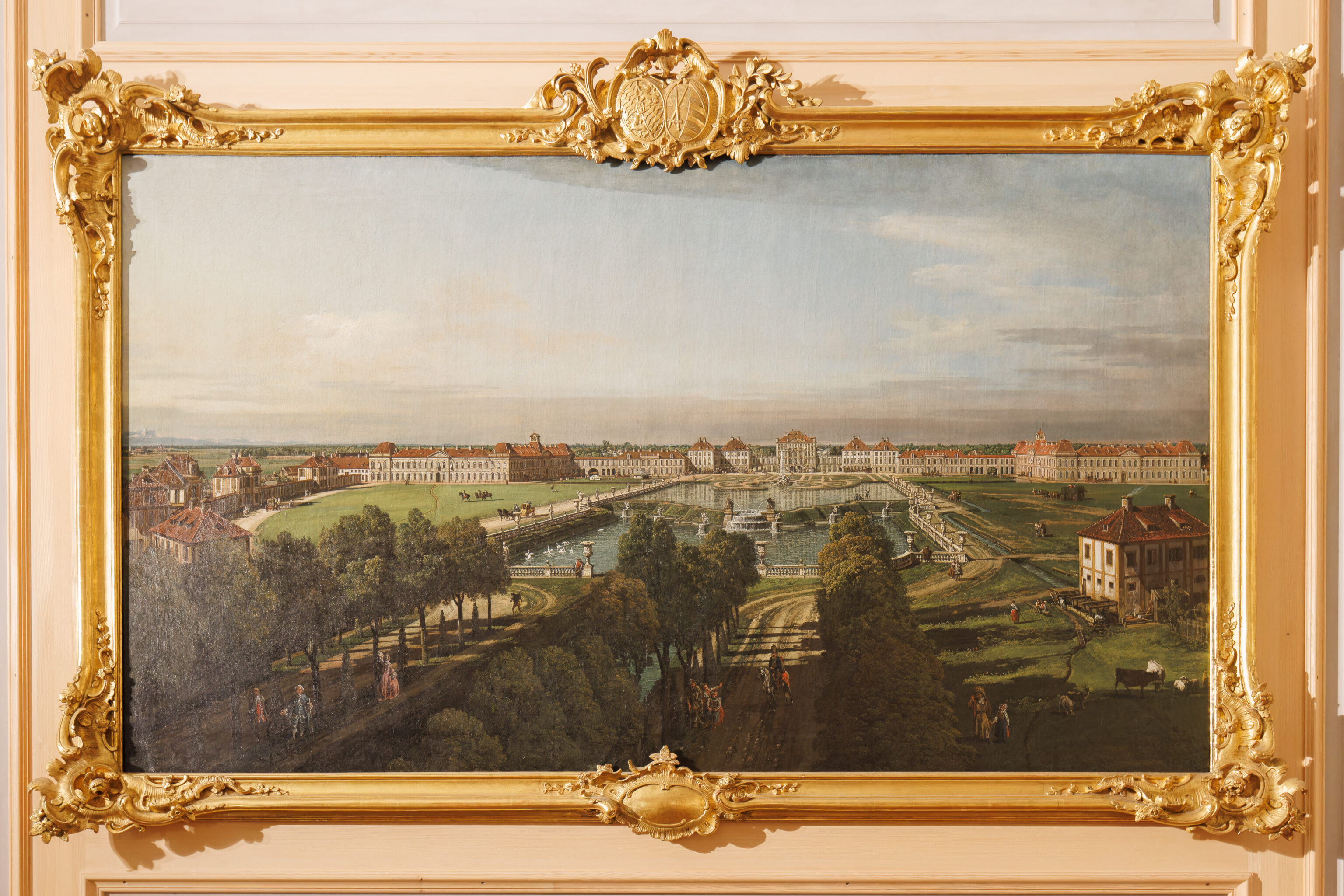
These two paintings depict Schloss Nymphenburg, which we plan on visiting on this trip.
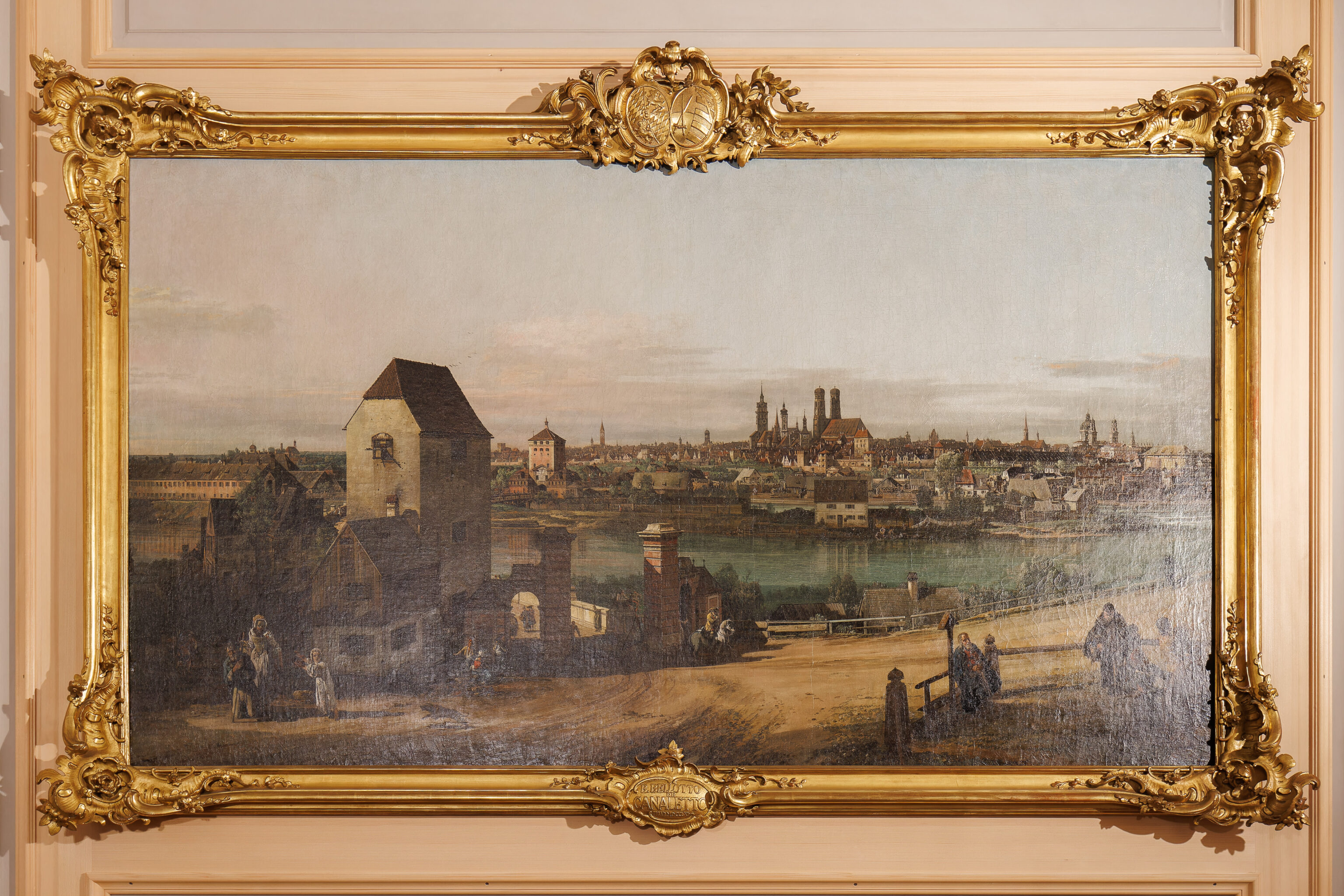
This painting depicts Munich.
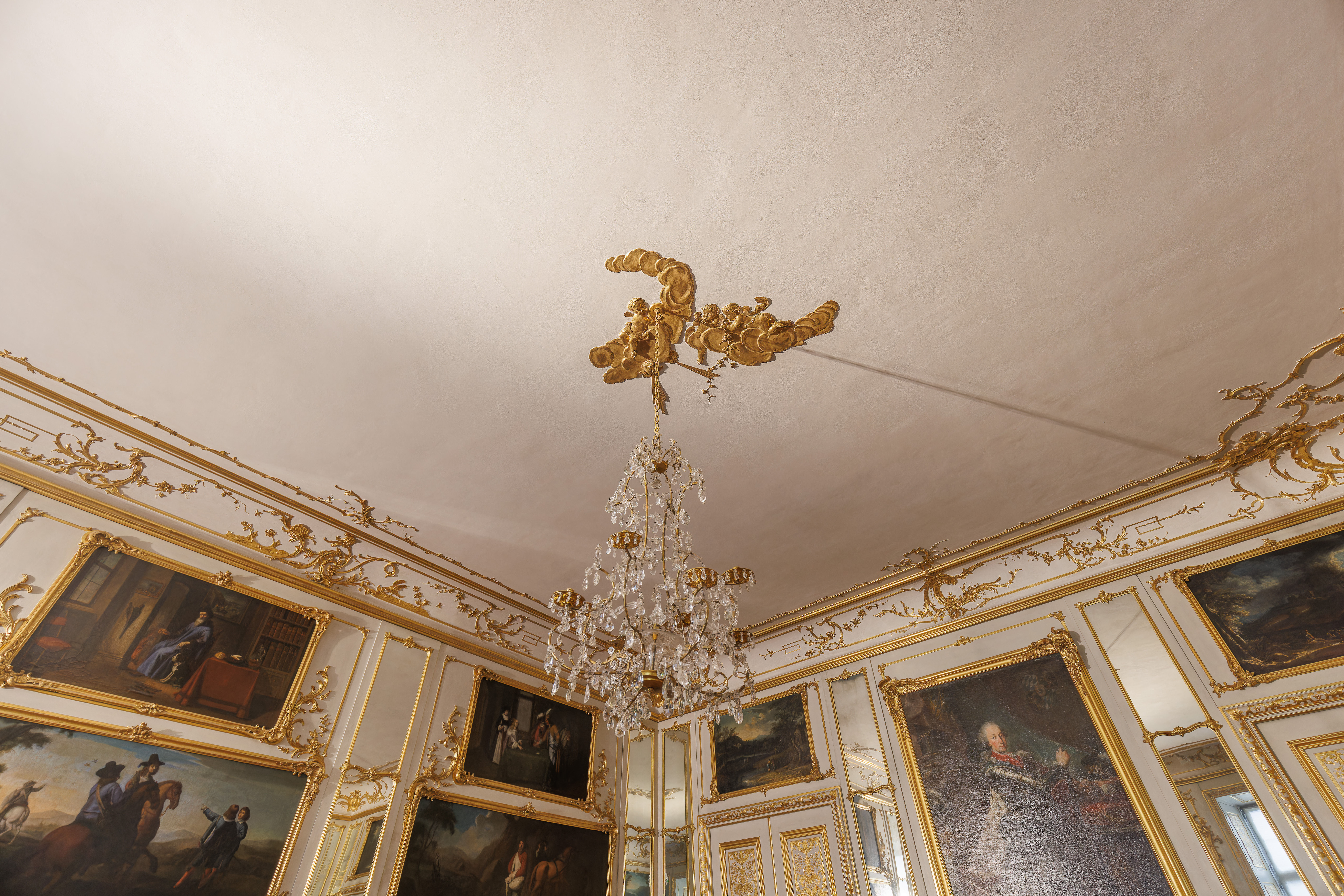
One of the less ornate ceilings in the palace.
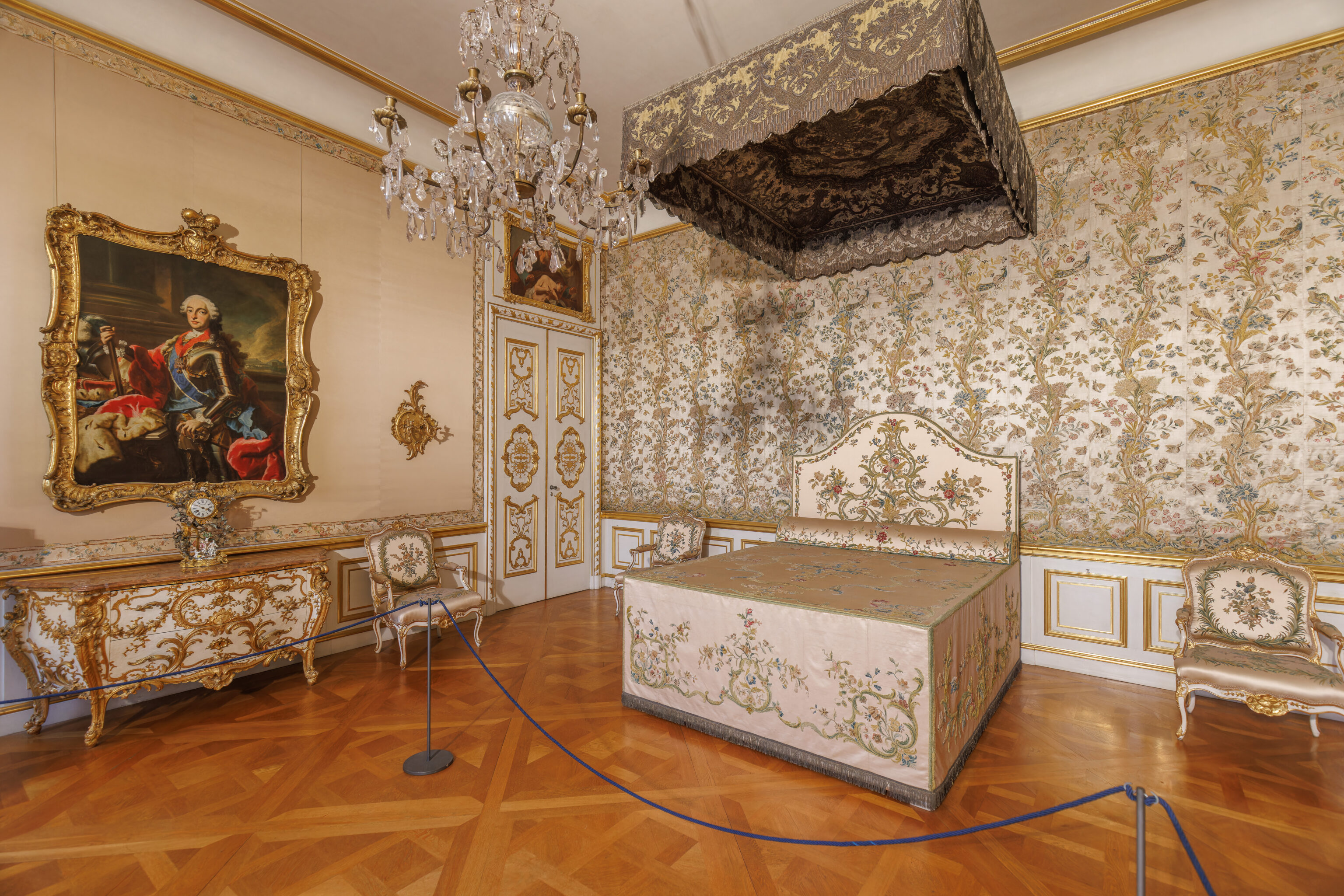
A rather tall and uncomfortable looking bed.
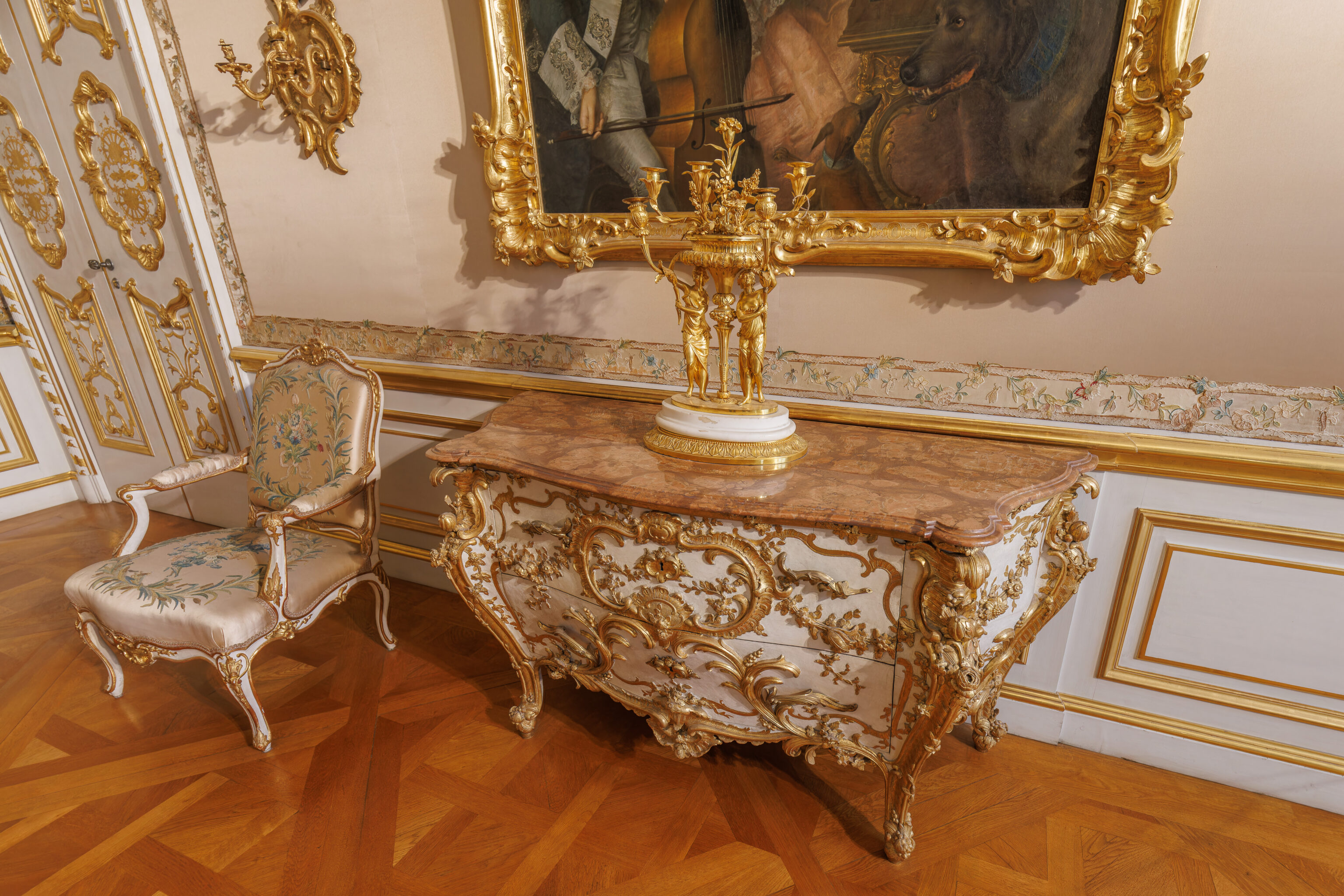
The furniture here was quite ornate.
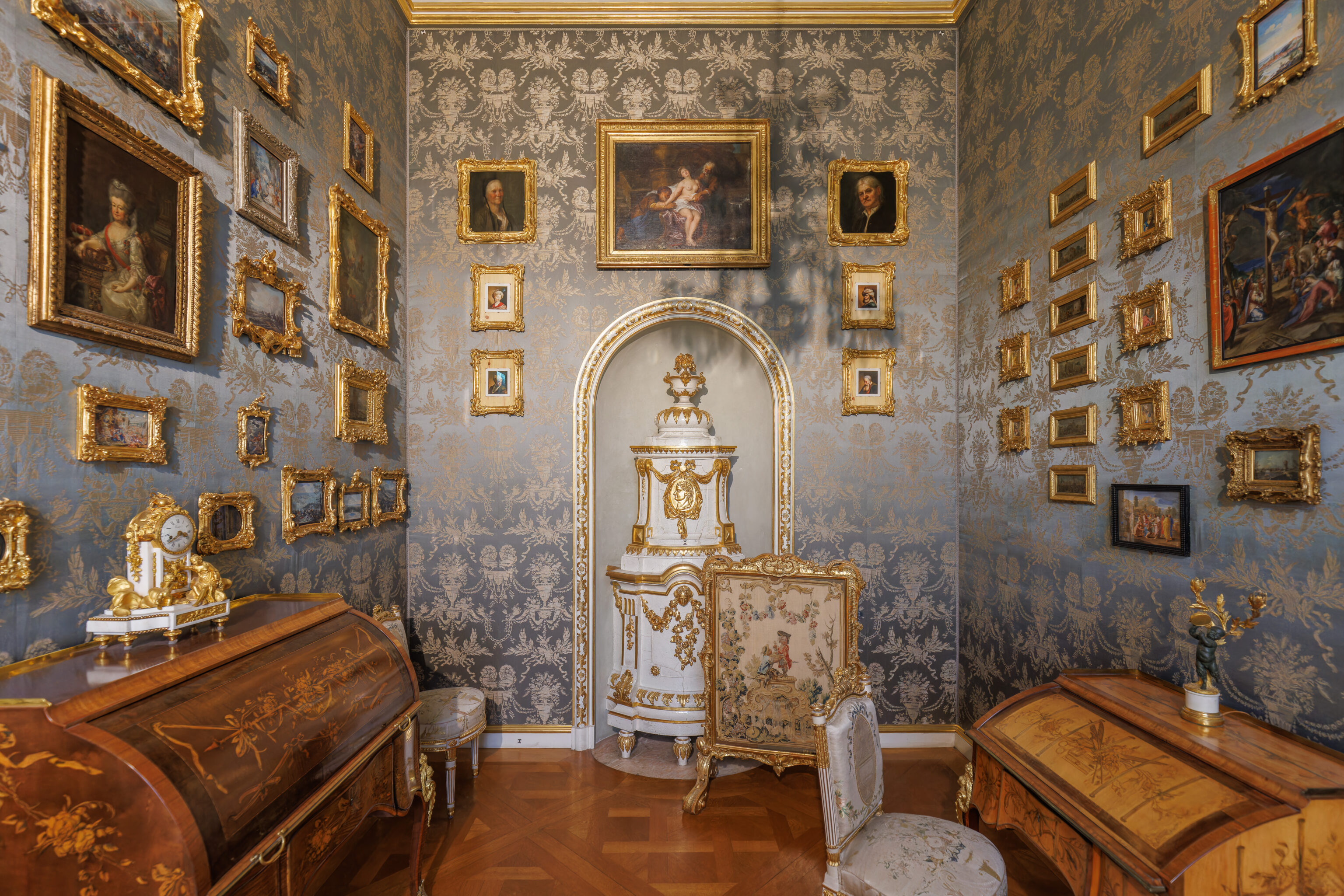
This small room was filled with small portraits on the walls.
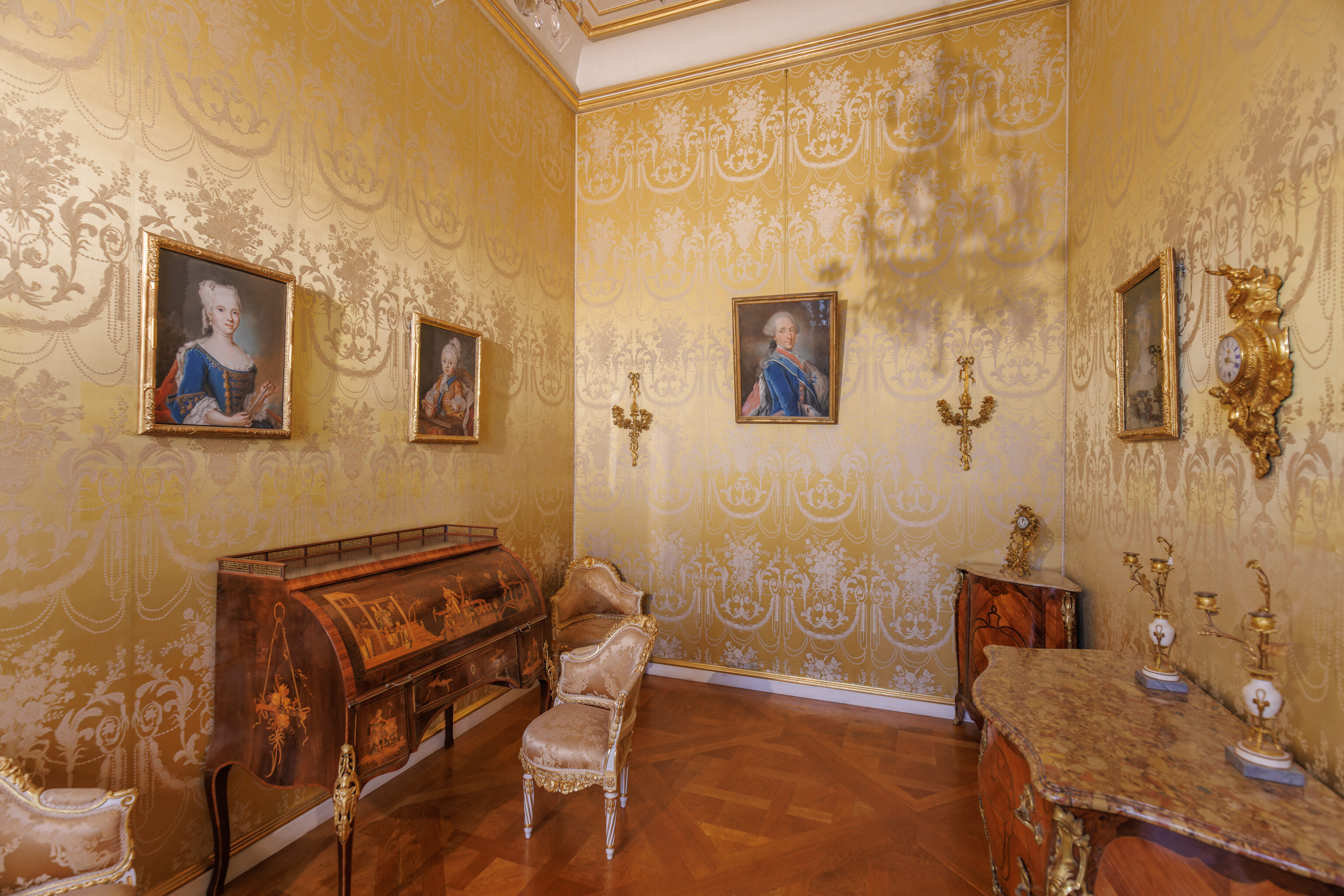
Another small room.
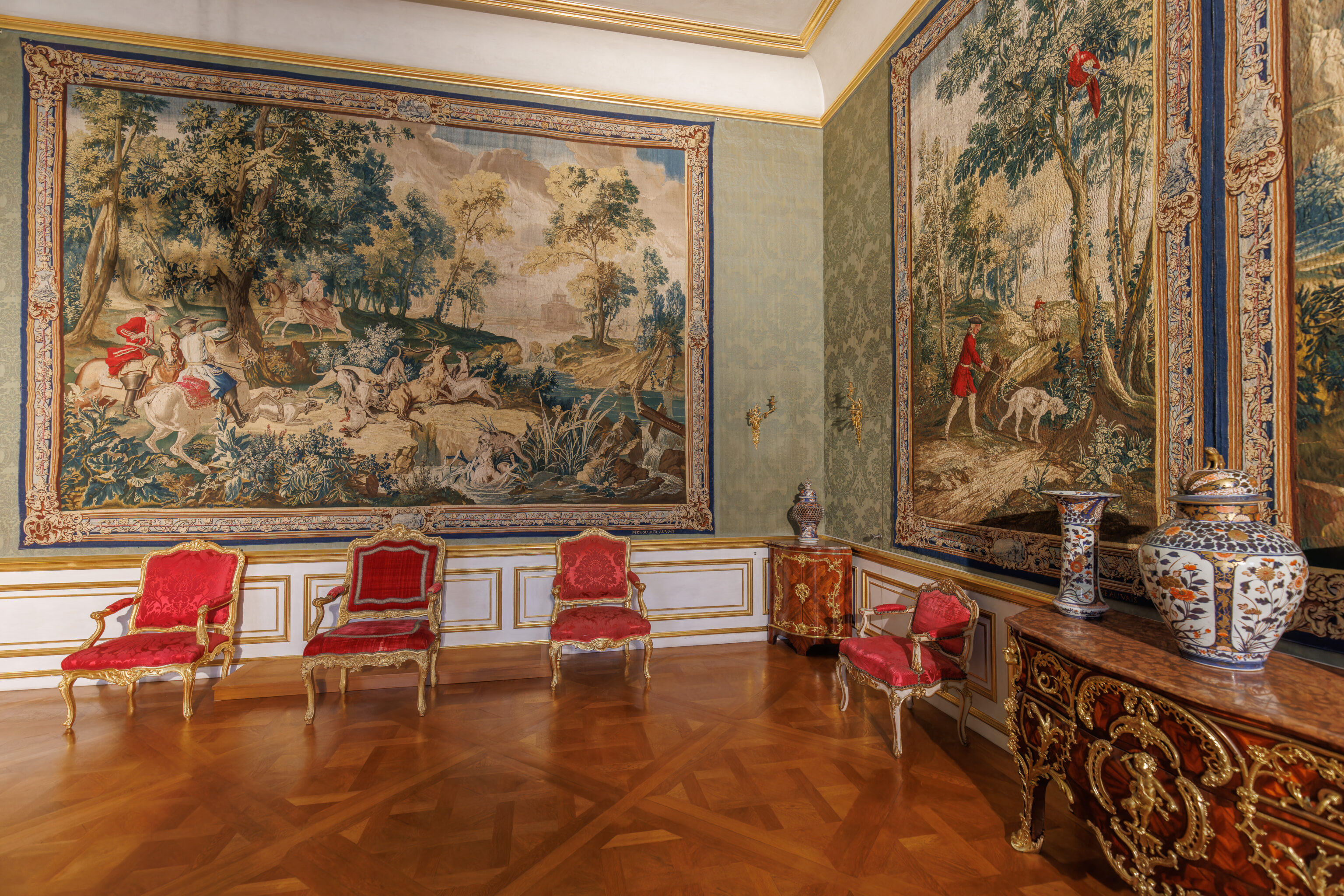
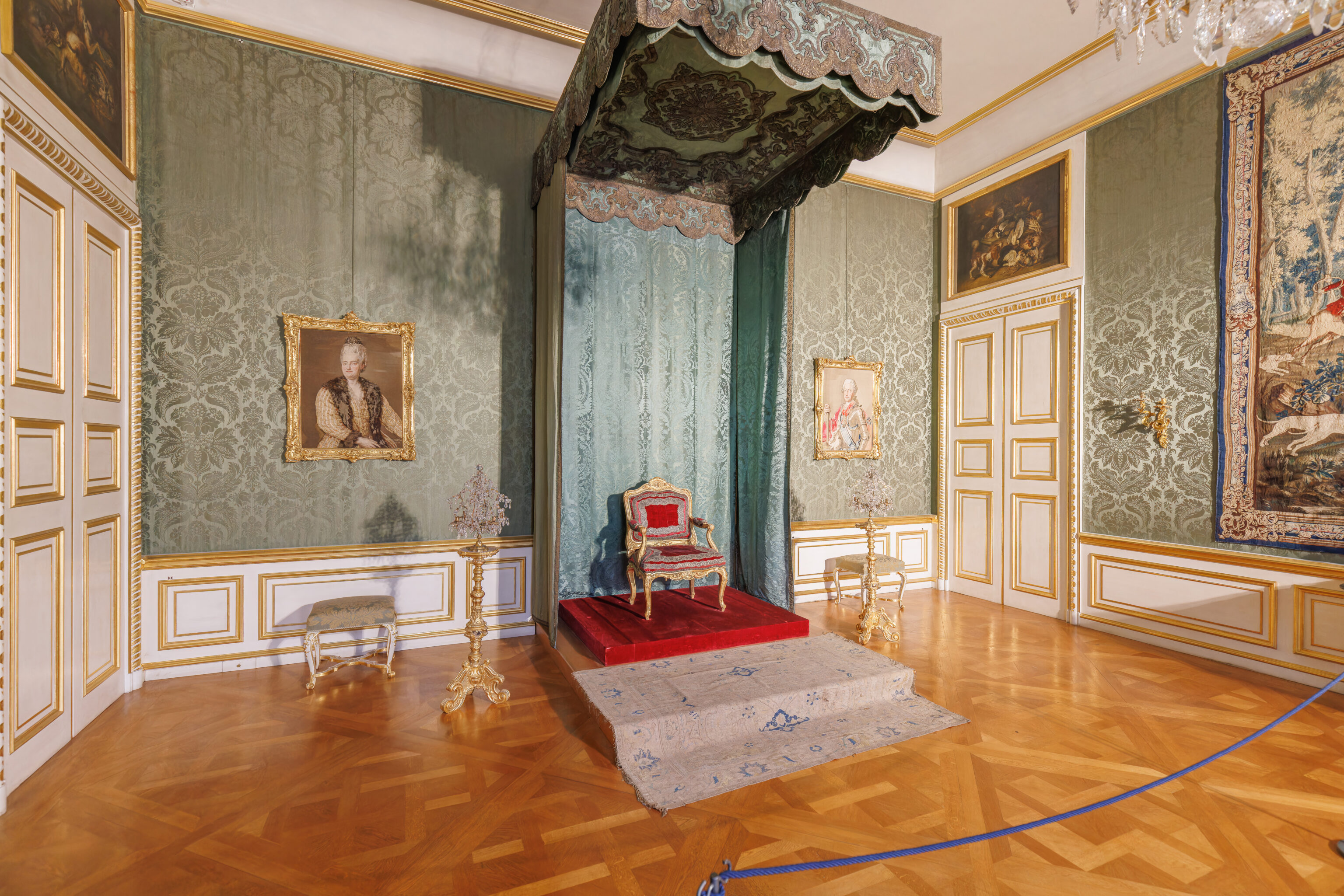
Rooms like this with a small throne were audience rooms for meeting with the King or Queen. The configuration of this room seems to have changed as there are older photographs of it online with two chairs instead of the one which is currently present.
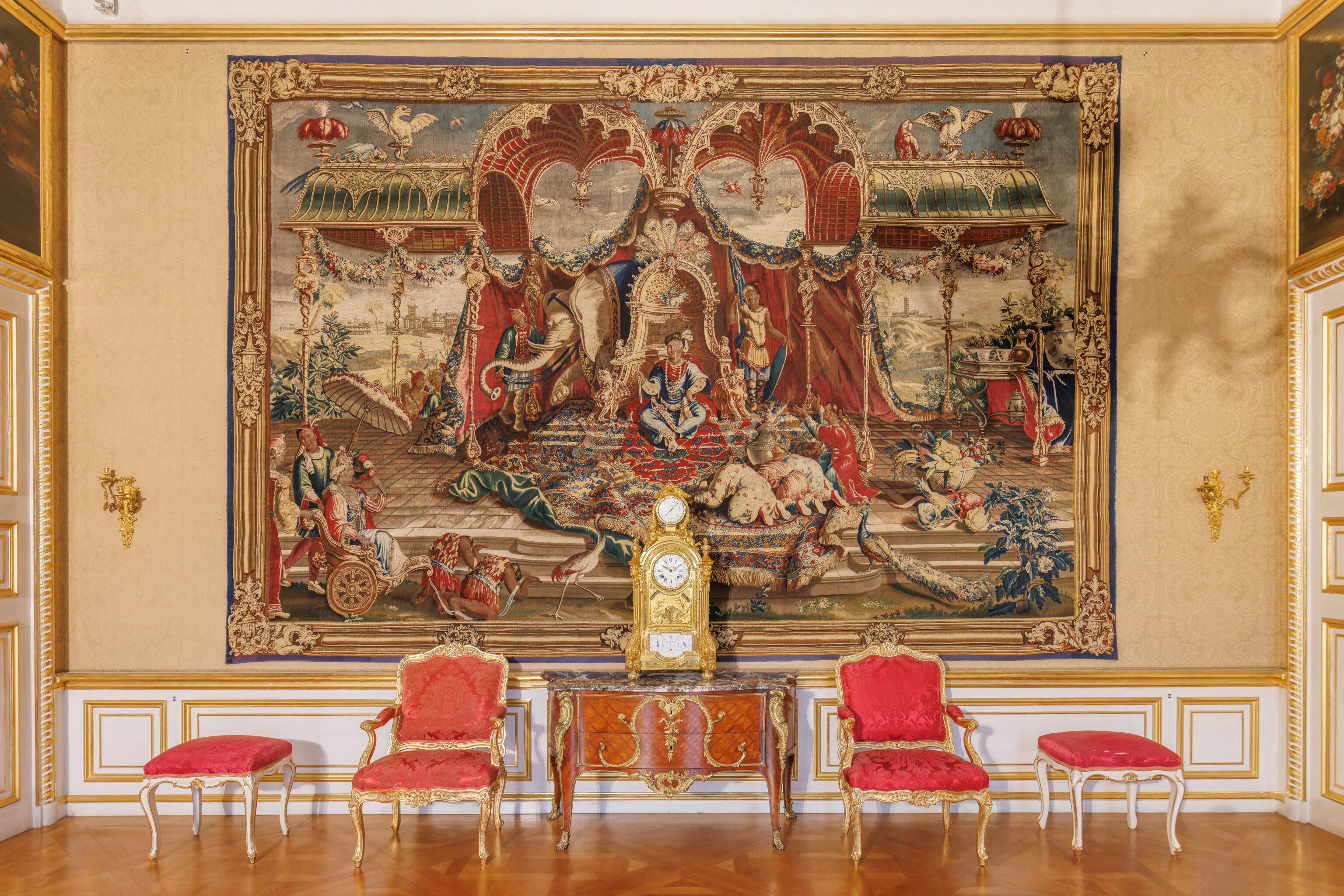
This tapestry is interesting as it appears to have been widely produced. English Heritage provides a brief description3:
Asian-inspired scenes were hugely popular in 17th- and 18th-century Europe. This magnificent tapestry, produced by the Beauvais manufactory in Paris at the turn of the 18th century, depicts a scene from the life of the Chinese Emperor, Kangxi
If you look closely, the eyes in this tapestry, and it turns out many tapestries, look quite creepy.
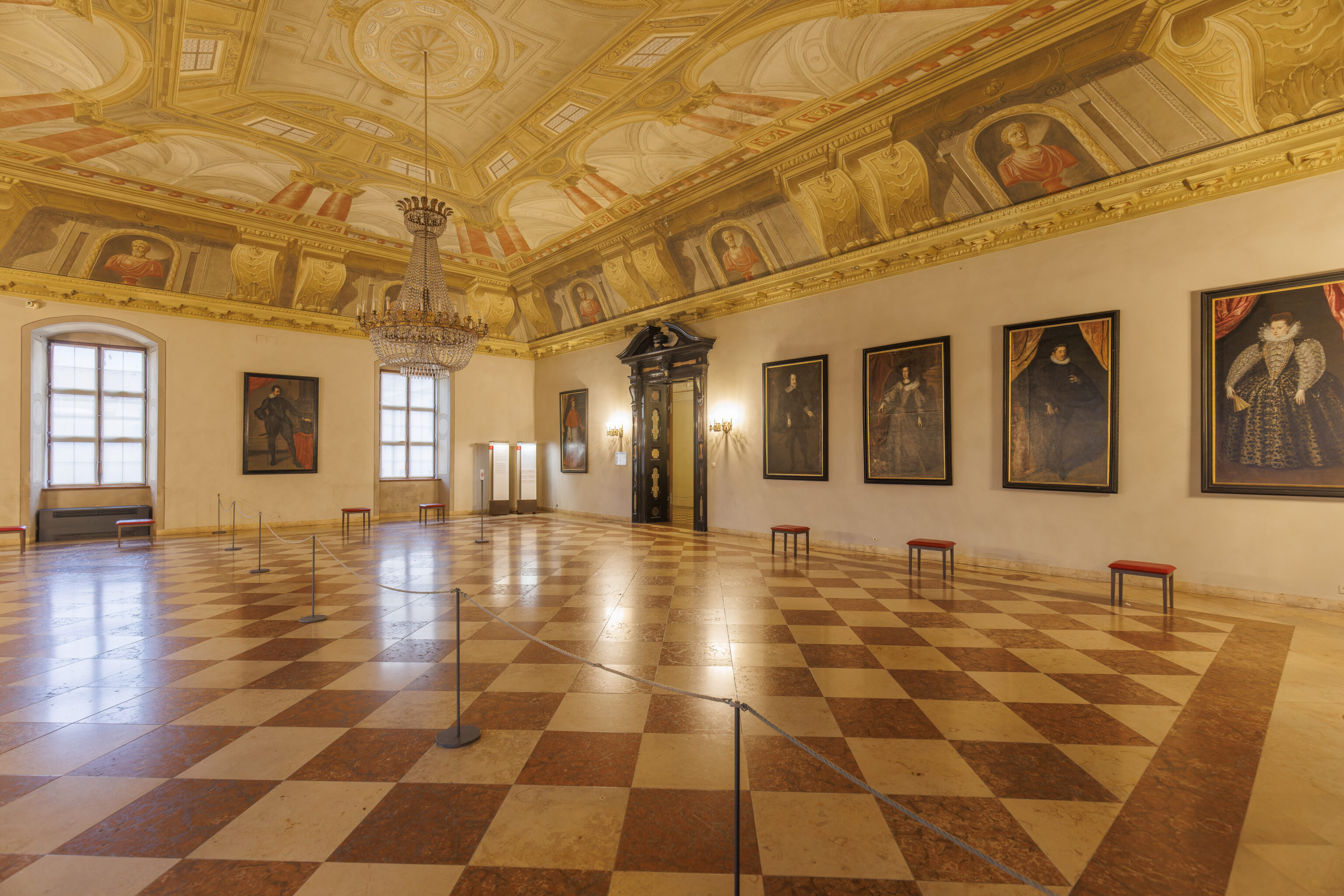
We’ve returned to the room with the 3D painted ceiling. There is a one way route through the palace, though it does backtrack and revisit certain rooms like this one.
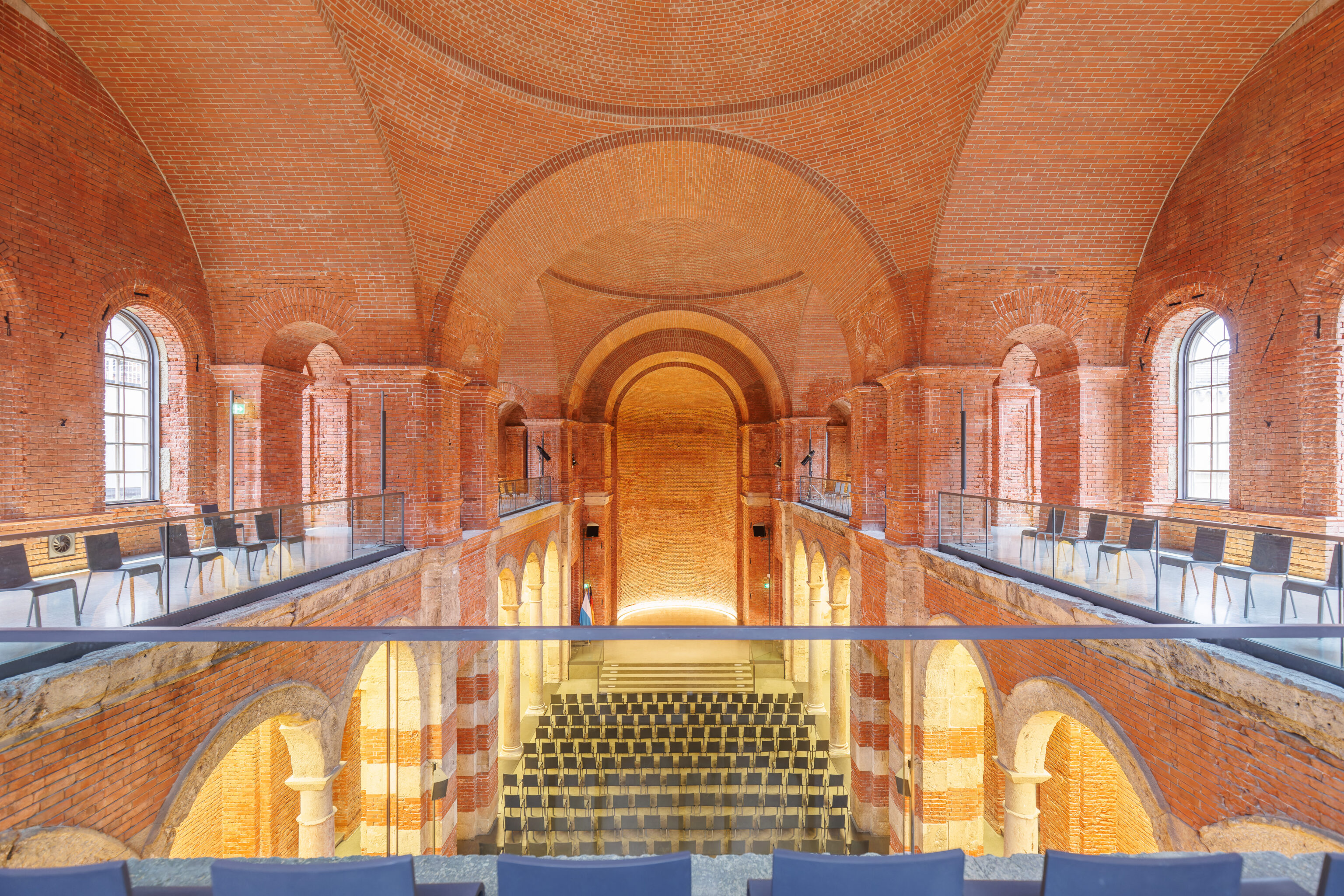
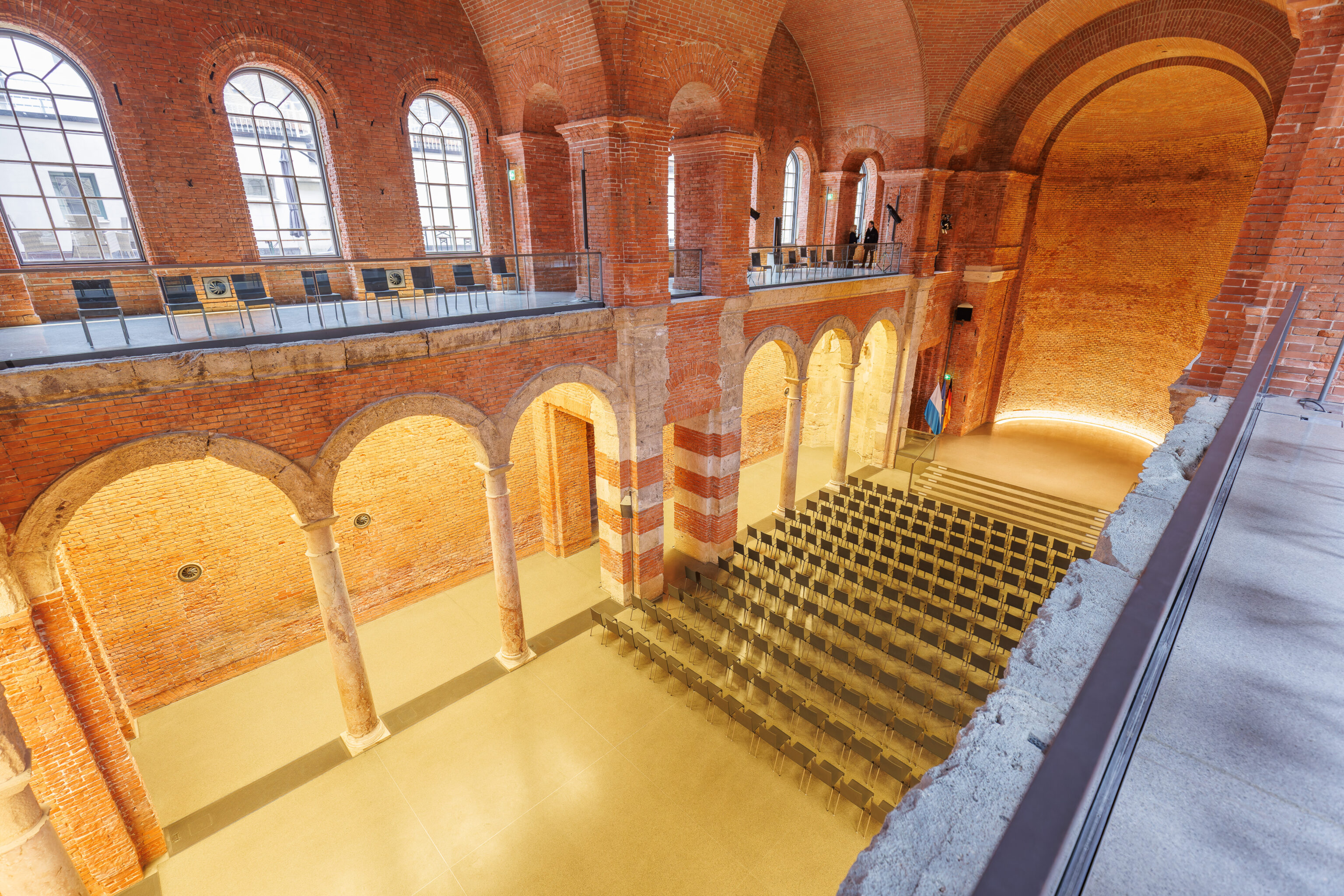
We walked into the Allerheiligen-Hofkirche (Court Church of All Saints). The original church here was destroyed during World War II and was only reconstructed about 20 years ago. Based on the descriptions provided, the original church was more ornate than the simple interior that we see here today.
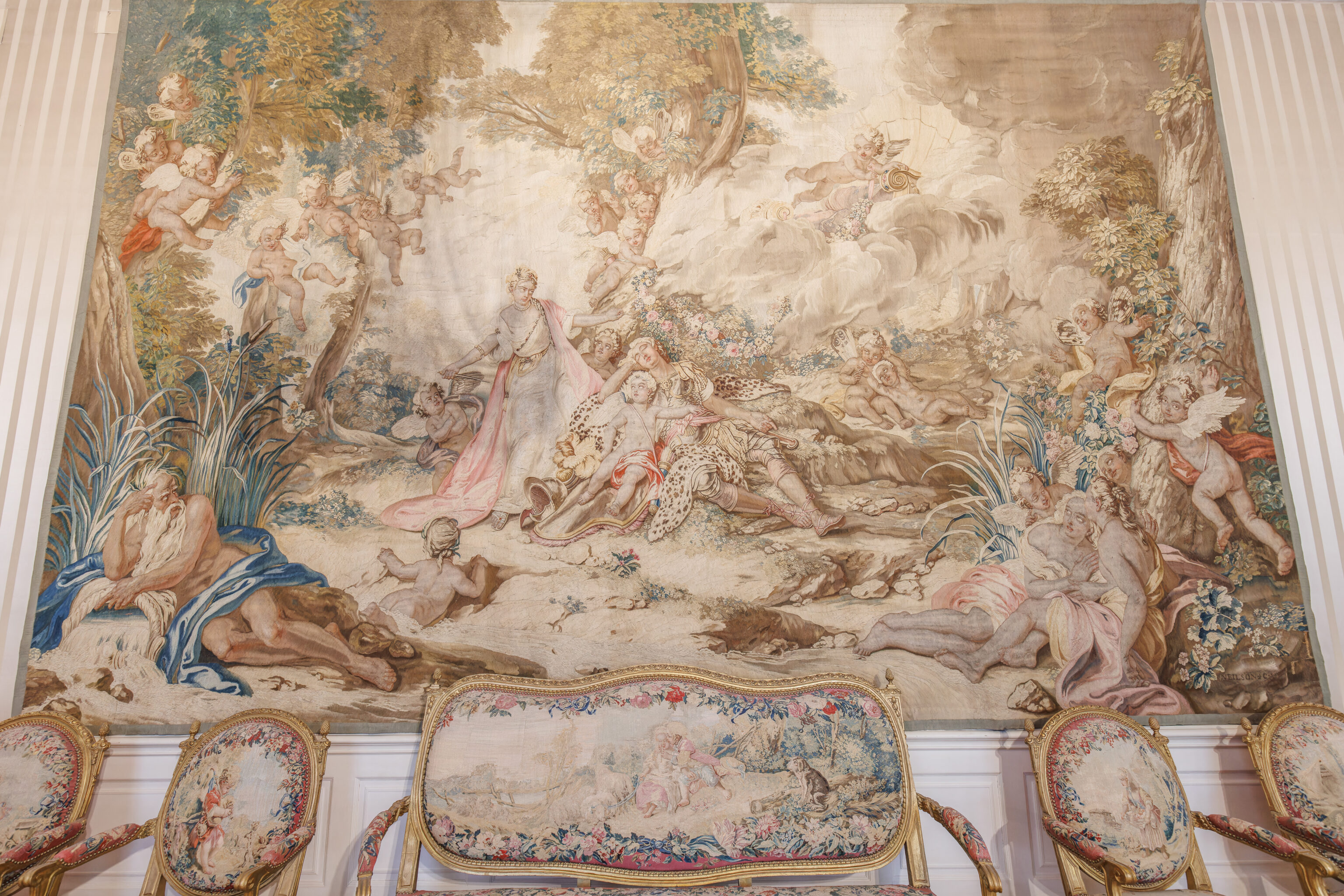
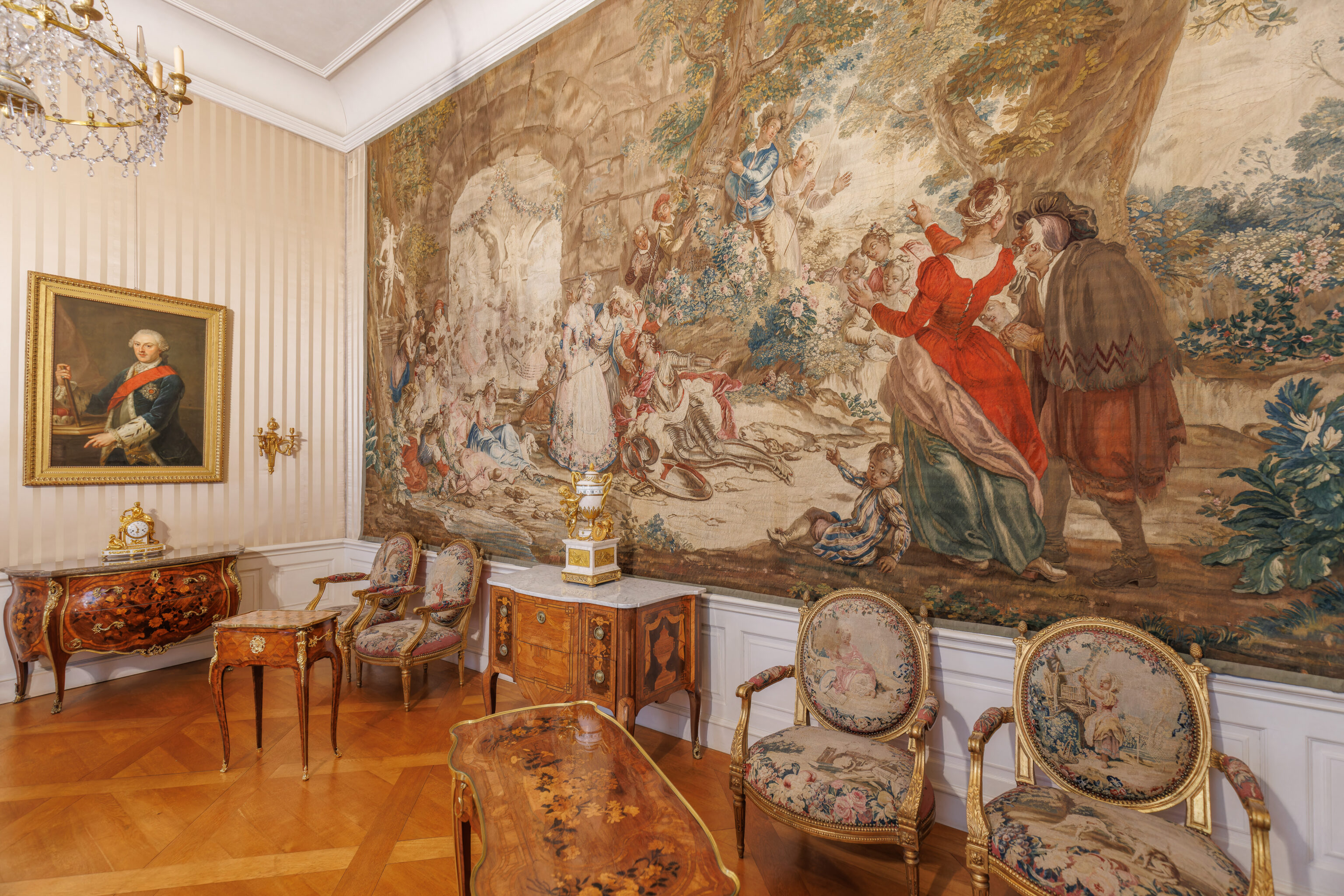
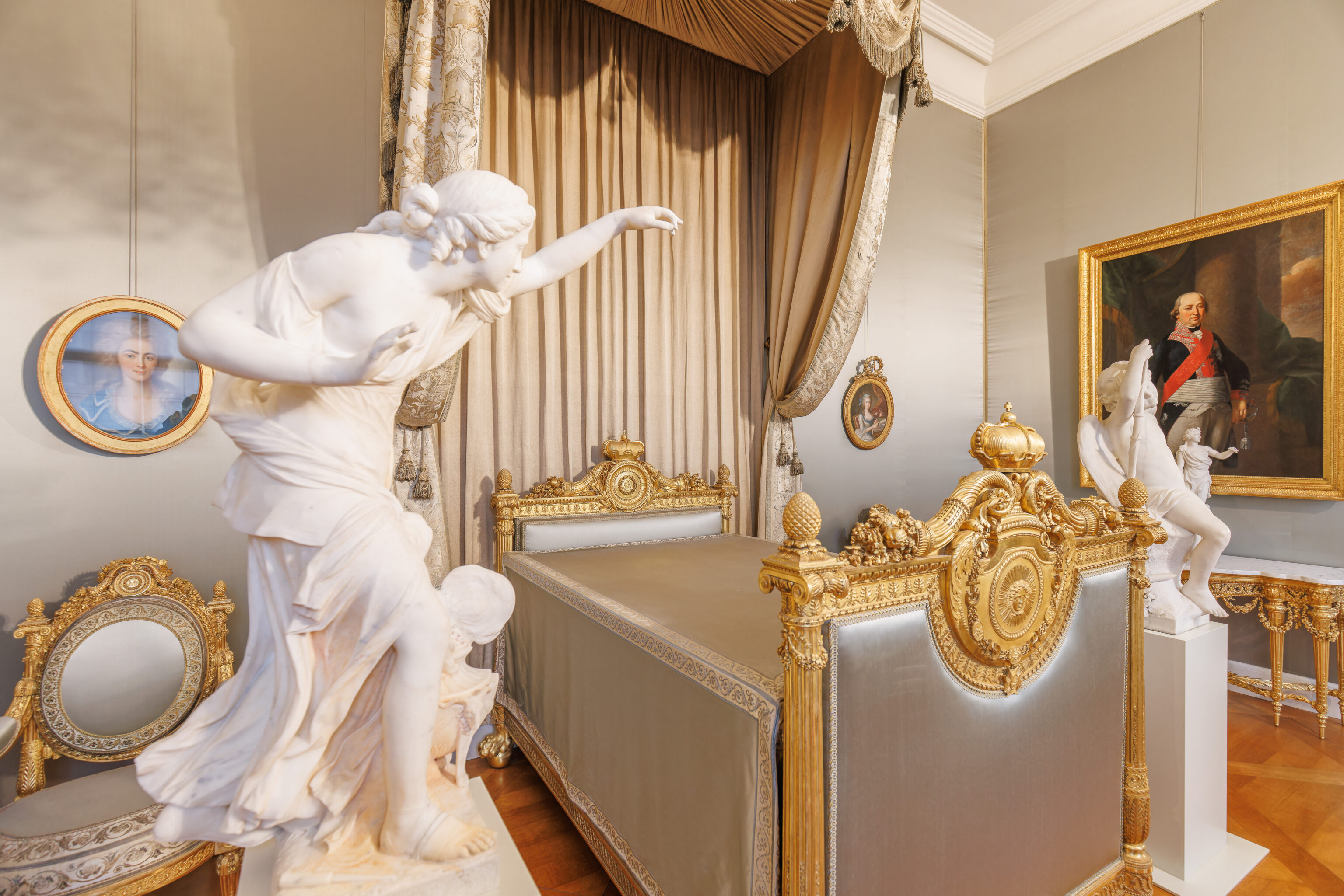
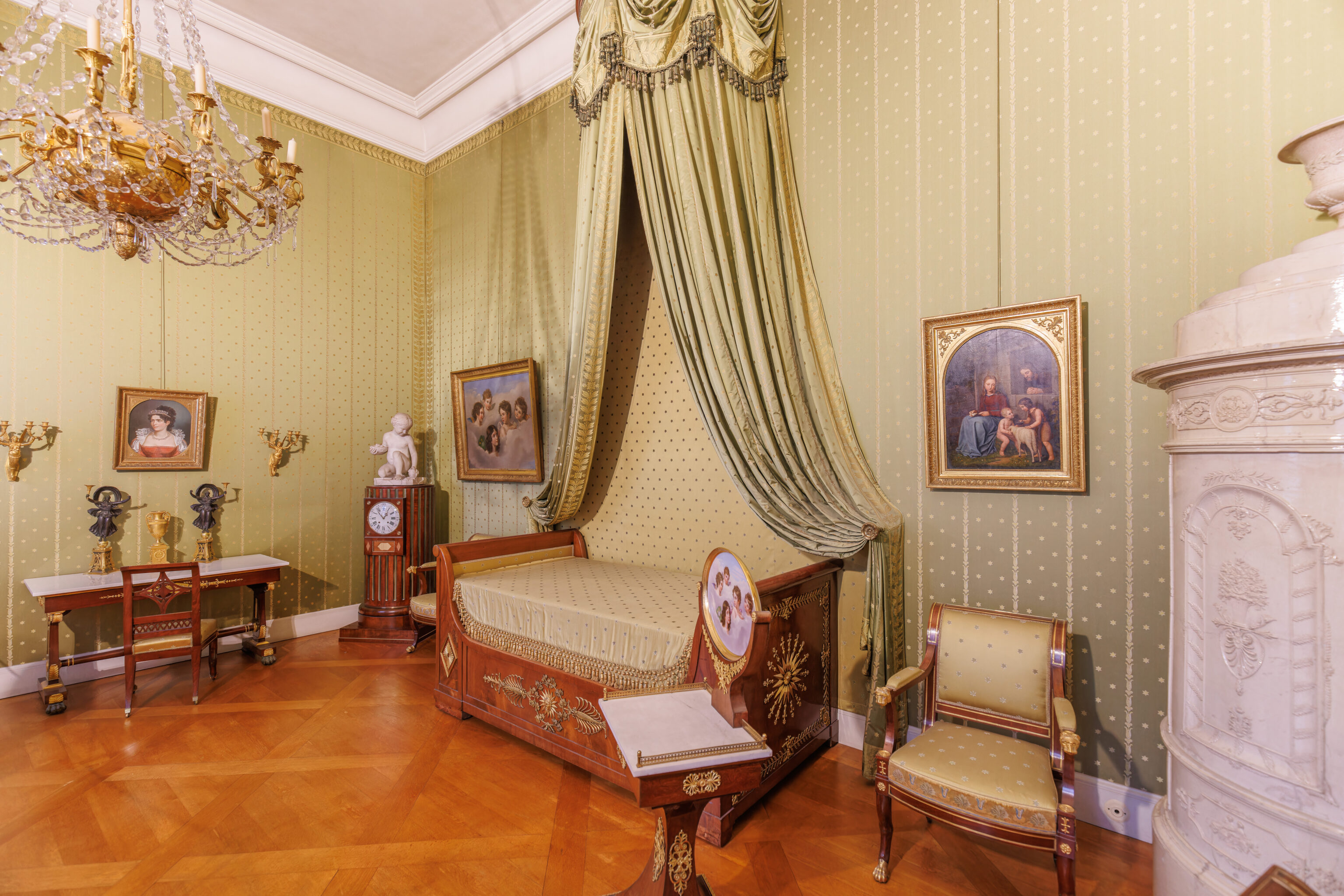
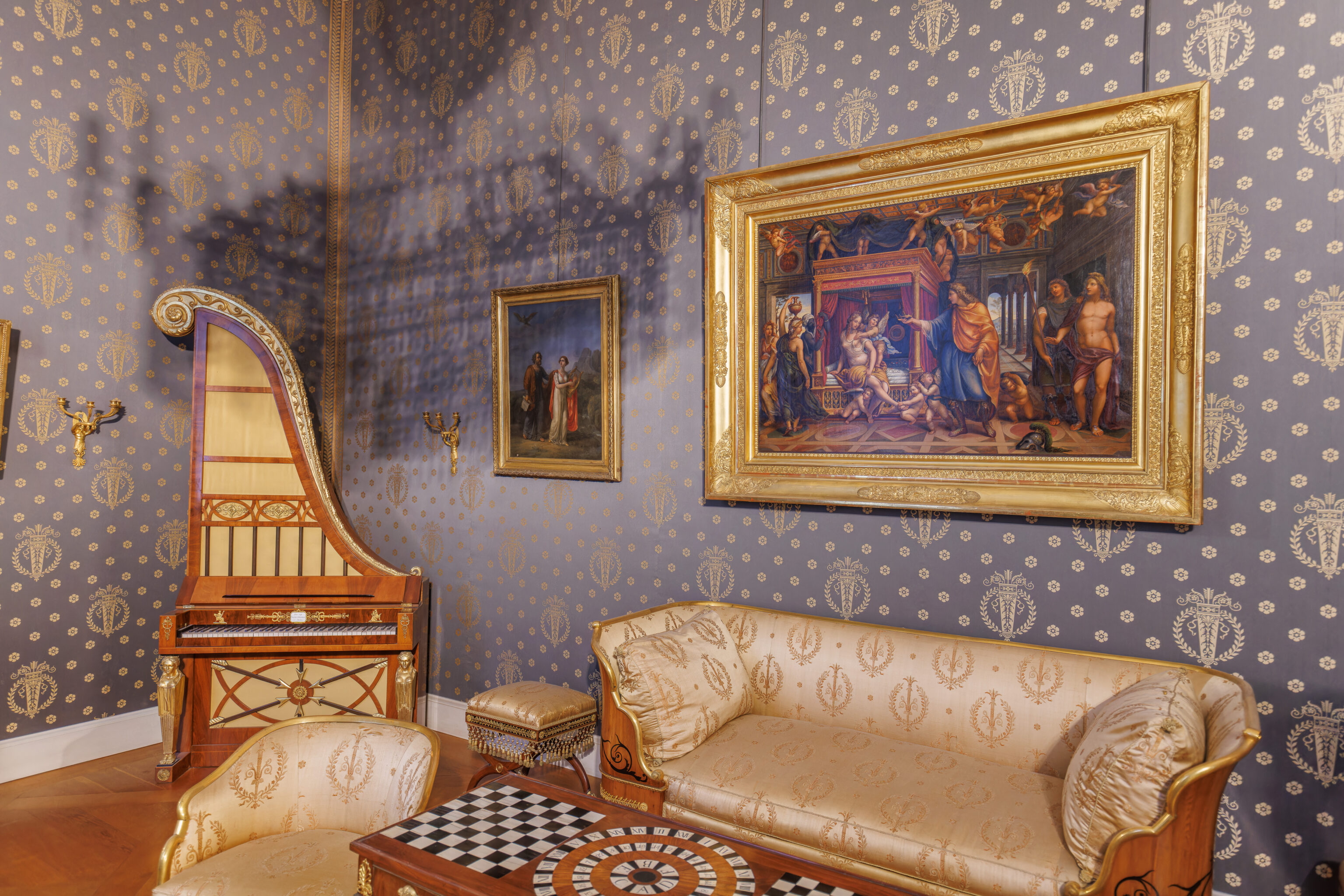
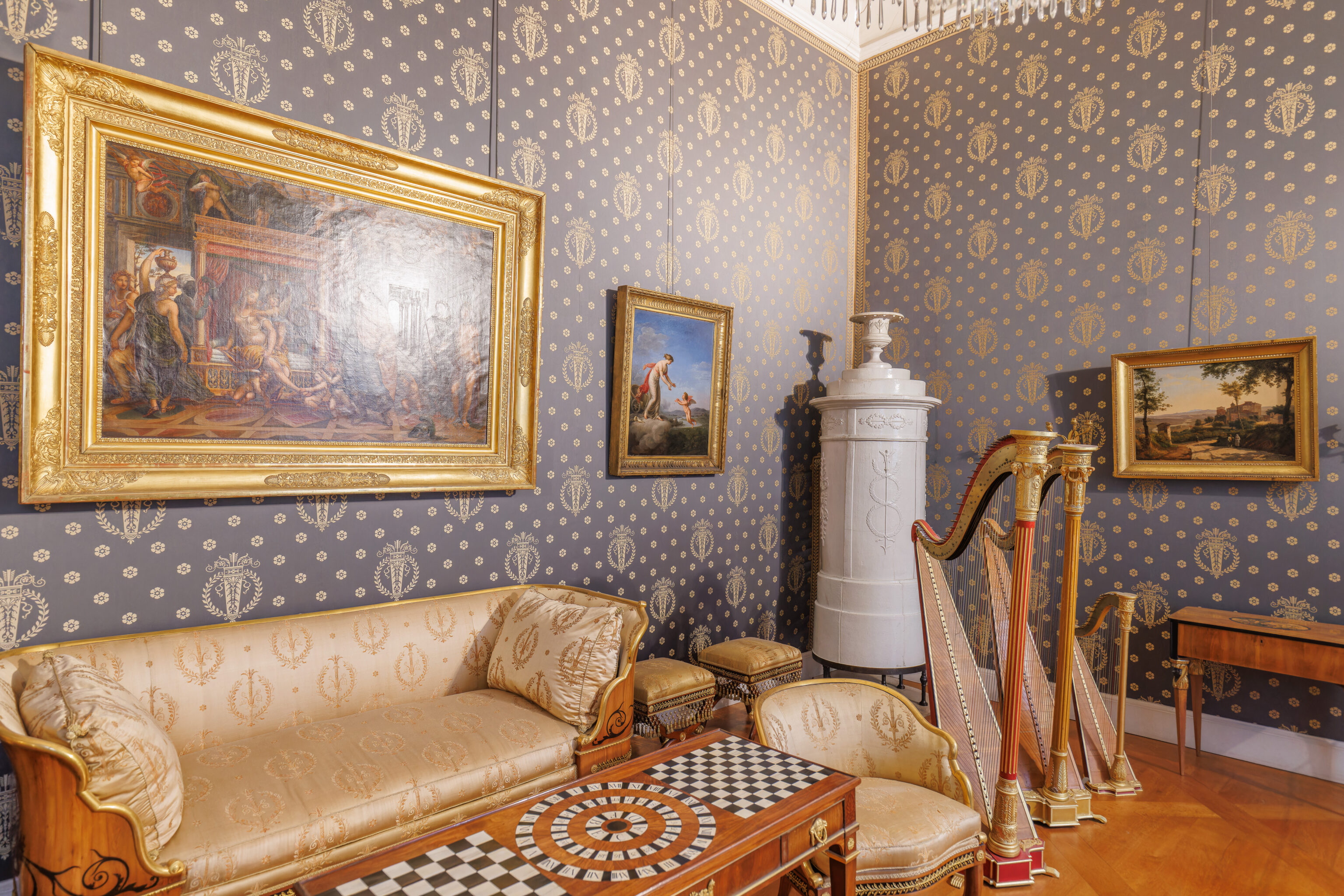
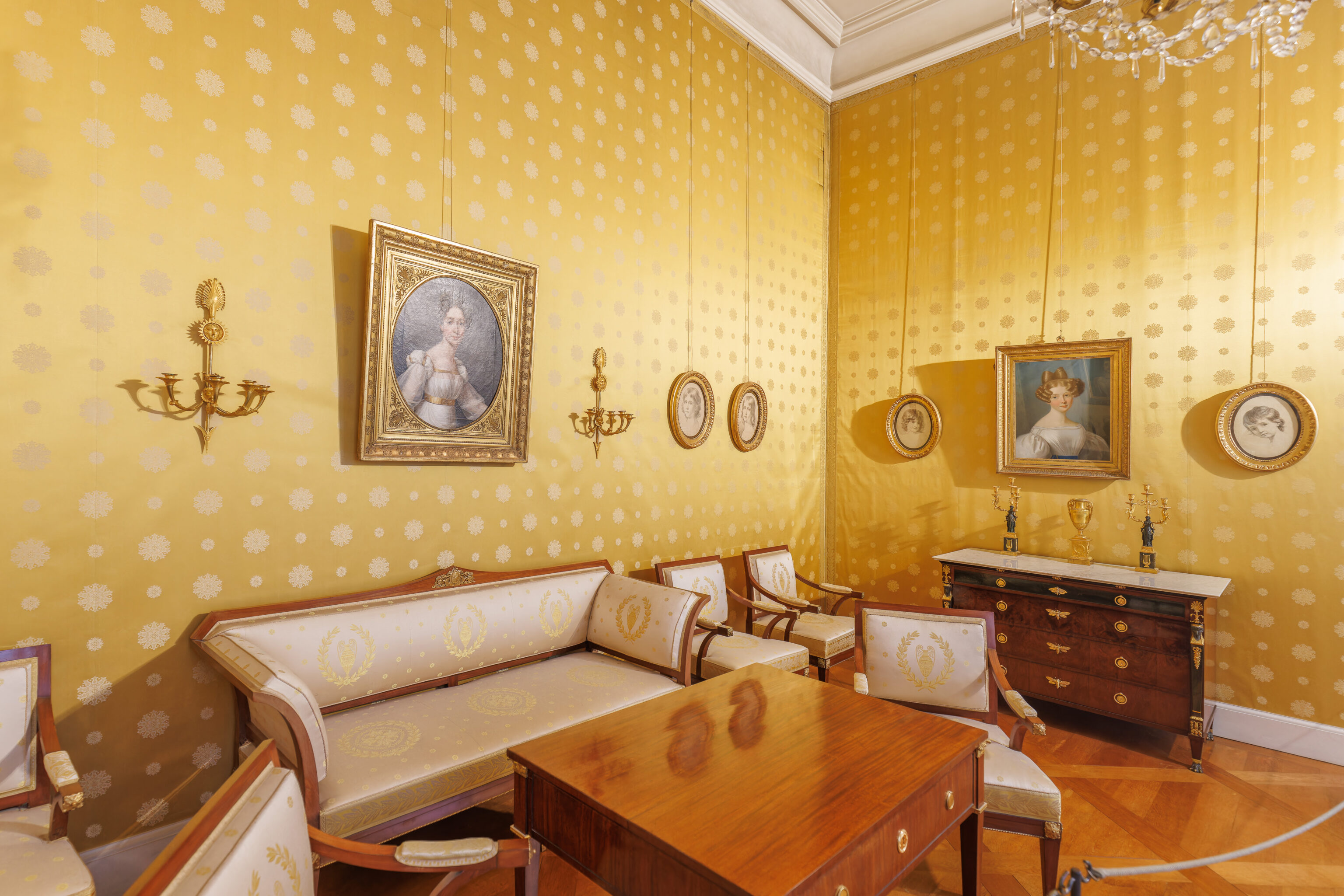
It turns out that there are a huge number of rooms to walk through! We took quick look at each one before moving on.
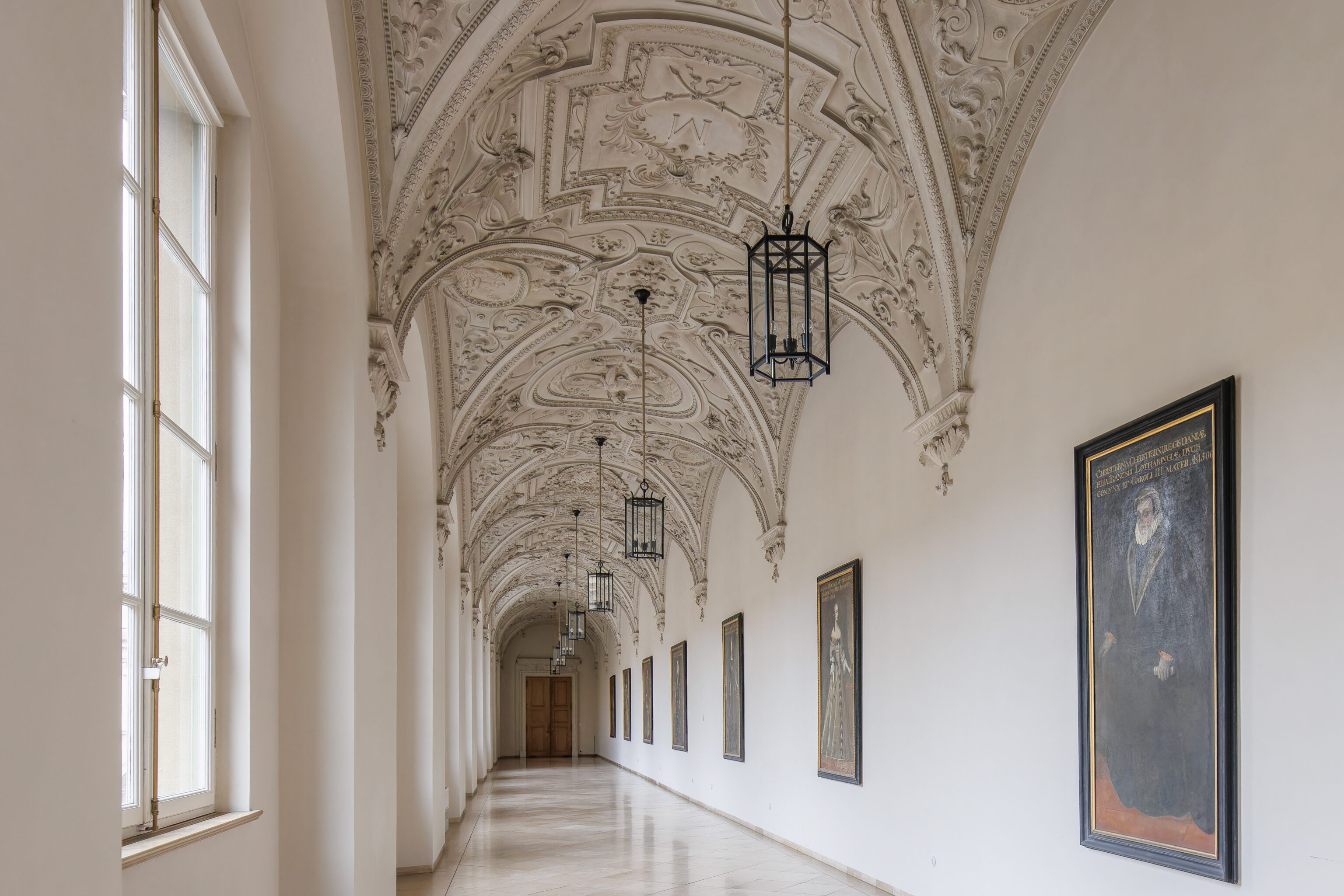
This hallway is the Charlotte Corridor. A sign explains:
This corridor originally led to the mediaeval moated castle (which has not survived), known as the 'Neuveste'. The stucco work has been restored to the style of the original, from around 1613-15 when the corridor was built. The name Charlotte Corridor comes from the adjacent 19th century Charlotte Chambers.
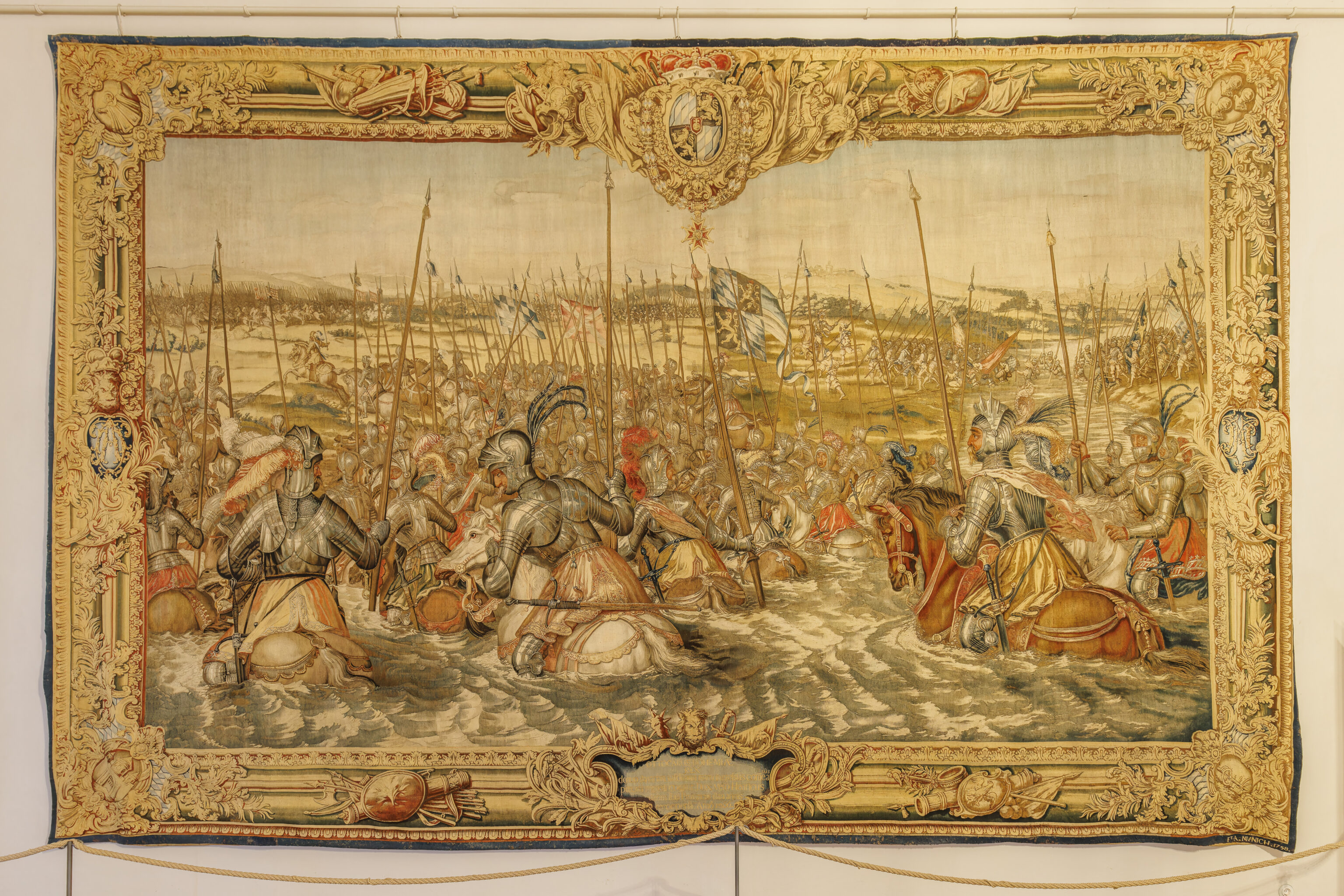
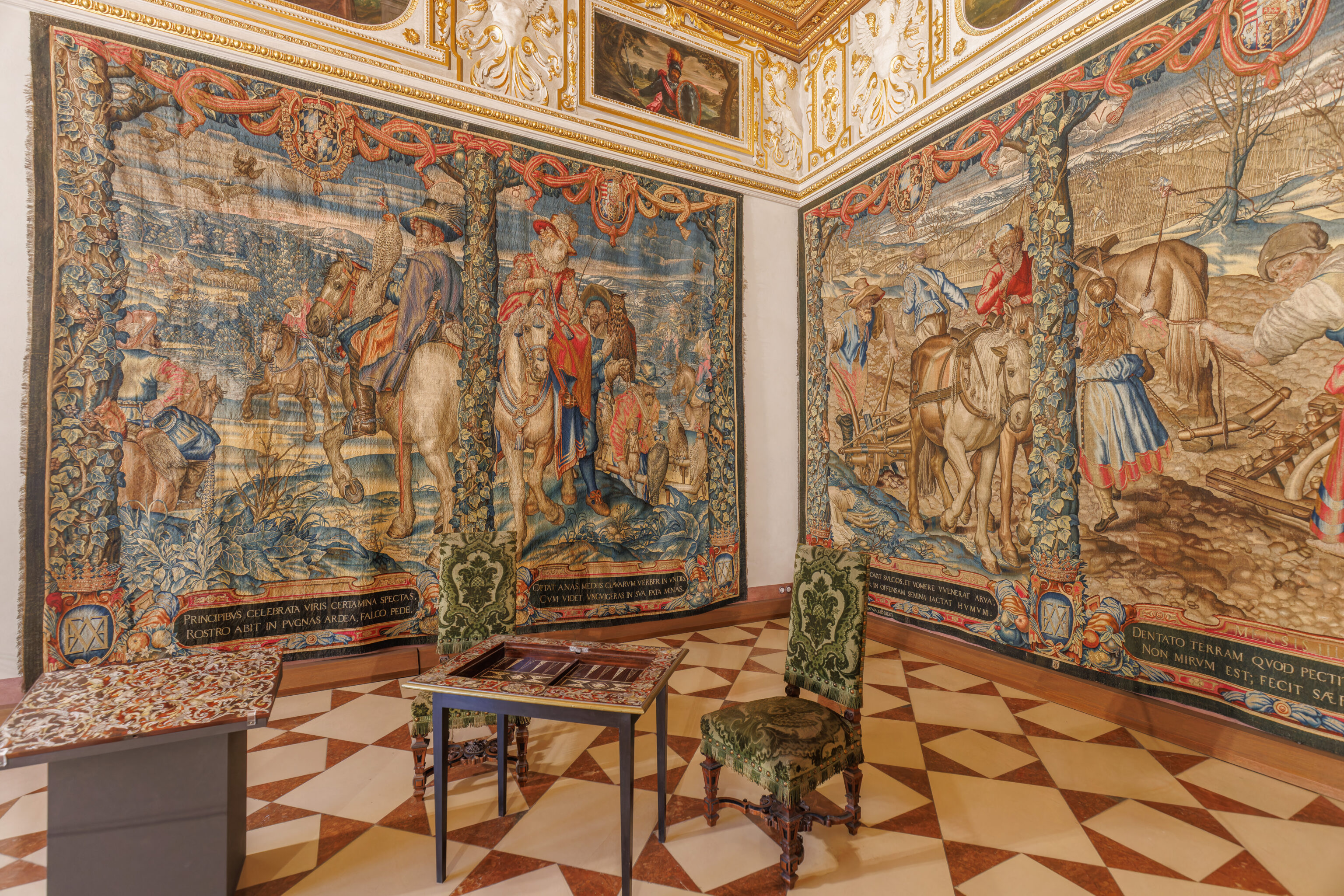
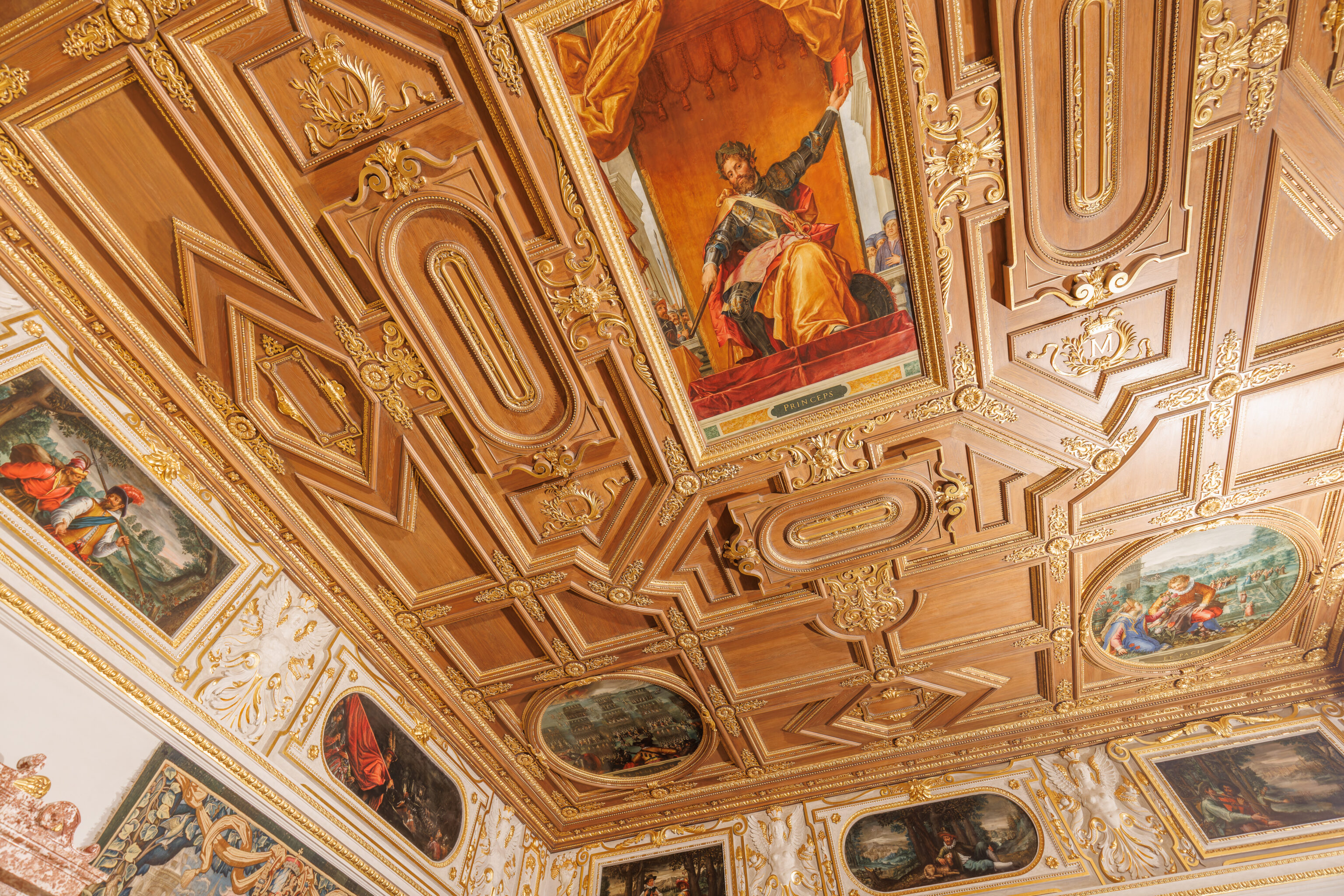
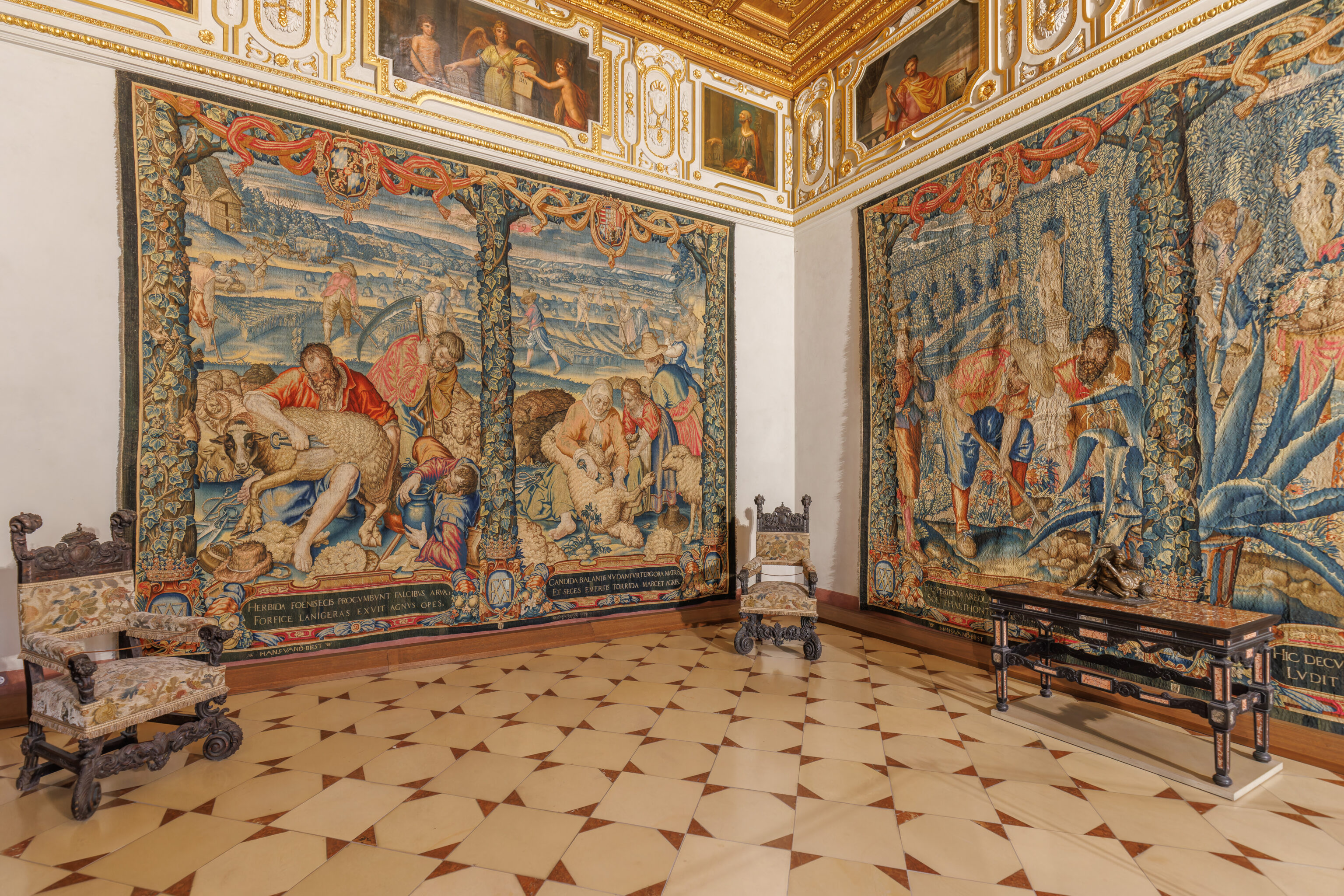
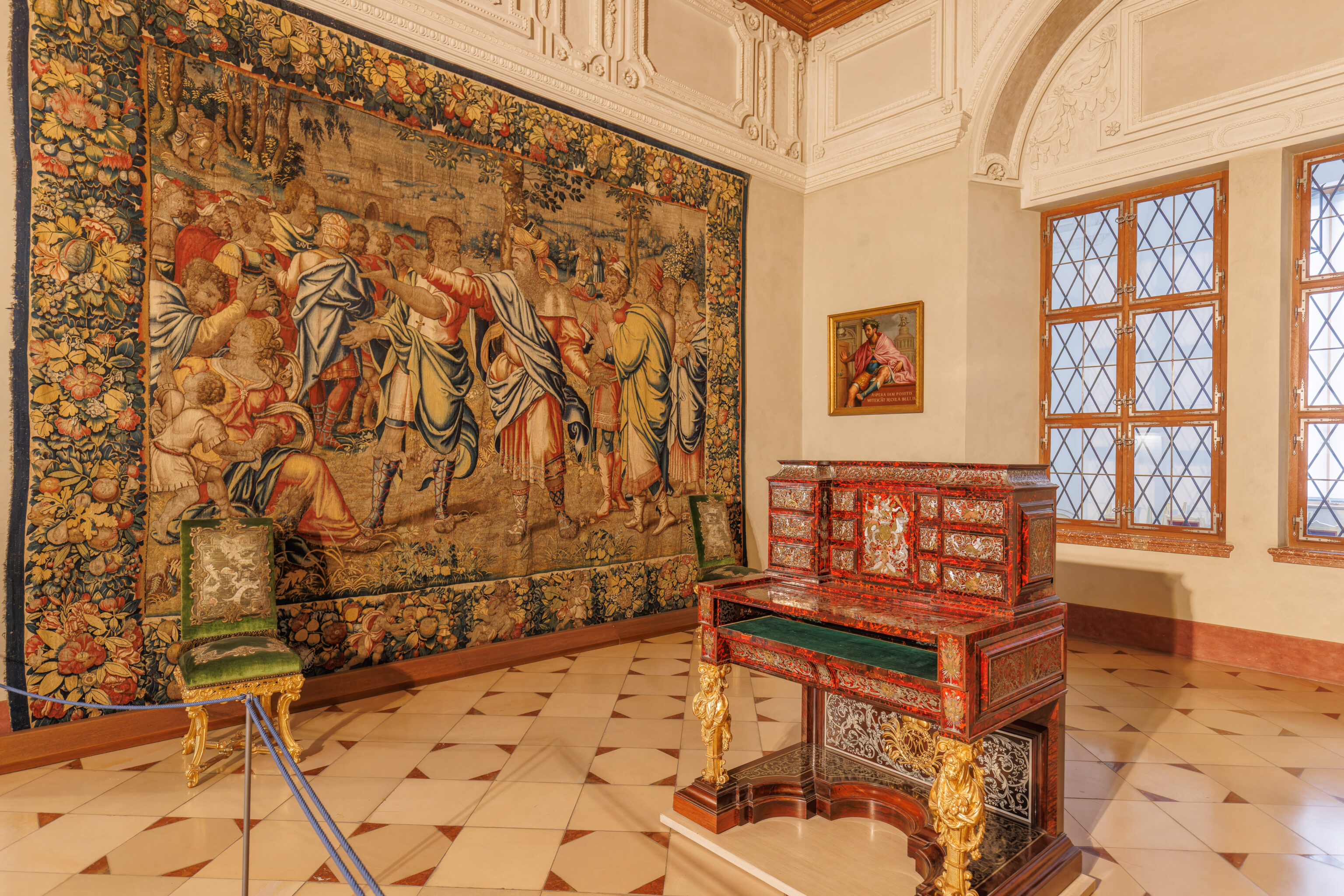
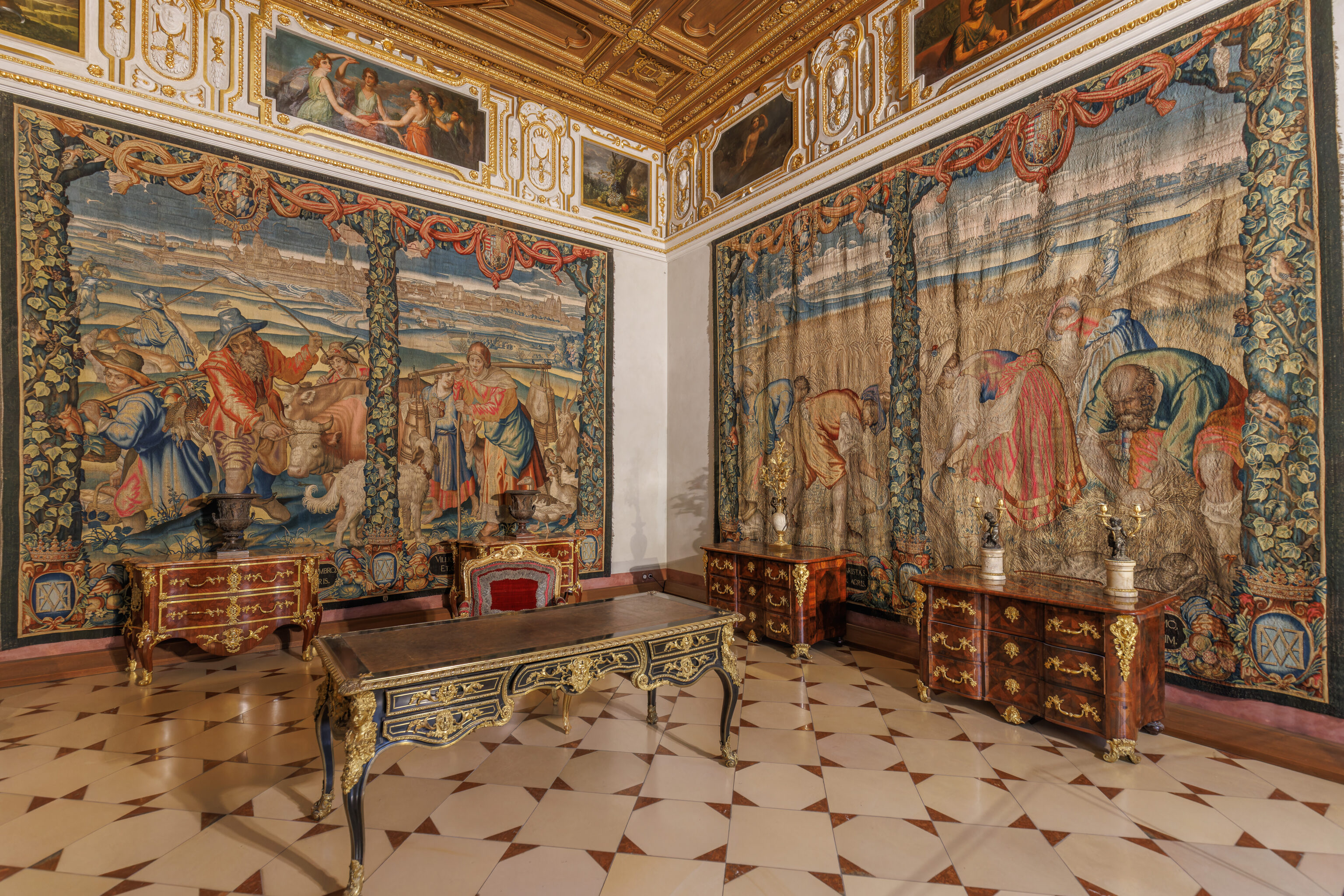
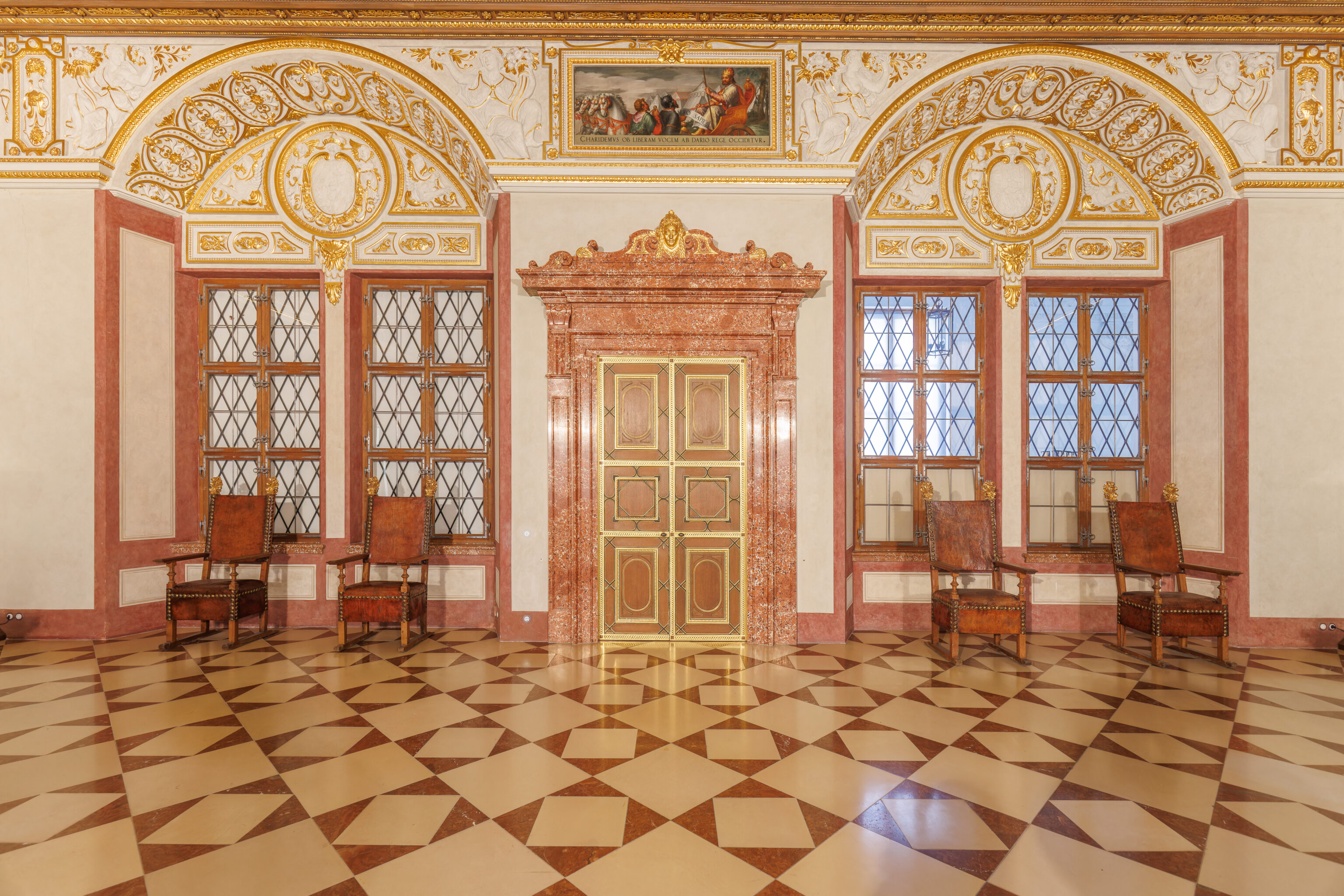
We next entered the Treves Rooms. This section had geometric patterns on the floor, tapestries on the wall, and decorated ceilings.
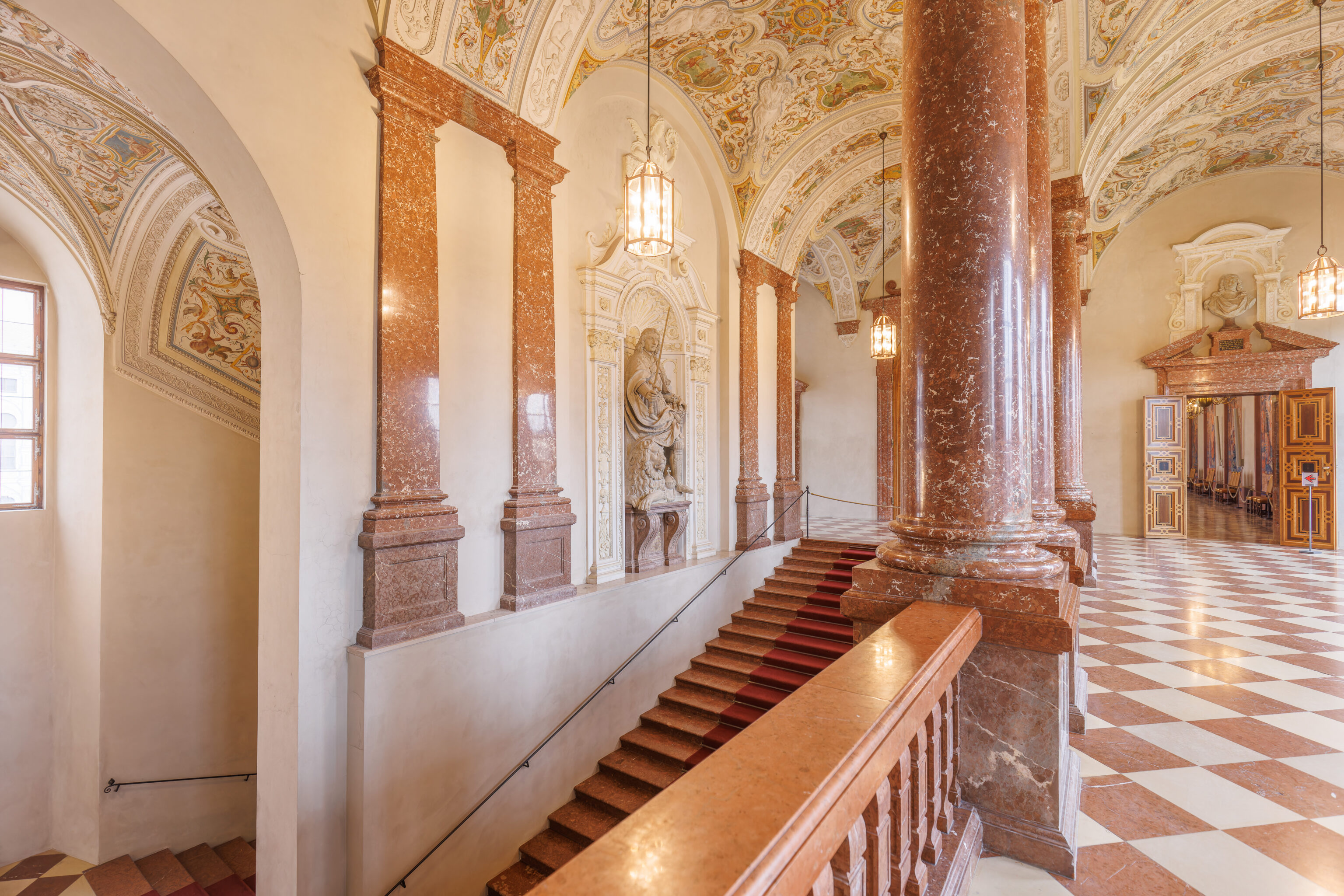
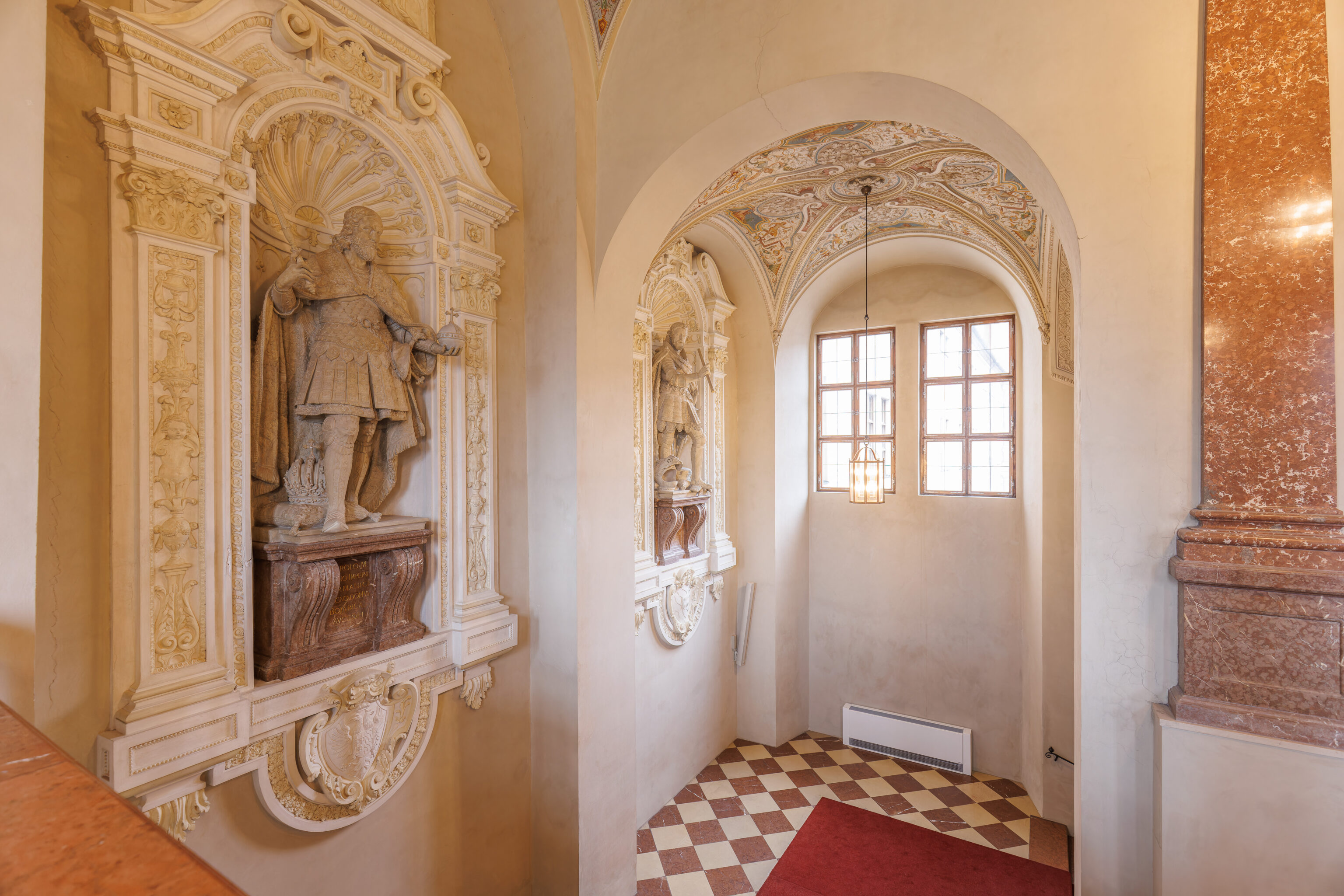
We walked by the Imperial Staircase which leads up from the floor below.
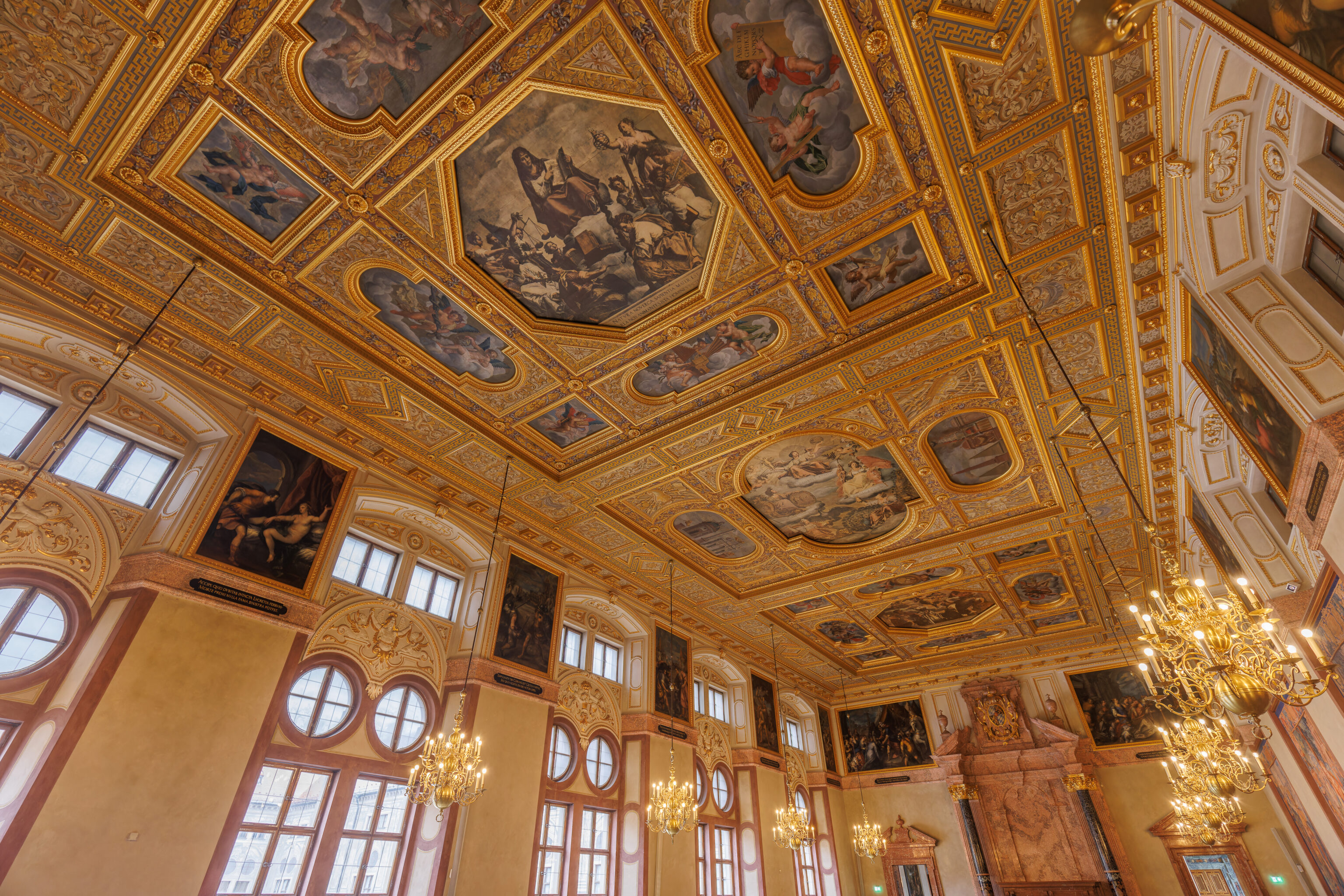
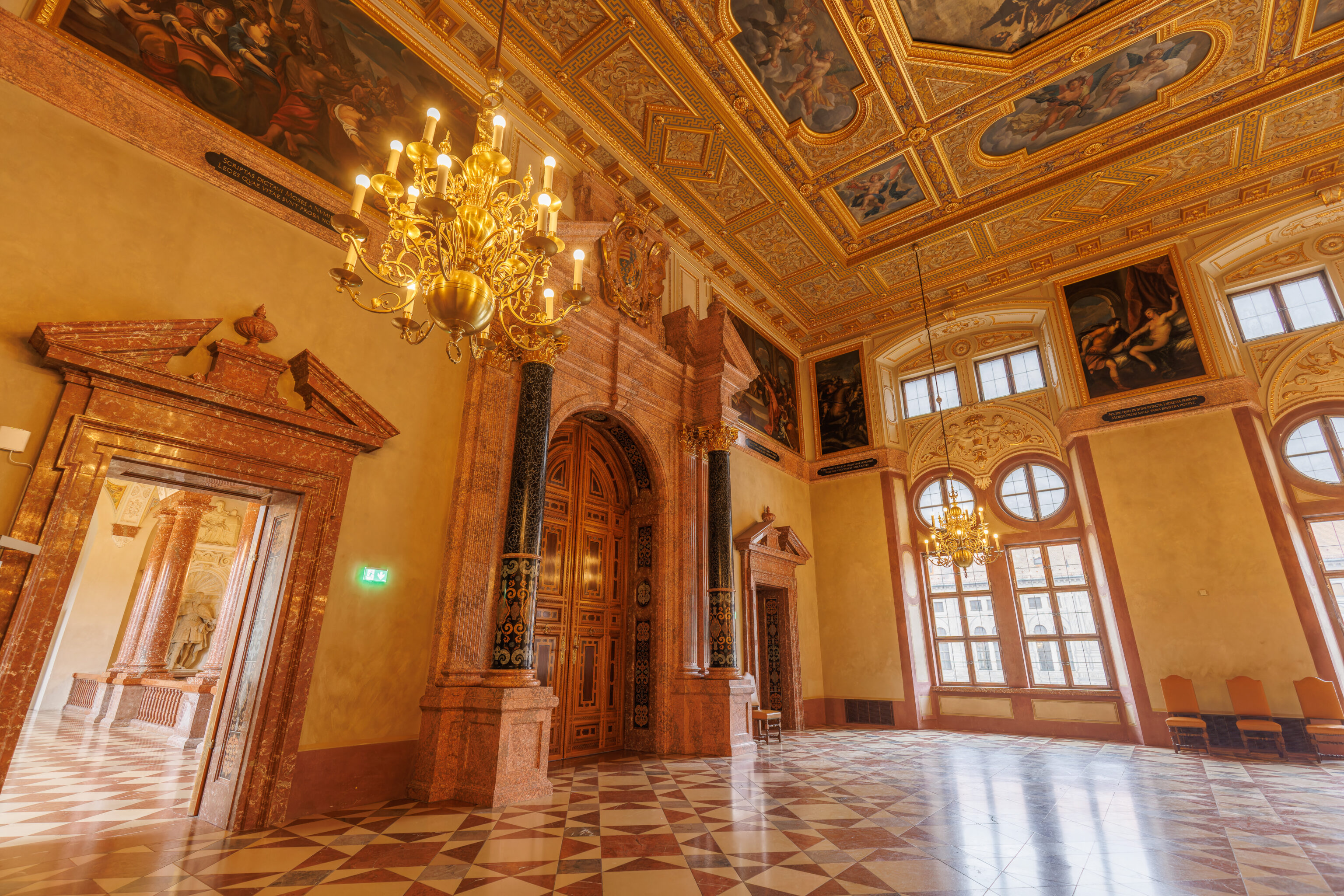
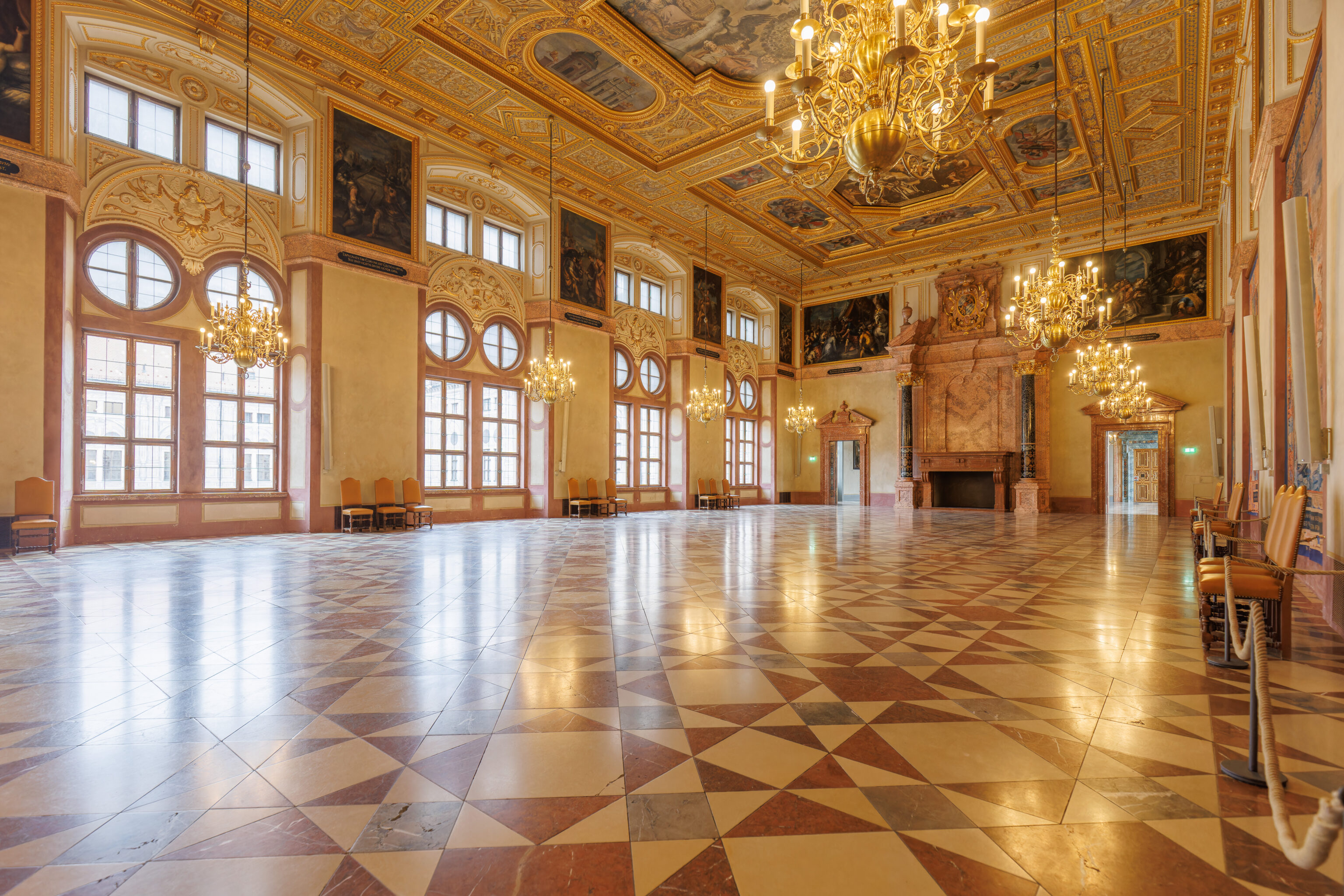
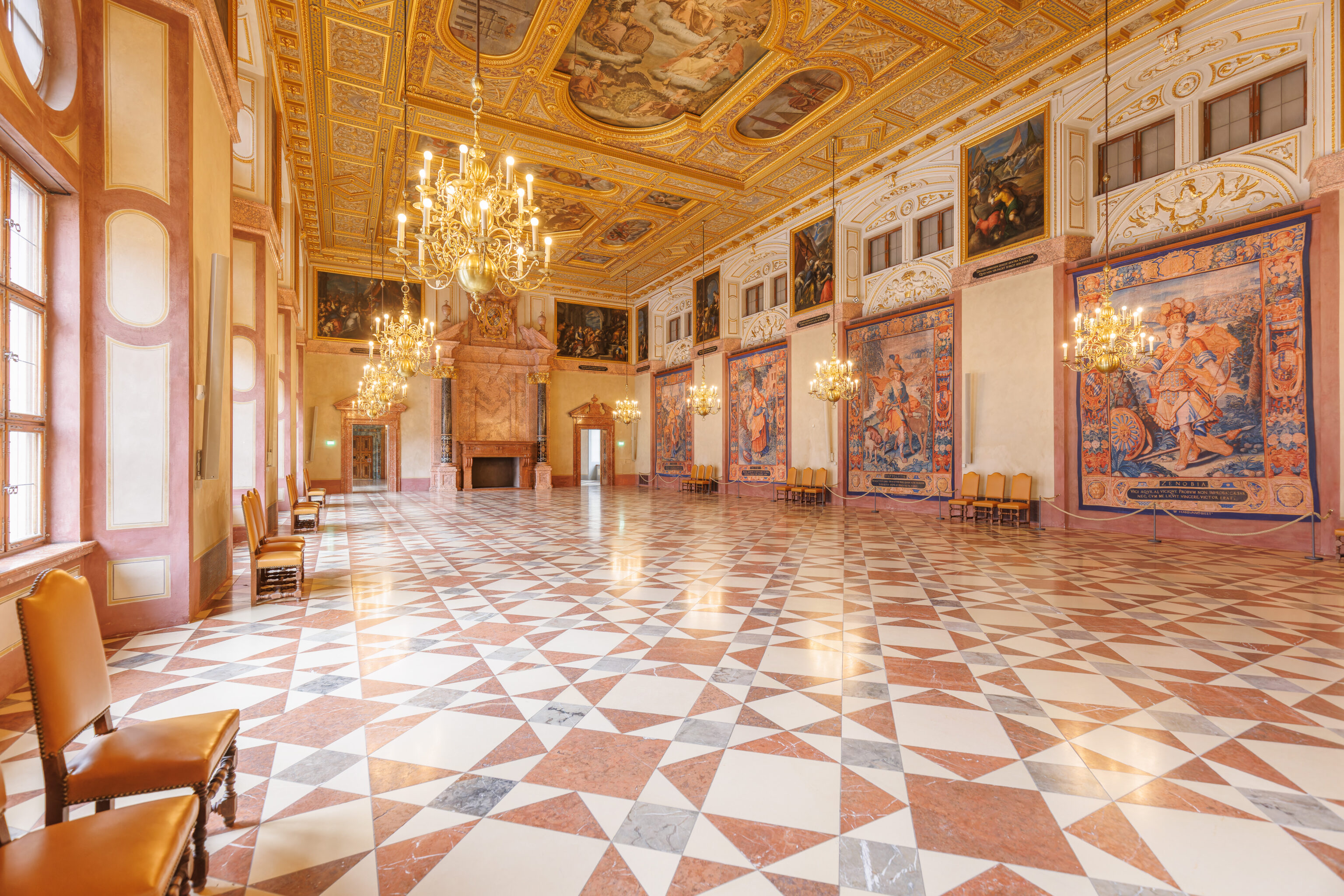
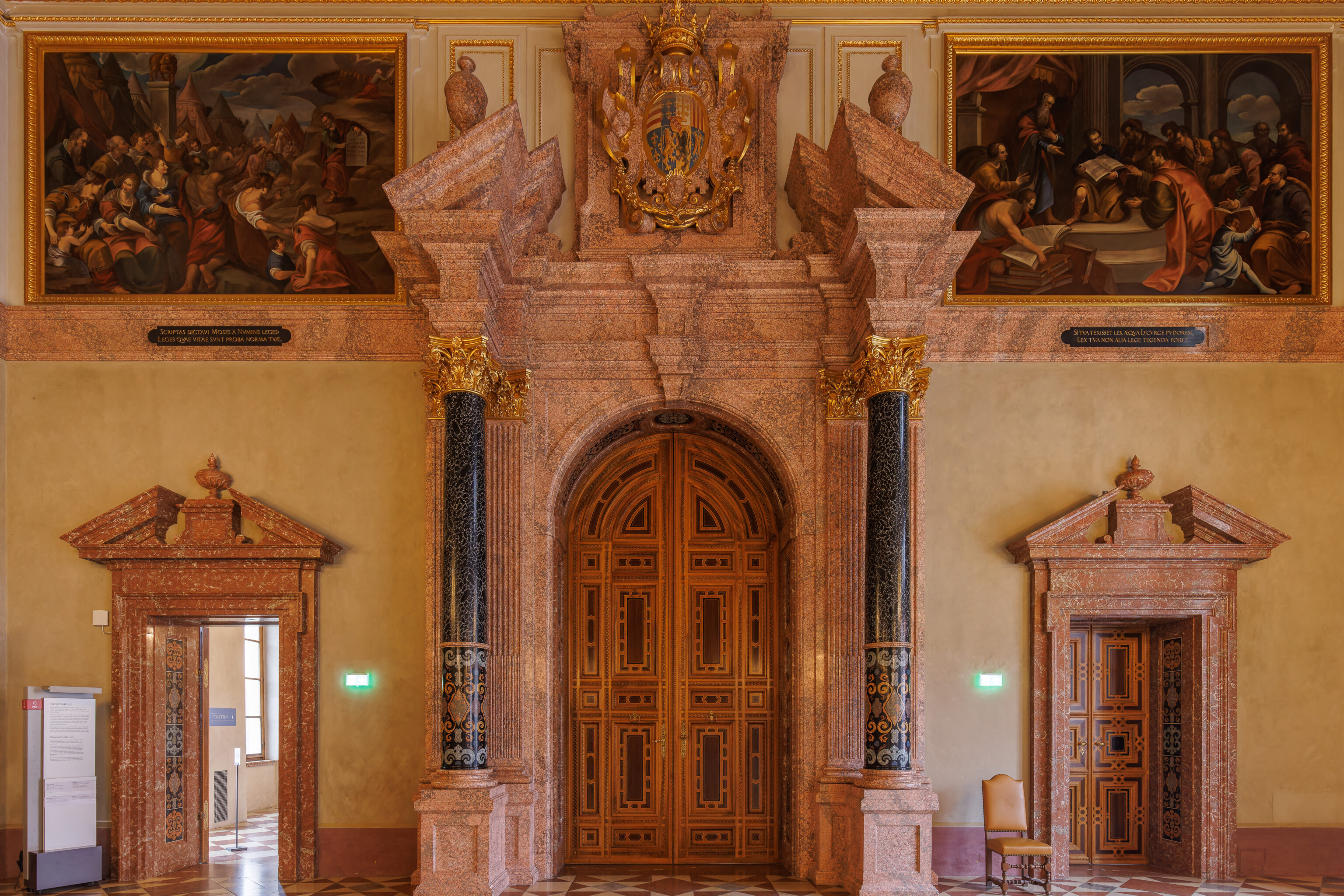
The next room we walked into was the Imperial Hall.
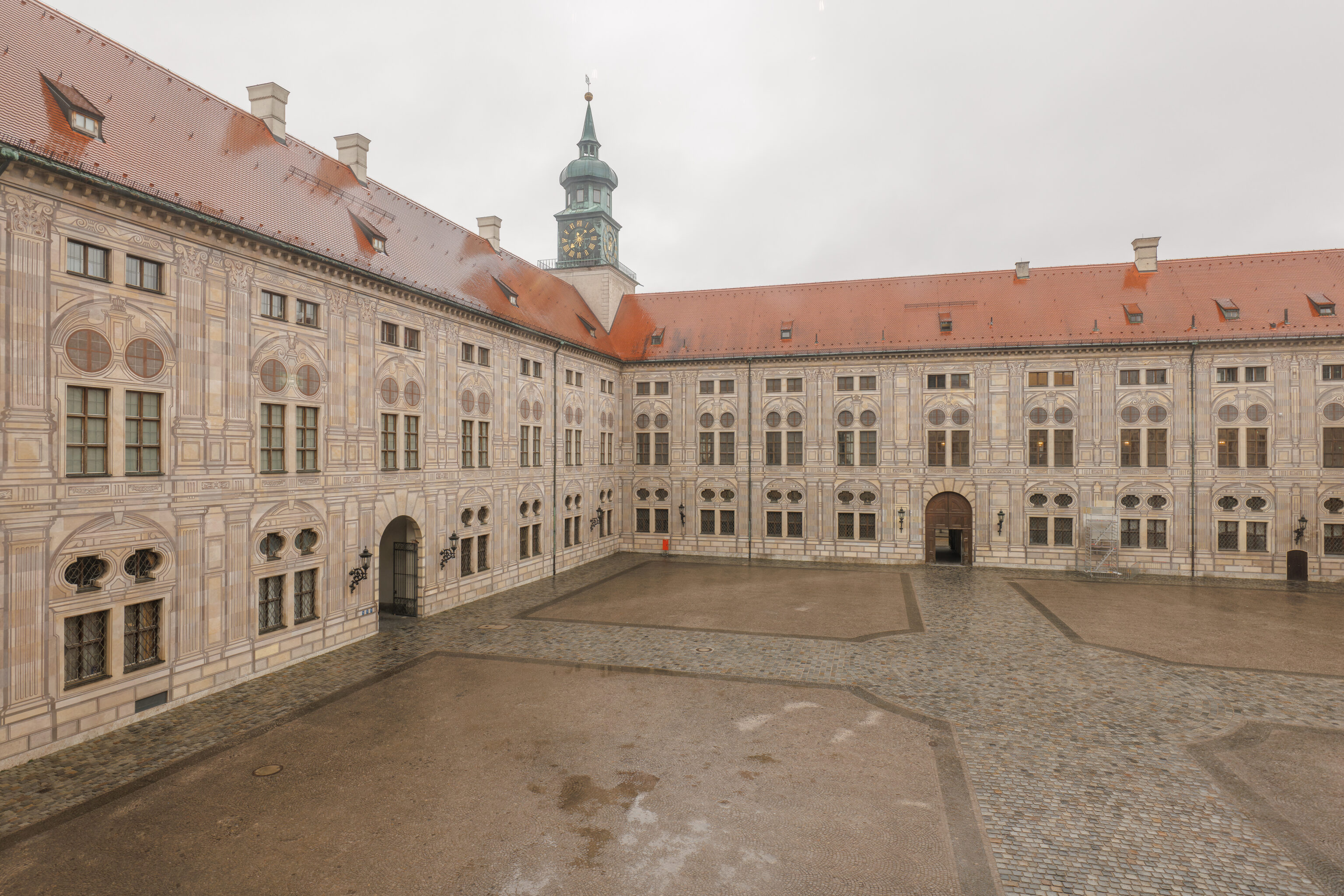
It overlooks this courtyard. Interestingly, the exterior detailing on the walls are not real, they are painted on!
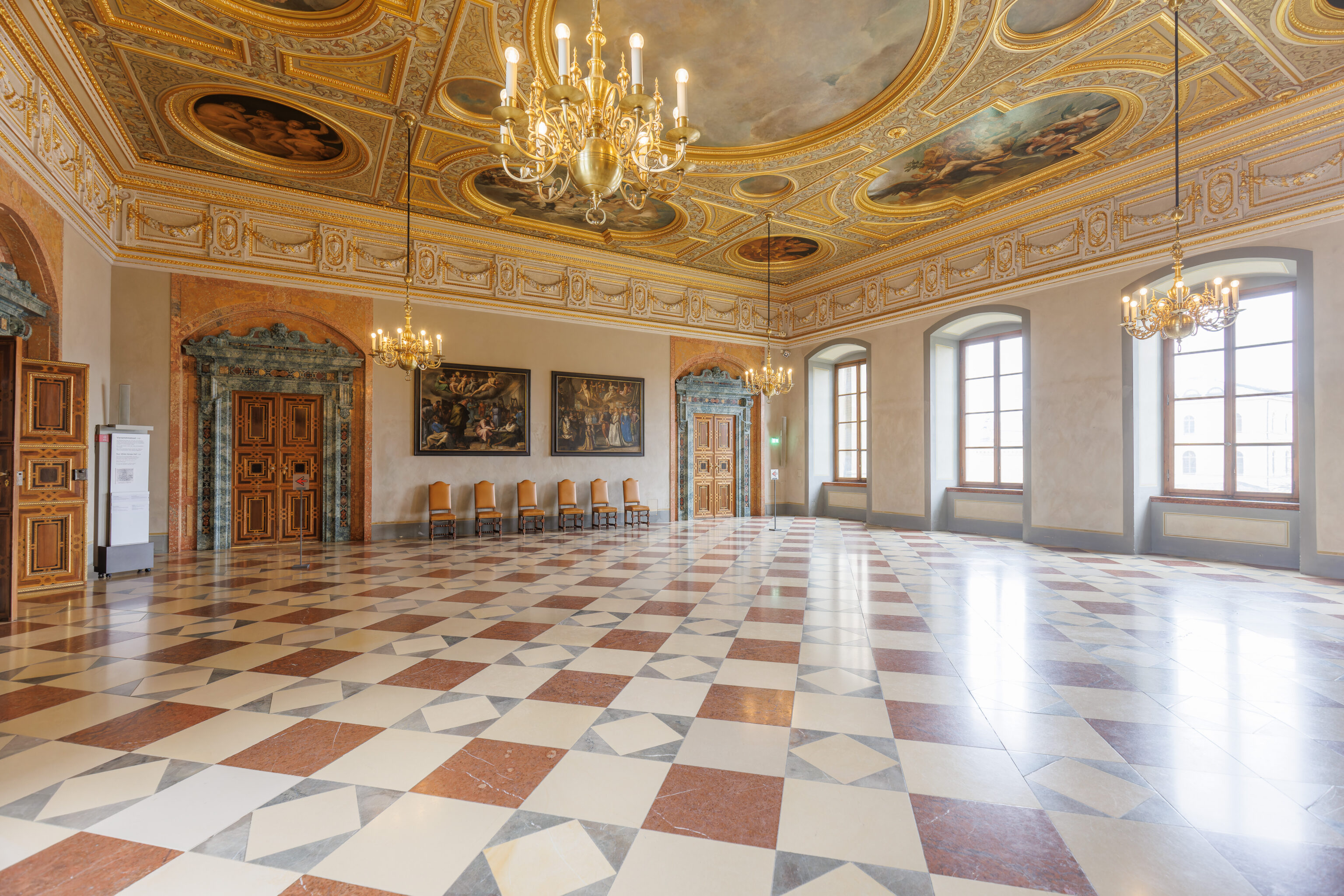
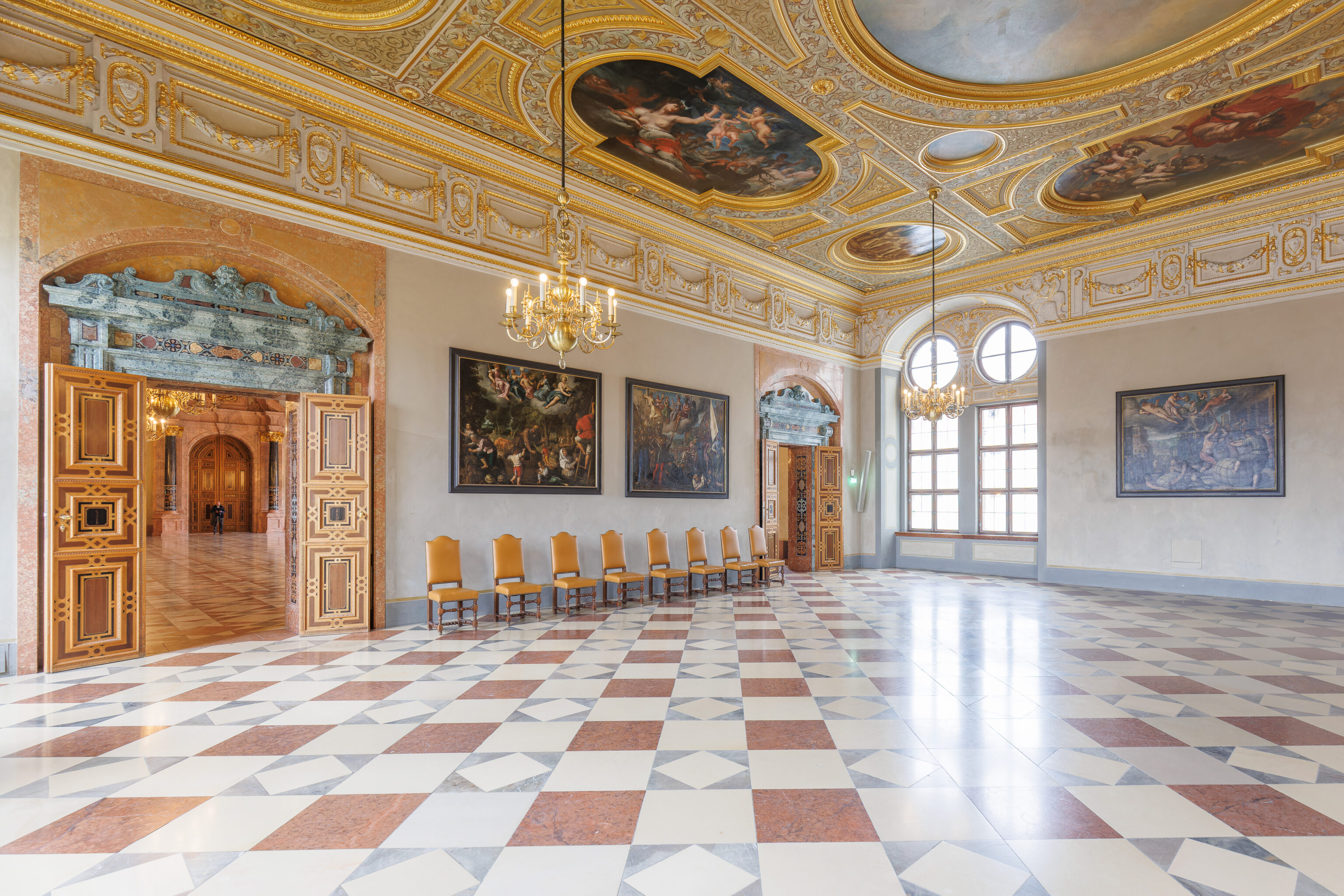
We then walked into the adjacent Four White Horses Hall. This room is named after a painting that was at the center of the ceiling. It no longer exists today, the space where it should be seems to have been painted as clouds.
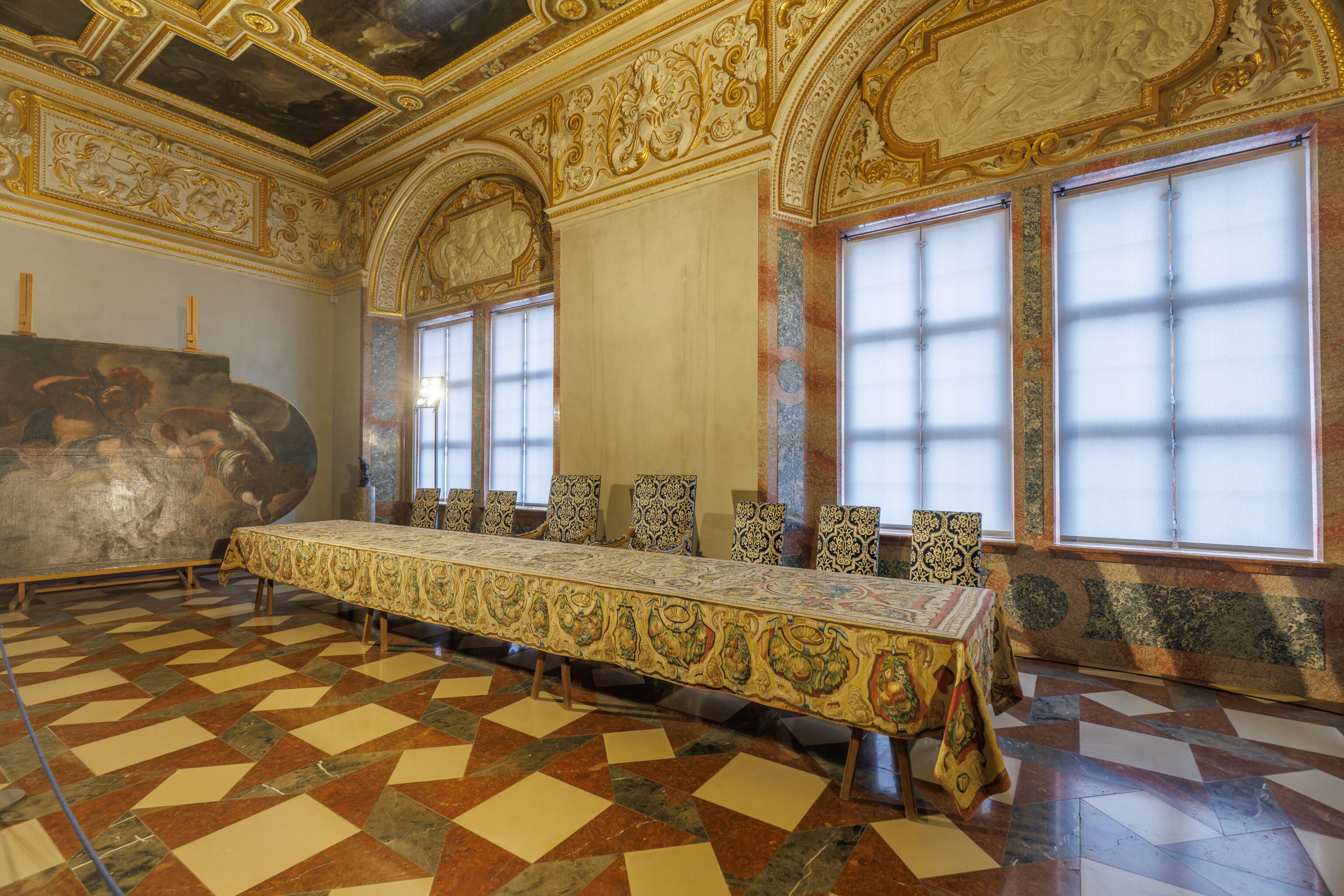
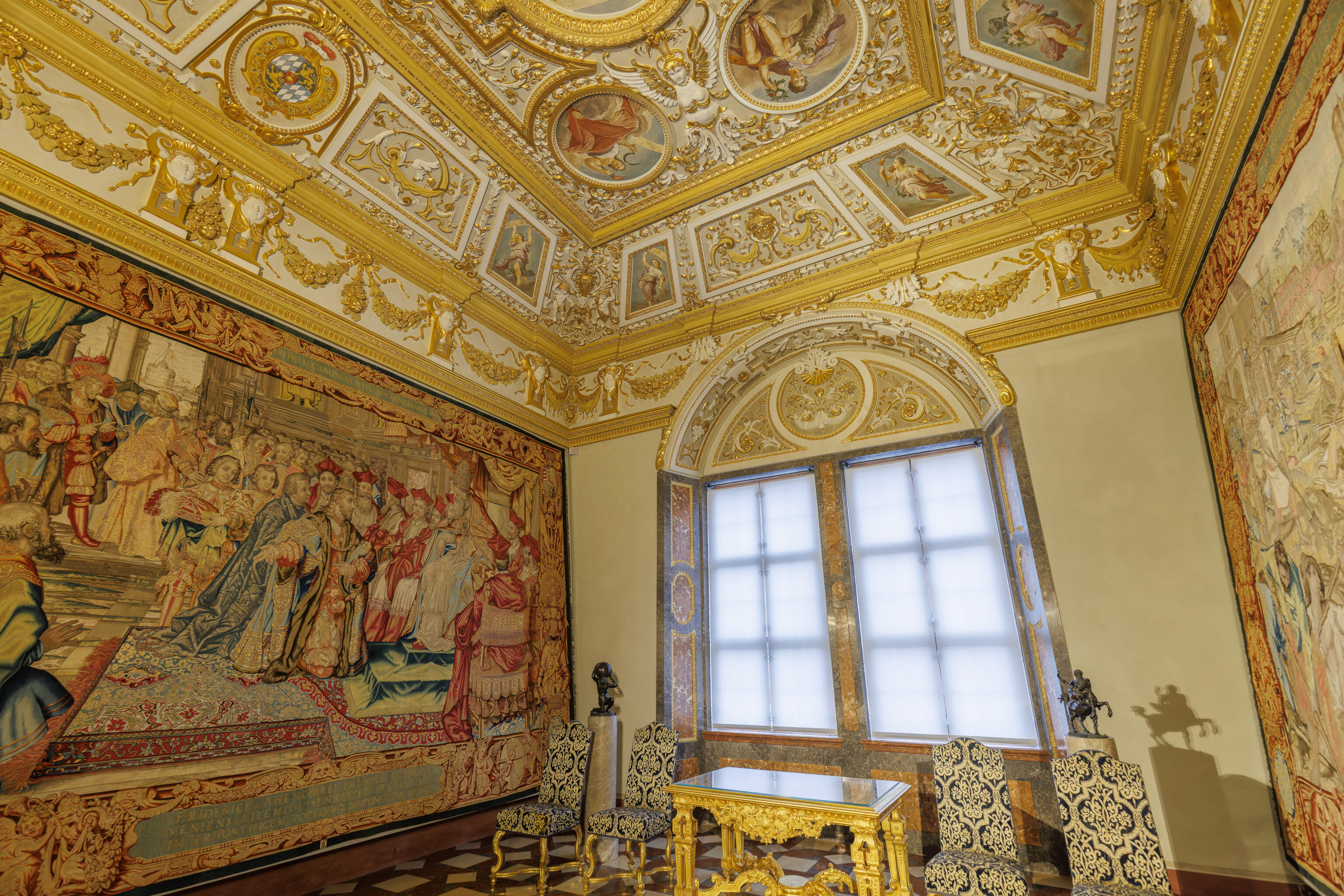
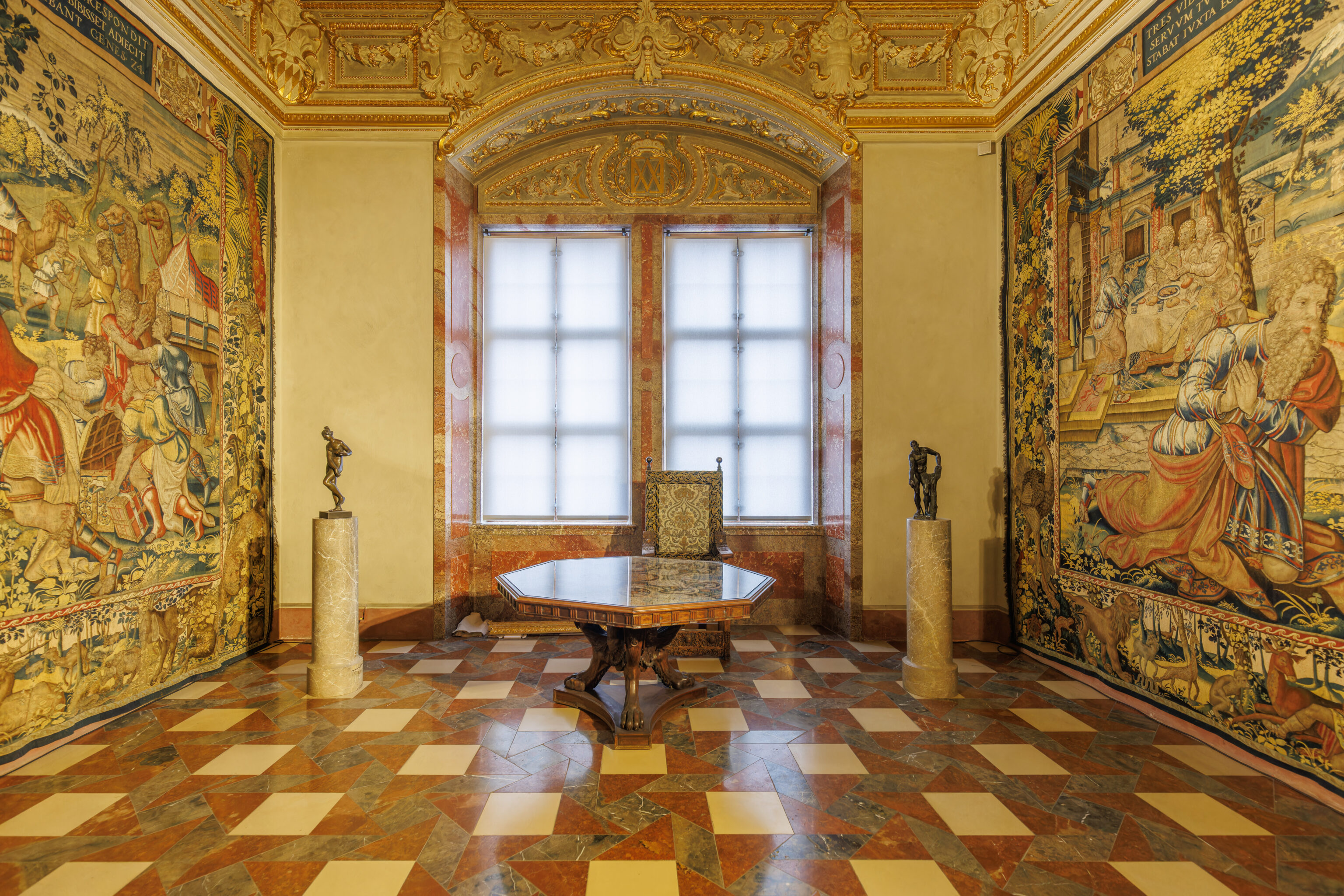
We continued on…
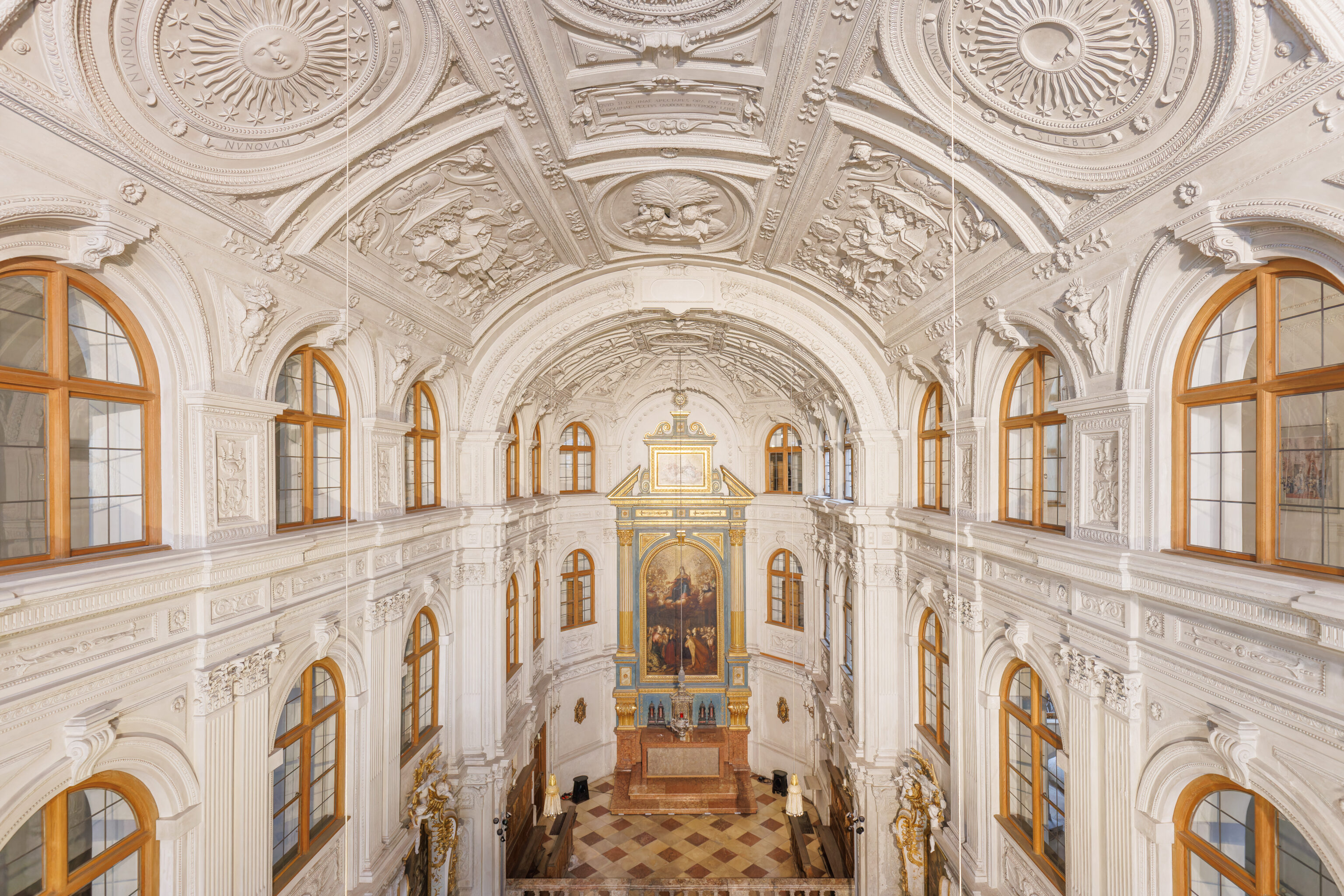
We passed by the Hofkapelle (Court Chapel). Like the church we passed by earlier, we could only view it from above.
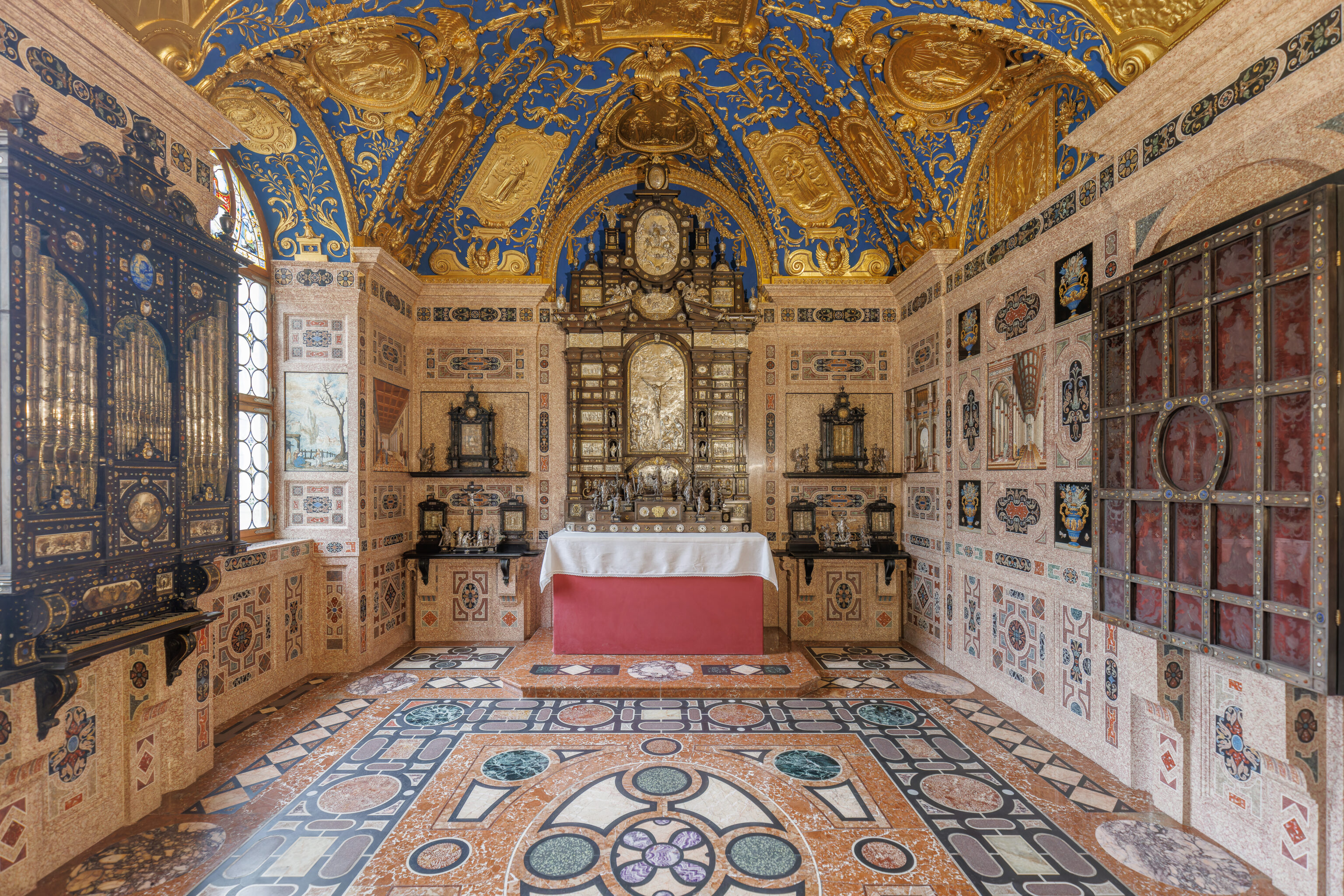
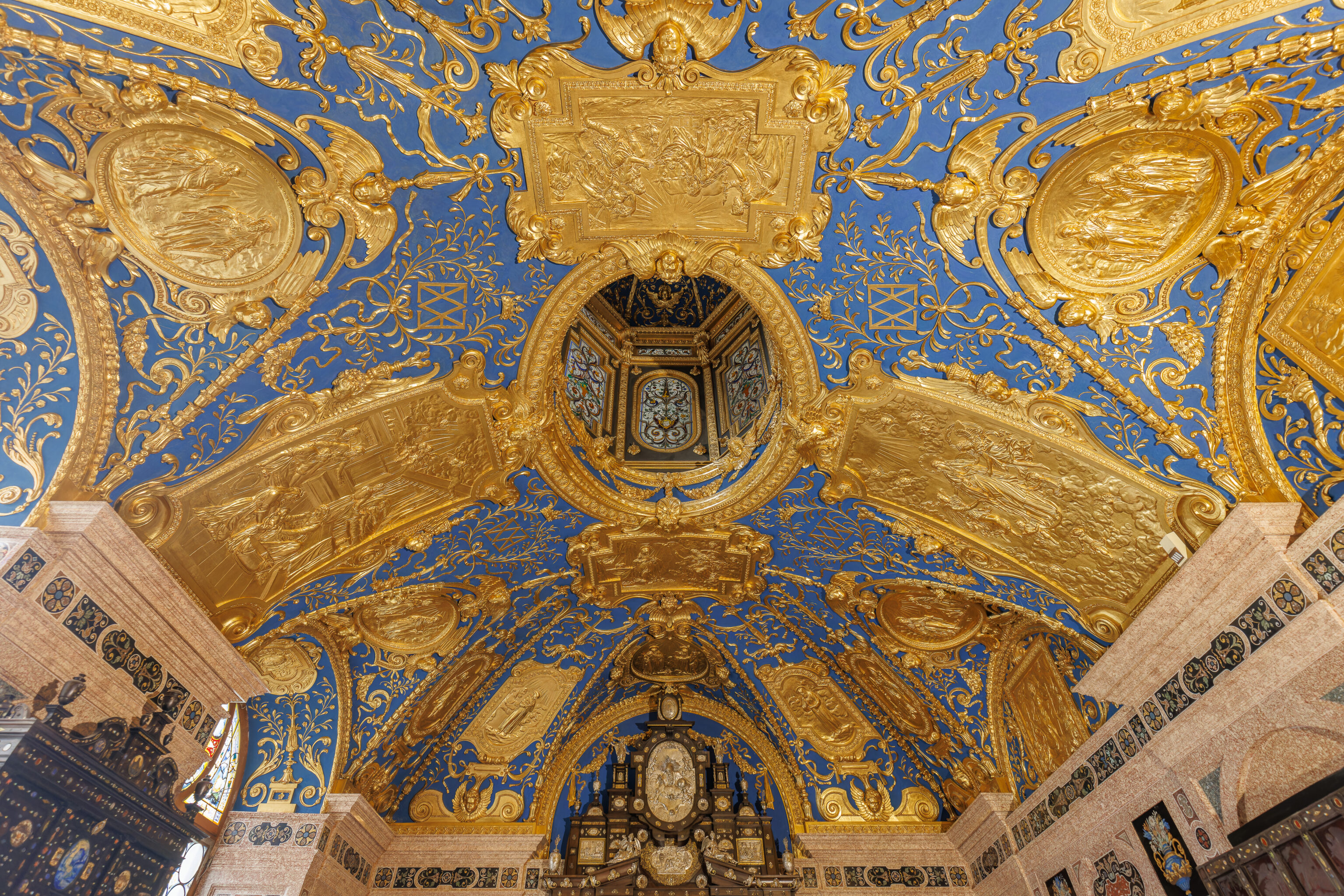
This room, the Reiche Kapelle (Rich Chapel), was ridiculously ornate. It was a private worship space for Maximilian I, the Elector of Bavaria, and his wife.
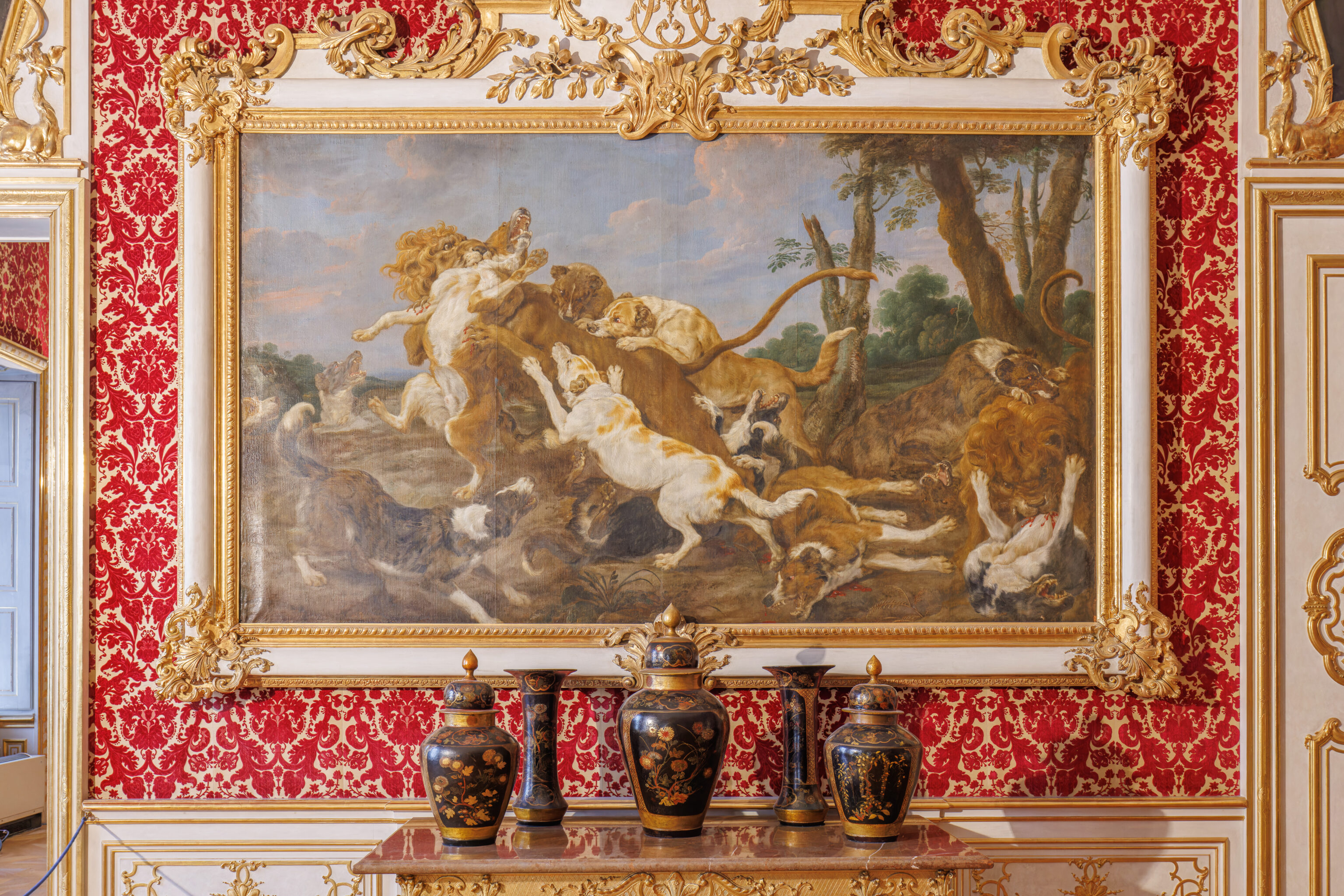
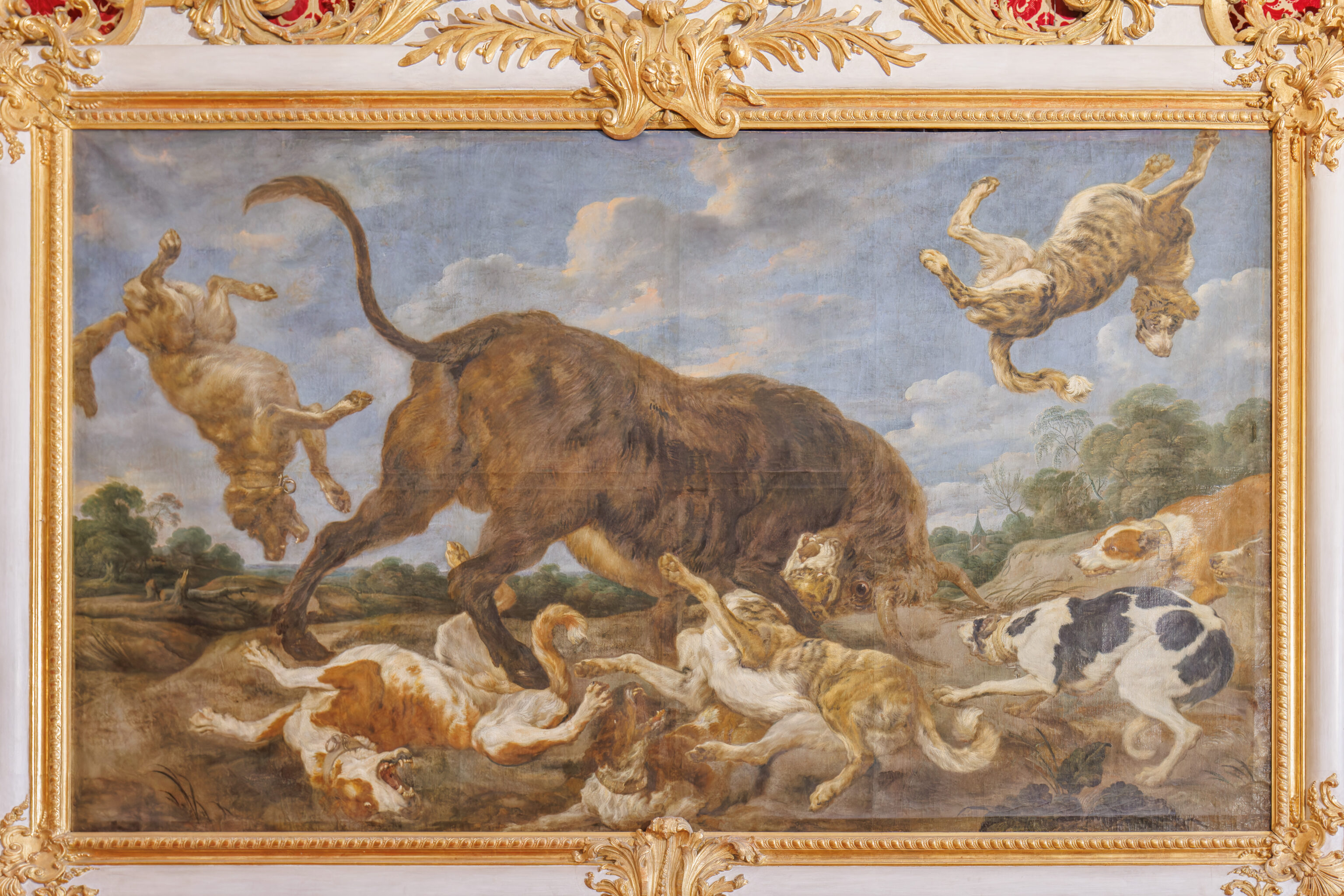
These paintings of hunting dogs in a subsequent room caught our attention. In the one at top, they are trying to take down a pair of lions. It isn’t clear who will win out here. In the bottom painting, they don’t seem to be having any luck with a bull.
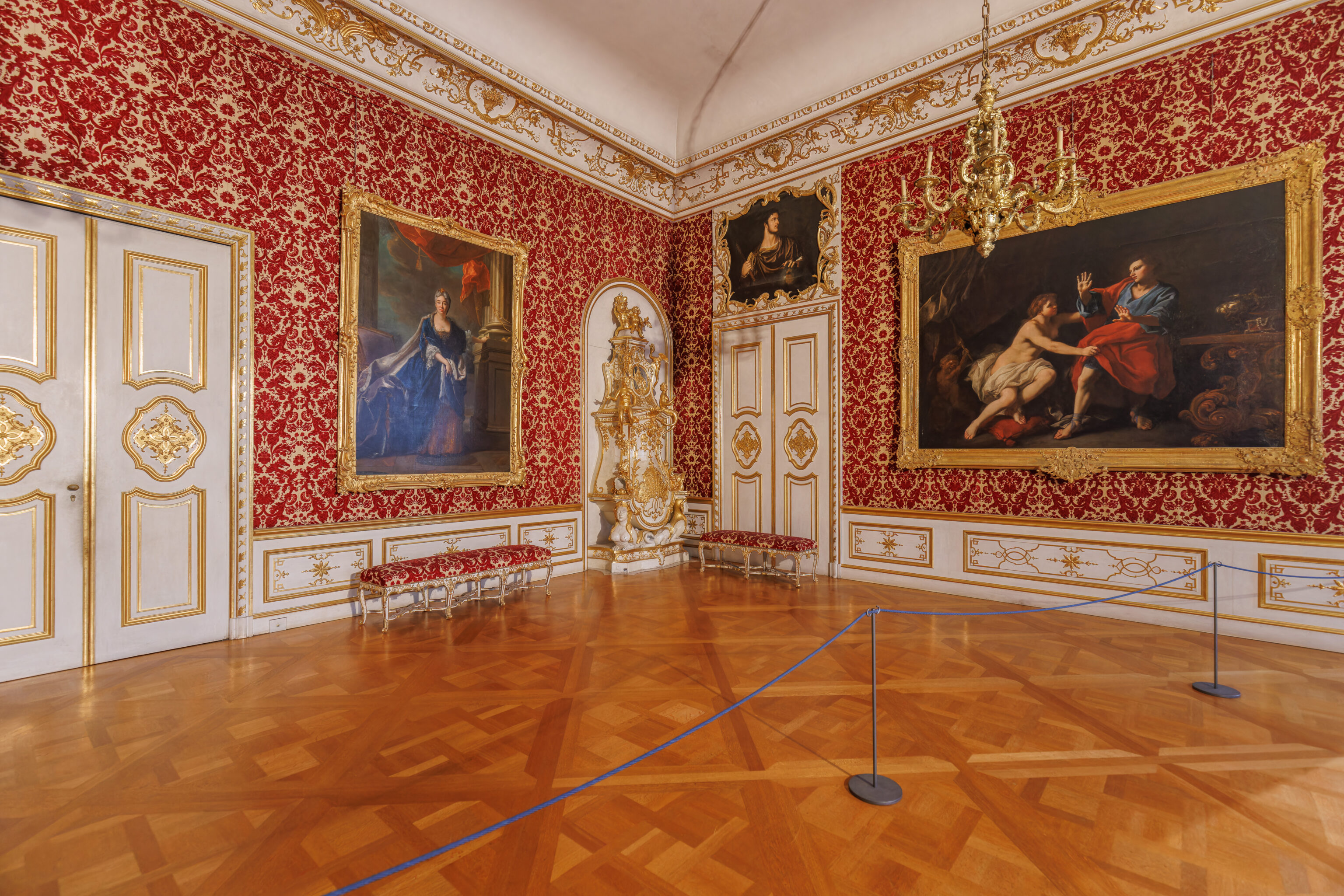
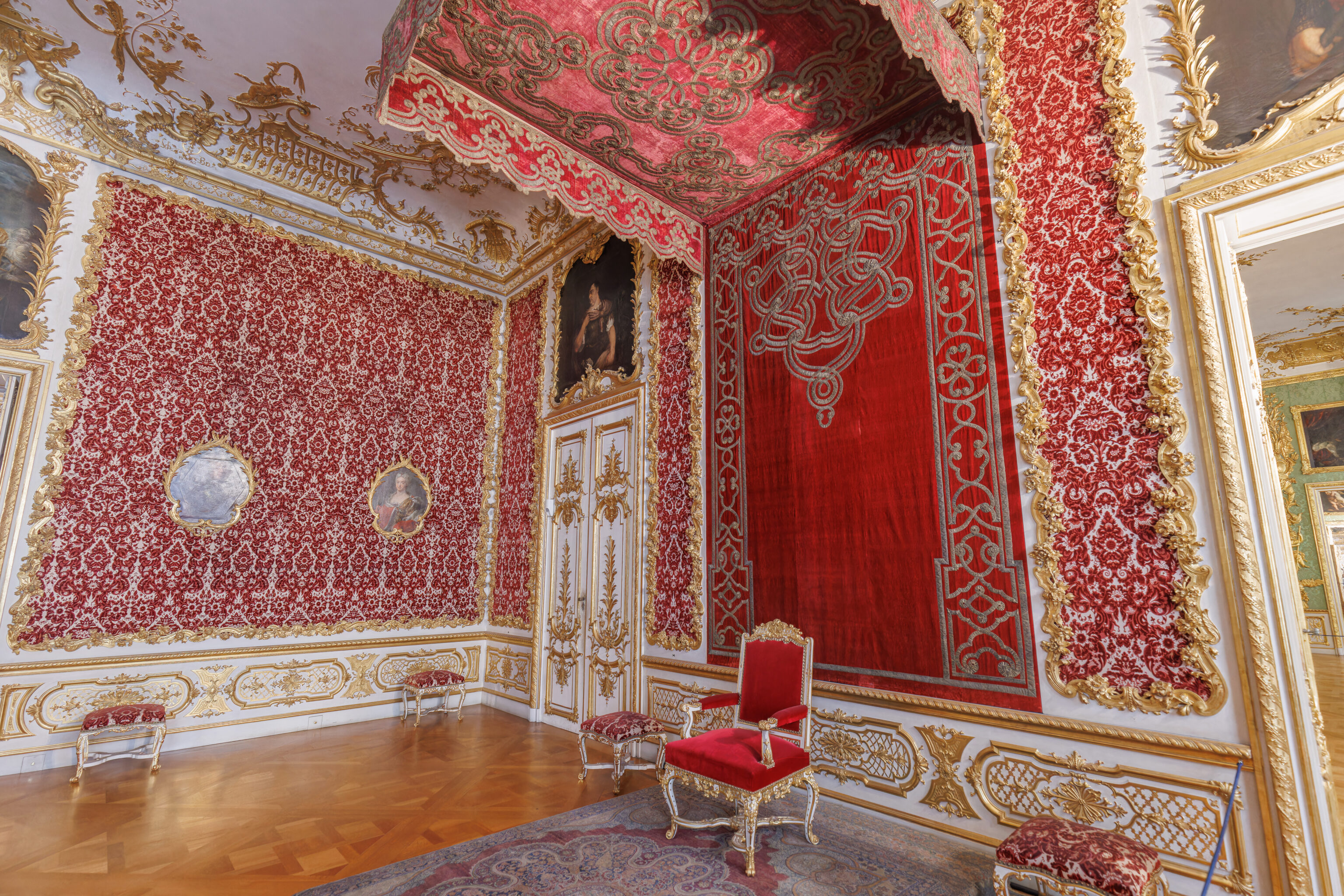
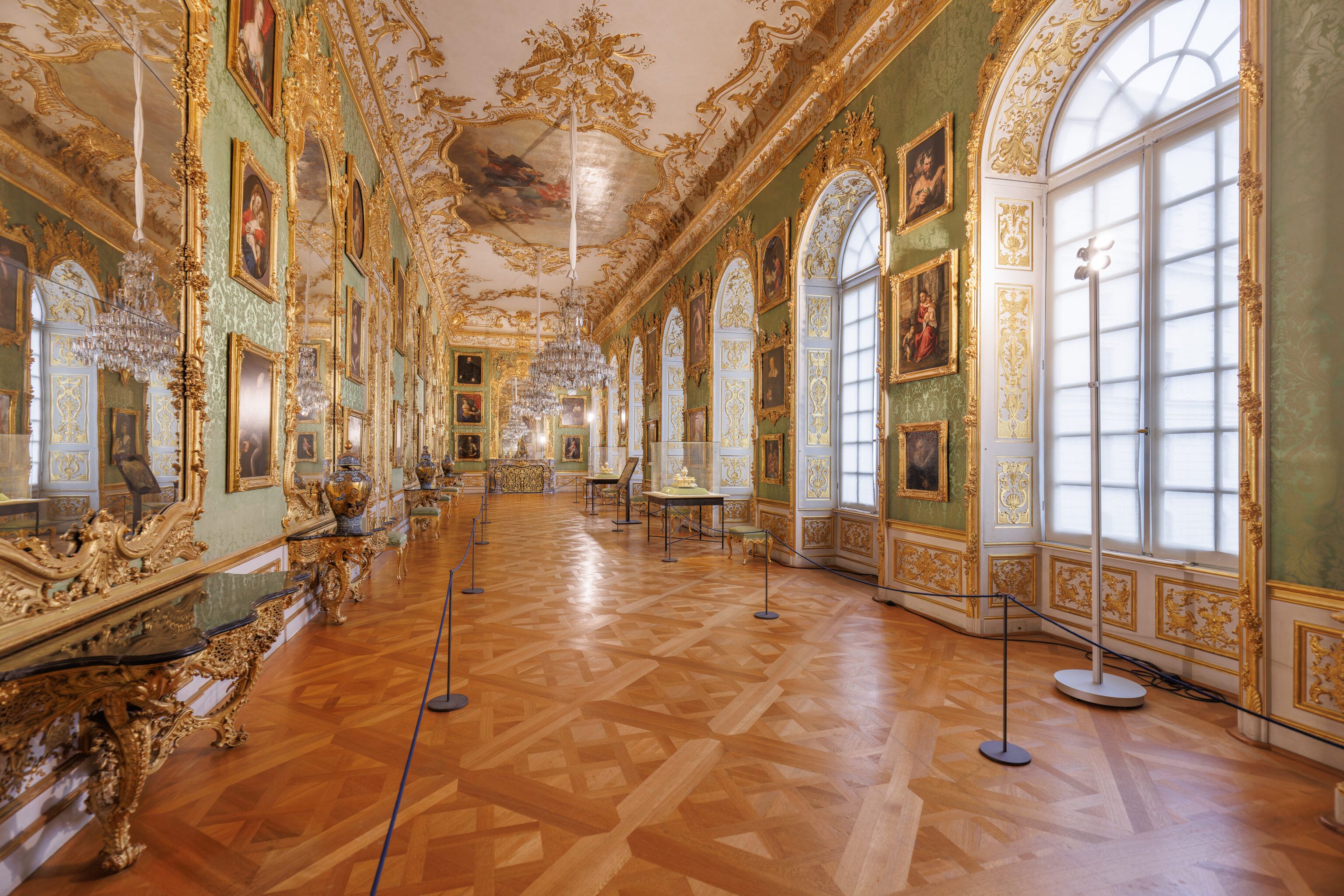
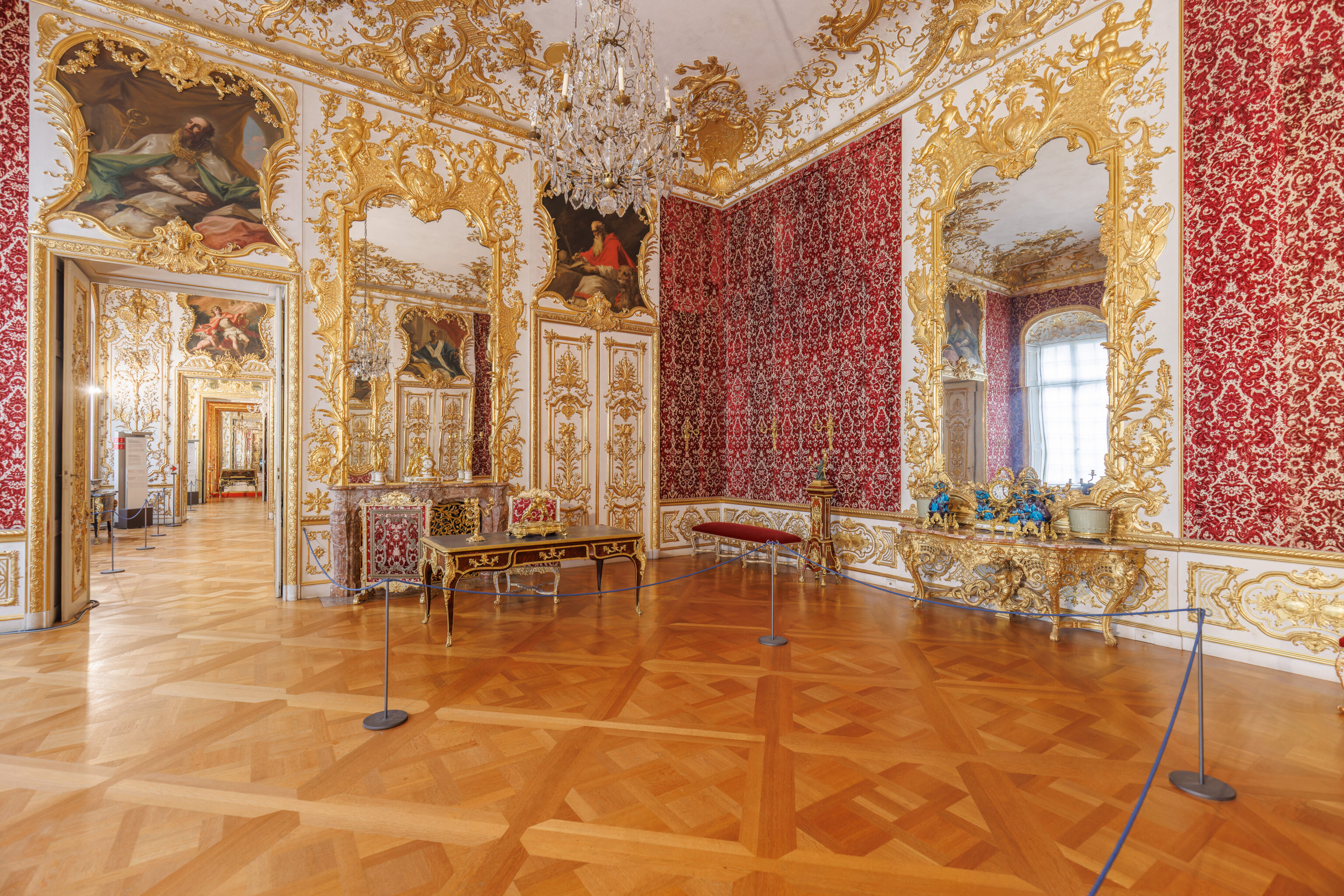
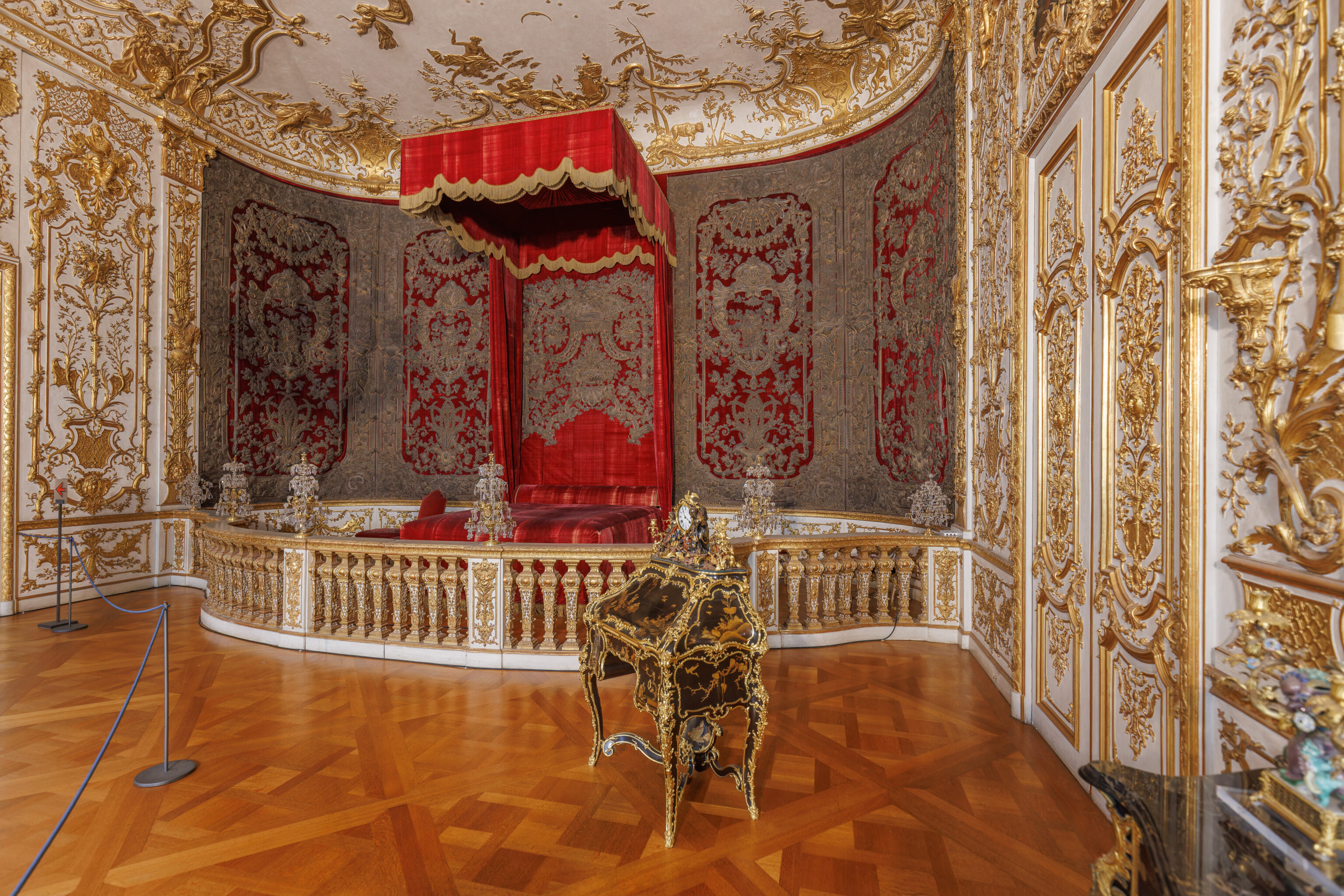
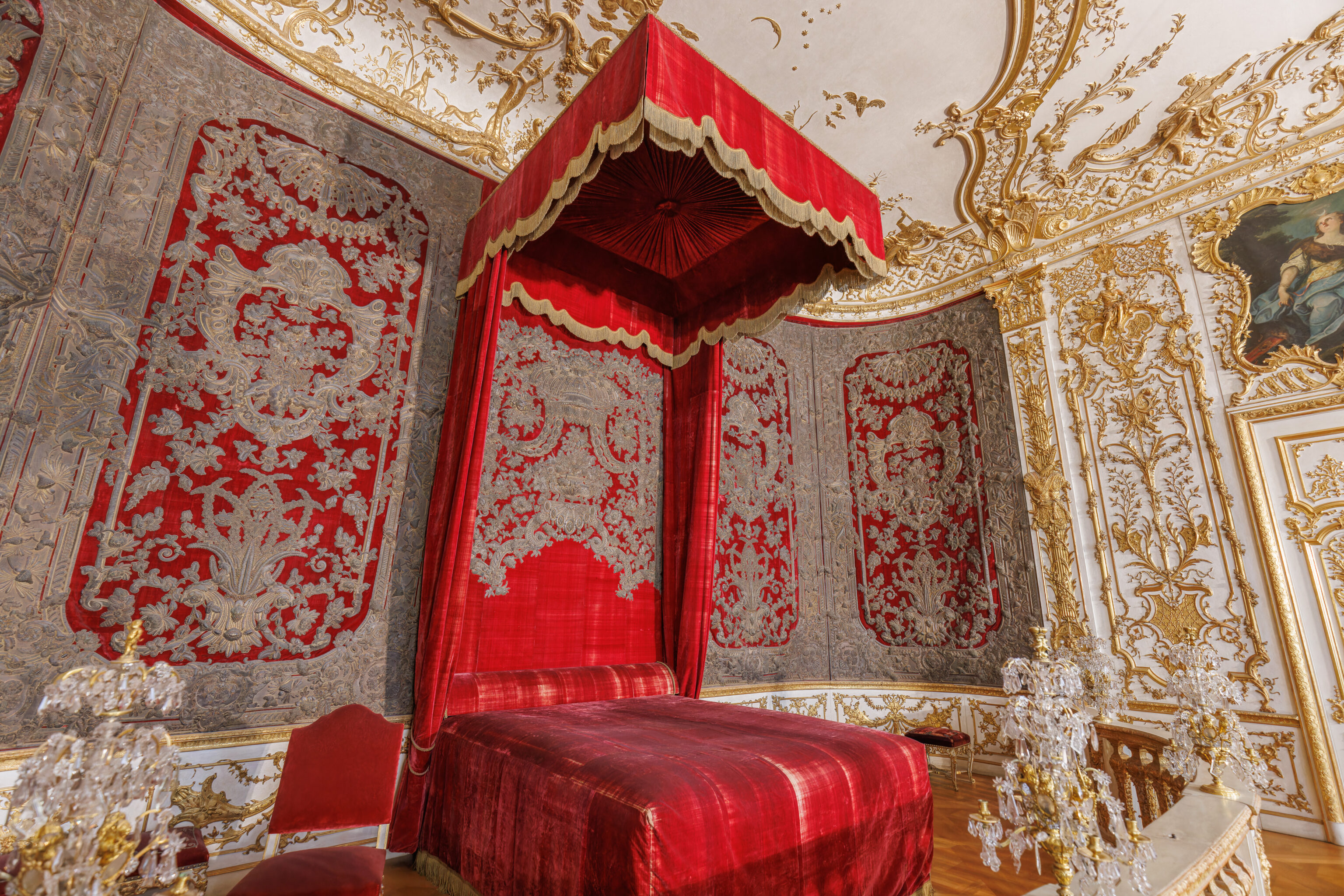
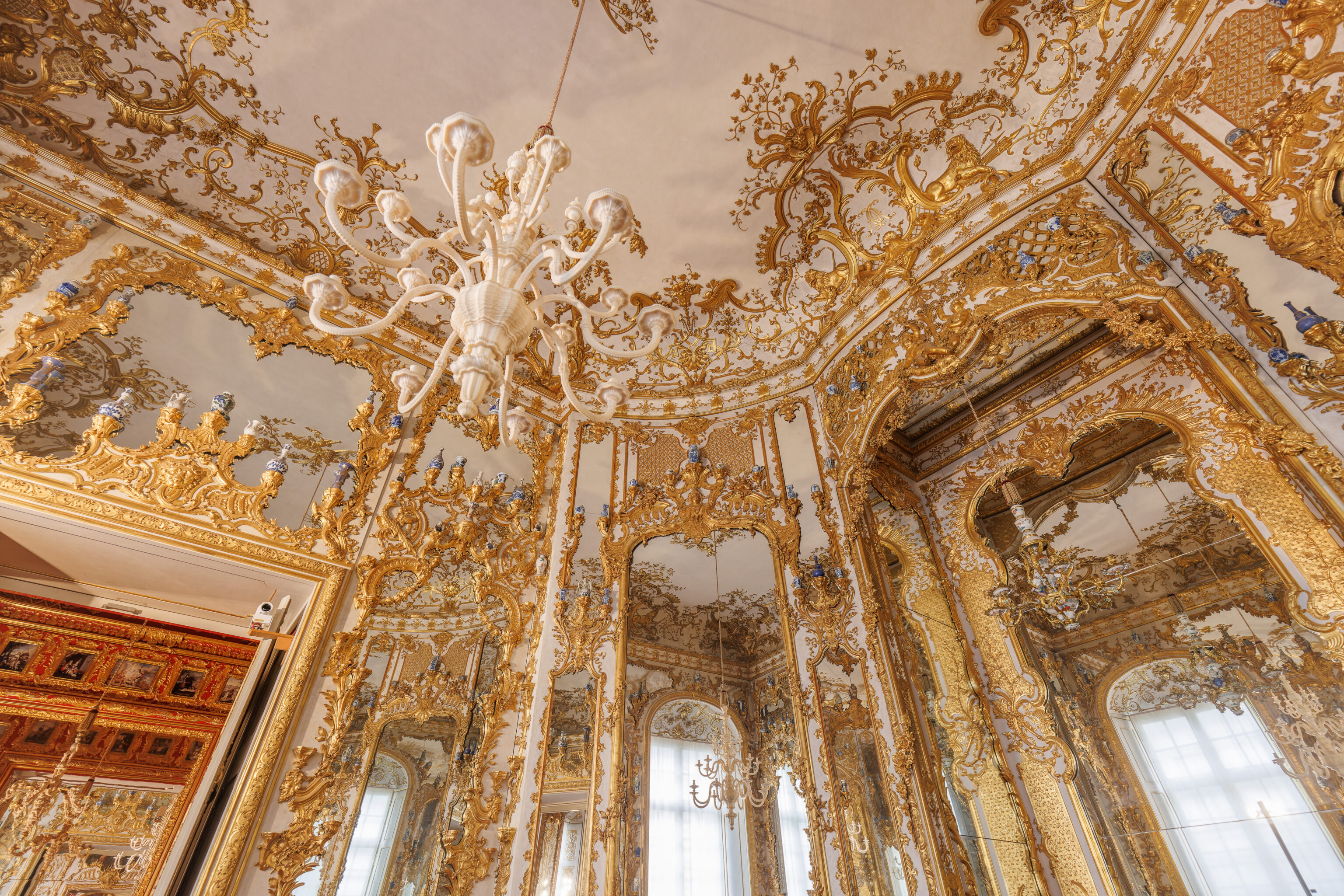
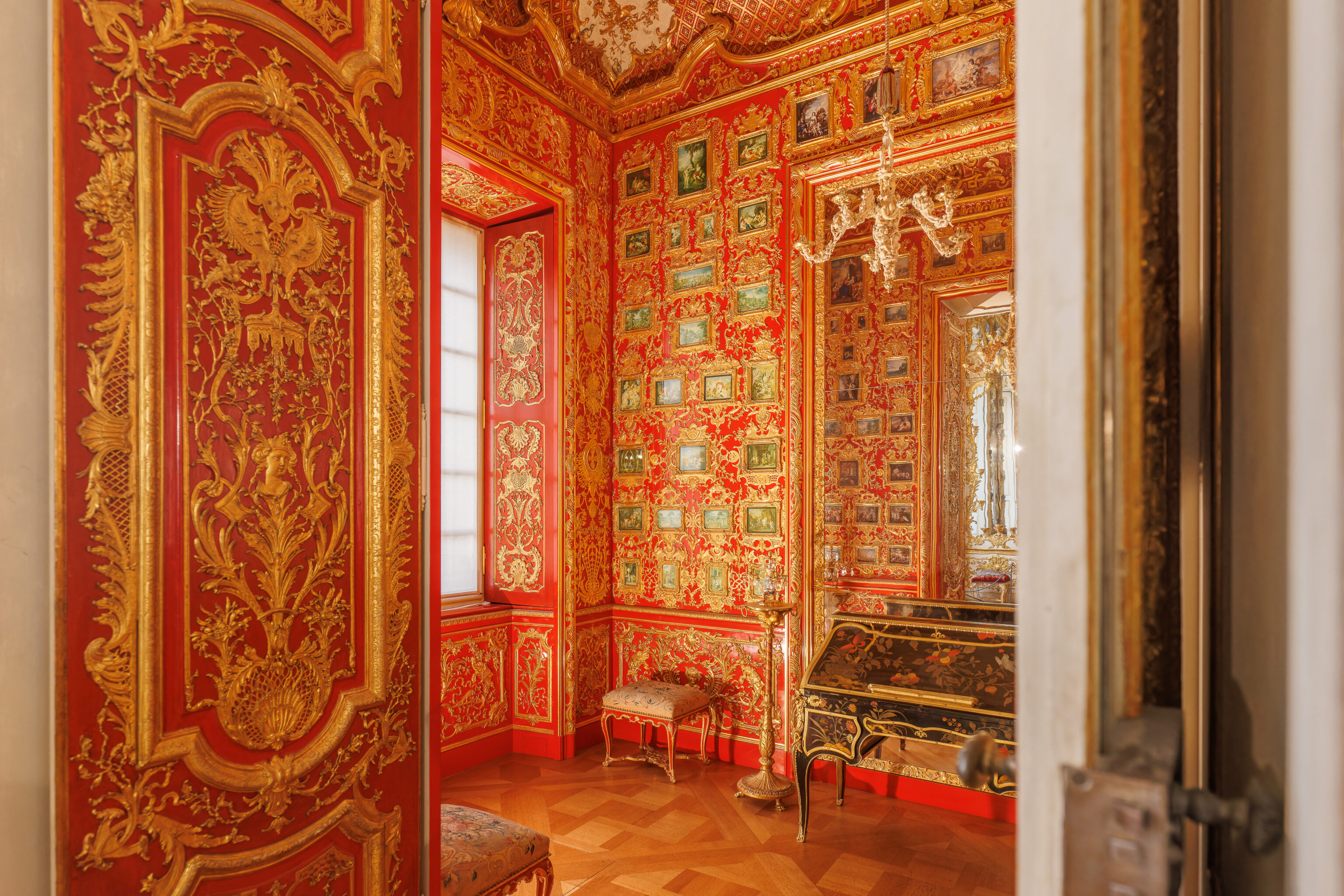
The next series of rooms, the Reiche Zimmer (Rich Rooms), all had wooden floors and were ornately decorated.
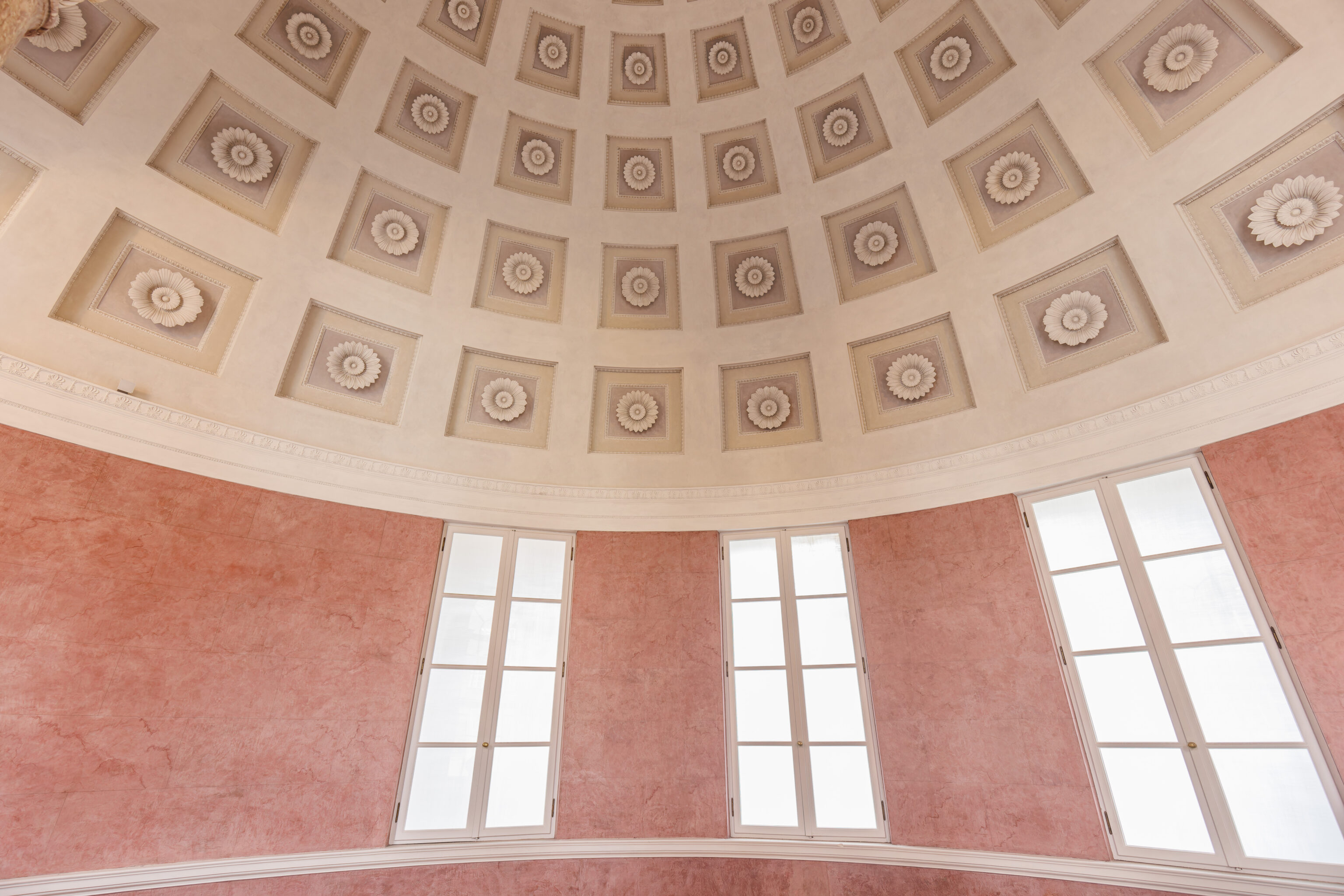
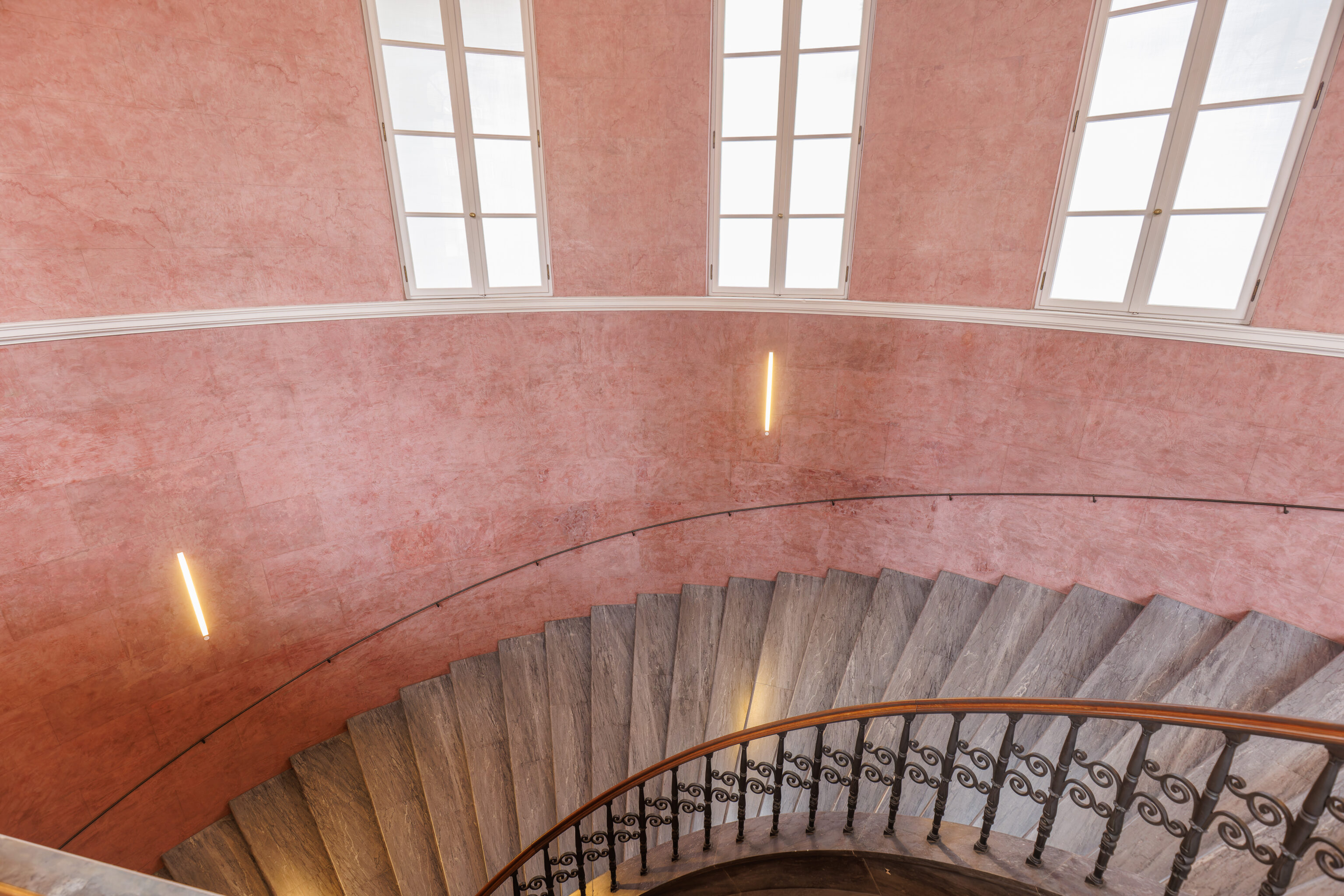
This circular stairwell reminded us again of Paris due to the flower tiles above.
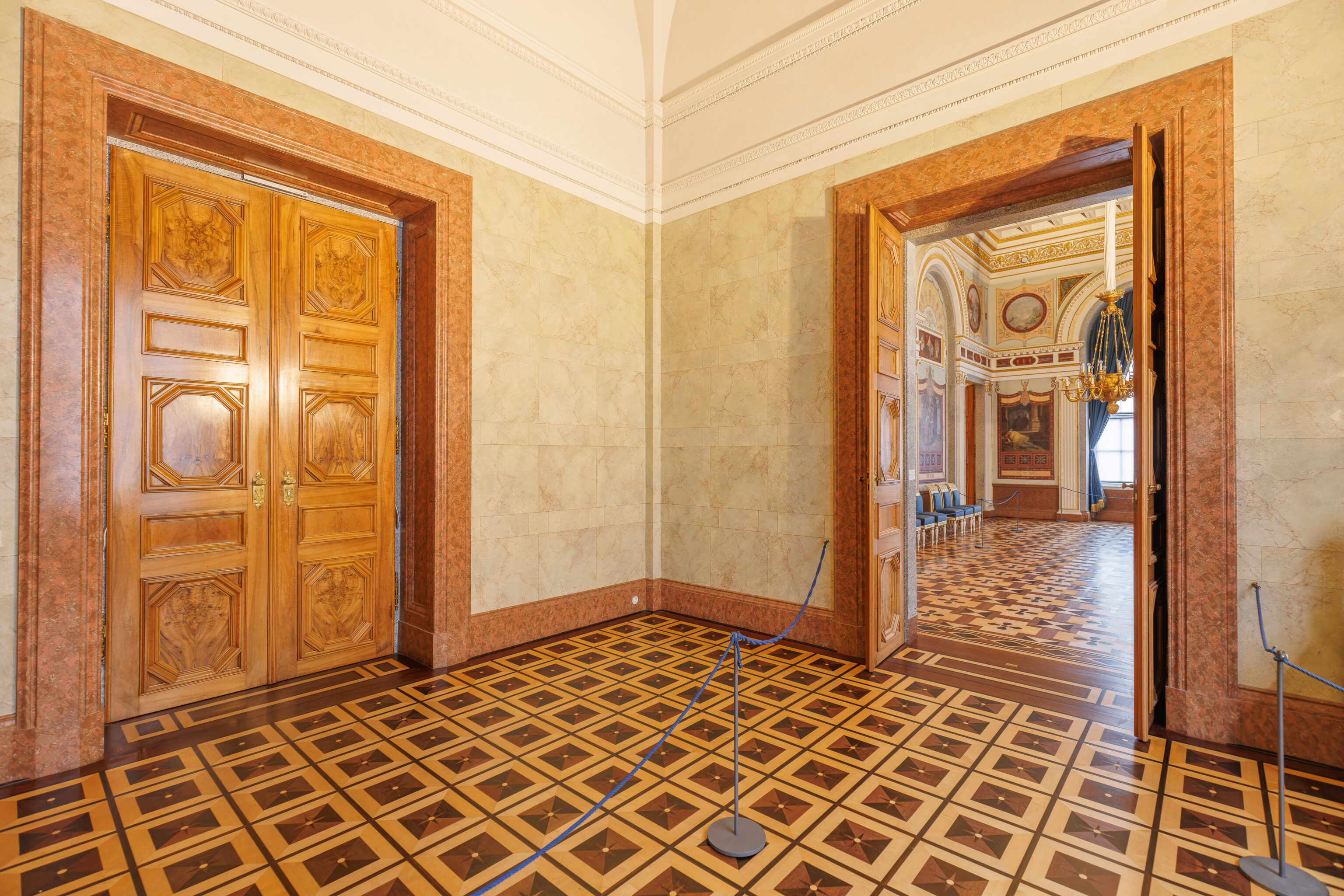
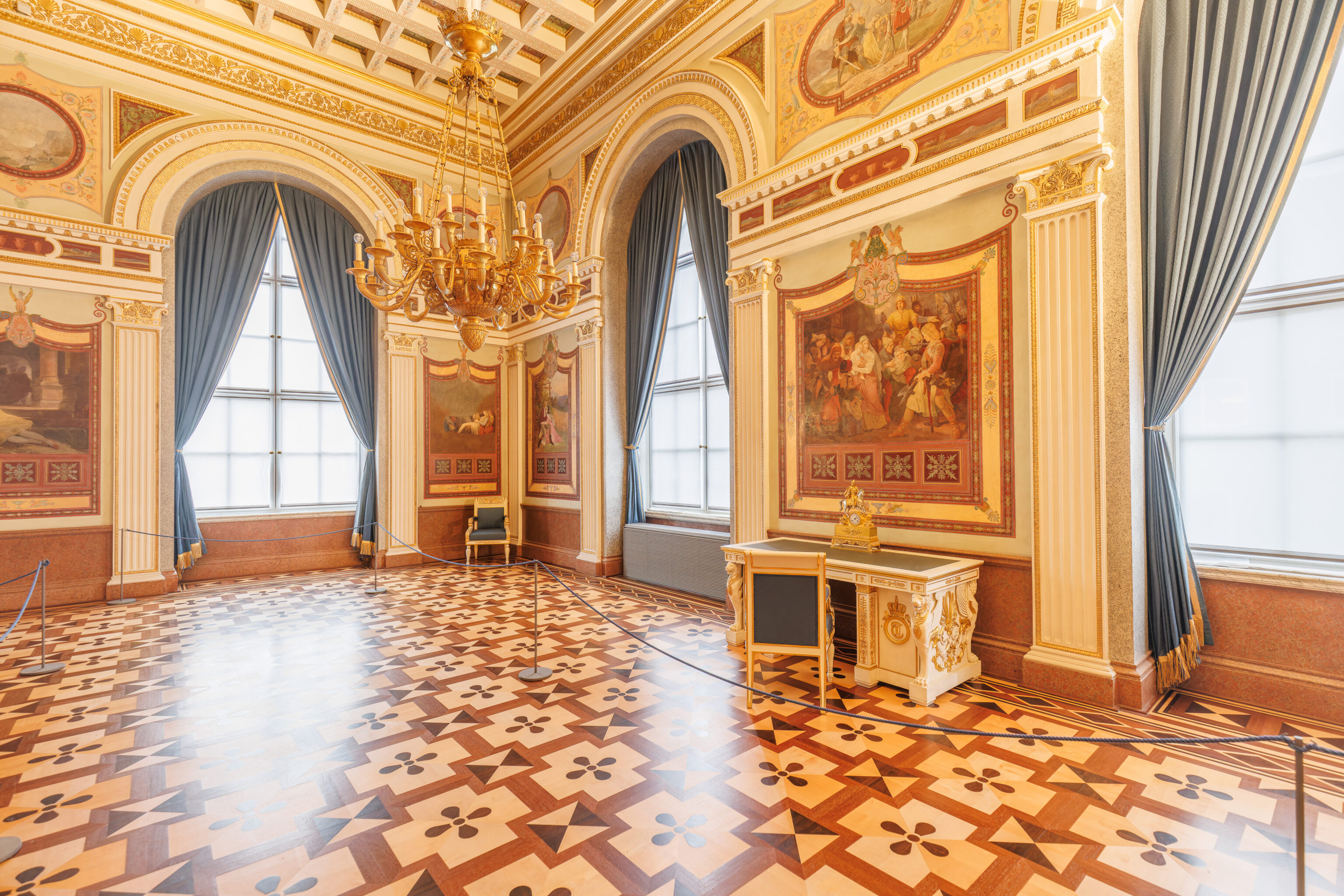
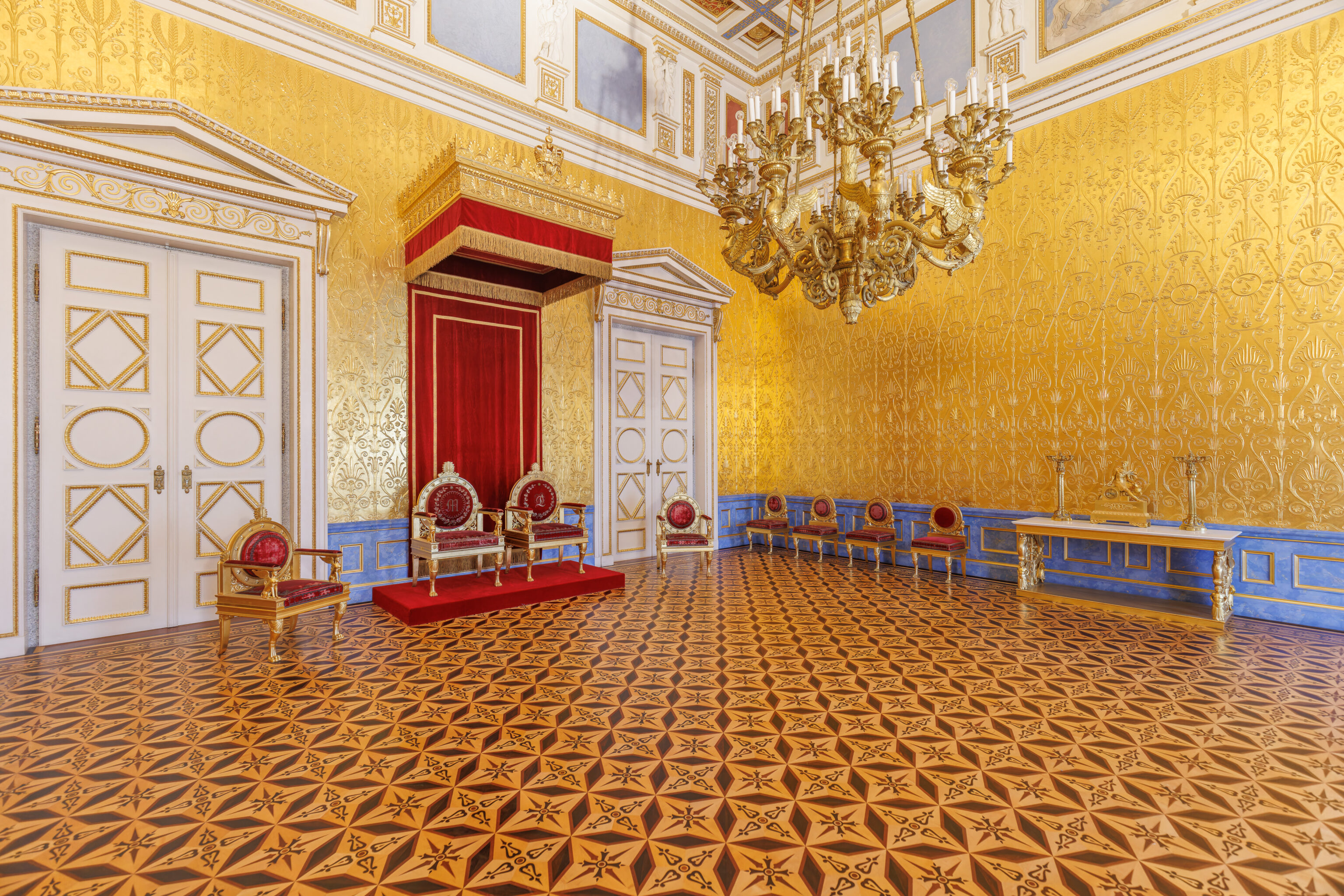
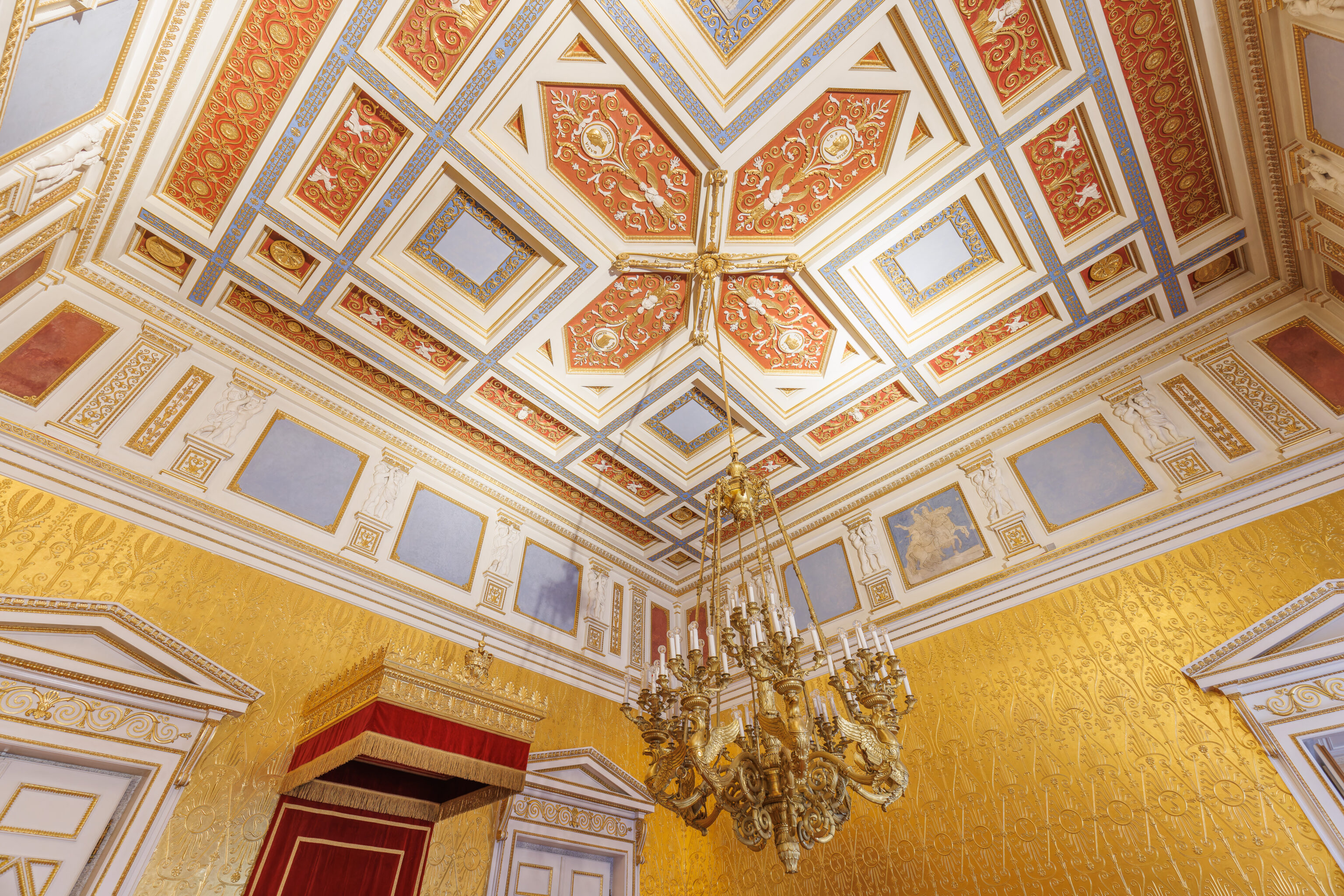
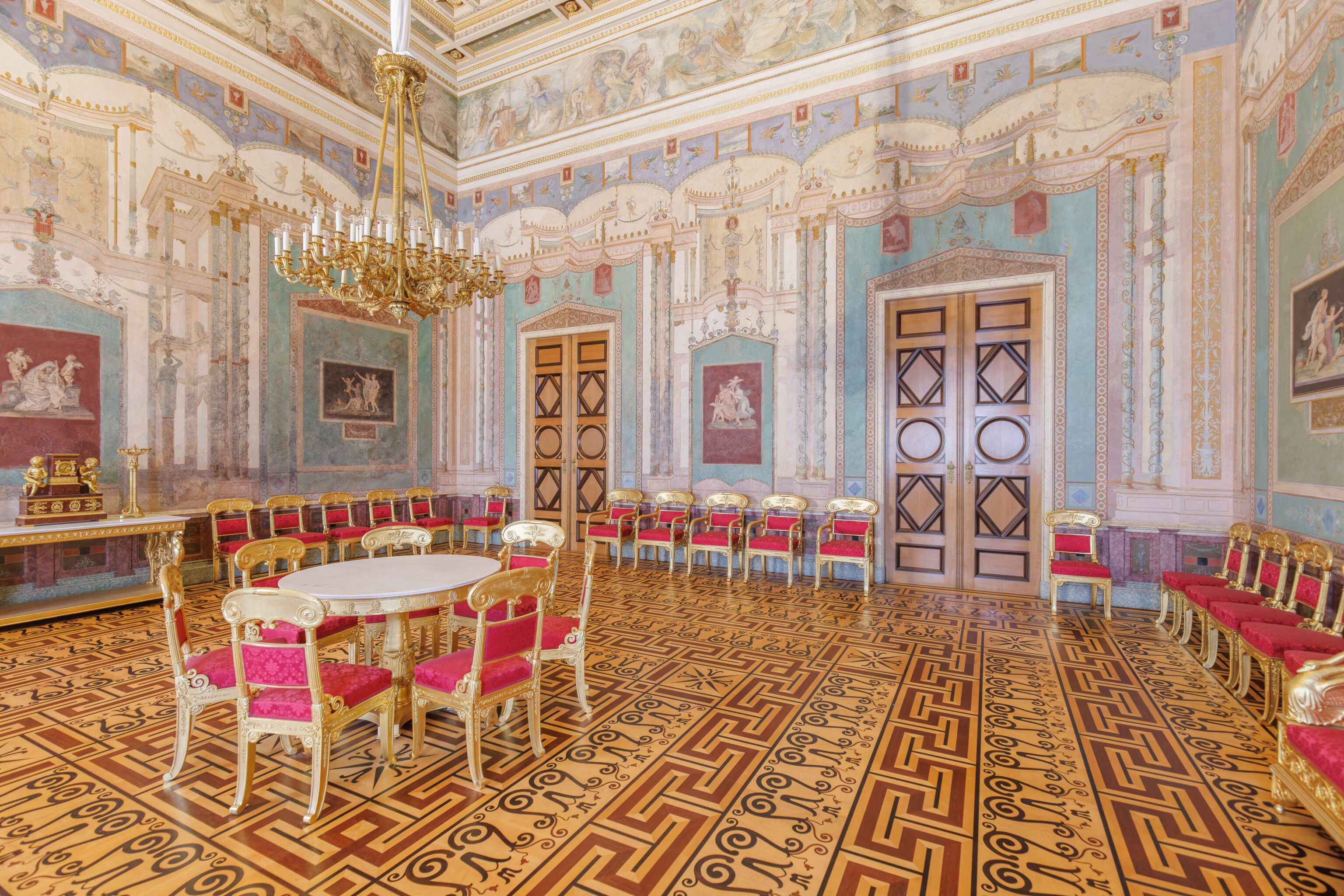
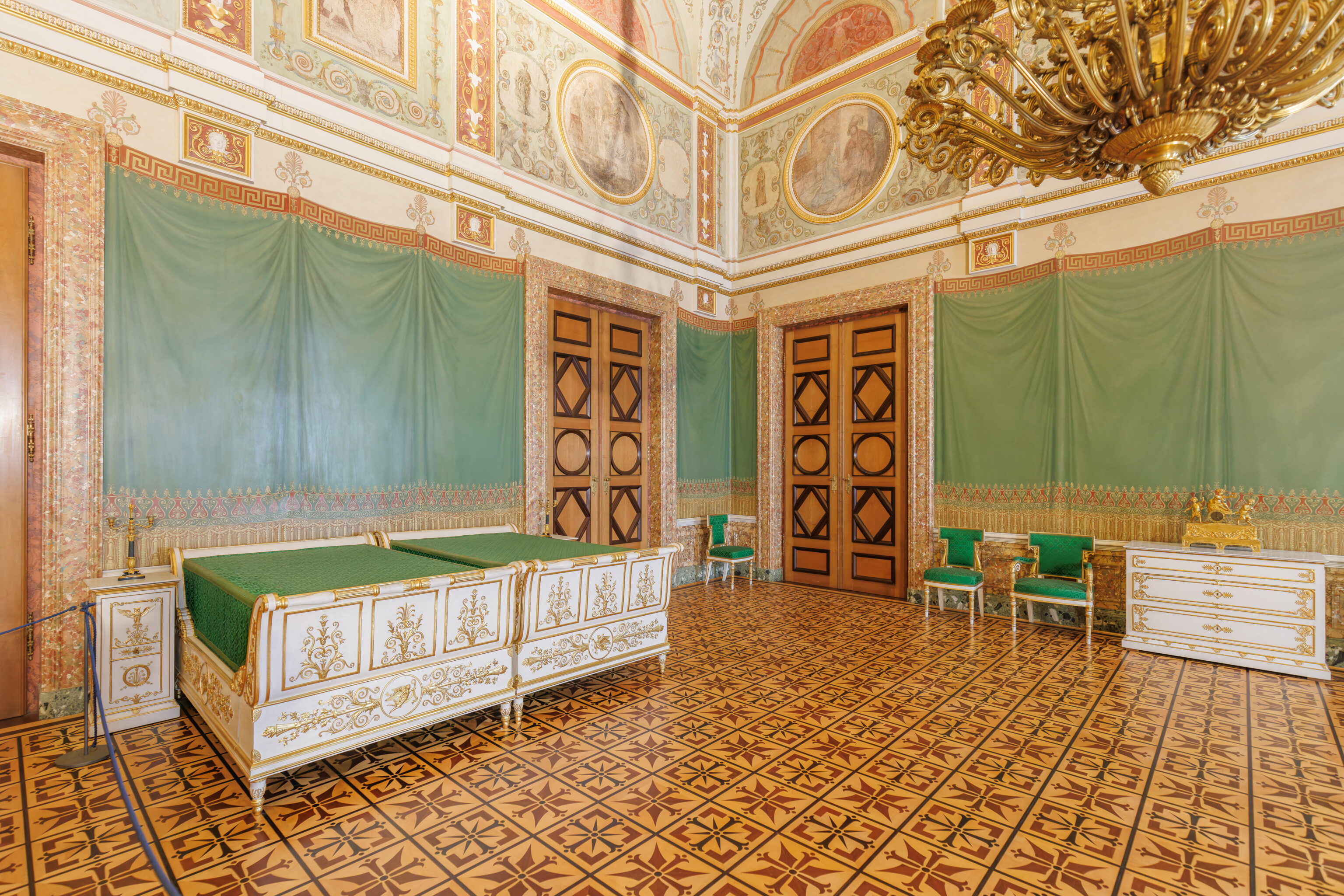
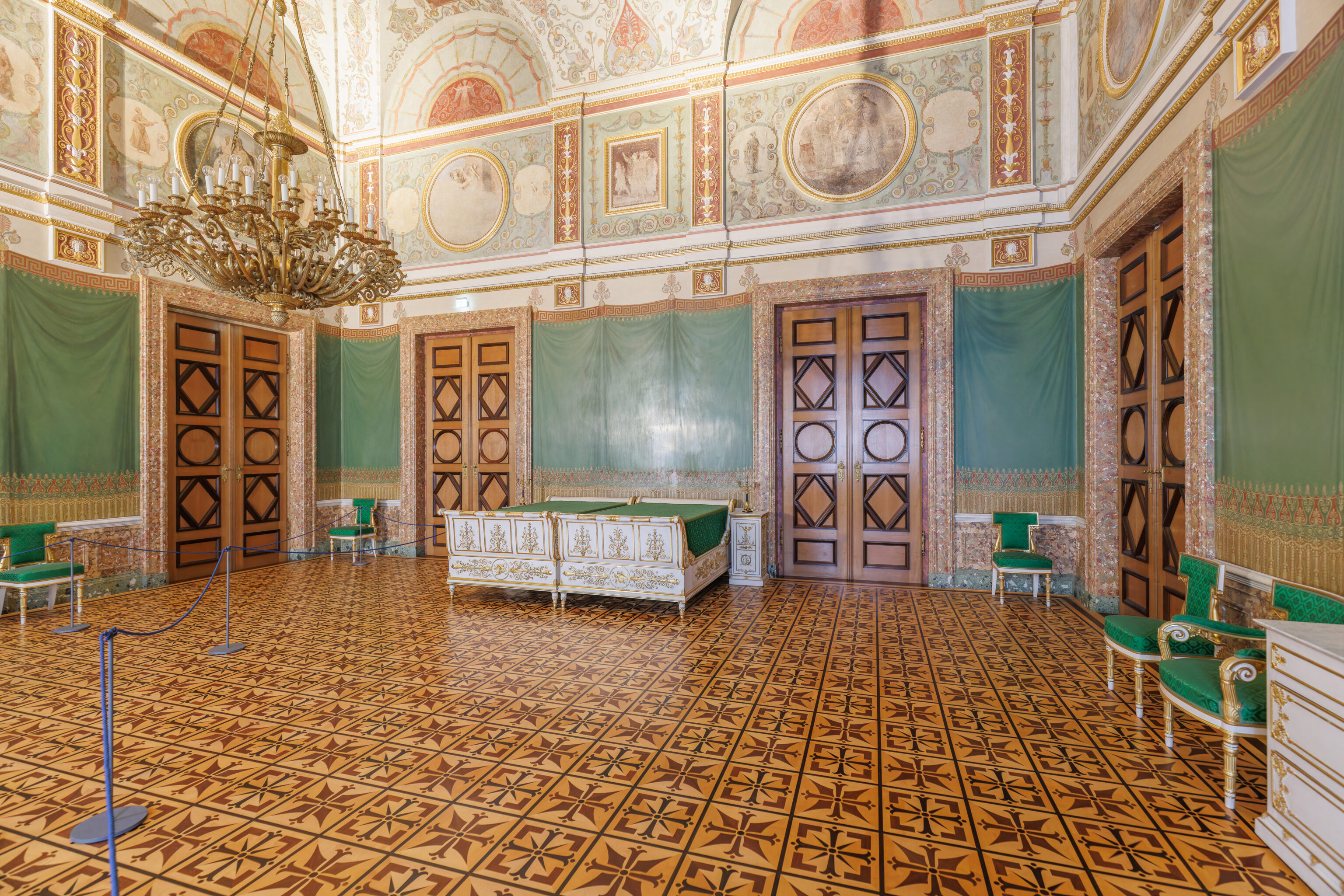
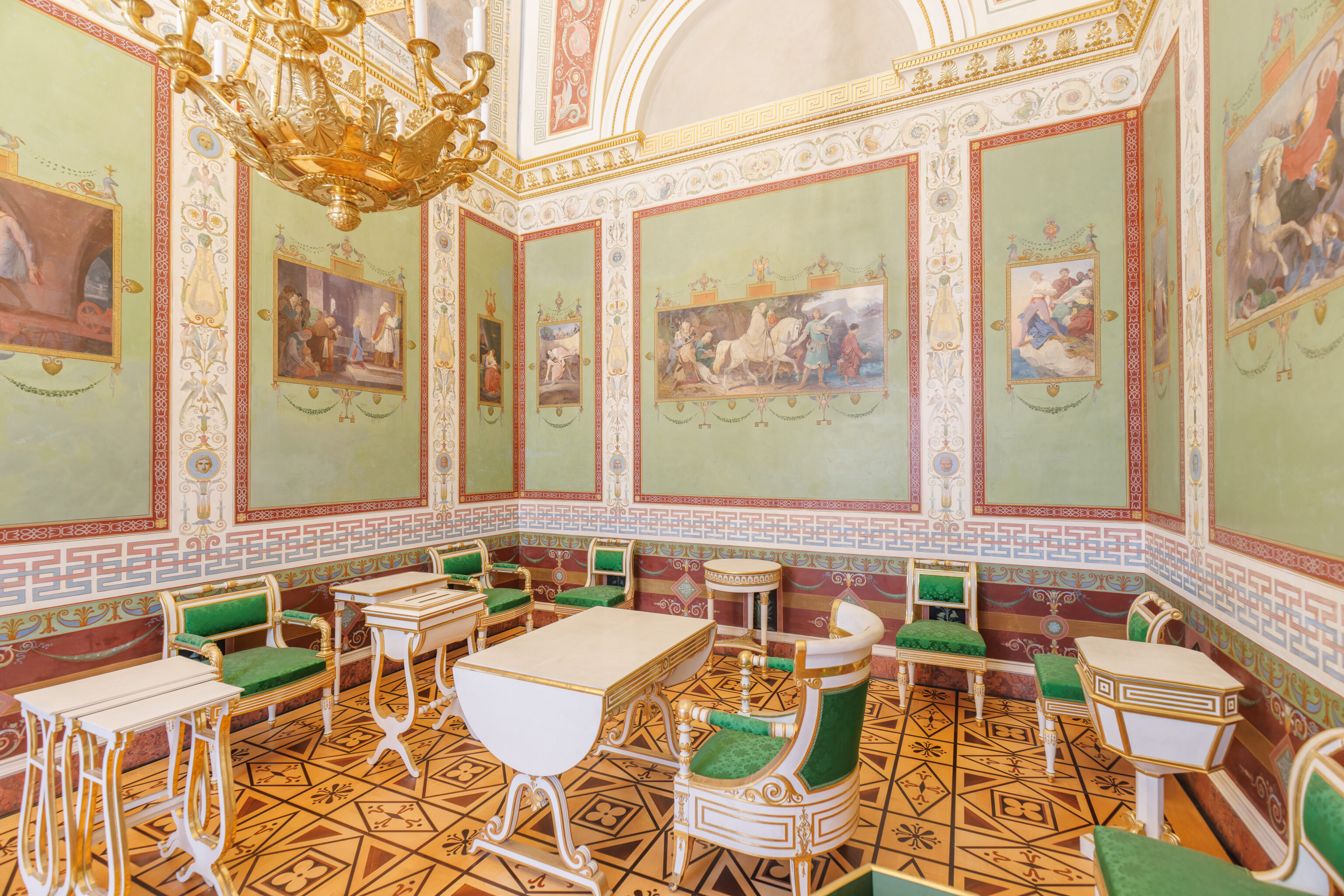
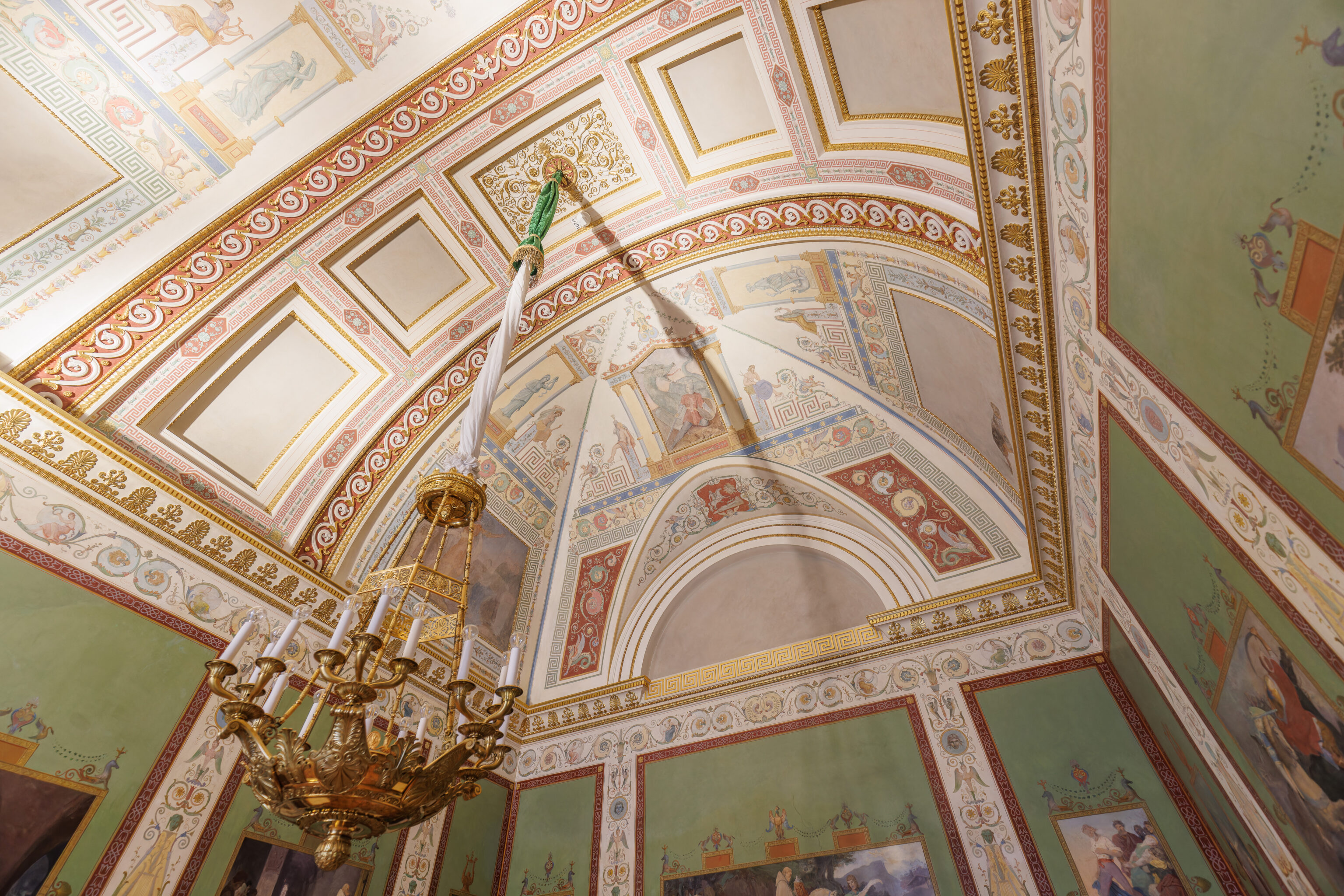
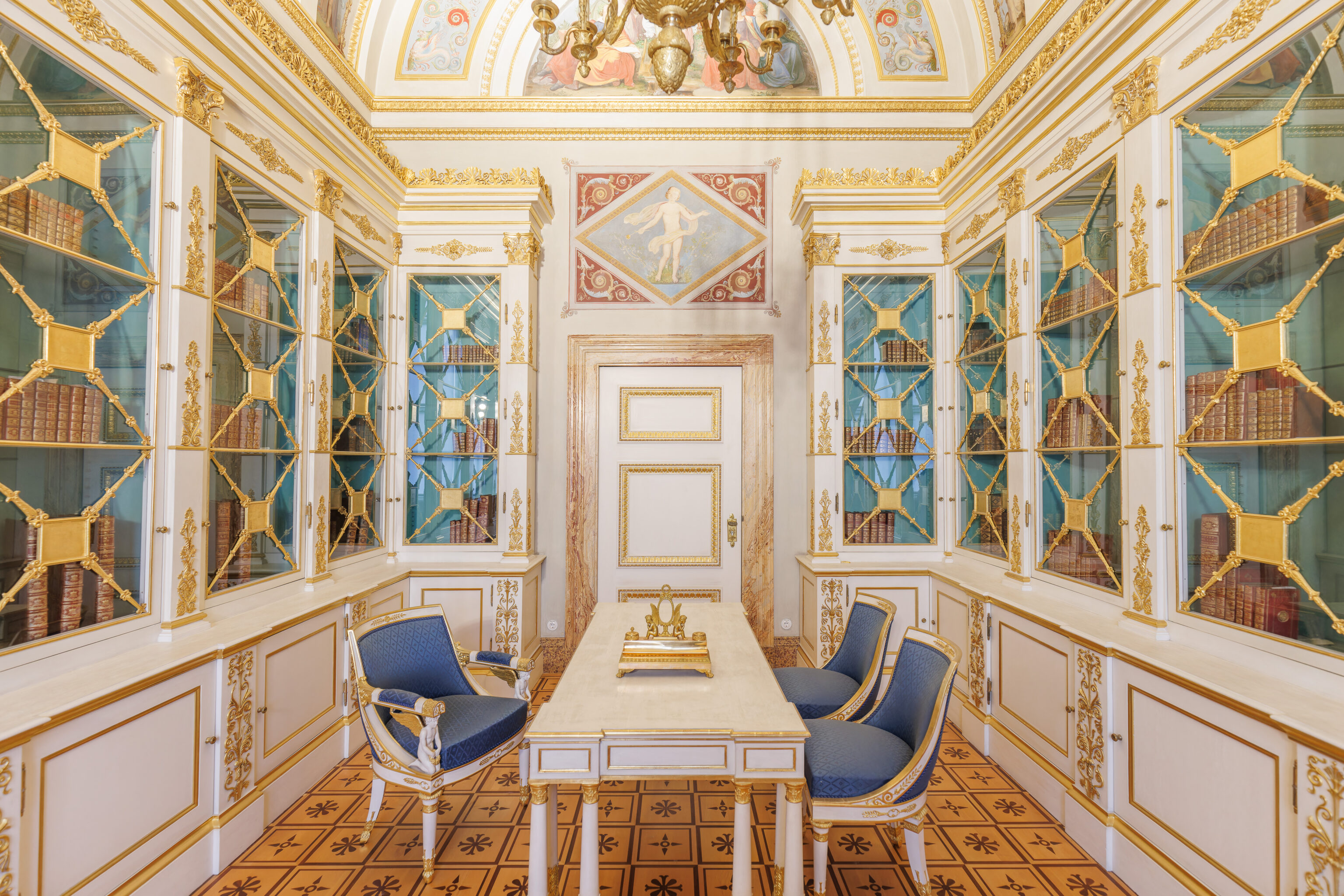
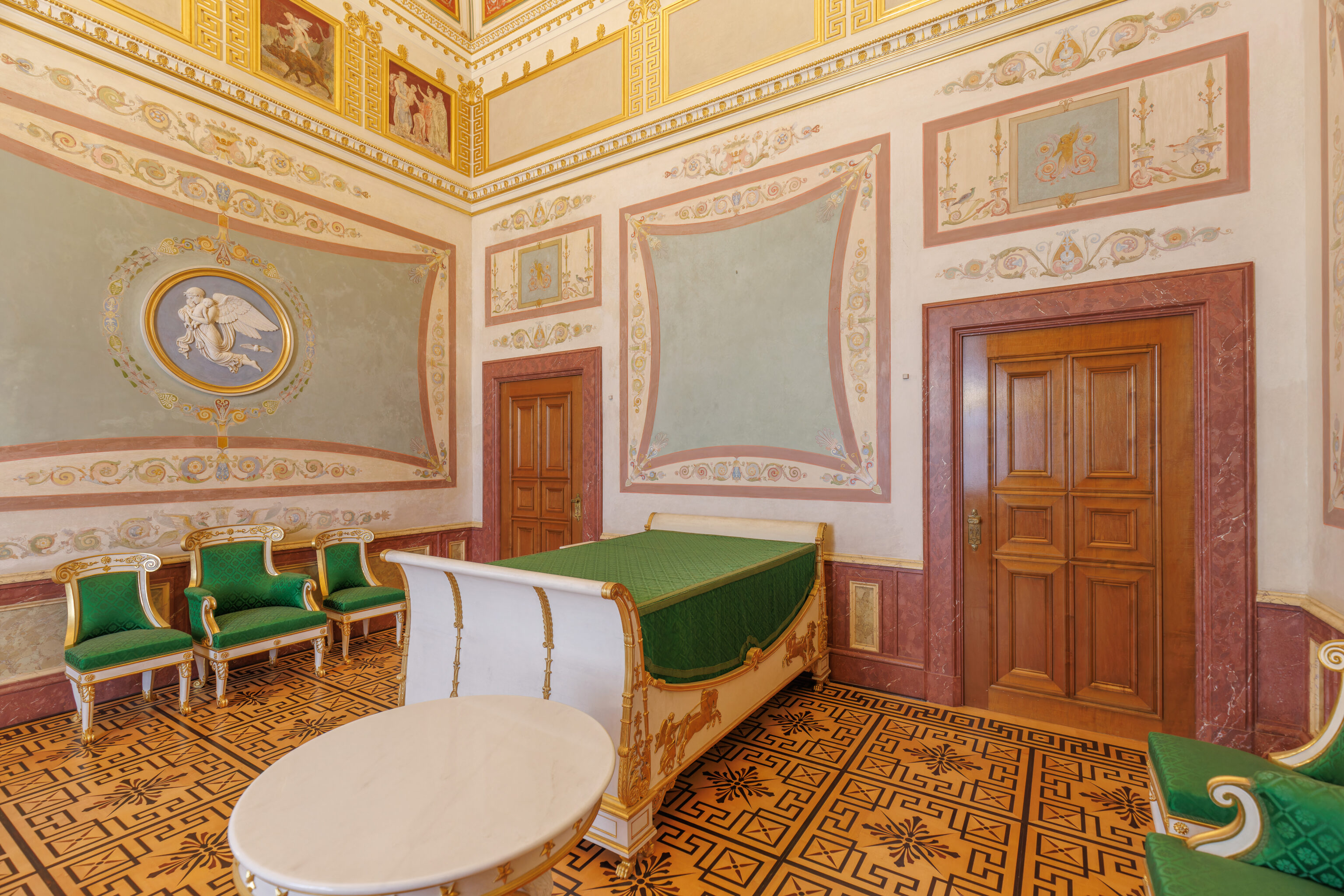
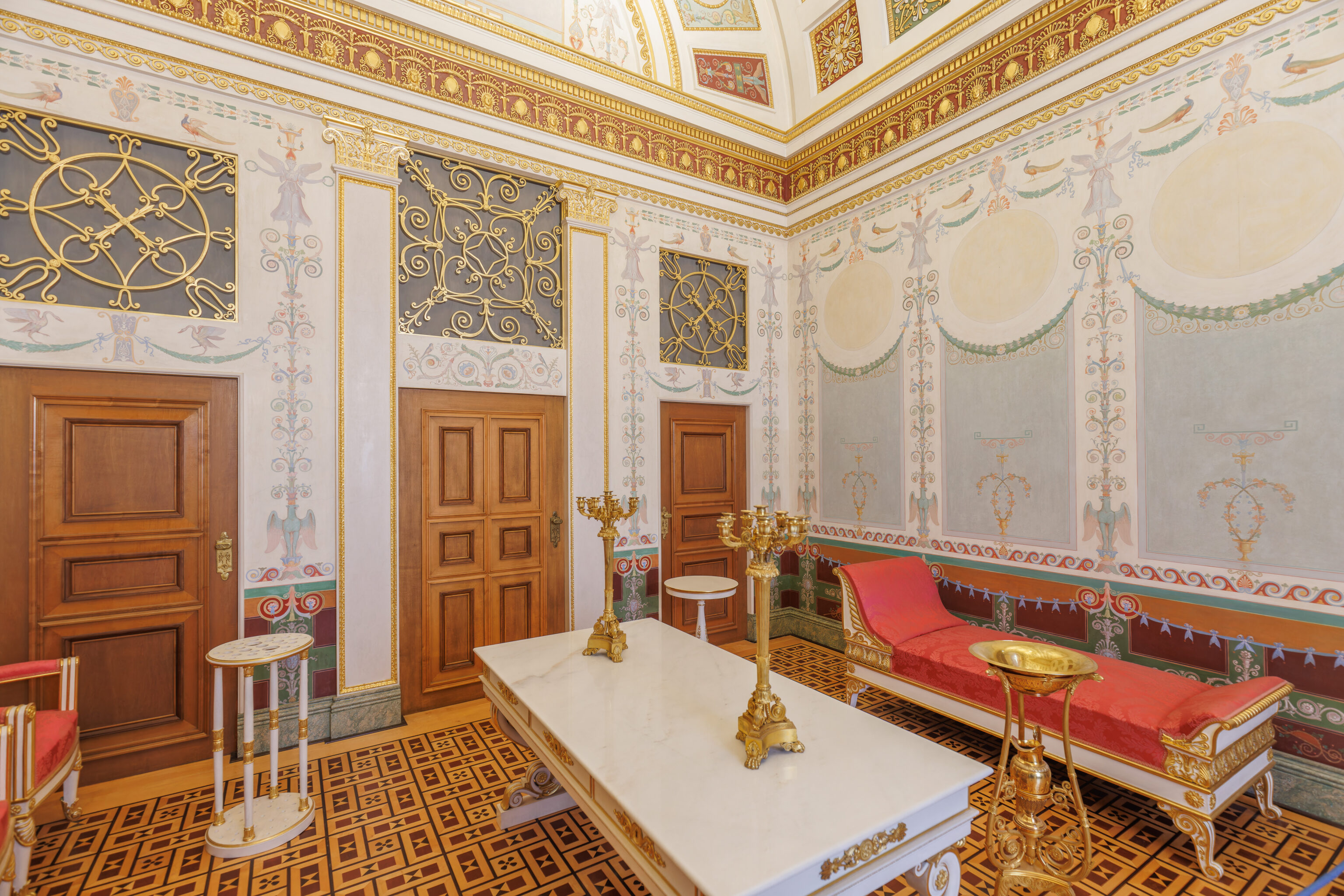
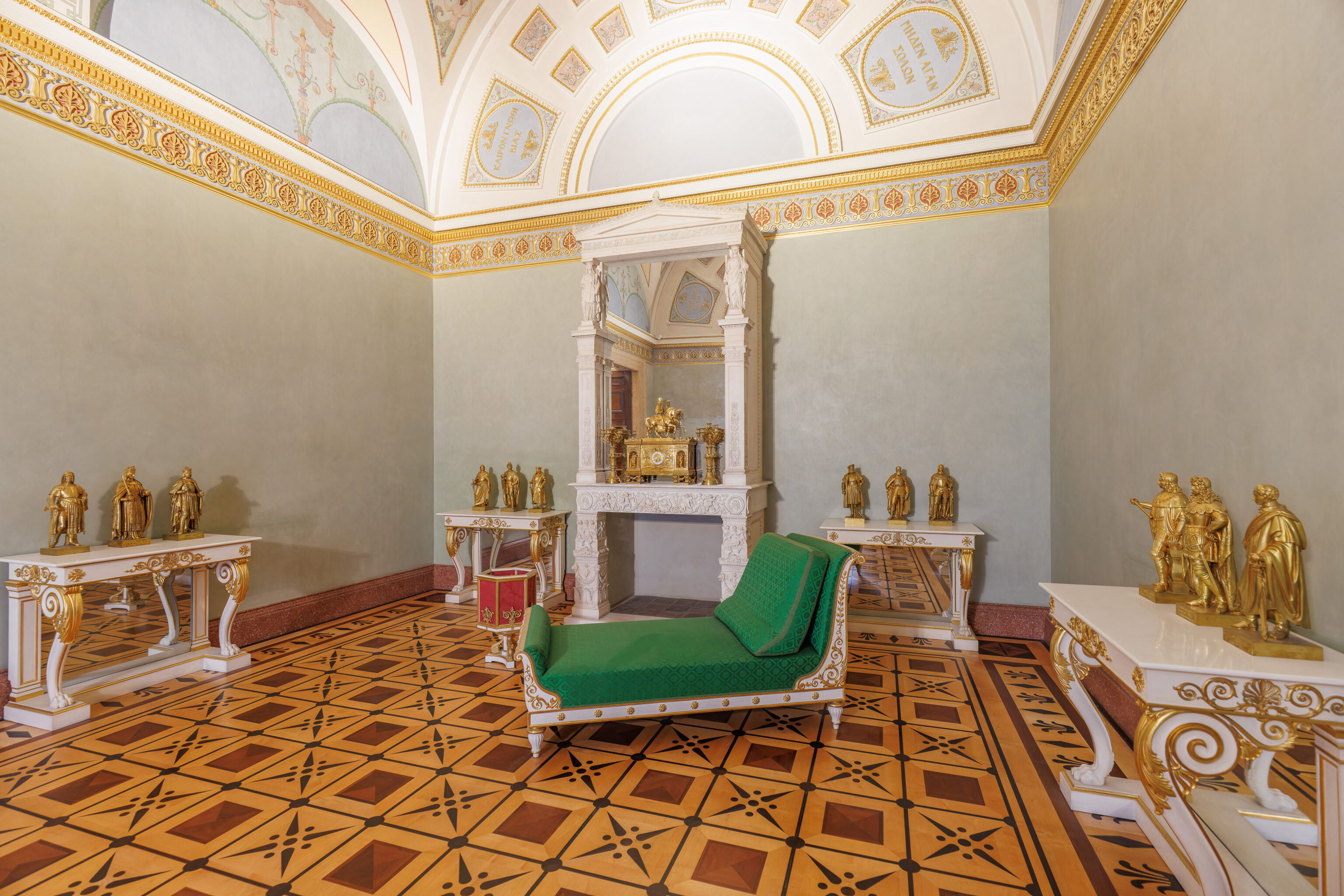
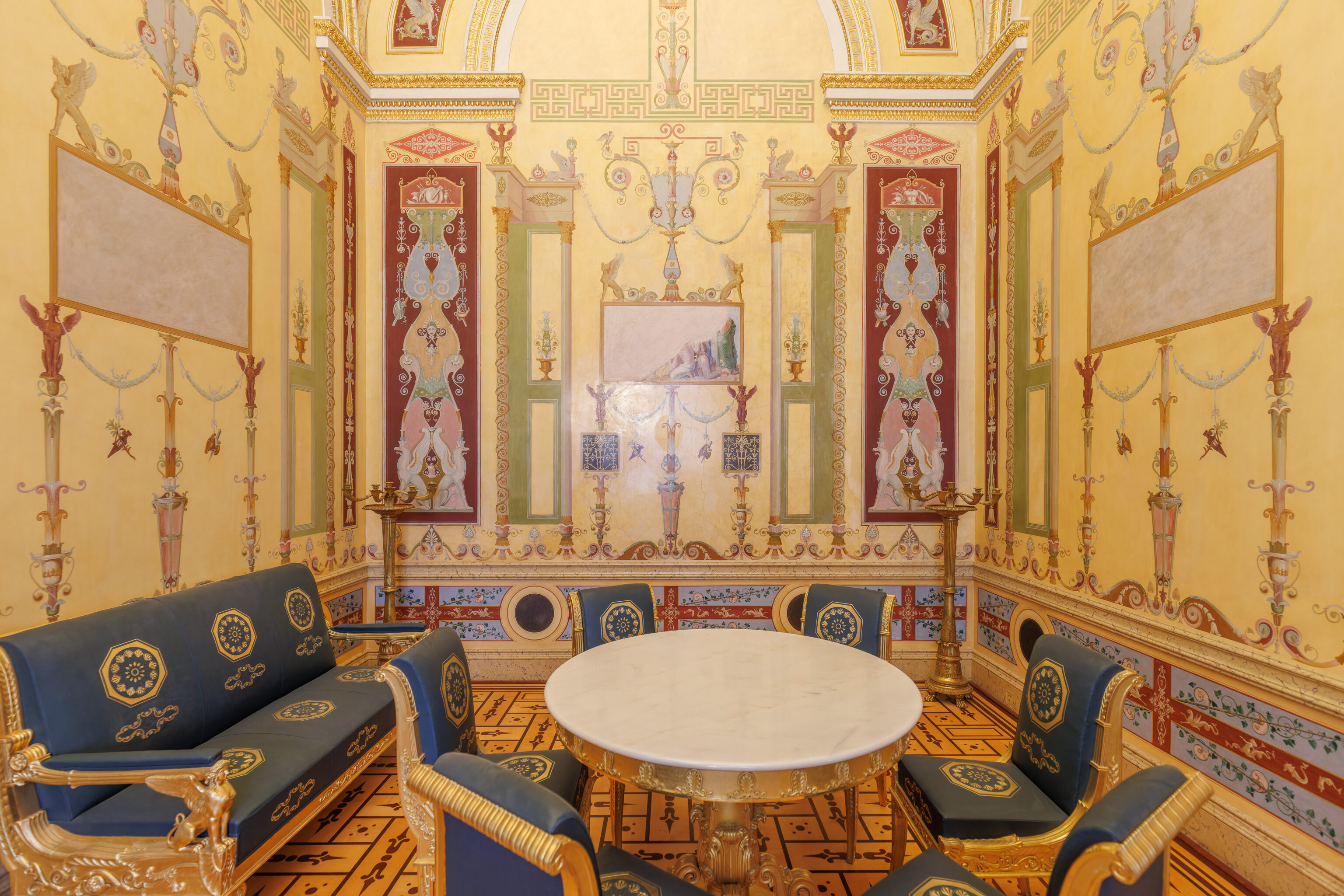
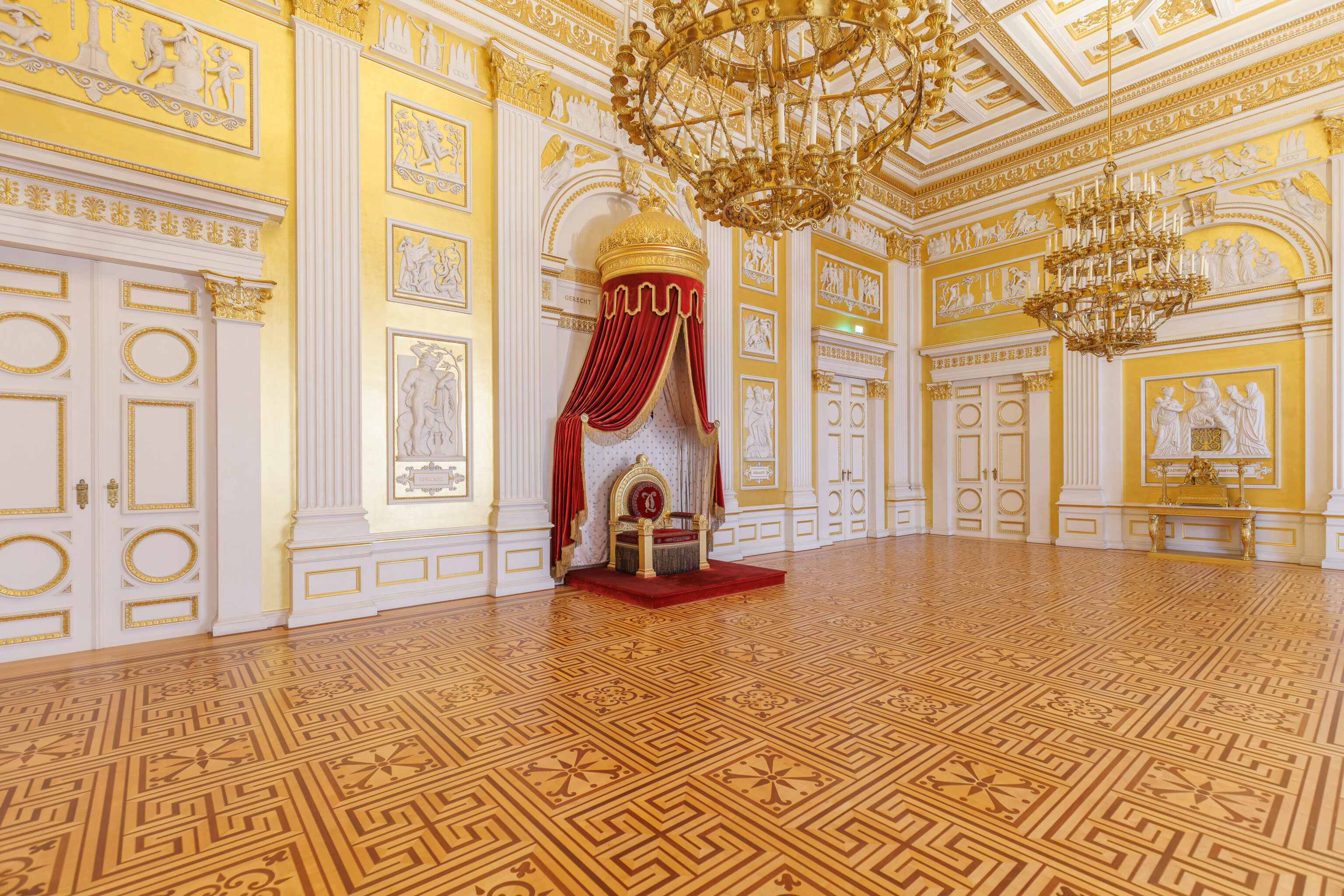
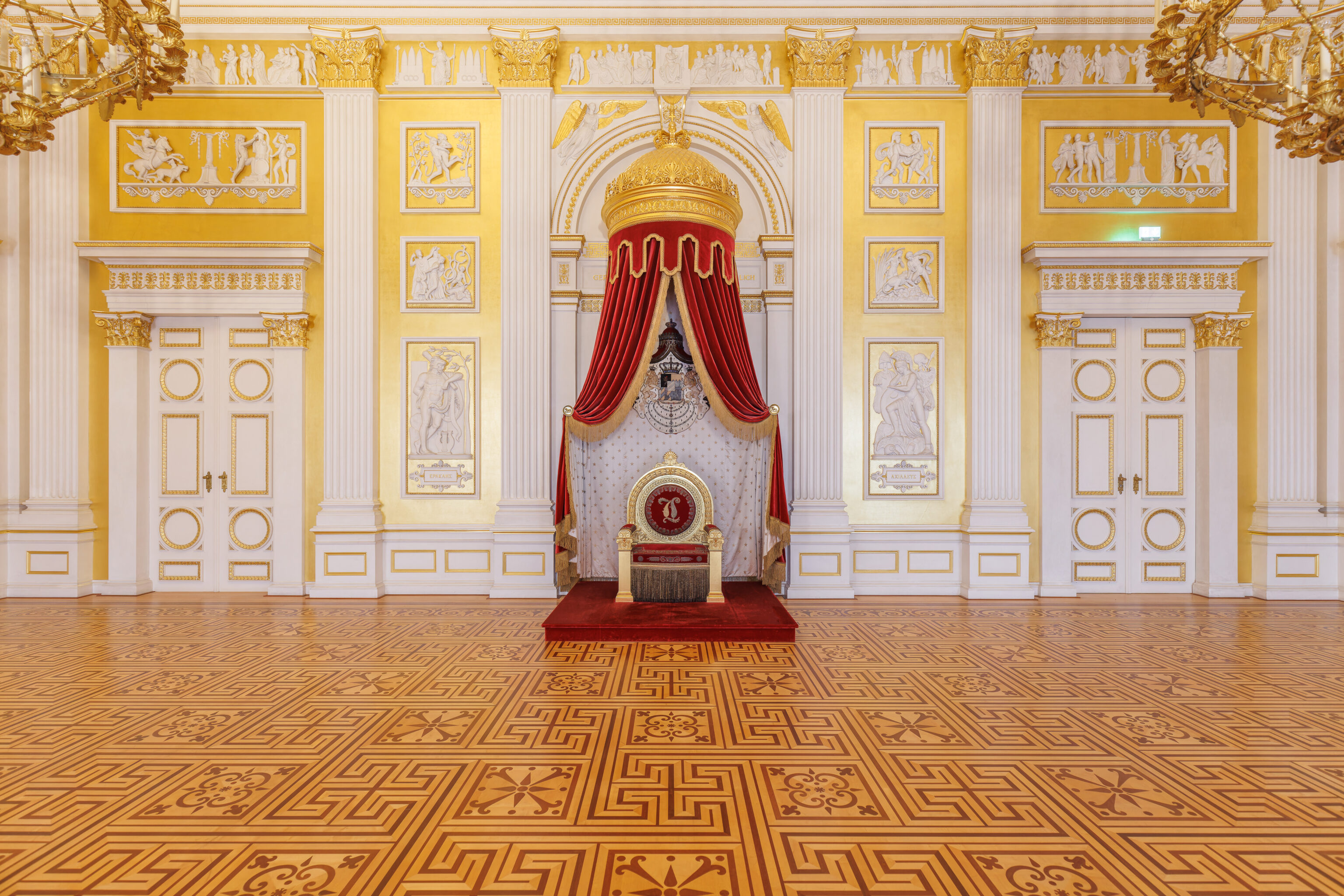
The next series of rooms were the State Apartments, the rooms for the King and Queen.
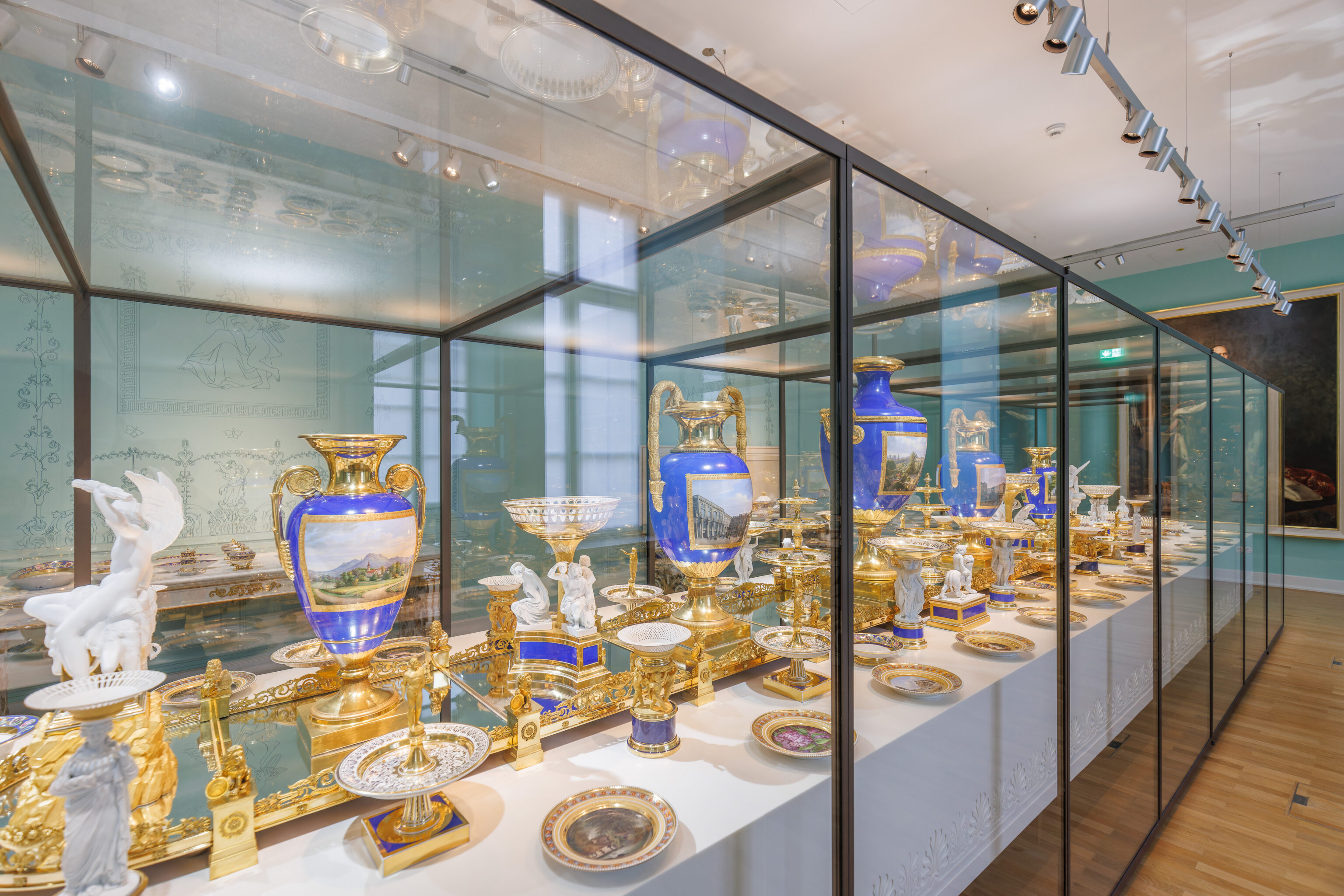
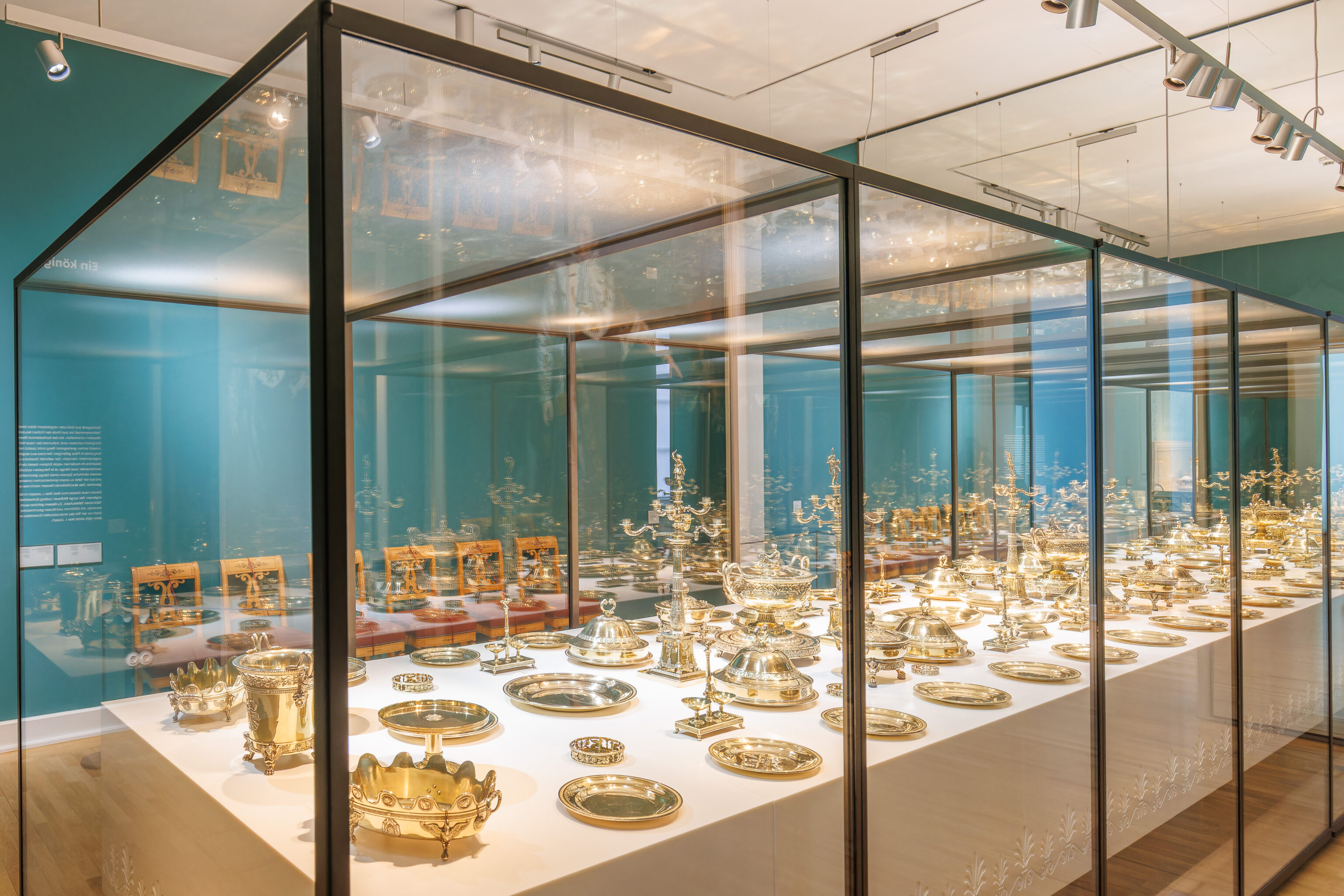
The final area that we visited is described as the Princely Tables. The former dining hall contains porcelain and silver dining service items on large tables.
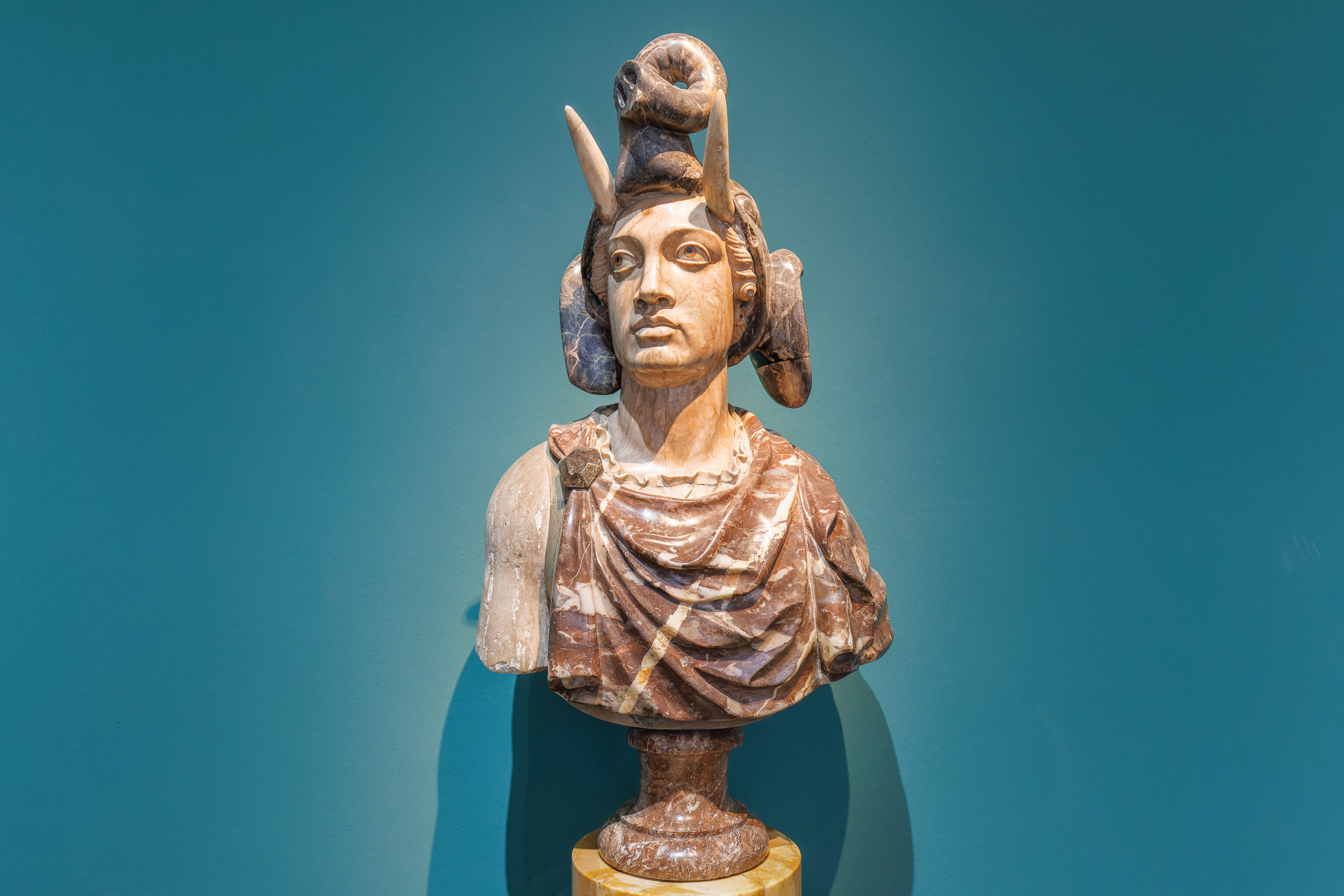
We also saw this odd marble bust of a person with an elephant hat.
Lunch
The Cuvilliés Theatre wasn’t scheduled to be open until later in the day. So, we decided to go get lunch nearby.
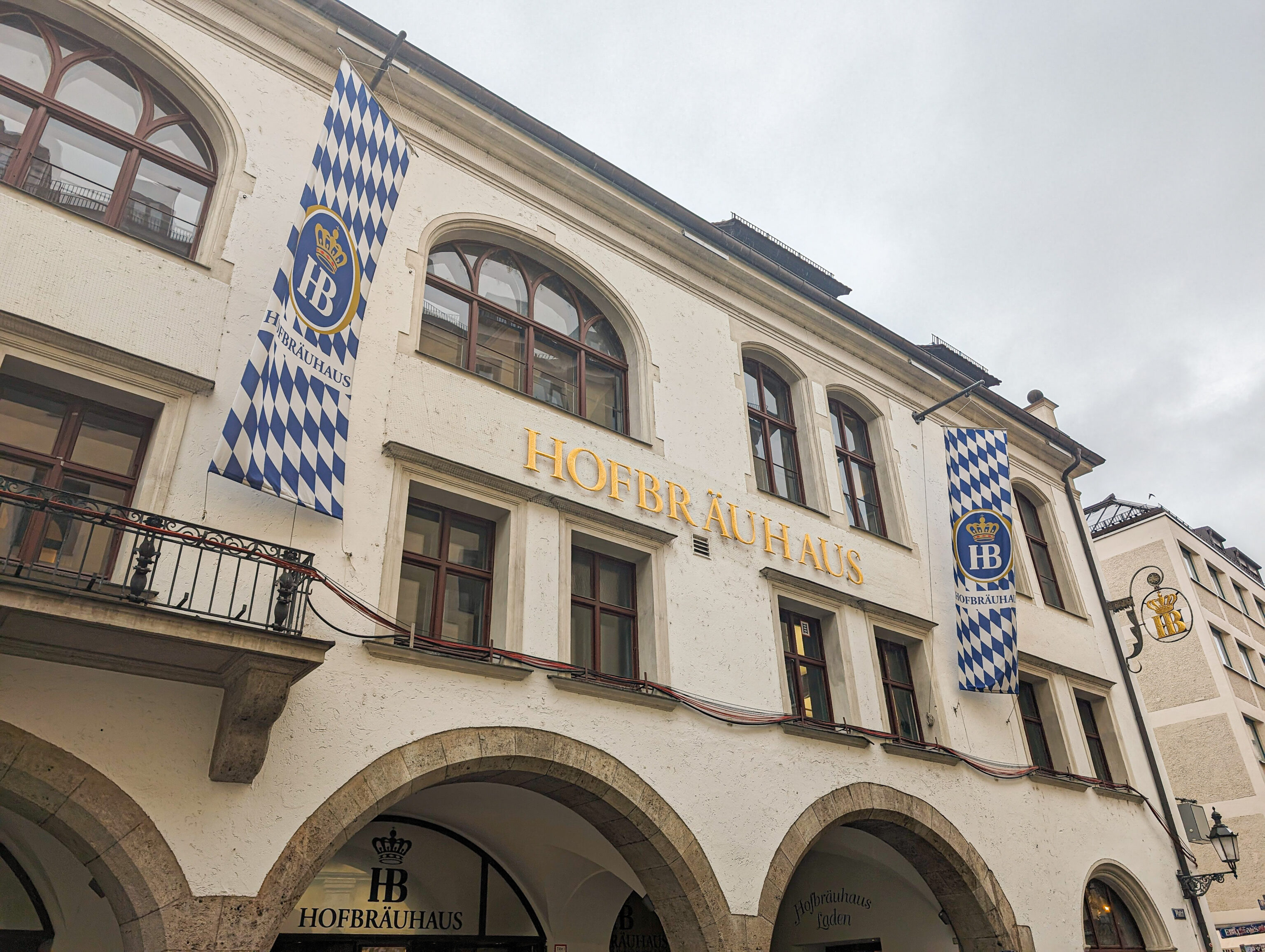
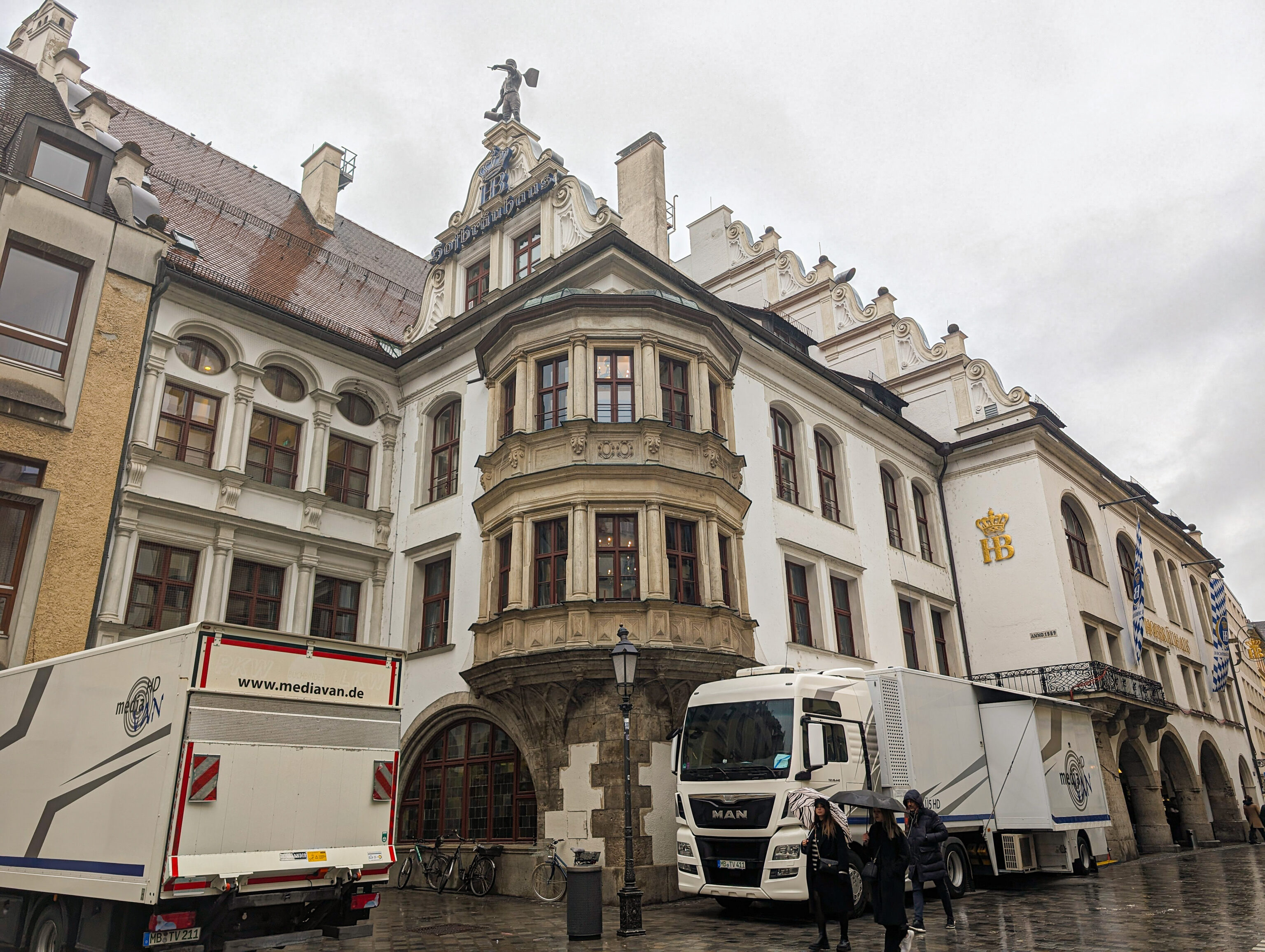
We went to the Hofbräuhaus which was a few blocks away. This large establishment has a large tavern area on the first floor, a regular restaurant on the second, as well as various rooms that can be rented for events. There is also a beer garden in the back. We ate in the tavern area.
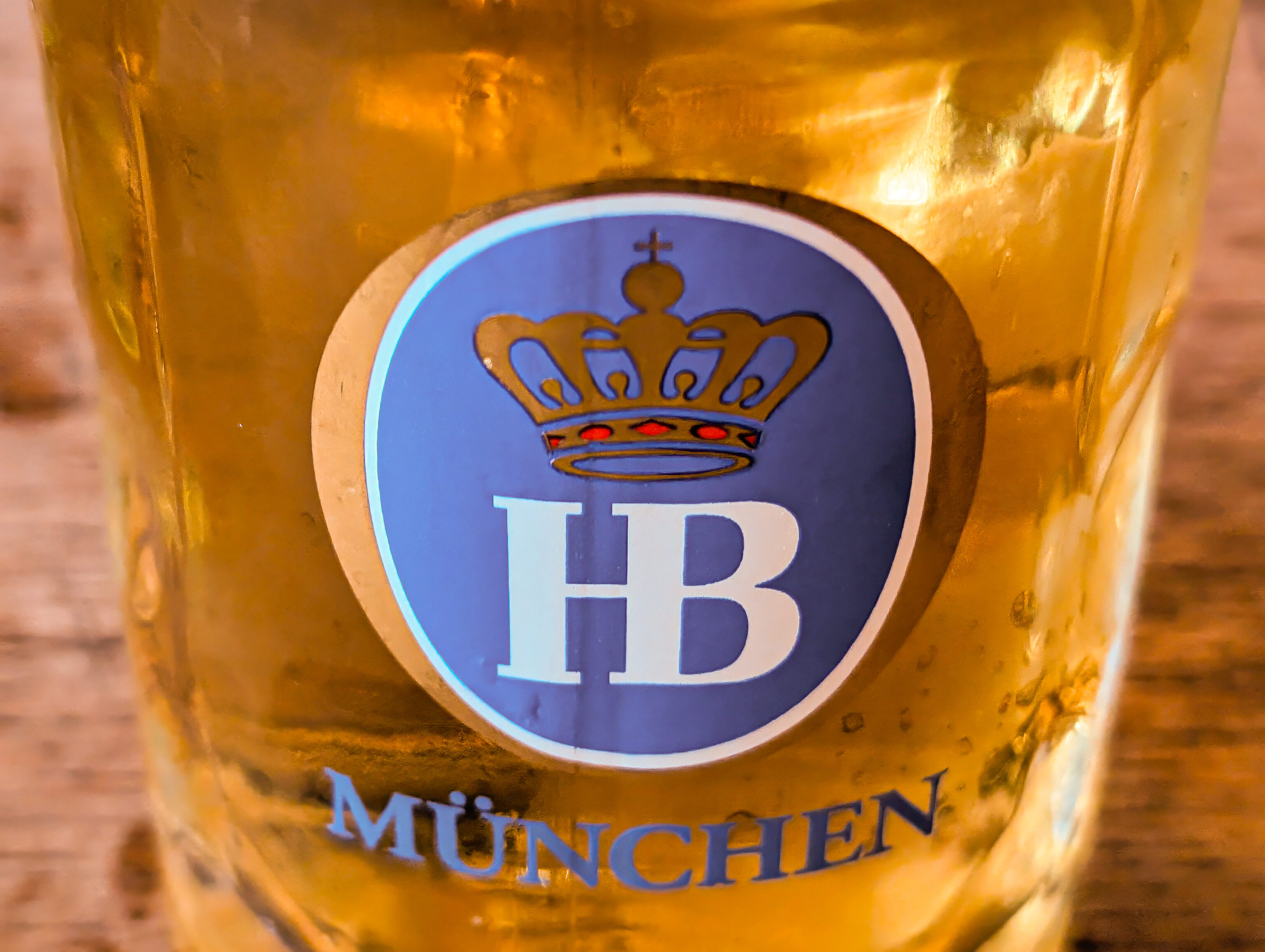
We ordered a half-liter of Hofbräu Original beer. I’m not a fan of beer in general but this type of German beer is quite acceptable!
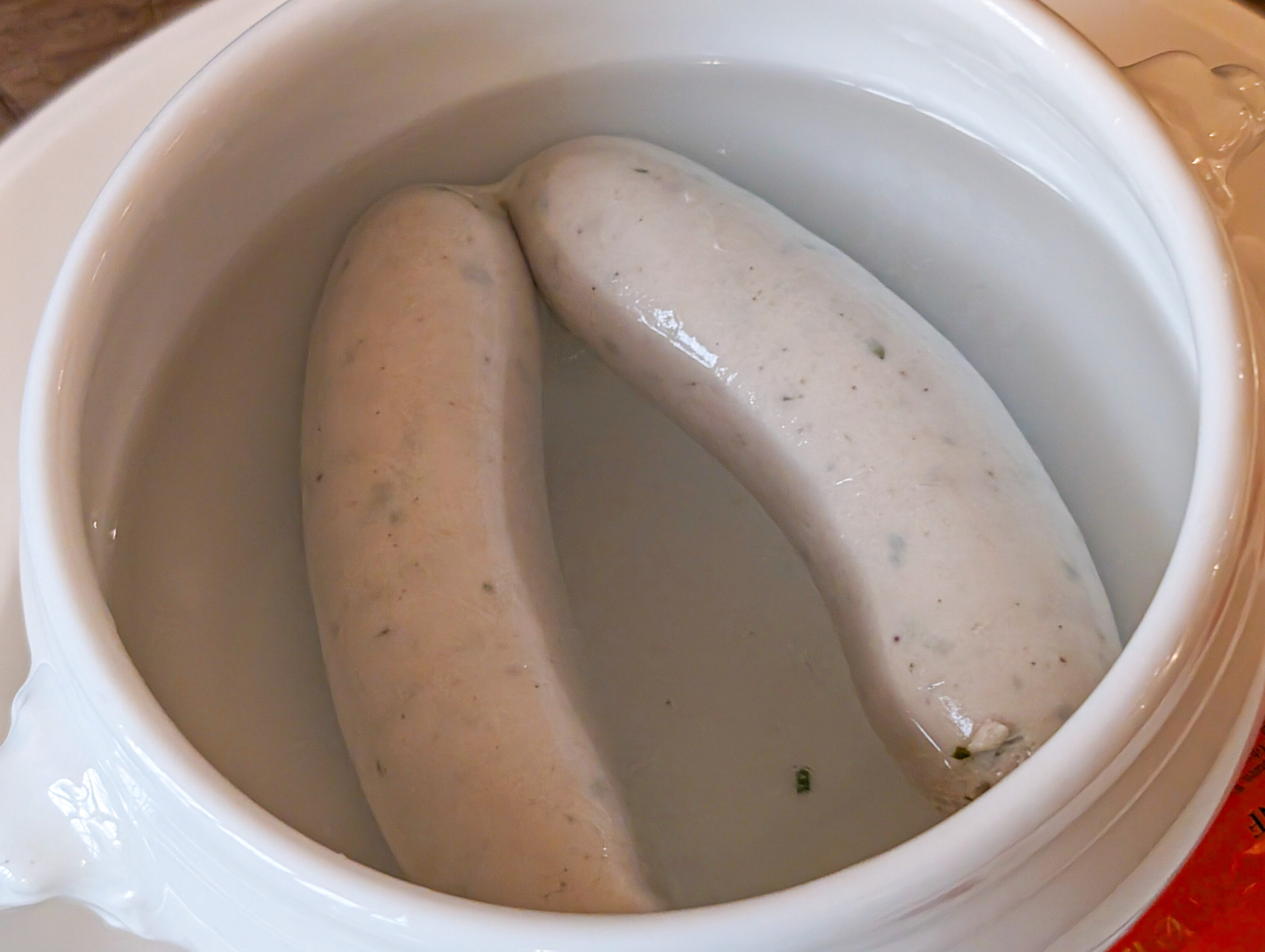
A local Bavarian specialty is Weißwurst (White Sausage). We decided to give it a try. They were served with Süßer Senf (Bavarian Sweet Mustard). We weren’t entirely fond of these sausages, generally preferring the various varieties of Bratwurst. The preparation seemed fine, it just wasn’t our thing.
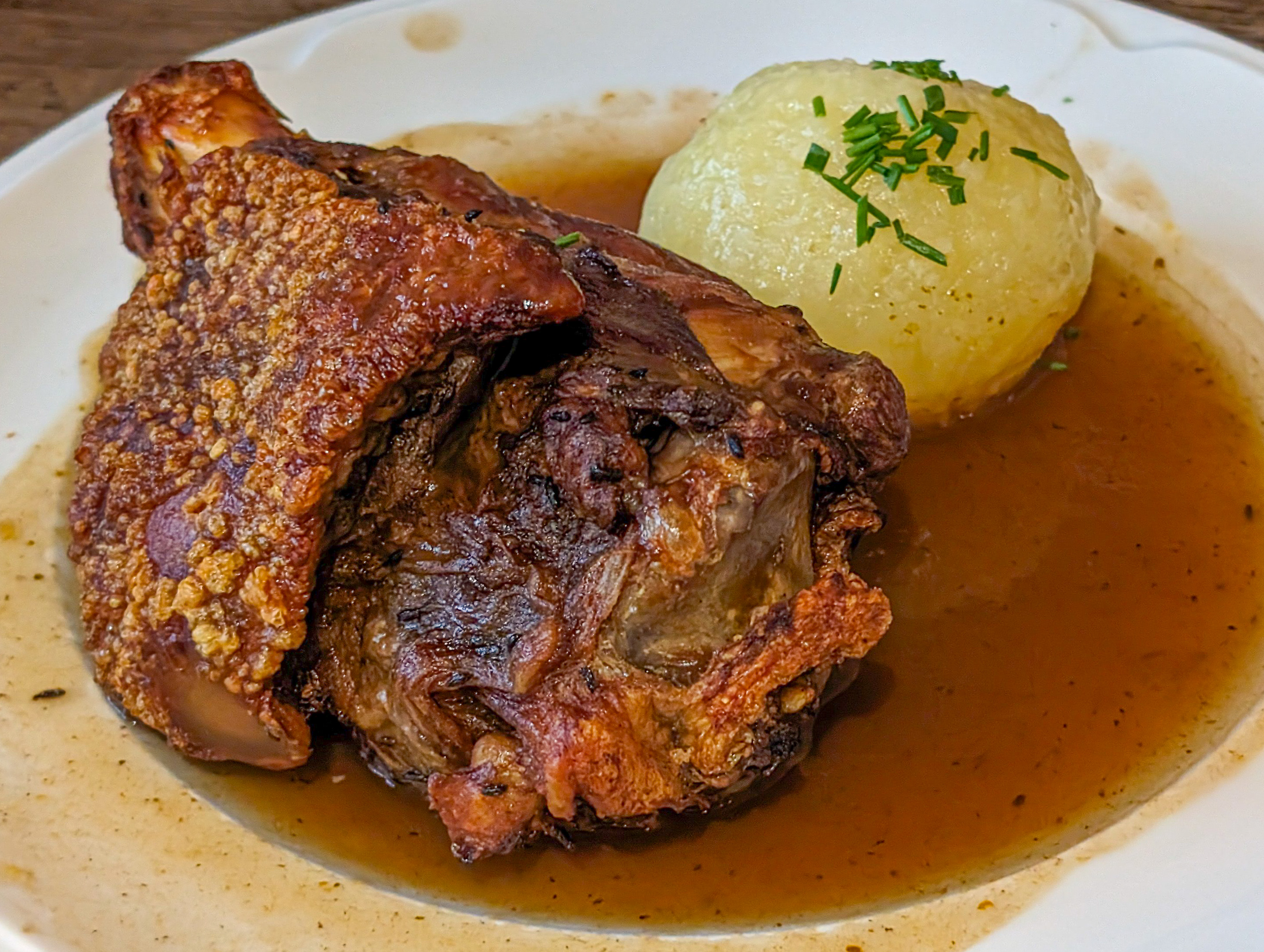
We also ordered a pork knuckle. It was good, not the best we’ve had in Germany, but still quite acceptable! The skin was, of course, crispy.
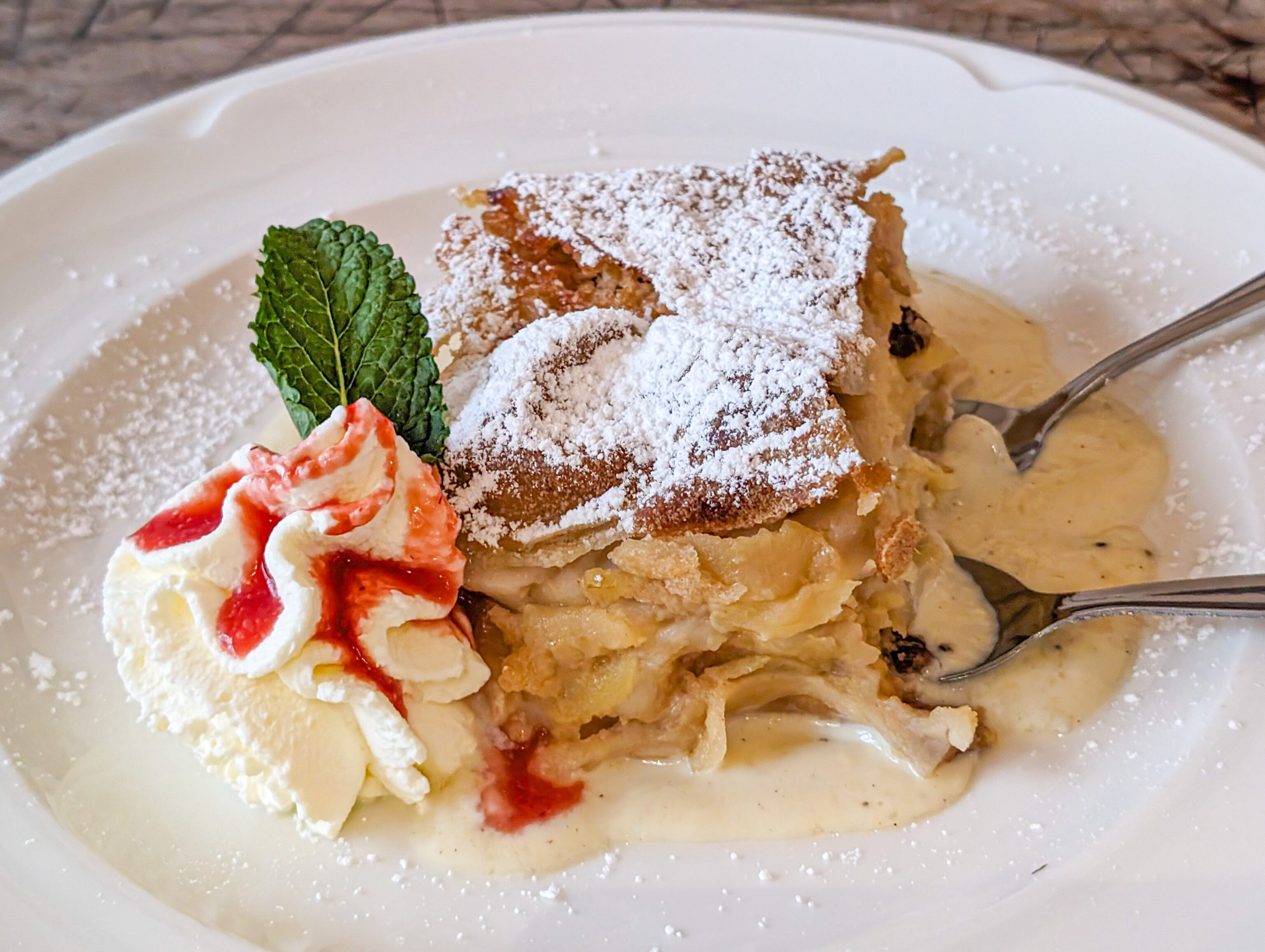
We also ordered apple strudel for dessert. Our waiter ended up giving us two orders, which we didn’t realize until paying.
So far, this is the only establishment we’ve encountered in Germany where the waiter pressured us for a 10% tip. It didn’t work. The Germans seem to have a variety of tipping habits in restaurant settings, from always tipping some percentage, to never tipping, and everything in between. The only thing they can seem to agree on is tip is never required in the sense that it is effectively required in the US and that it it would not be appropriate to pressure for a tip as it is supposed to be freely given by the customer rather than some sort of obligation like it is these days in the US.
While the food was decent and it was an interesting and different environment to eat in, we would not return.
Cuvilliés Theatre
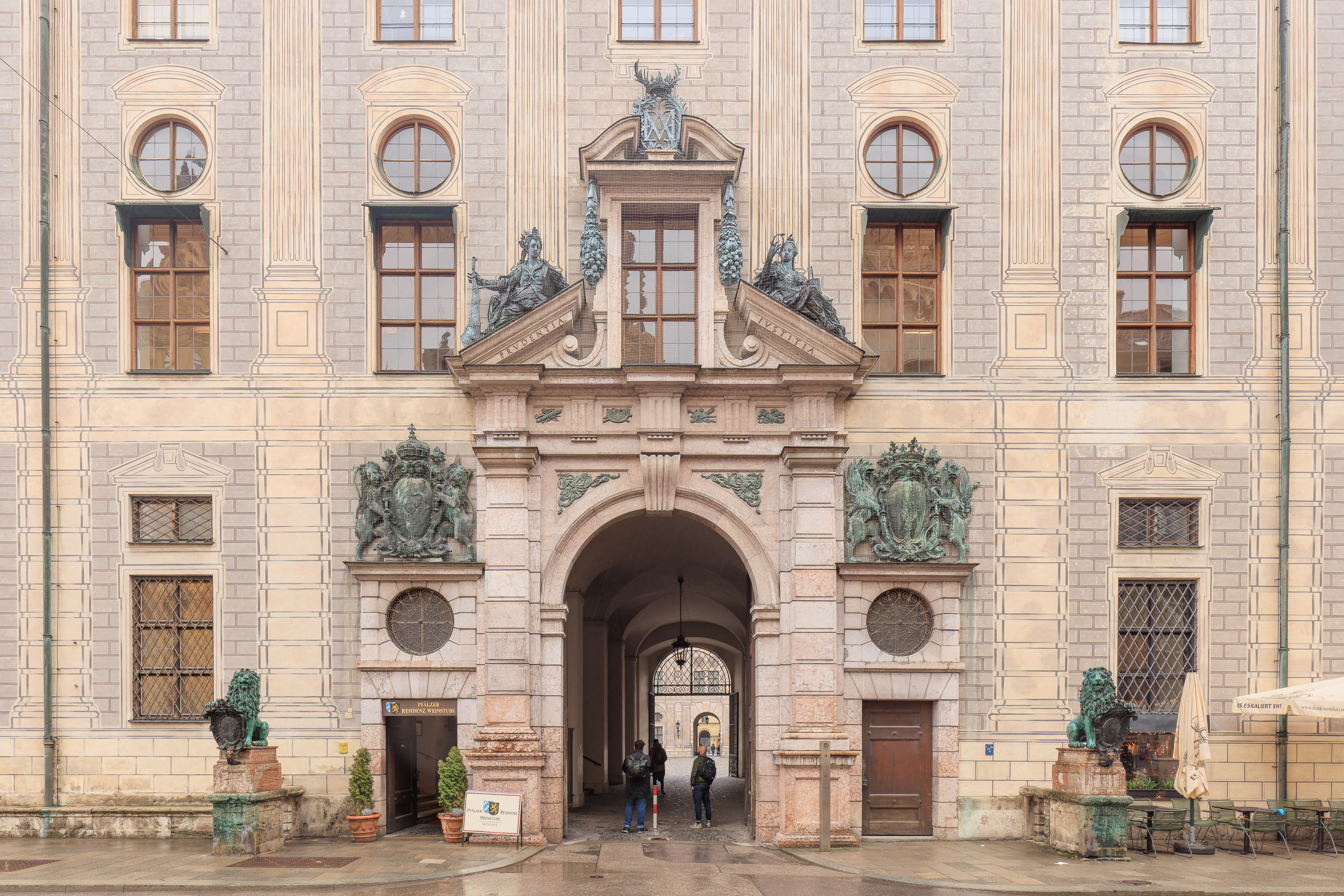
After lunch, we walked back to the Residenz to see the Cuvilliés Theatre. It wasn’t clear what the the best way to enter was as it is not accessible via the rest of the museum area. We ended up entering via this passageway on the west side of the block, across from the Odeonsplatz.
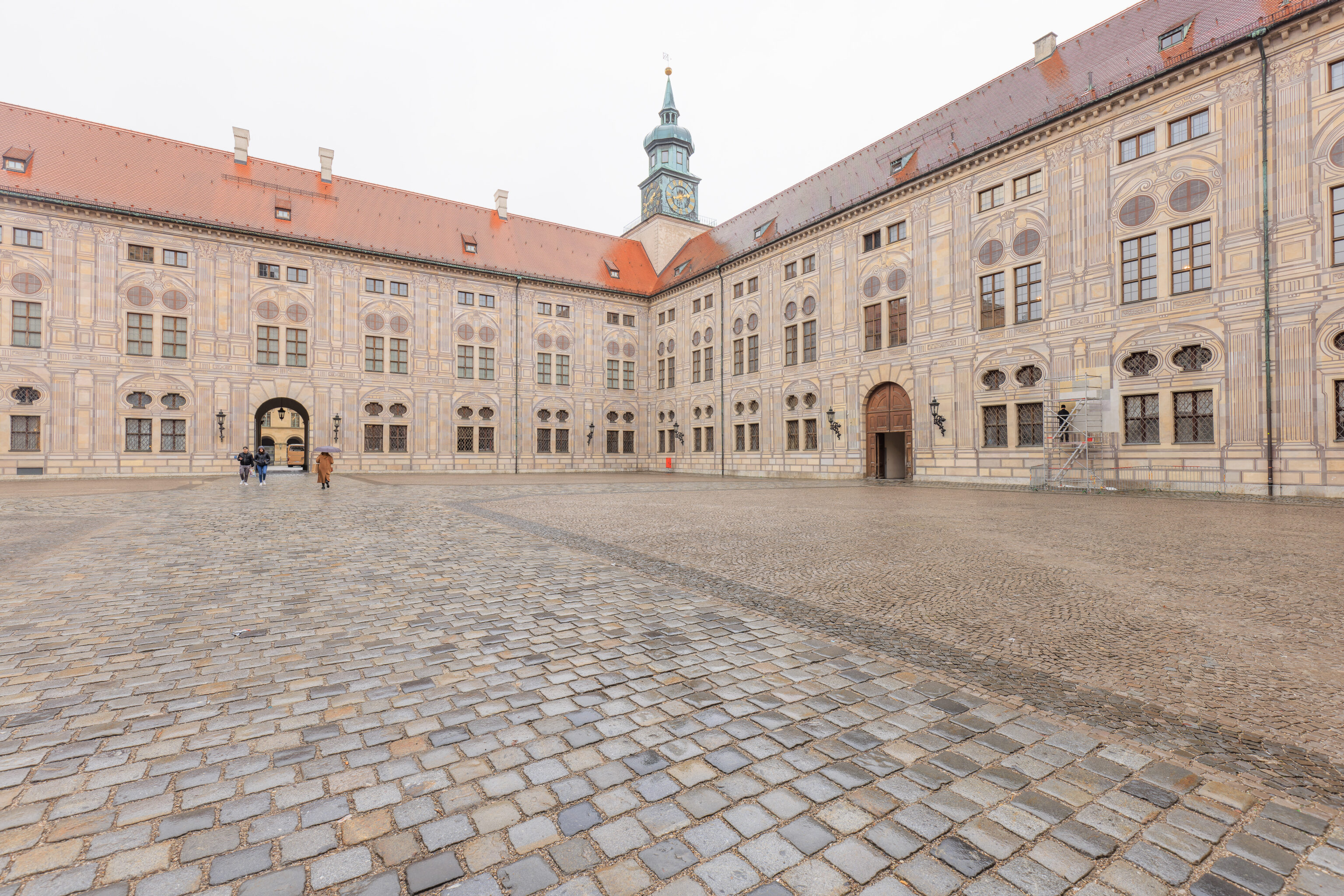
We walked through this plaza which we saw earlier from inside!
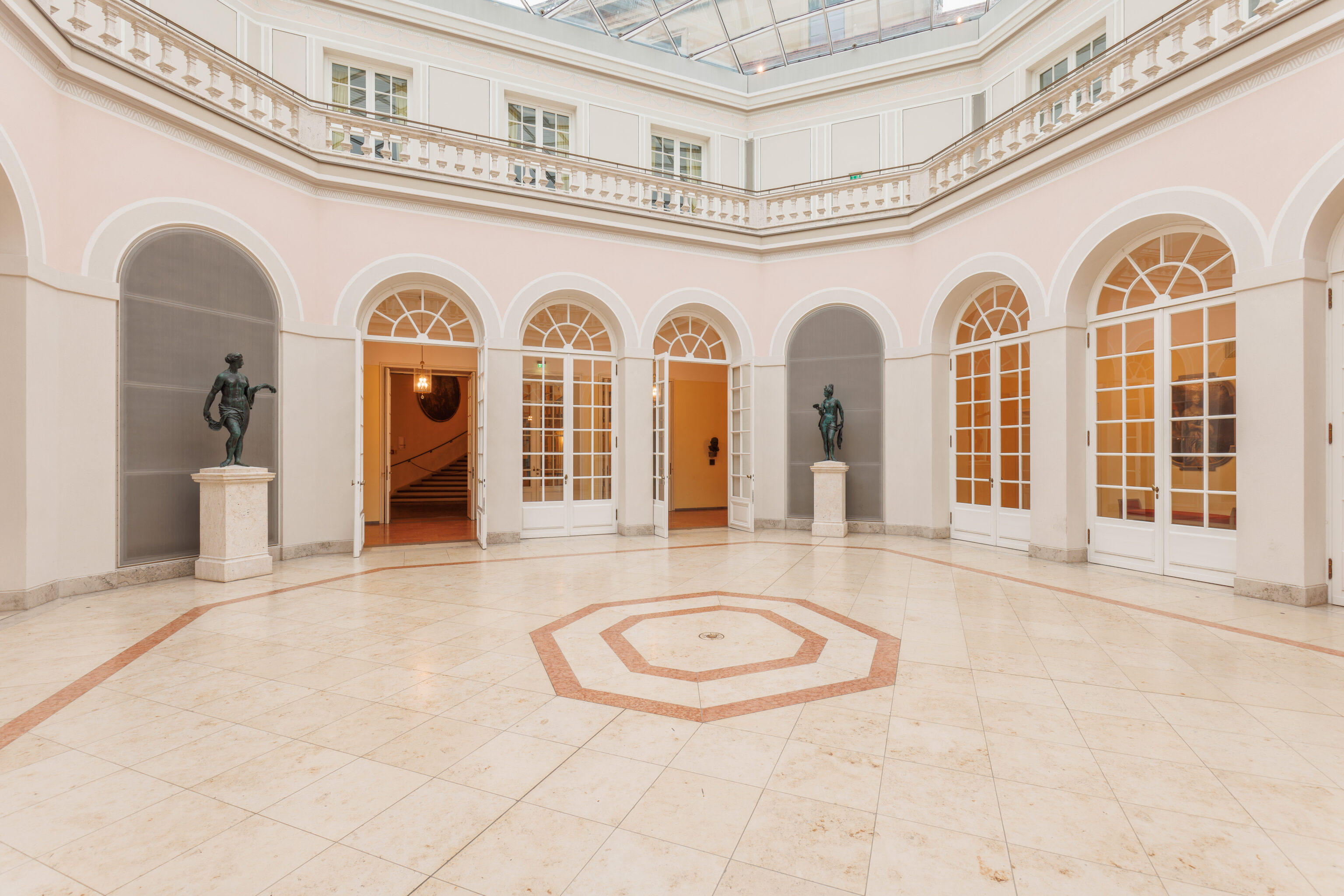
After walking through a larger plaza, we found the entrance to the Cuvilliés Theatre. It wasn’t very obvious, primarily due to the lack of any significant signage.
This enclosed space was interesting as its design resulted in a very effective echo chamber!
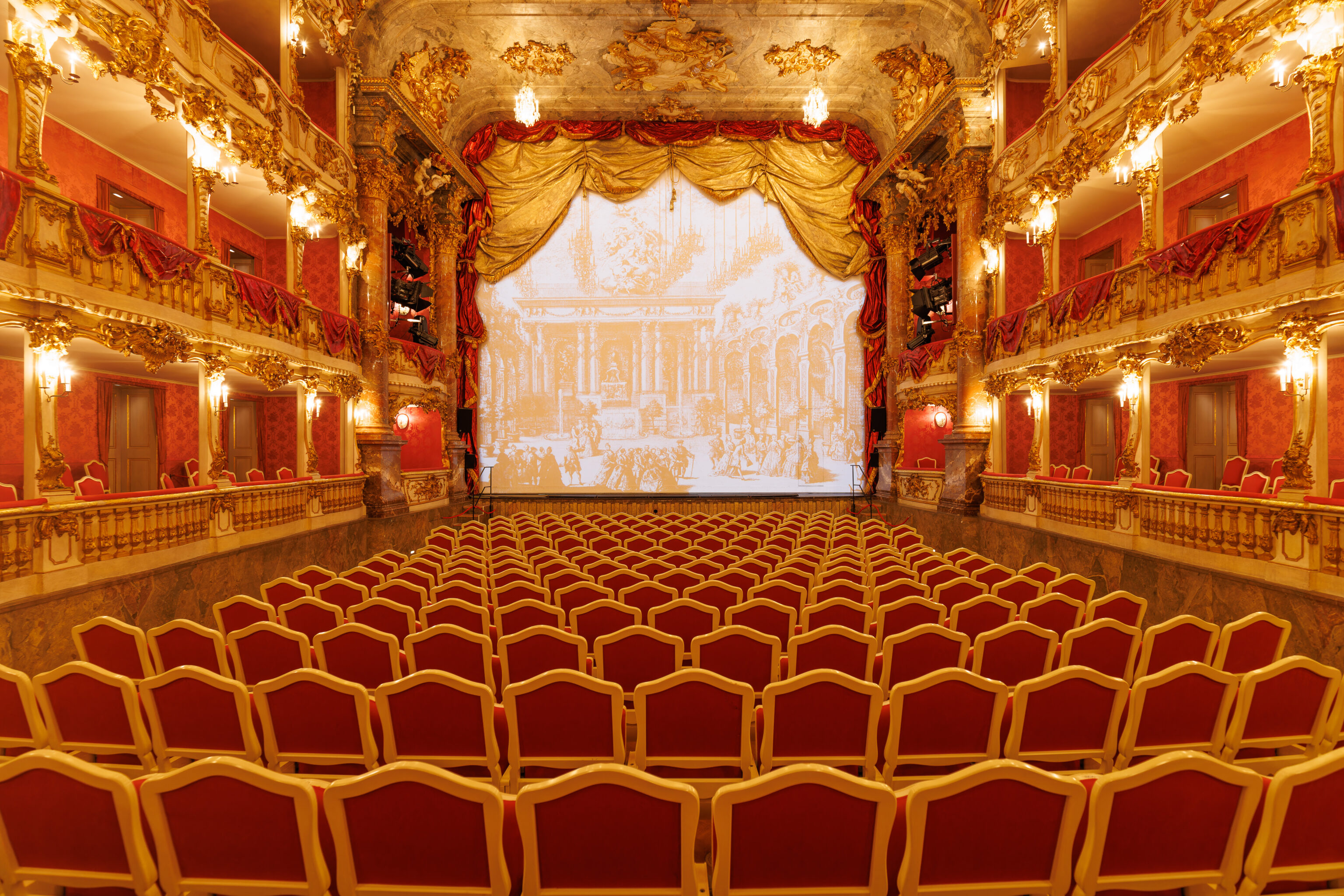
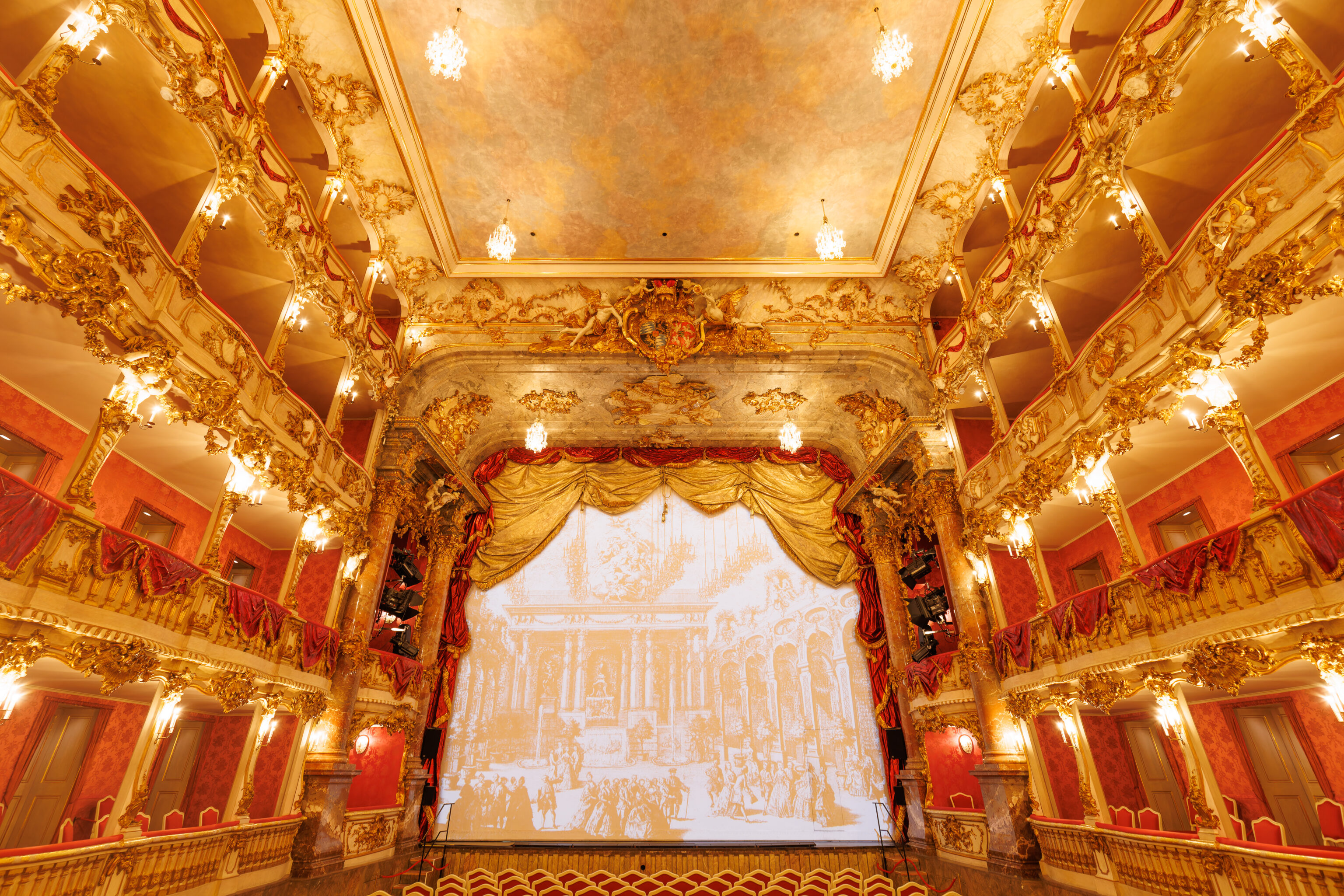
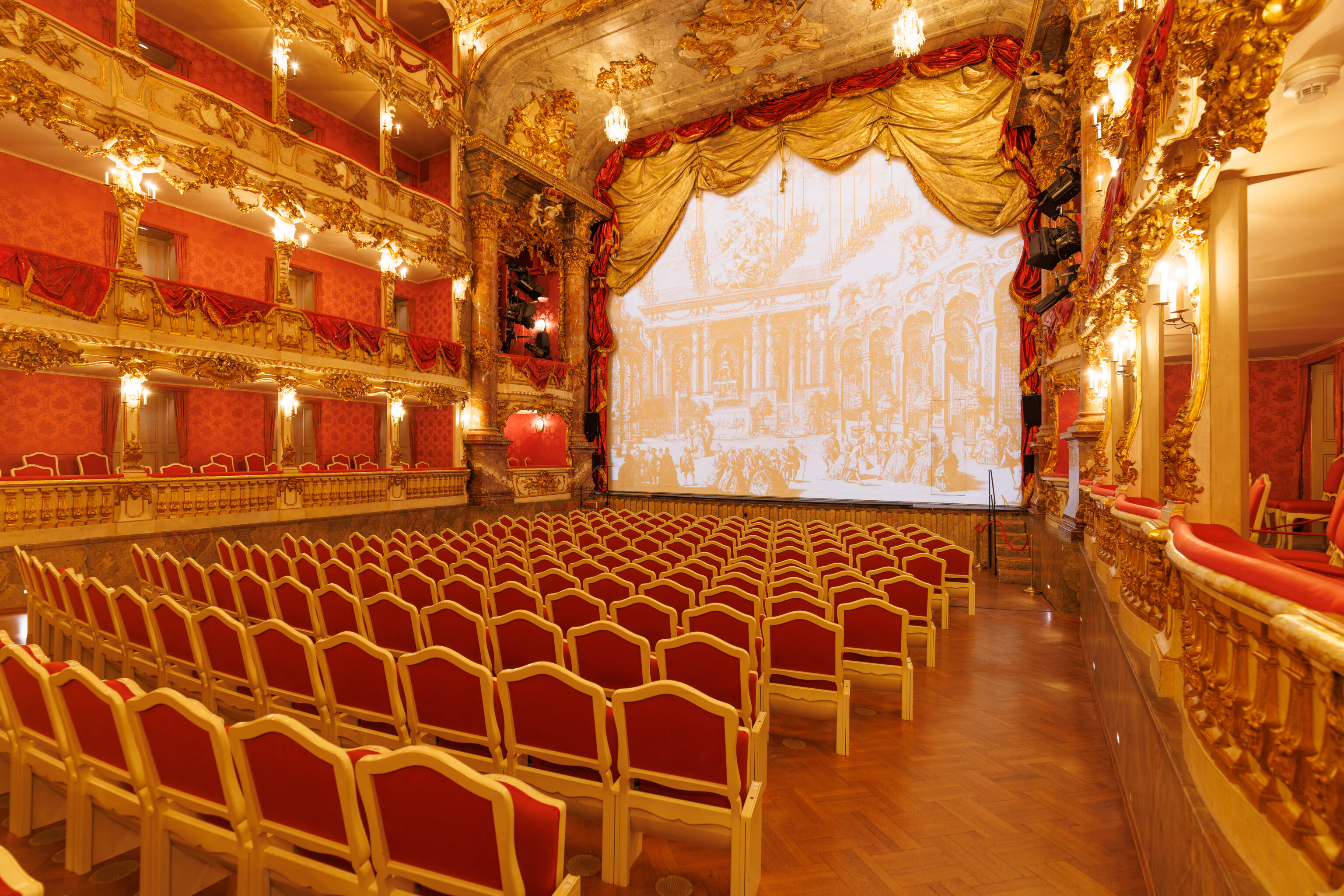
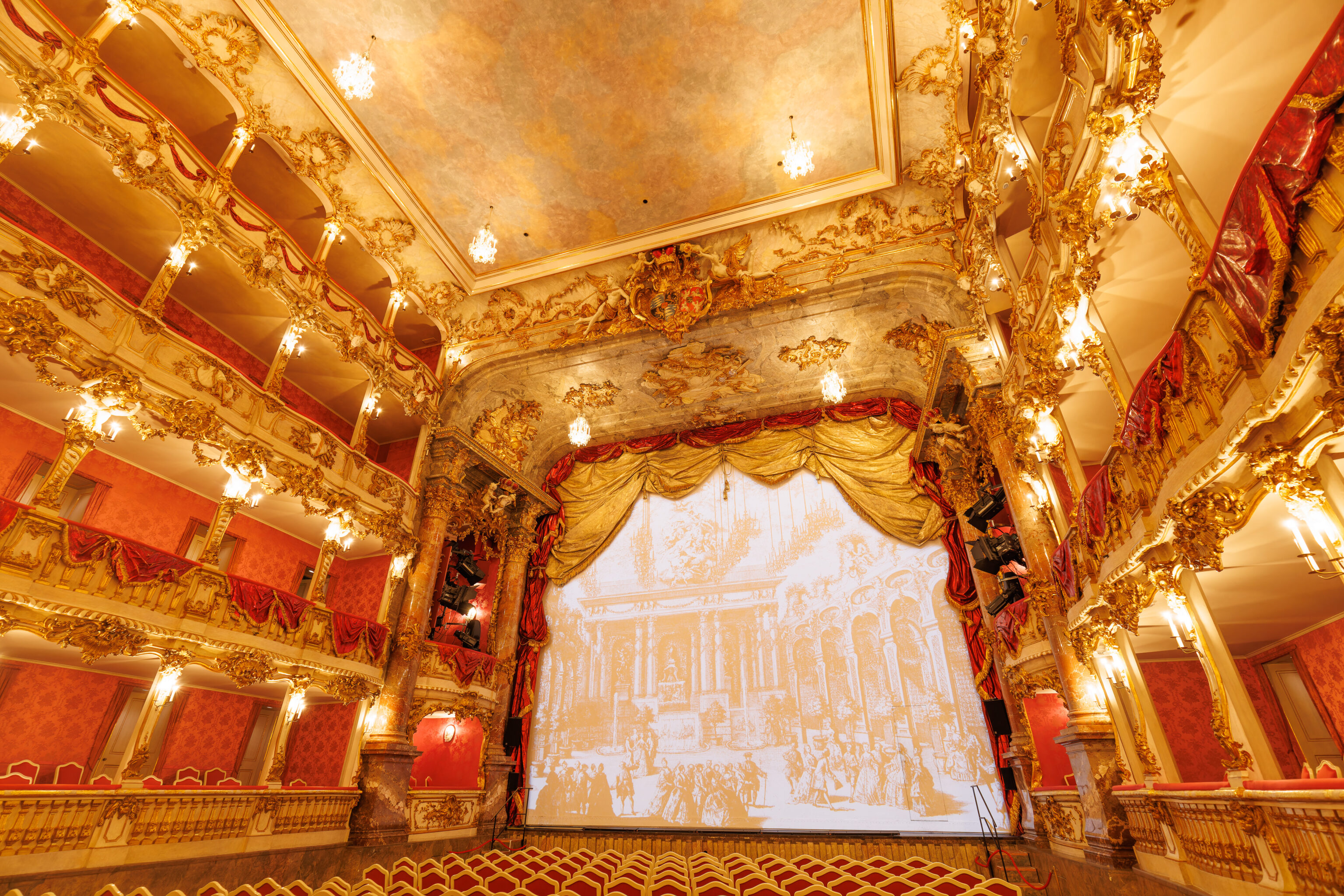
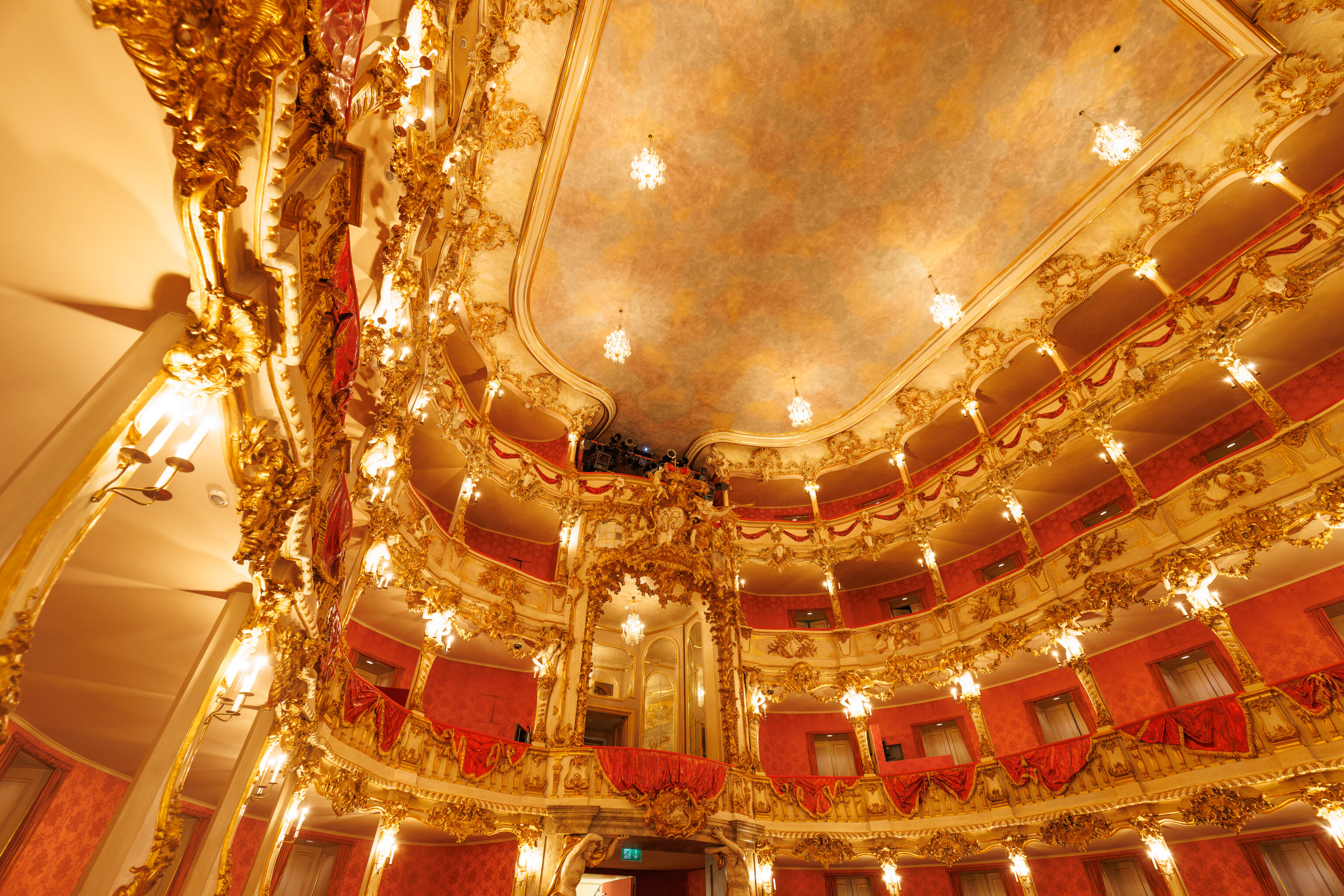
The theatre was just beyond. It was smaller than expected but had many intricate decorations. Interestingly, the drapes and other cloth-like details are not actually cloth but carved out of wood! It is a very realistic looking effect.
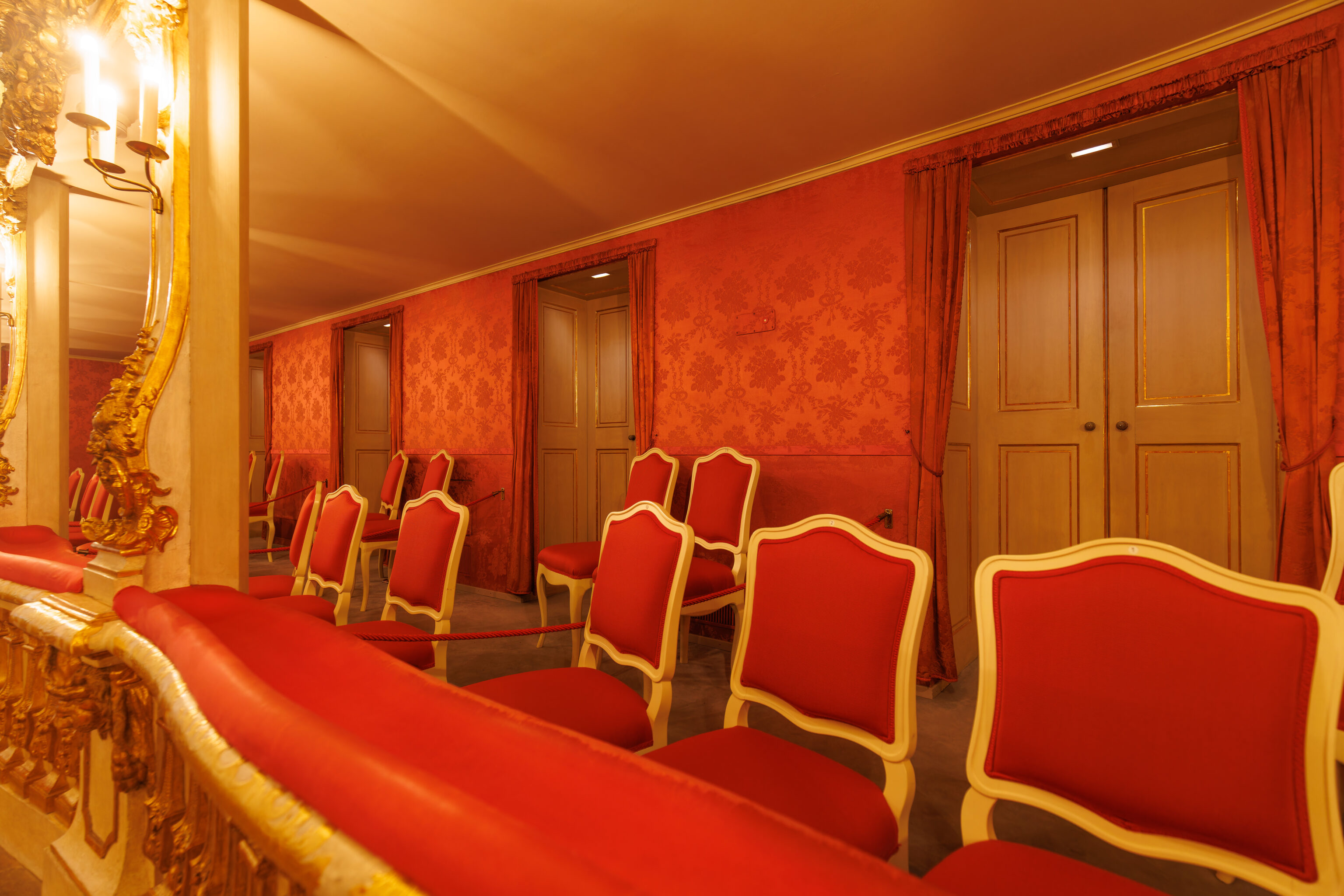
The seating is all just regular chairs, even in the gallery sections.
Hofgarten
Next, we headed to the Hofgarten, a park just to the north of the Residenz. We entered from the southeast corner near the Bayerische Staatskanzlei (Bavarian State Chancellery).
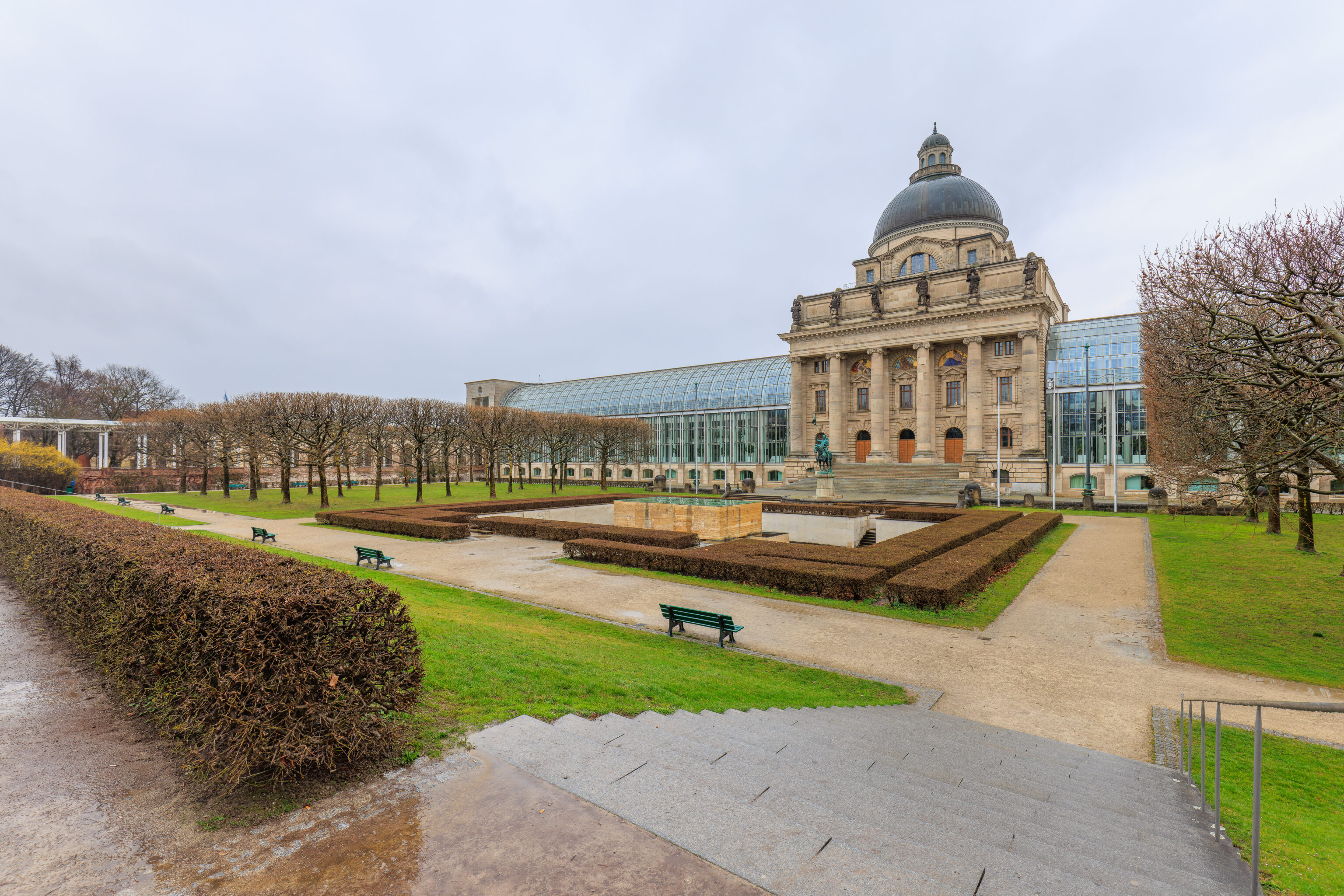
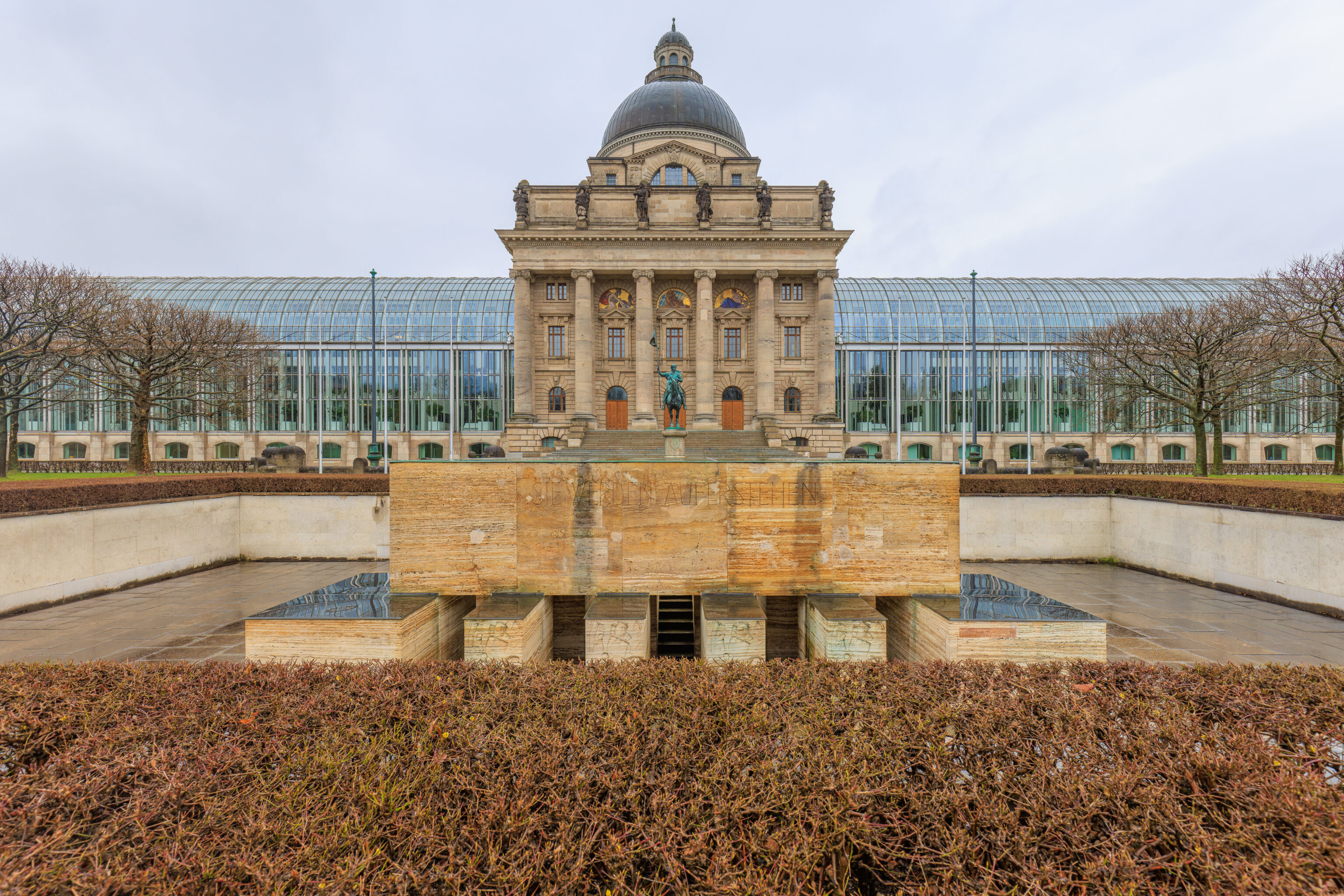
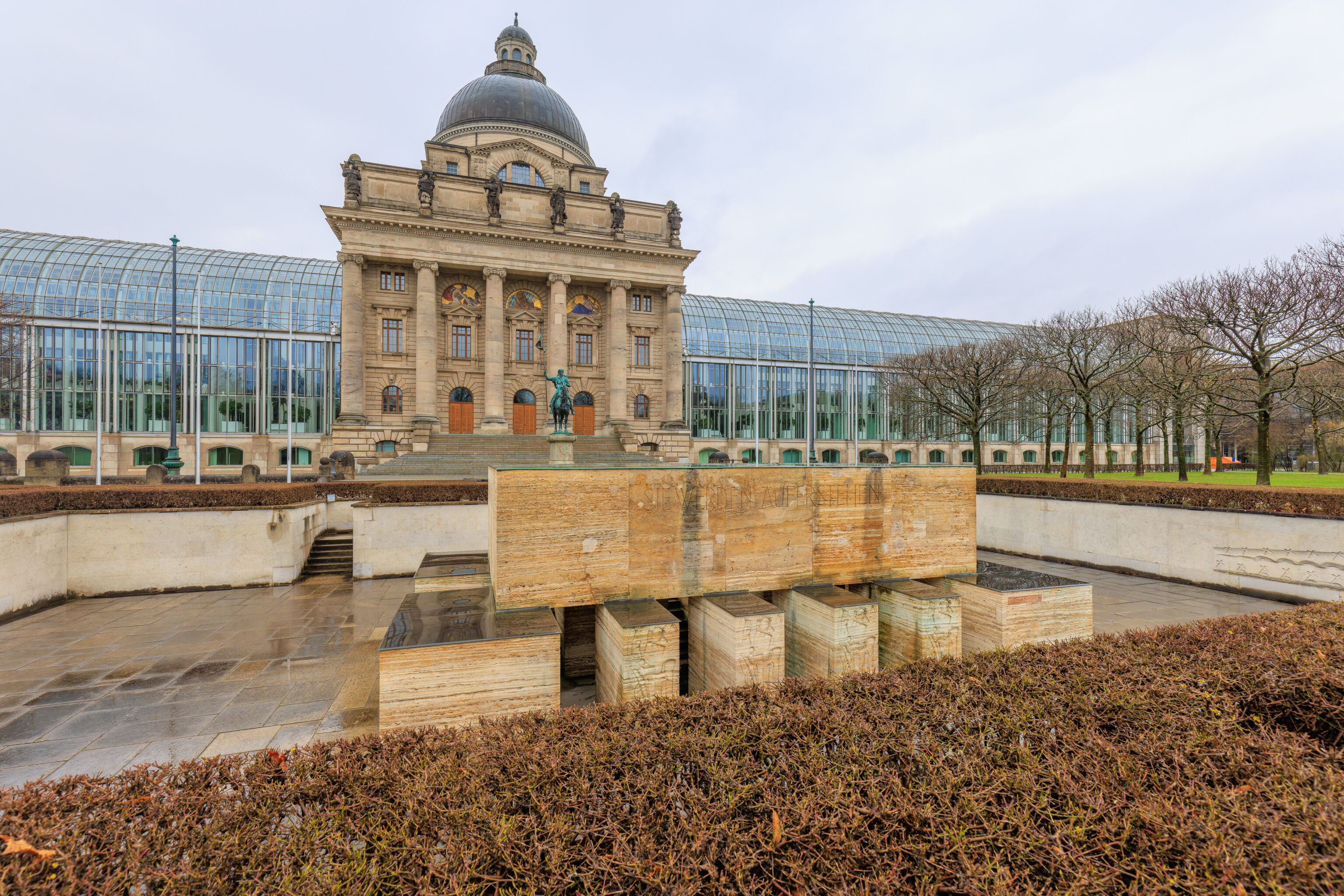
There is a war memorial, the Kriegerdenkmal im Hofgarten, in front of the Chancellery building. It is from the 1920s and is a memorial for the German soldiers from Munich who died during World War I.
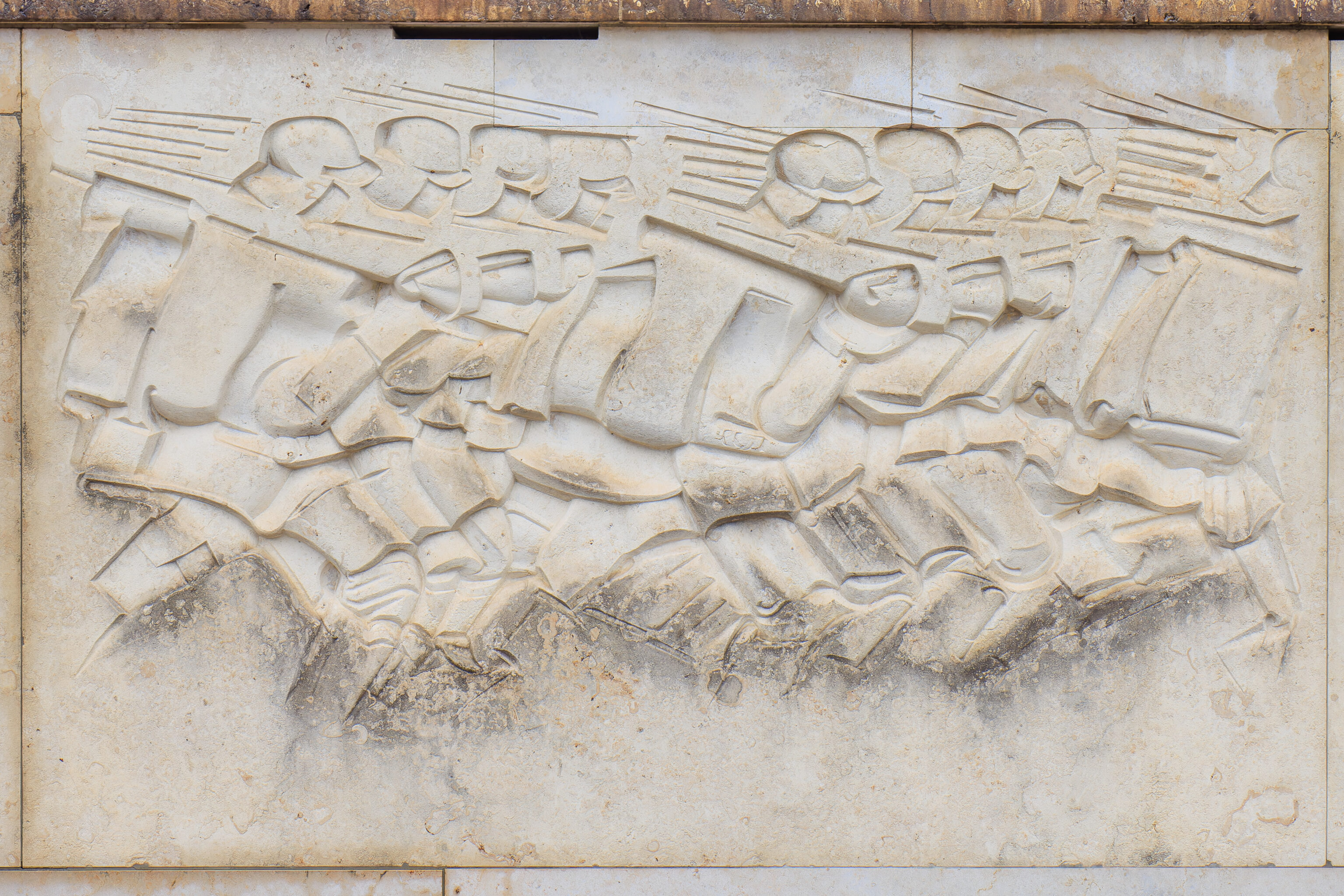
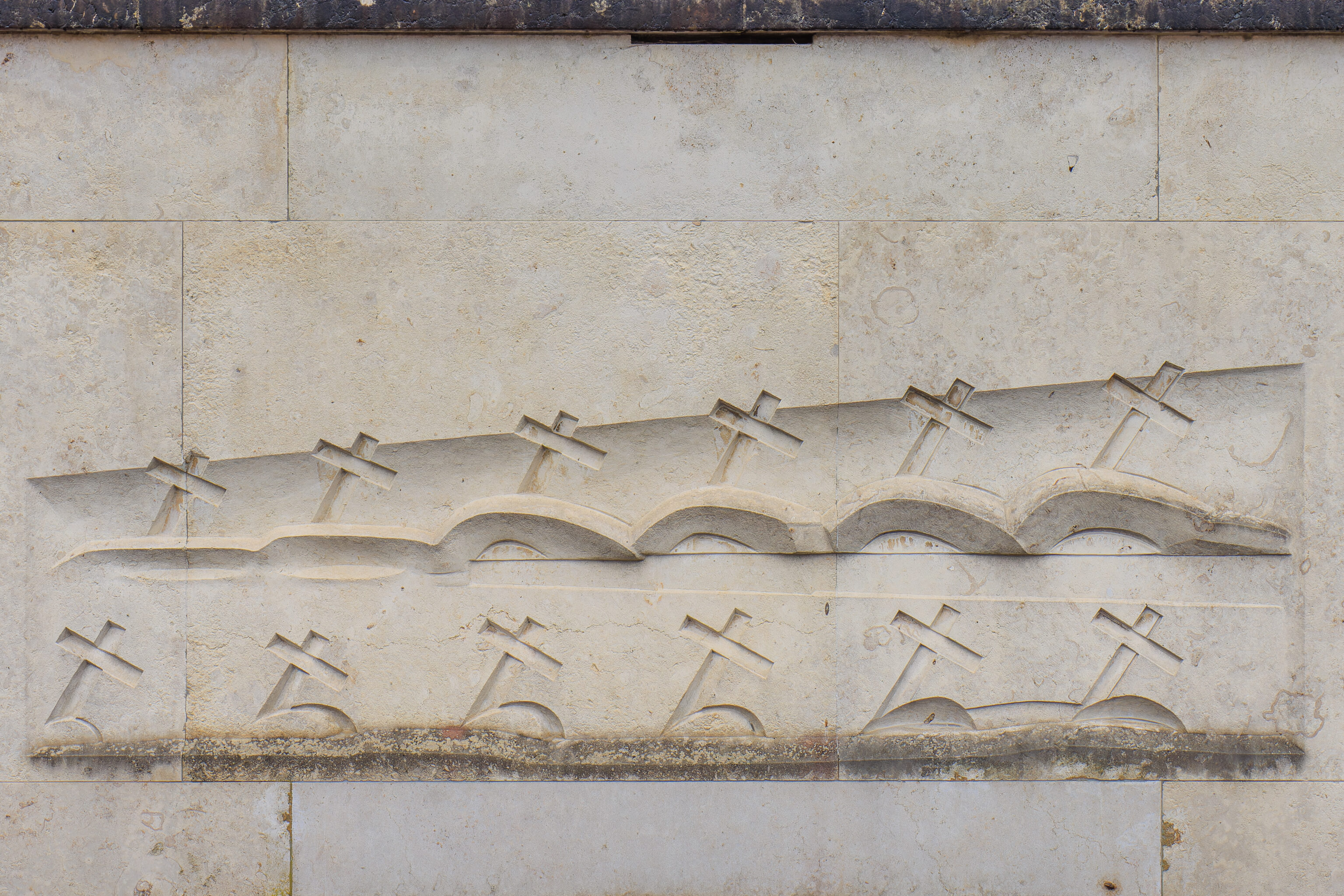
There are carvings on the southern and northern interior walls.
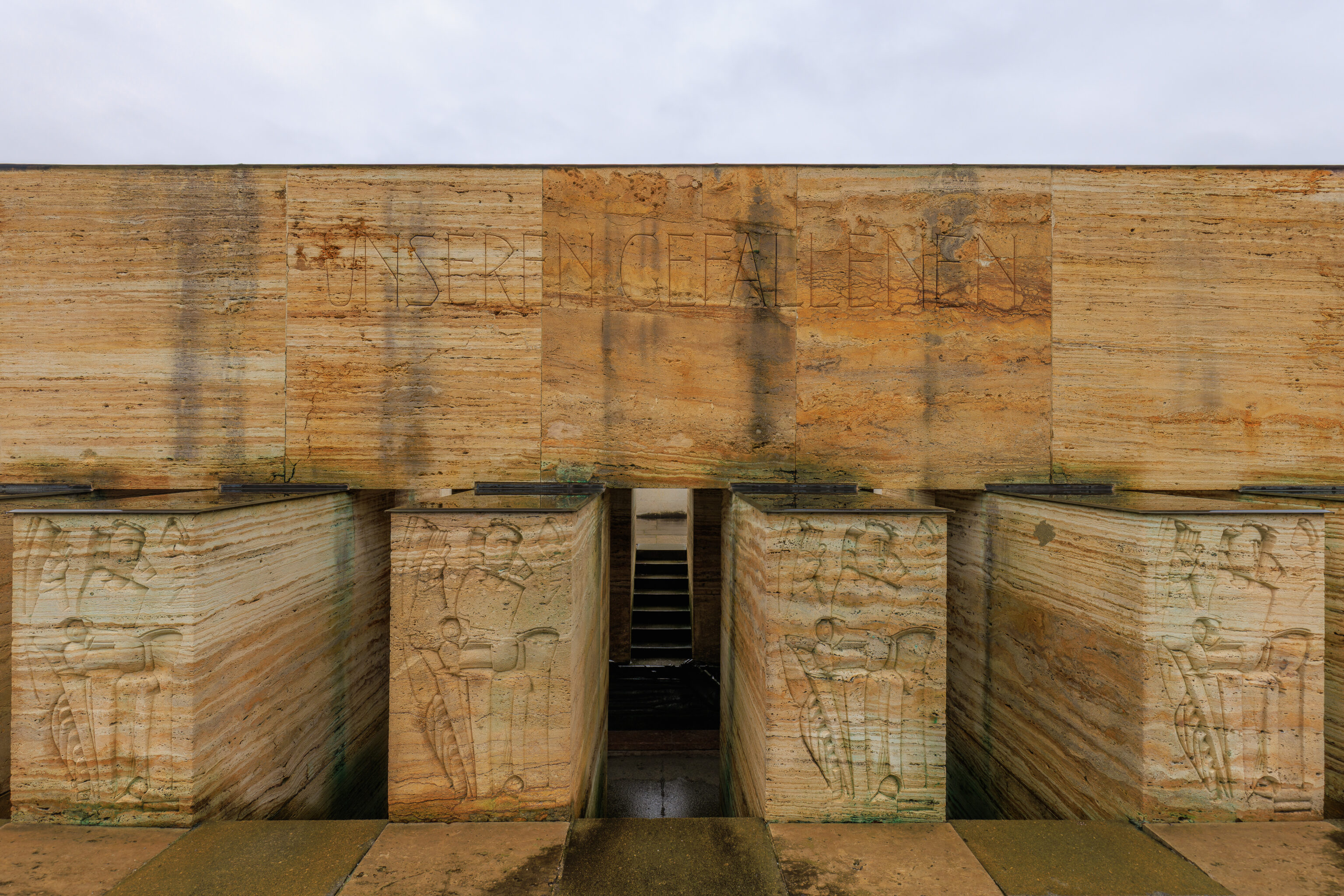
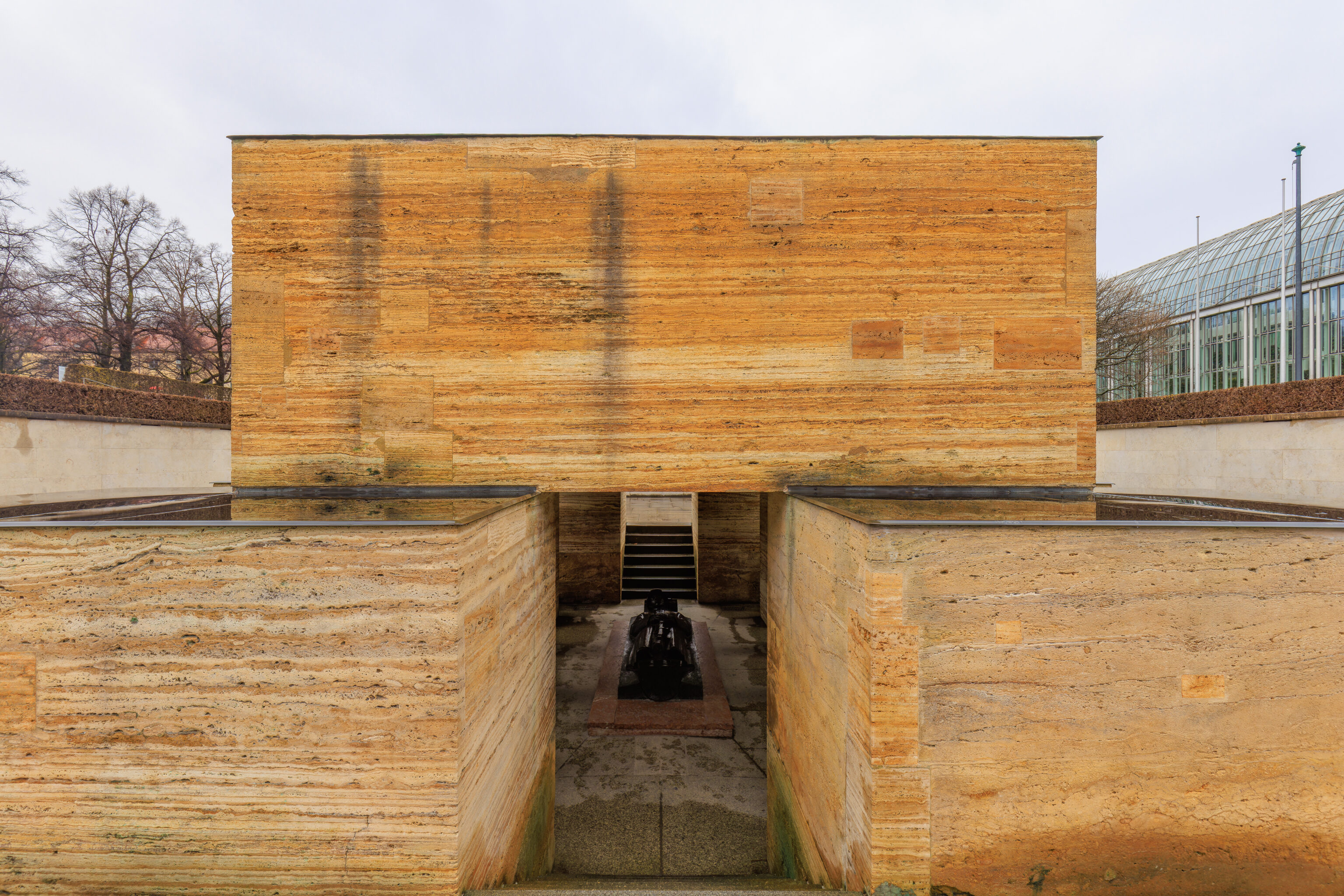
The partially enclosed area at the center houses a crypt.
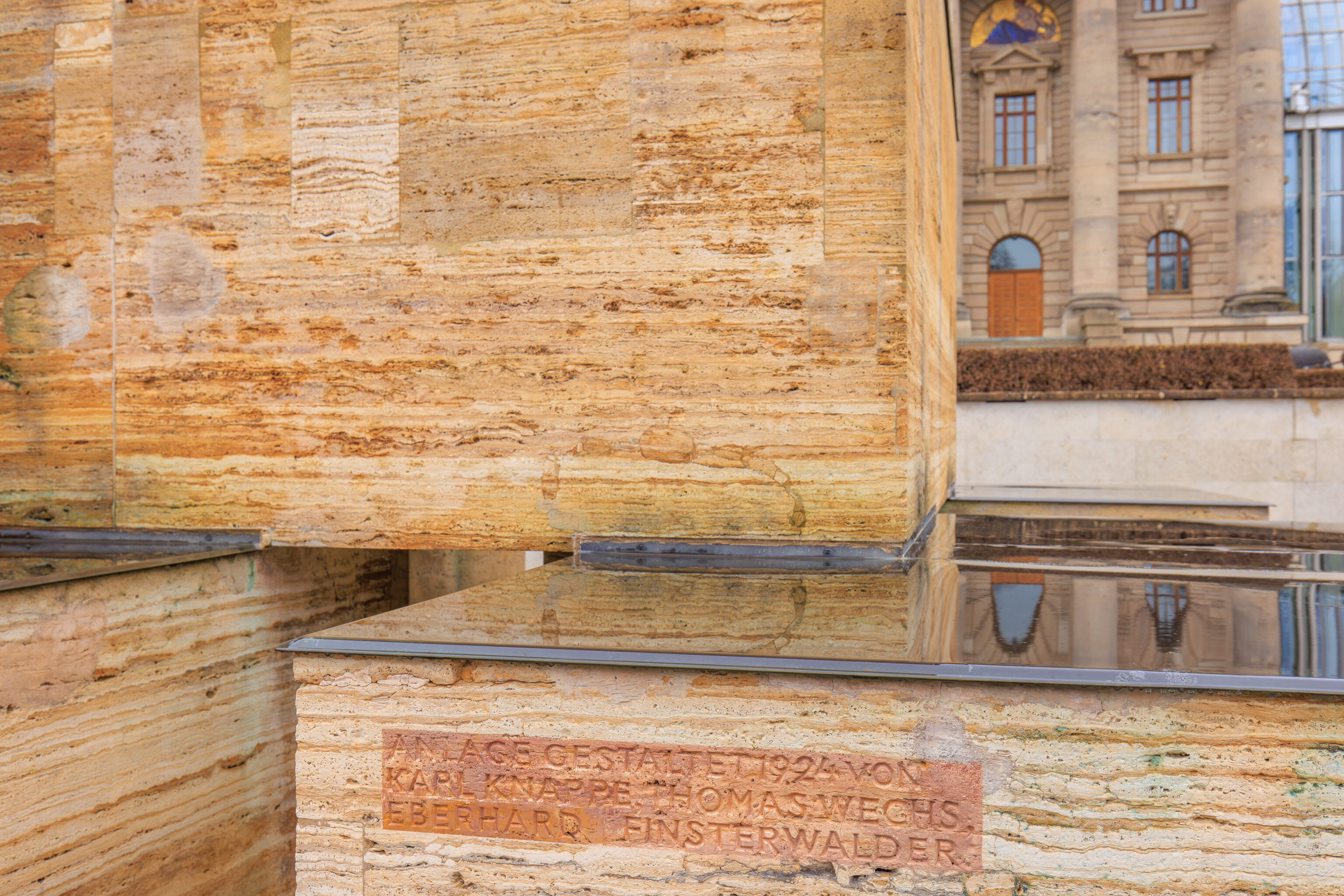
This inscription credits Karl Knappe, Thomas Wechs, and Eberhard Finsterwalder for this memorial.
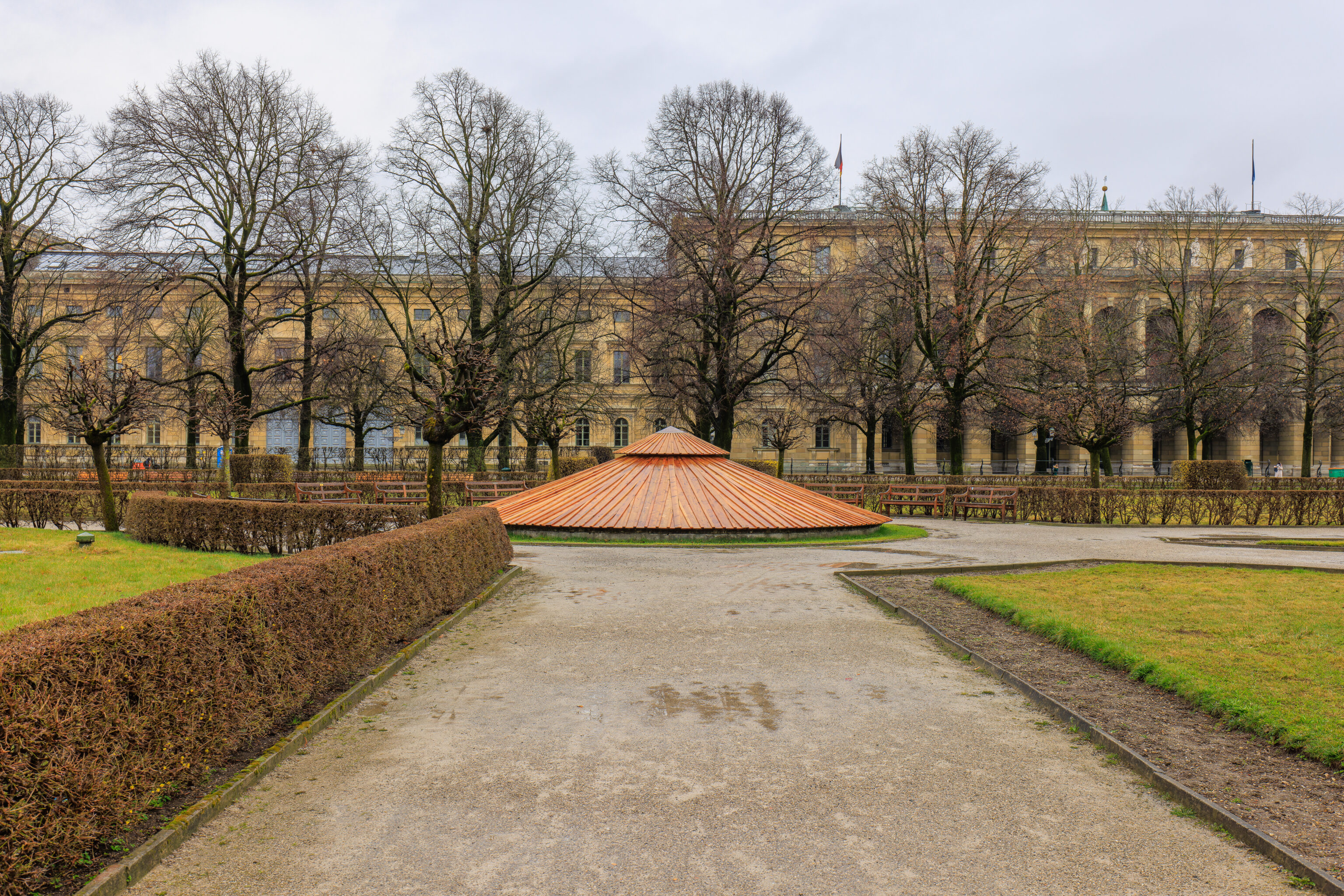
We noticed that all the fountains were covered with wood for the winter. This seems to be a common thing here in Munich.
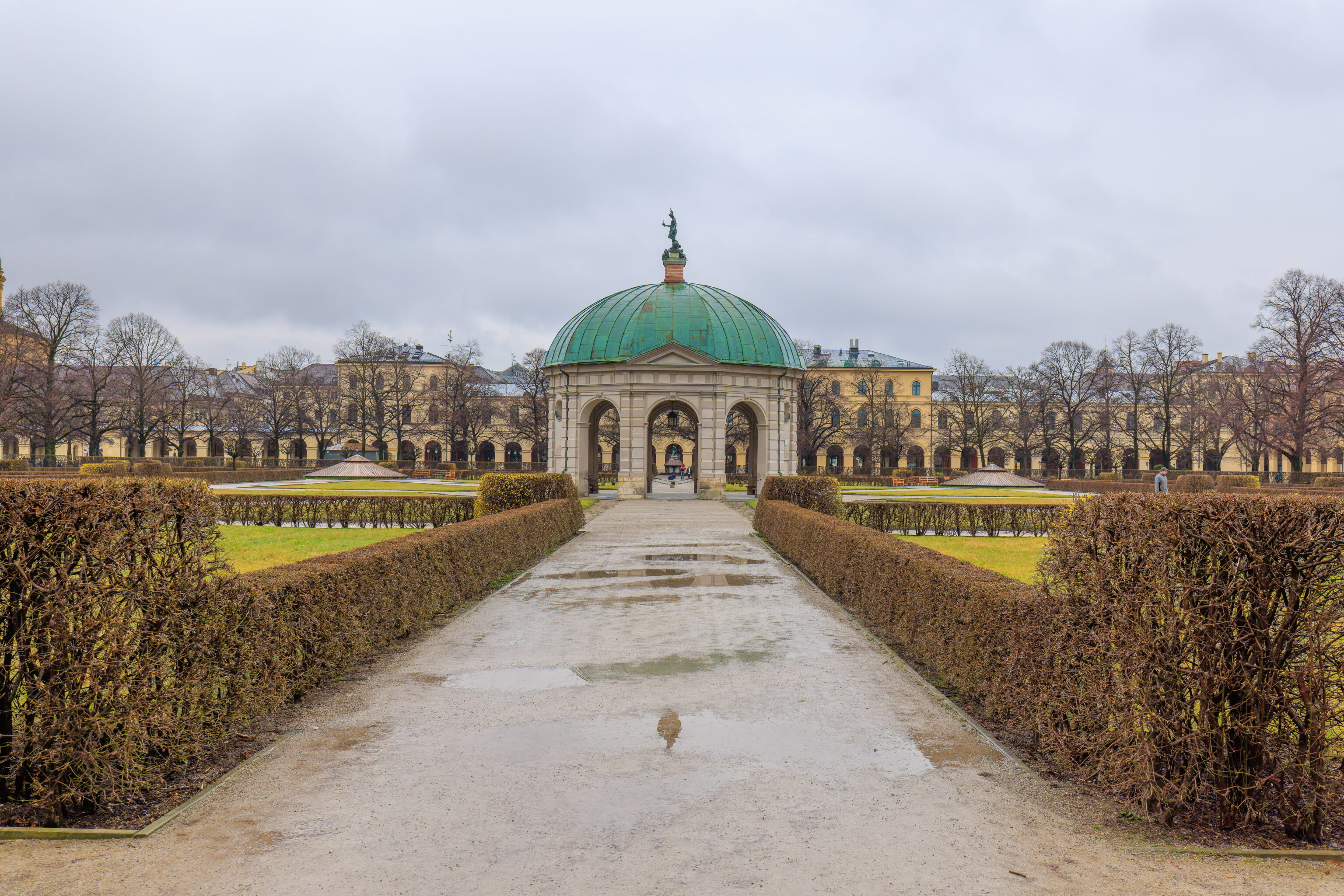
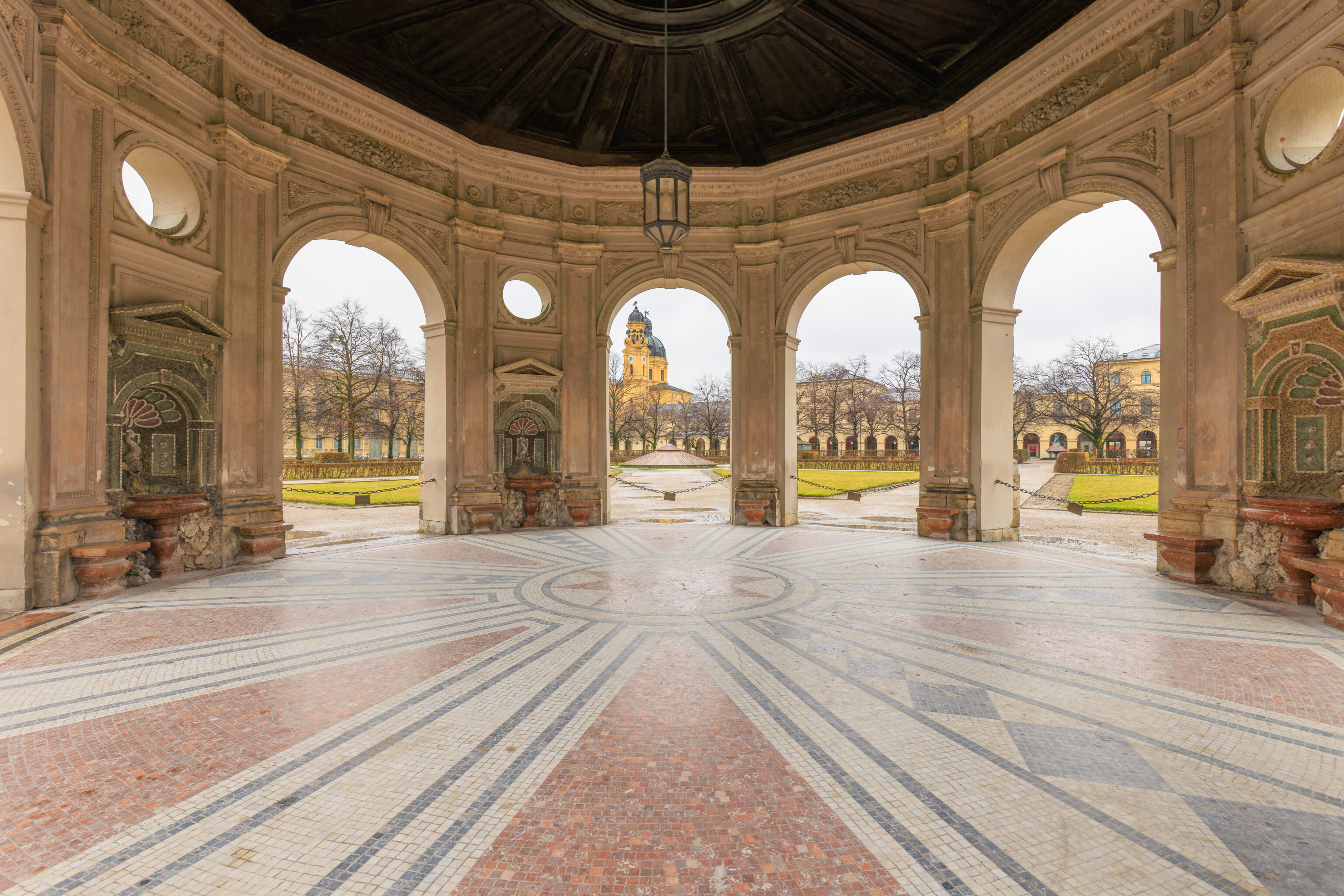
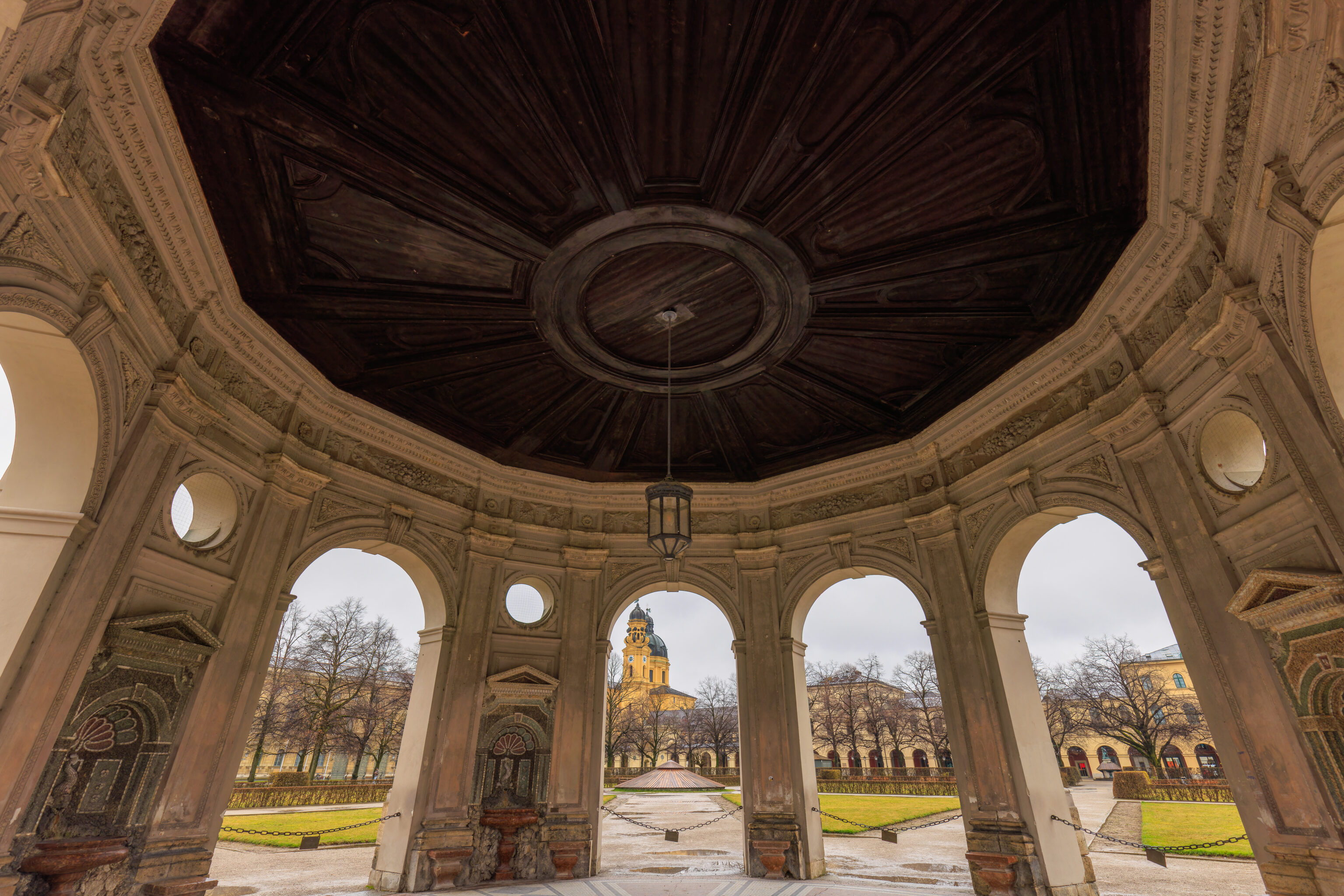
There is a small pavilion, the Dianatempel, in the middle of the park. It was roped off, possibly because it is winter?
Theatinerkirche
After exiting the park on the west side, we walked south back to the Odeonsplatz.
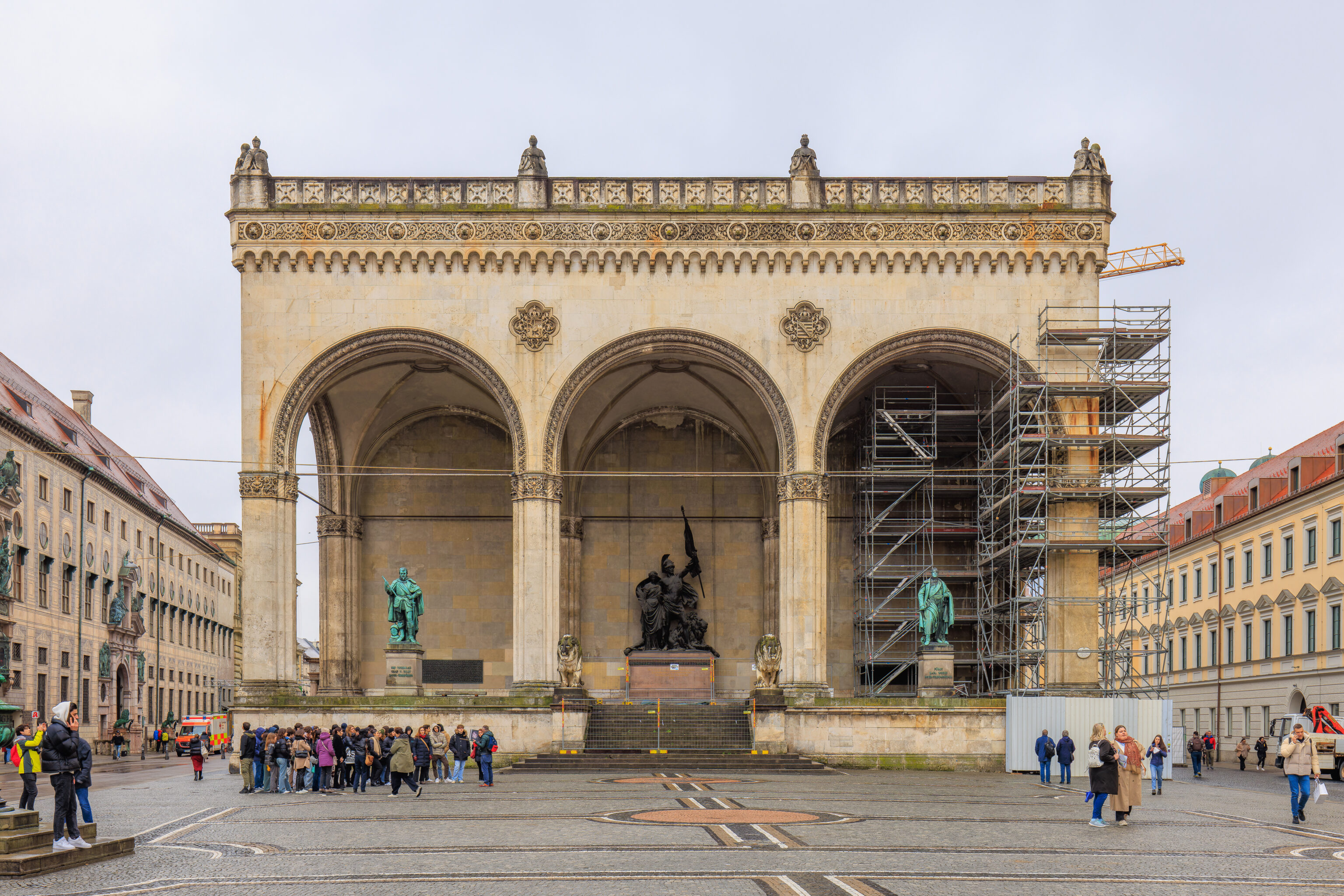
We were planning on taking the U-Bahn from the station below but instead walked to the southern end of the plaza to take a look at this big monument, the Feldherrnhalle (Field Marshall’ Hall). It was built to honor Bavarian generals and dates back to the 1840s.
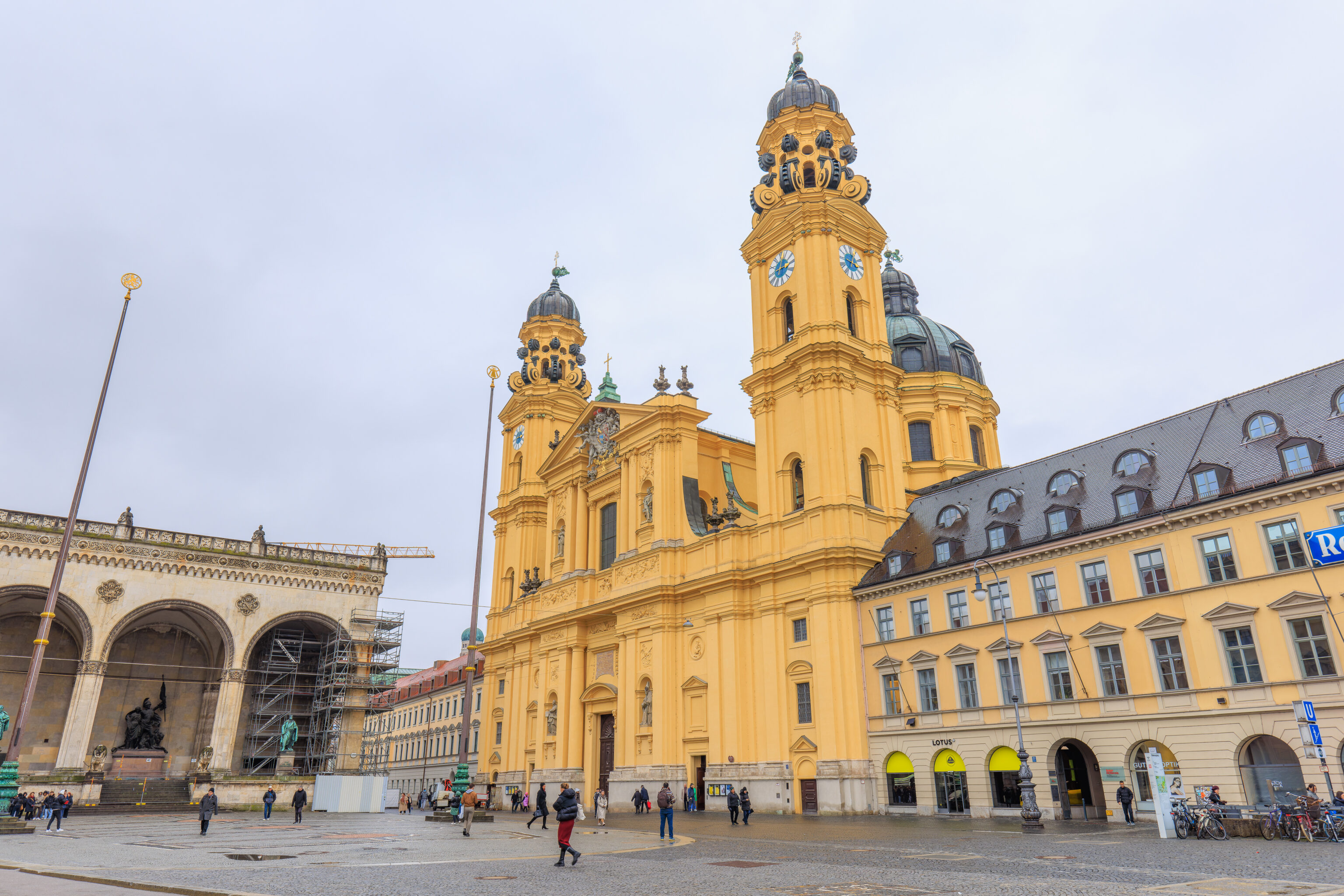
We decided to also take a look at the Theatinerkirche (Theatine Church), on the west side of the Odeonsplatz. Wikipedia describes this church’s exterior Italian styling4:
The facade in Rococo style was completed only in 1768 by François de Cuvilliés. Its Mediterranean appearance and yellow coloring became a well known symbol for the city and had much influence on Southern German Baroque architecture.
Cuvilliés is the same Cuvilliés who designed the Cuvilliés Theatre, which we visited earlier today.
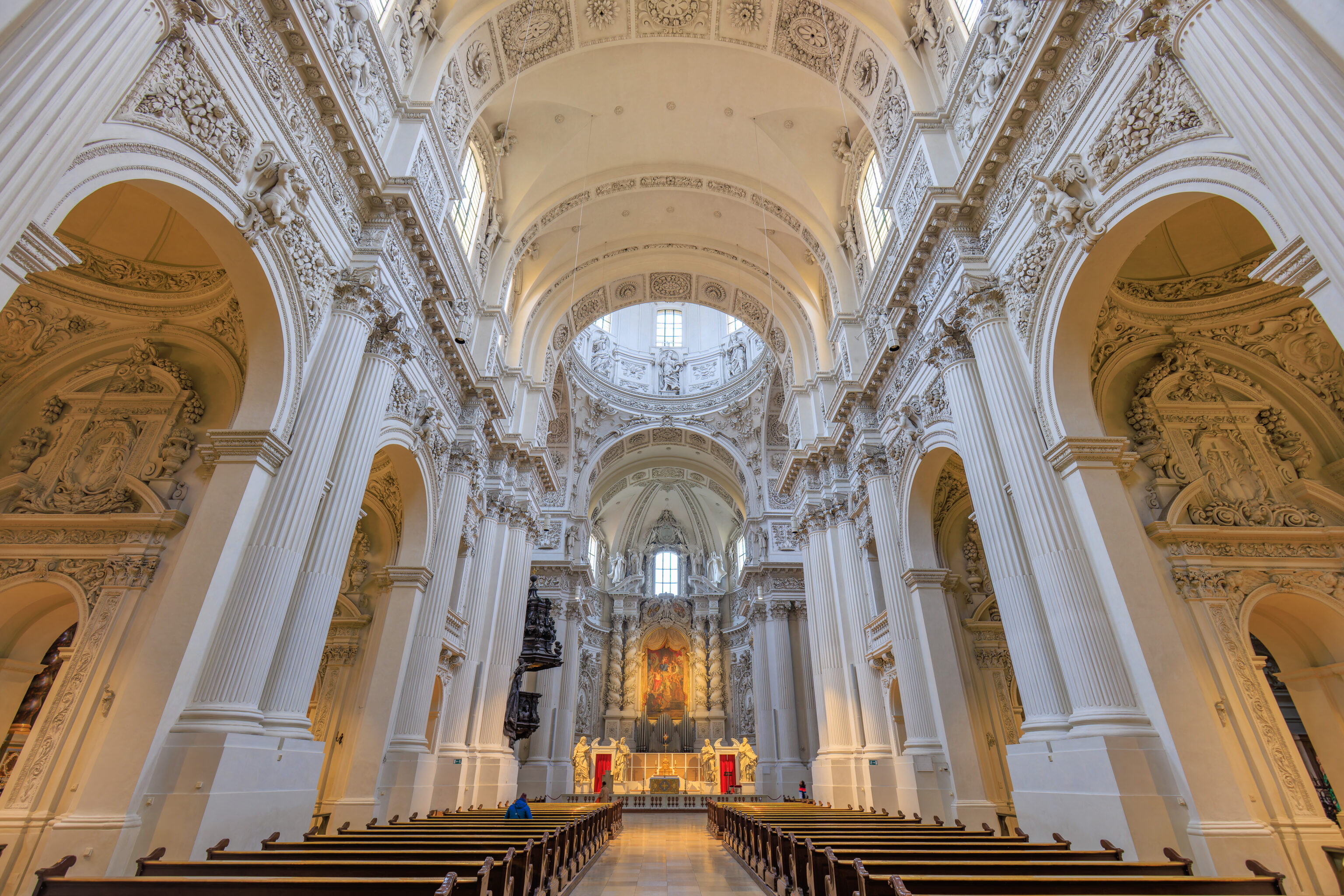
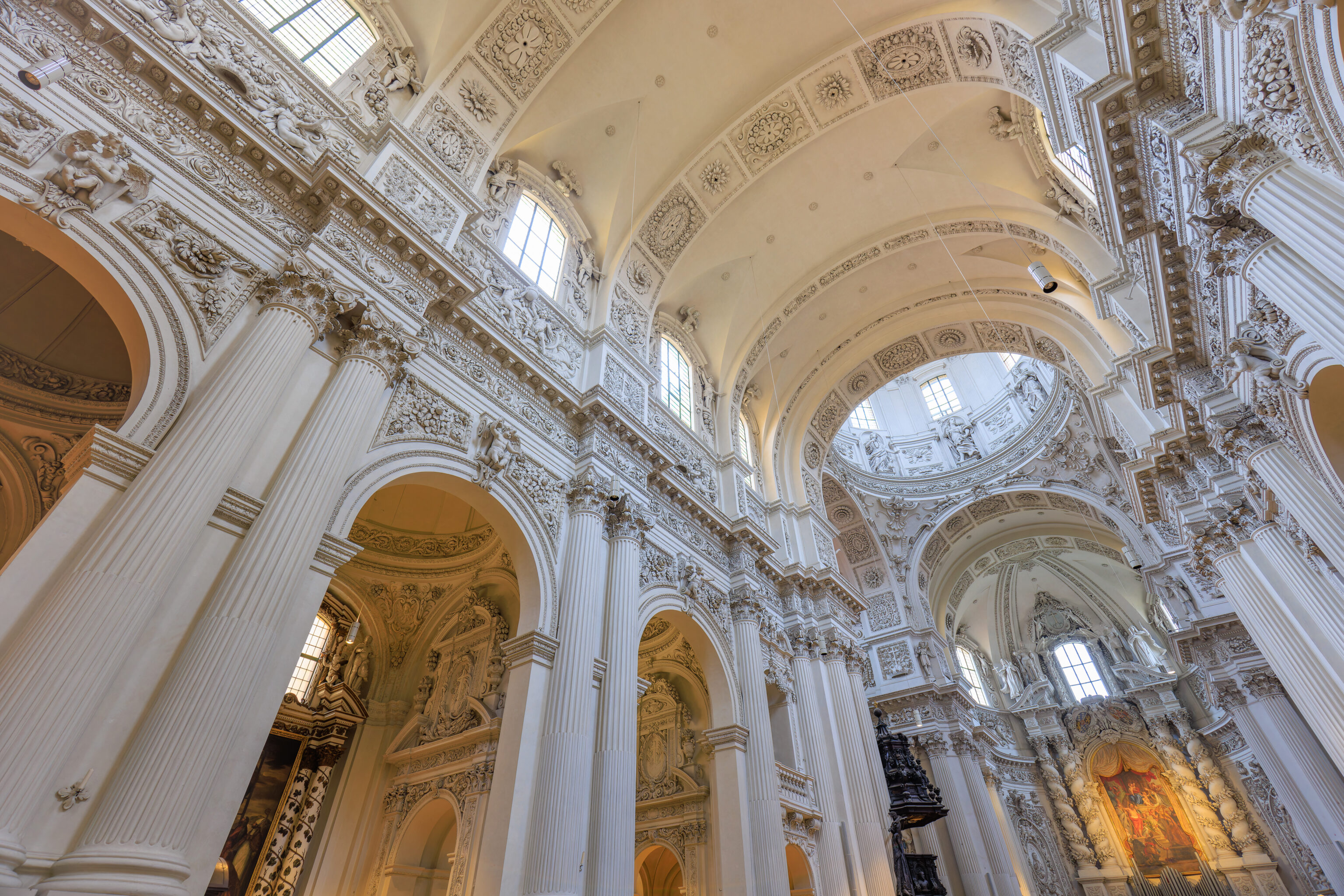
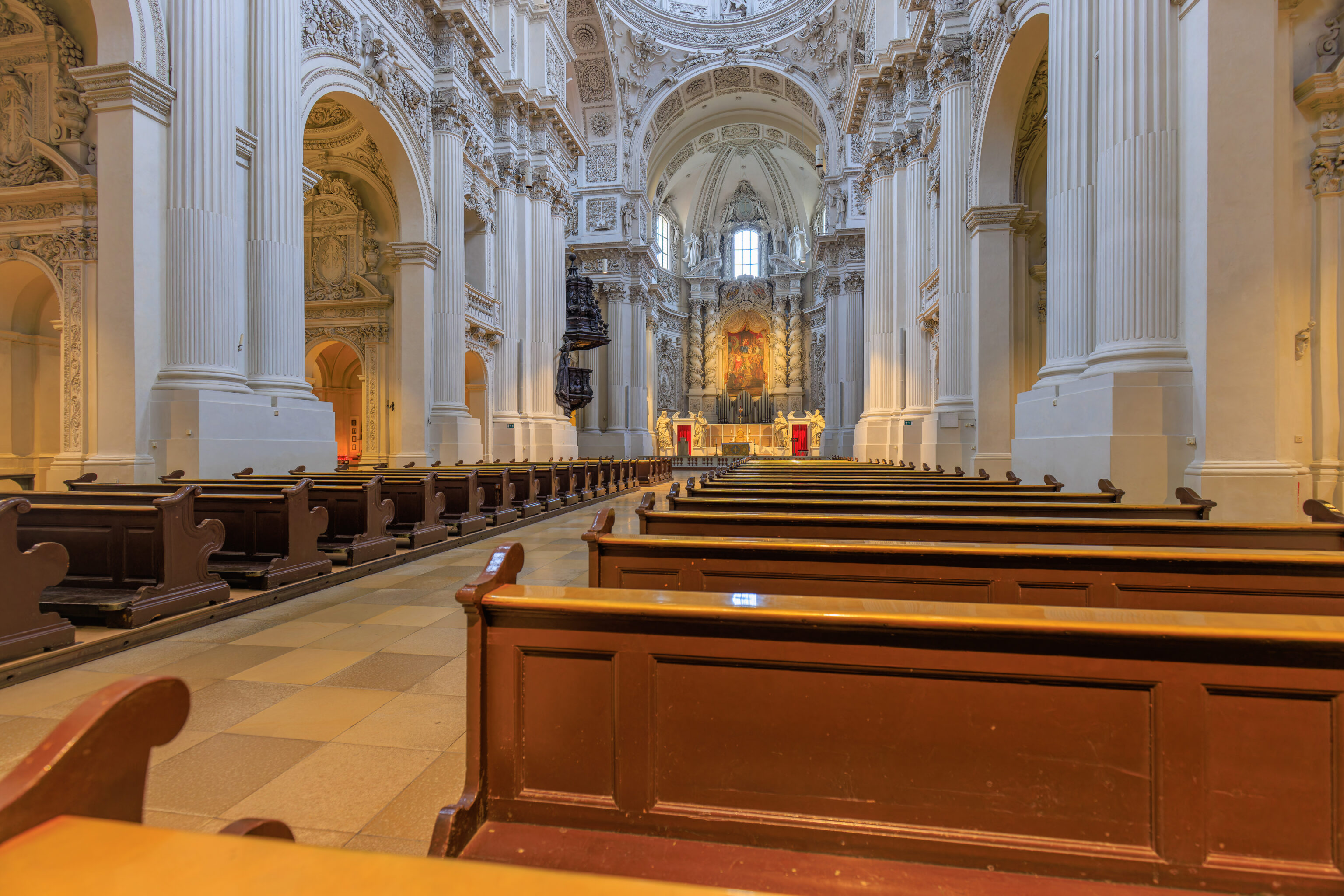
We liked the clean appearance of this church’s interior!
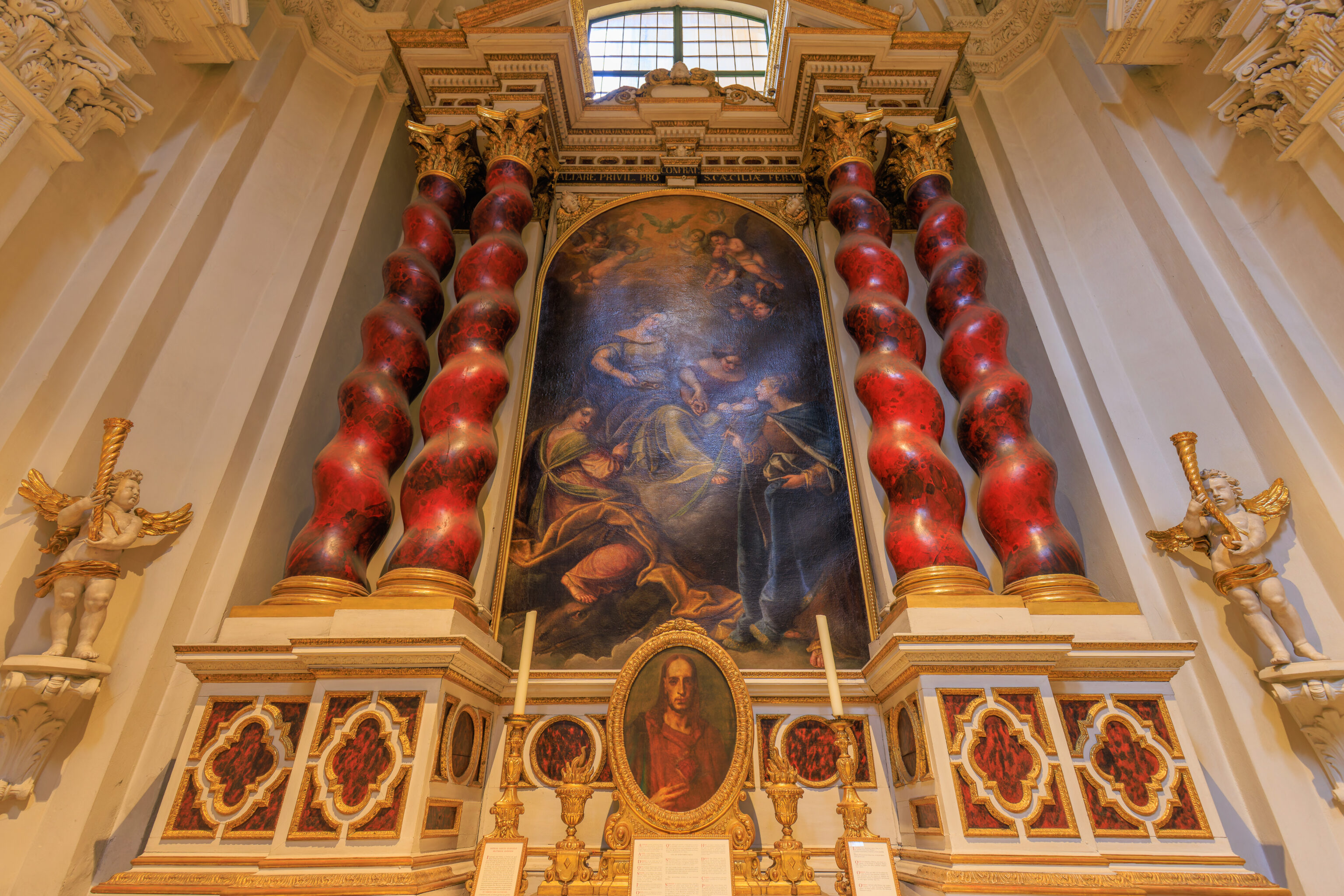
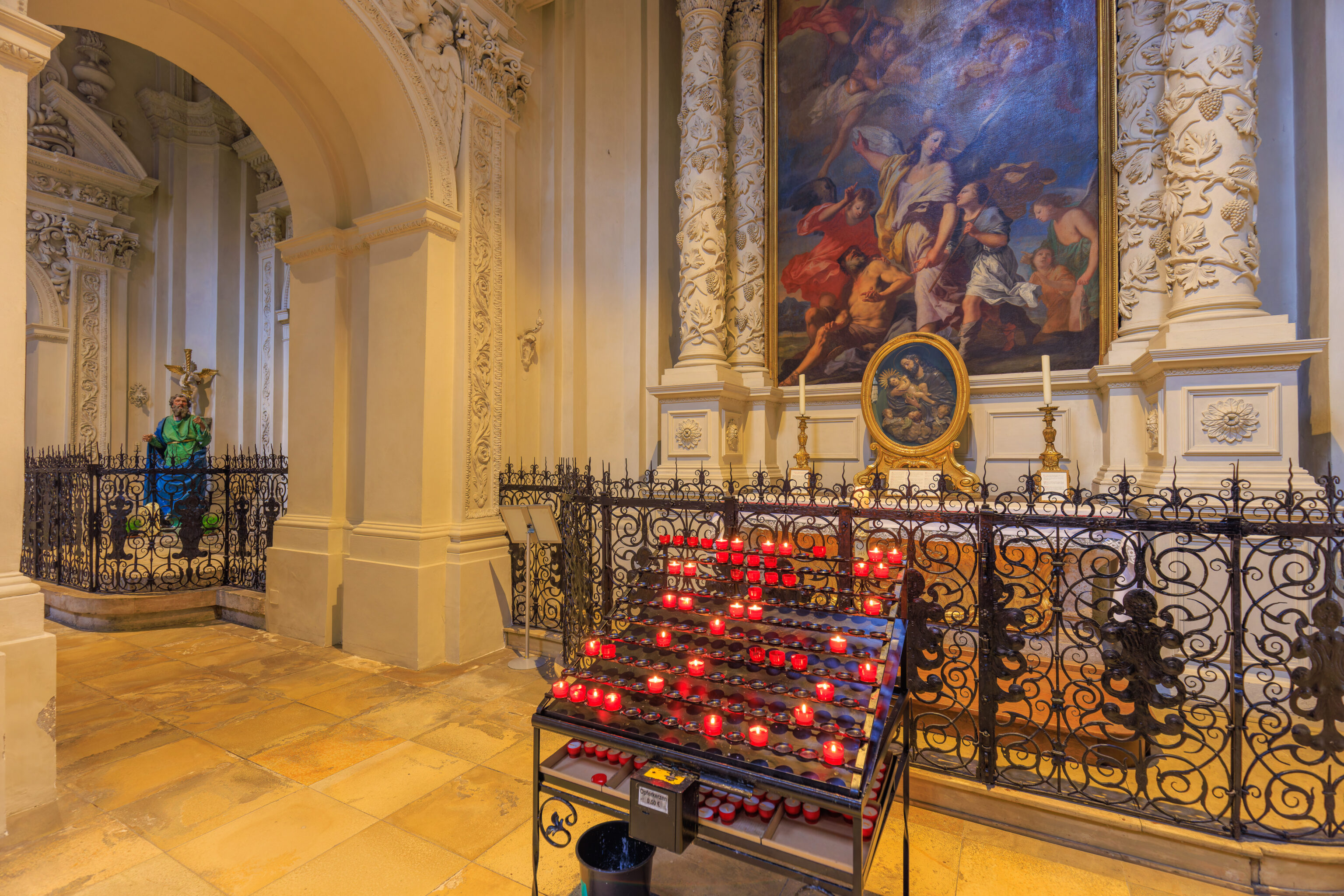
We walked through the church, starting from the north side.
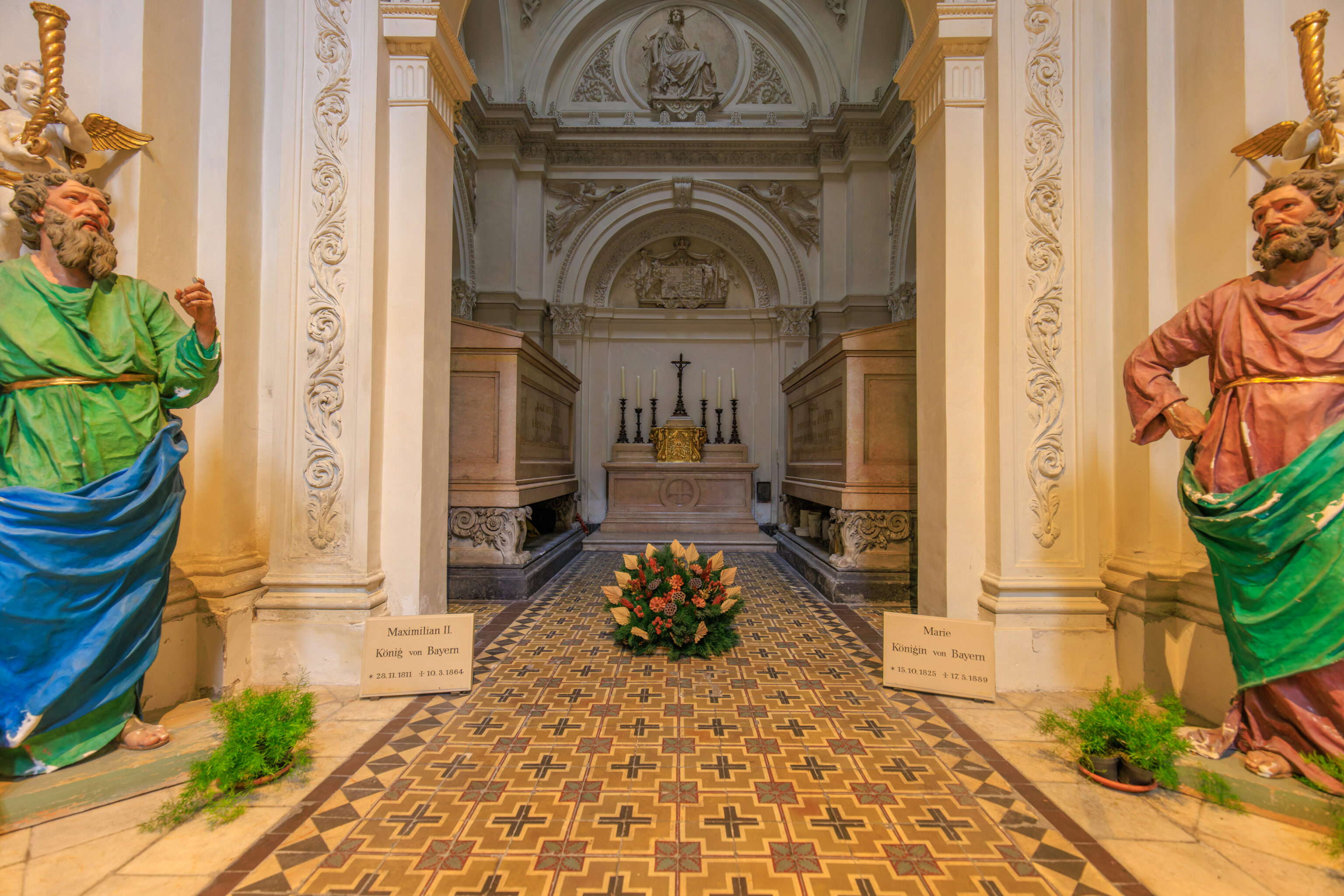
This chapel is dedicated to Maximilian II, King of Bavaria, and the Queen, Marie. They were the parents of Ludwig II, who is responsible for building many palaces in Bavaria, including Neuschwanstein, which we plan on visiting this trip.
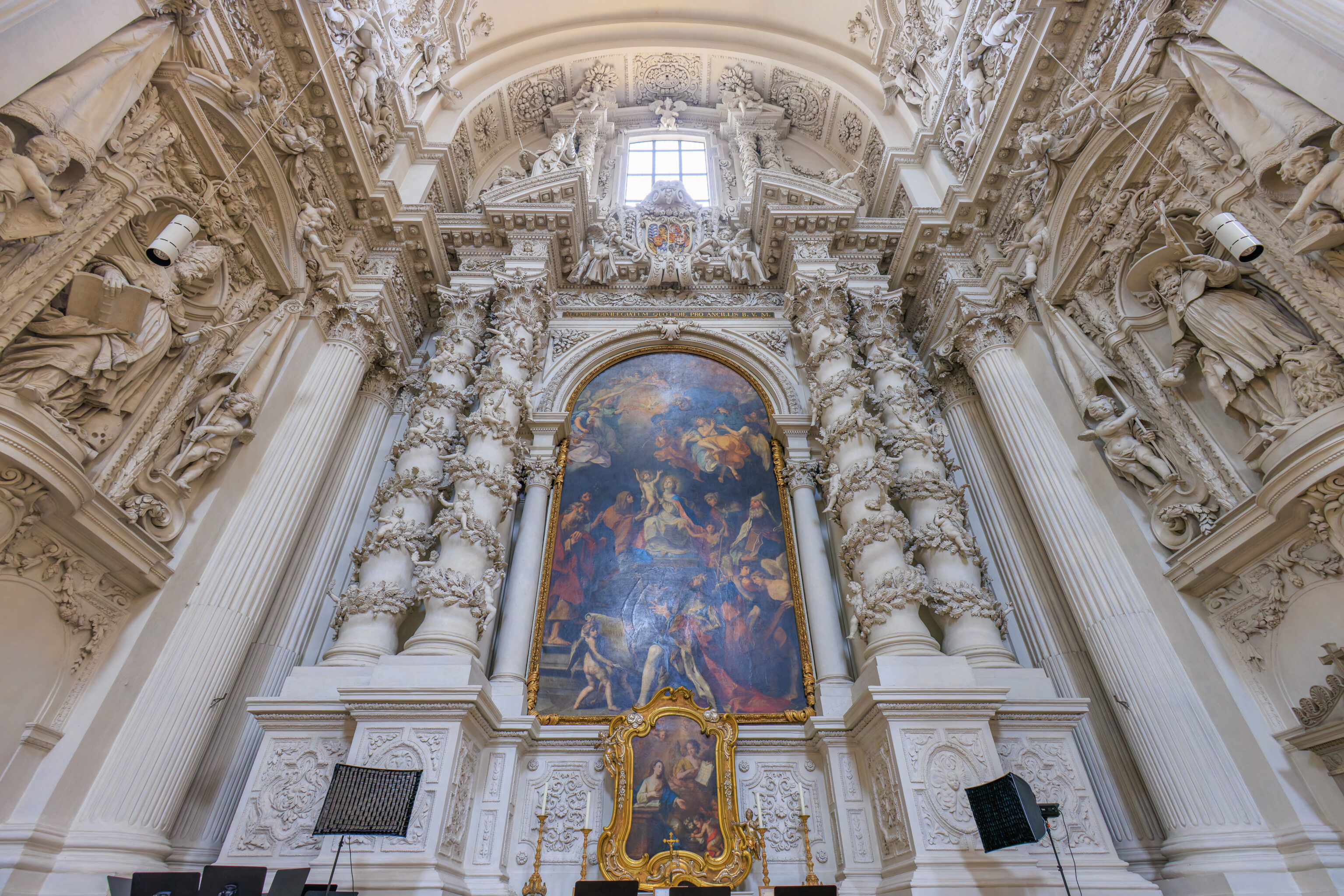
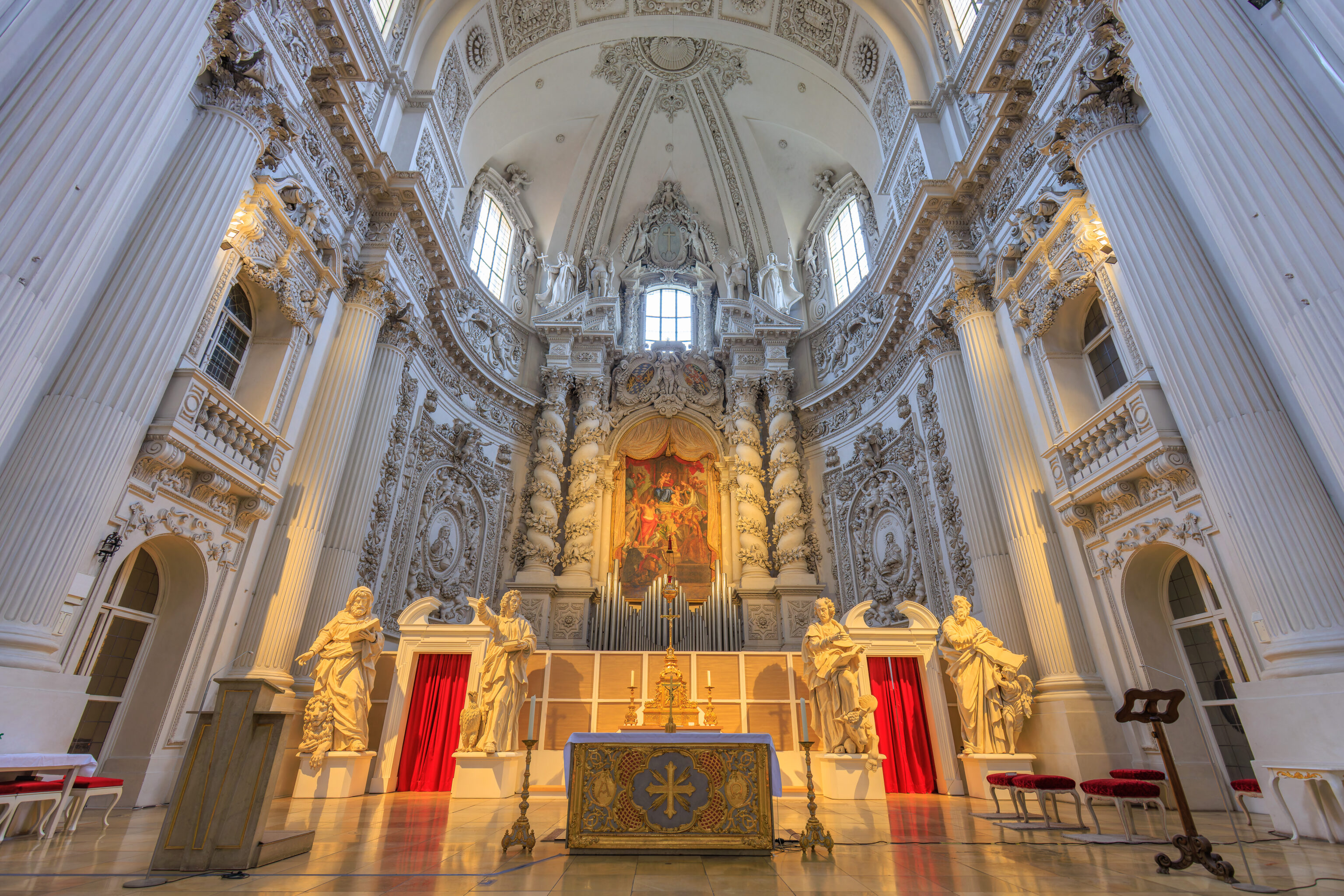
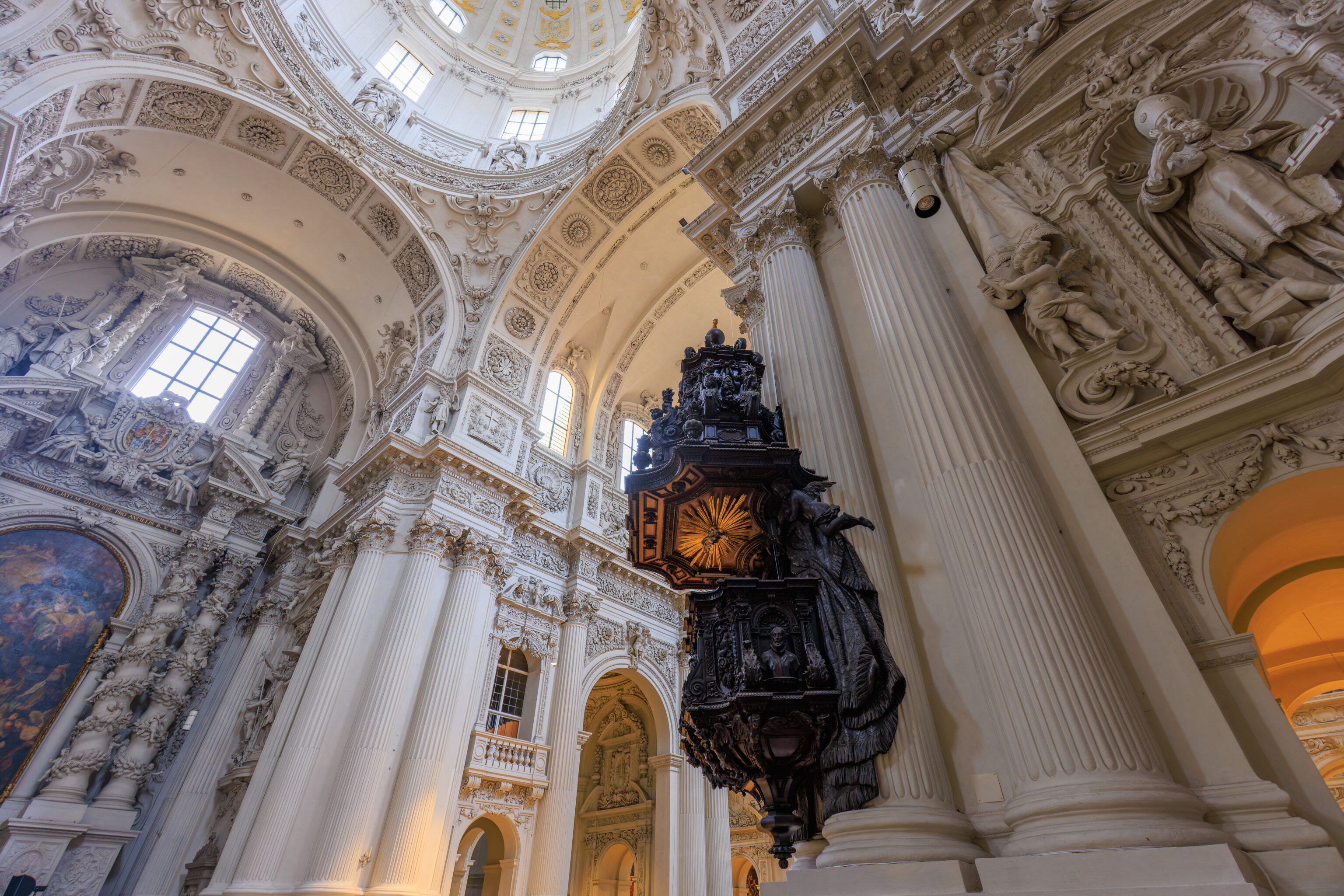
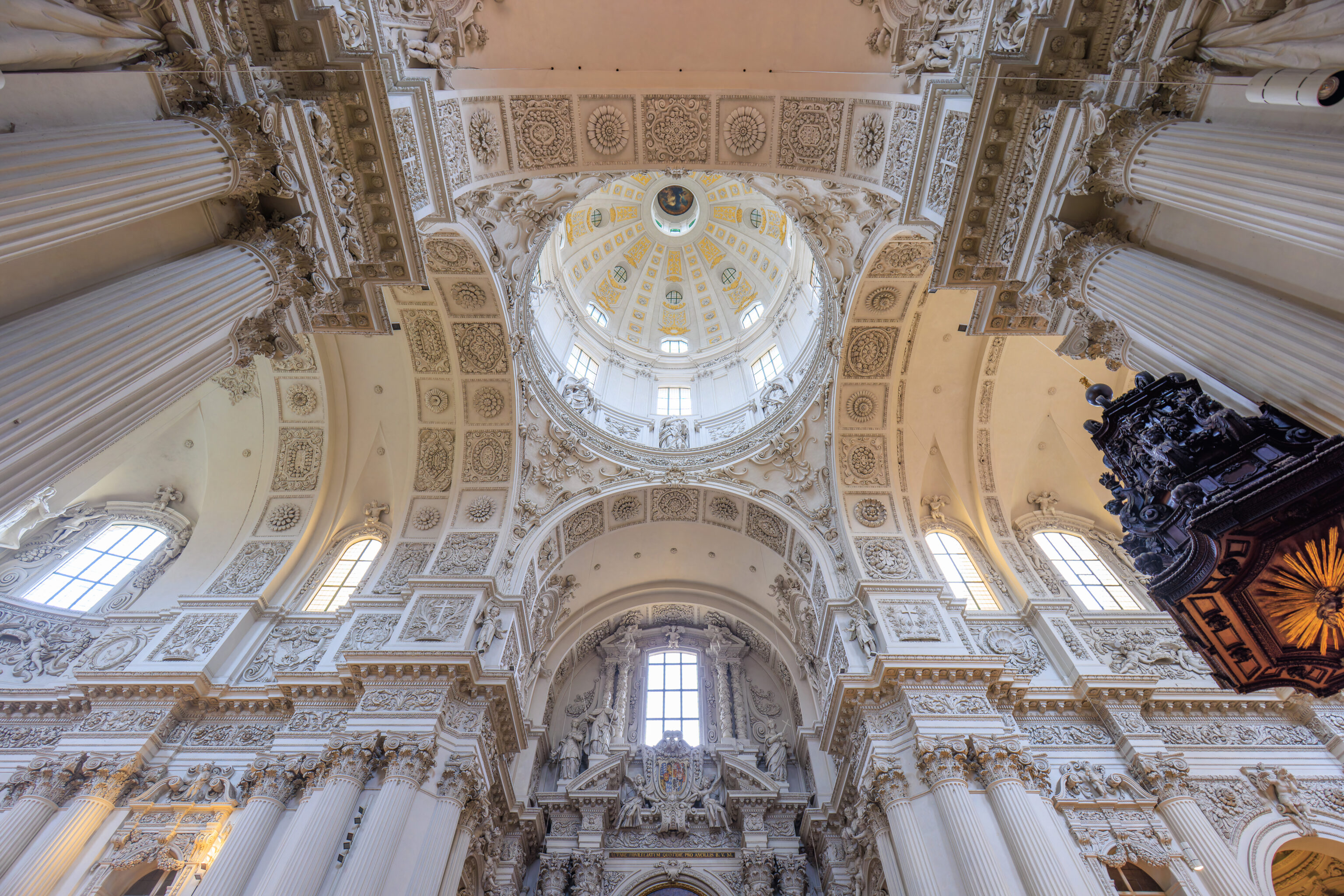
We continued walking through the church’s interior, looping around to the south side before exiting.
Marienplatz
We took the U-Bahn from Odeonsplatz to Marienplatz, just one stop to the south.
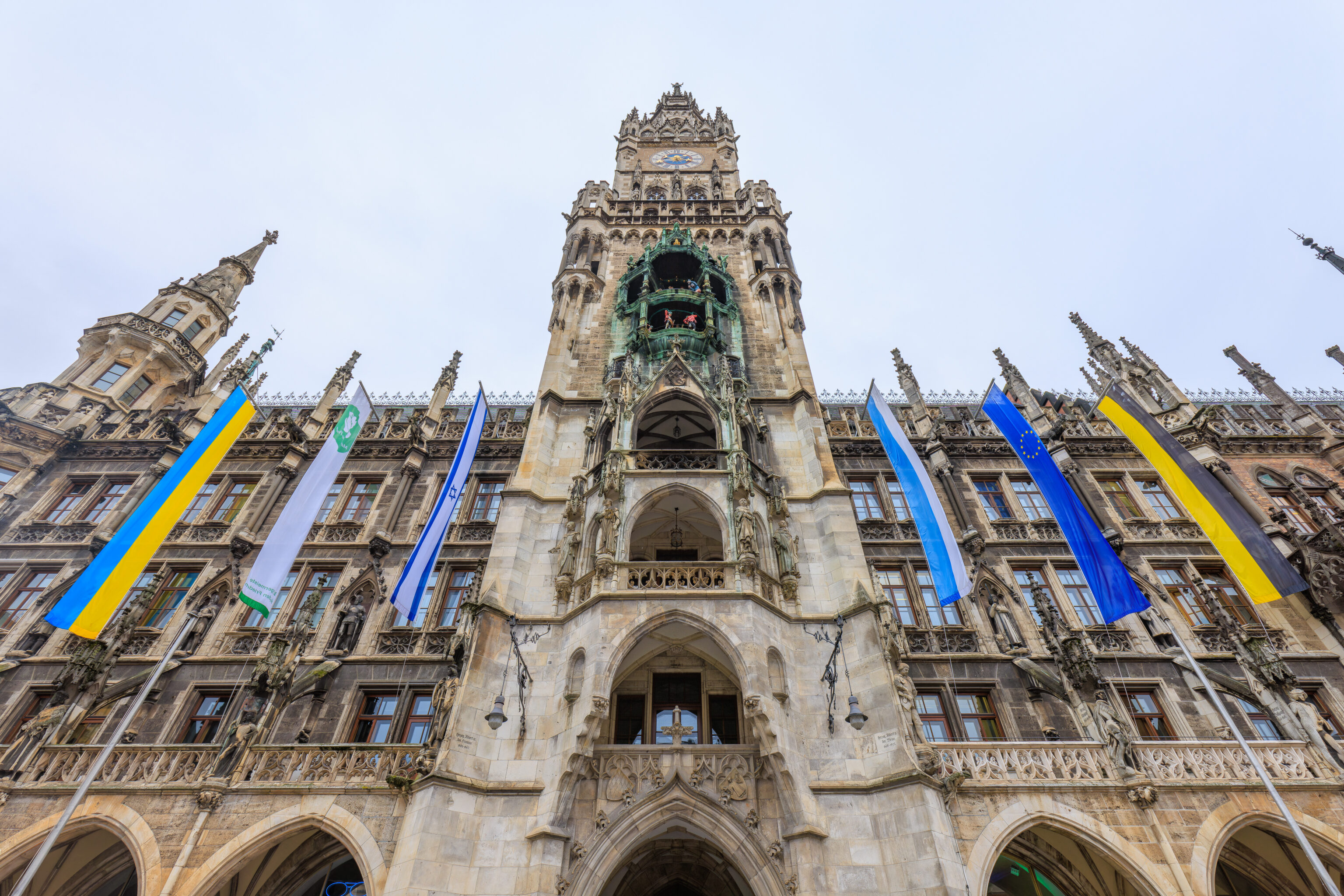
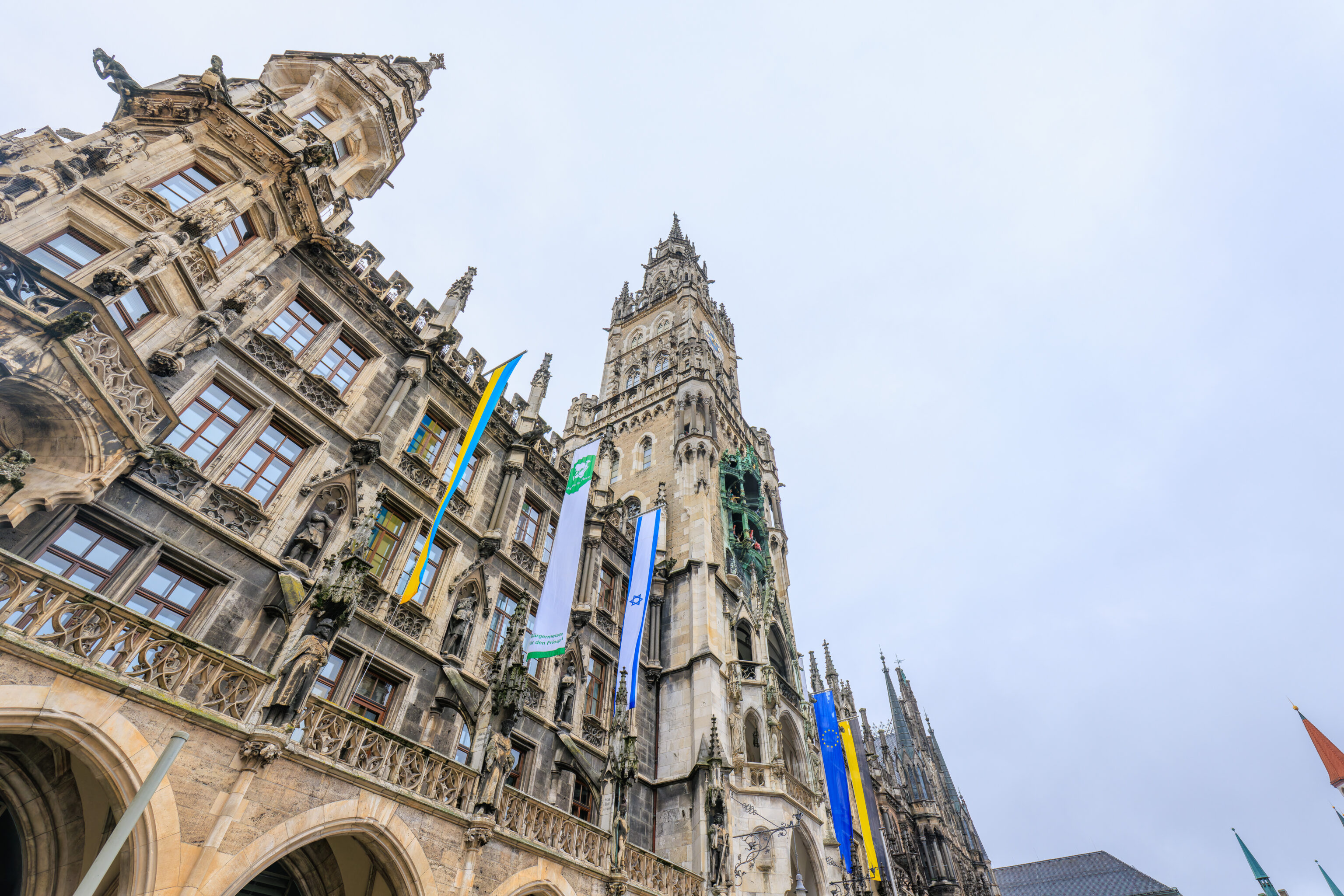
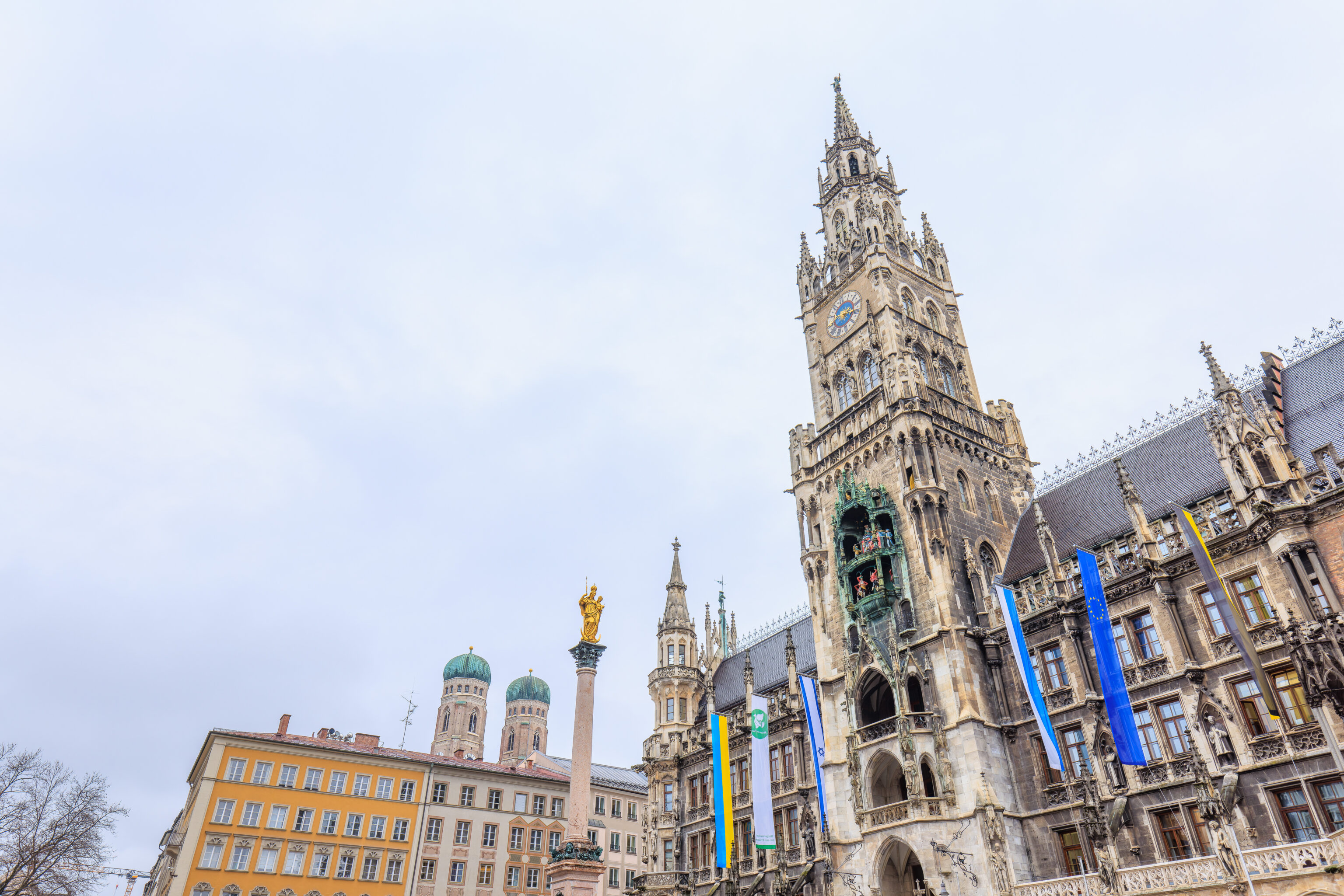
The massive Neues Rathaus (New Town Hall) is on the north side of the Marienplatz. It was built in the late 1800s and survived World War II. The building’s design is described as being inspired by Brussels’ Town Hall5, which we’ve seen. The middle of the main tower holds a Glockenspiel. The characters animate at 11am and noon. Perhaps we’ll be able to see it on another day?
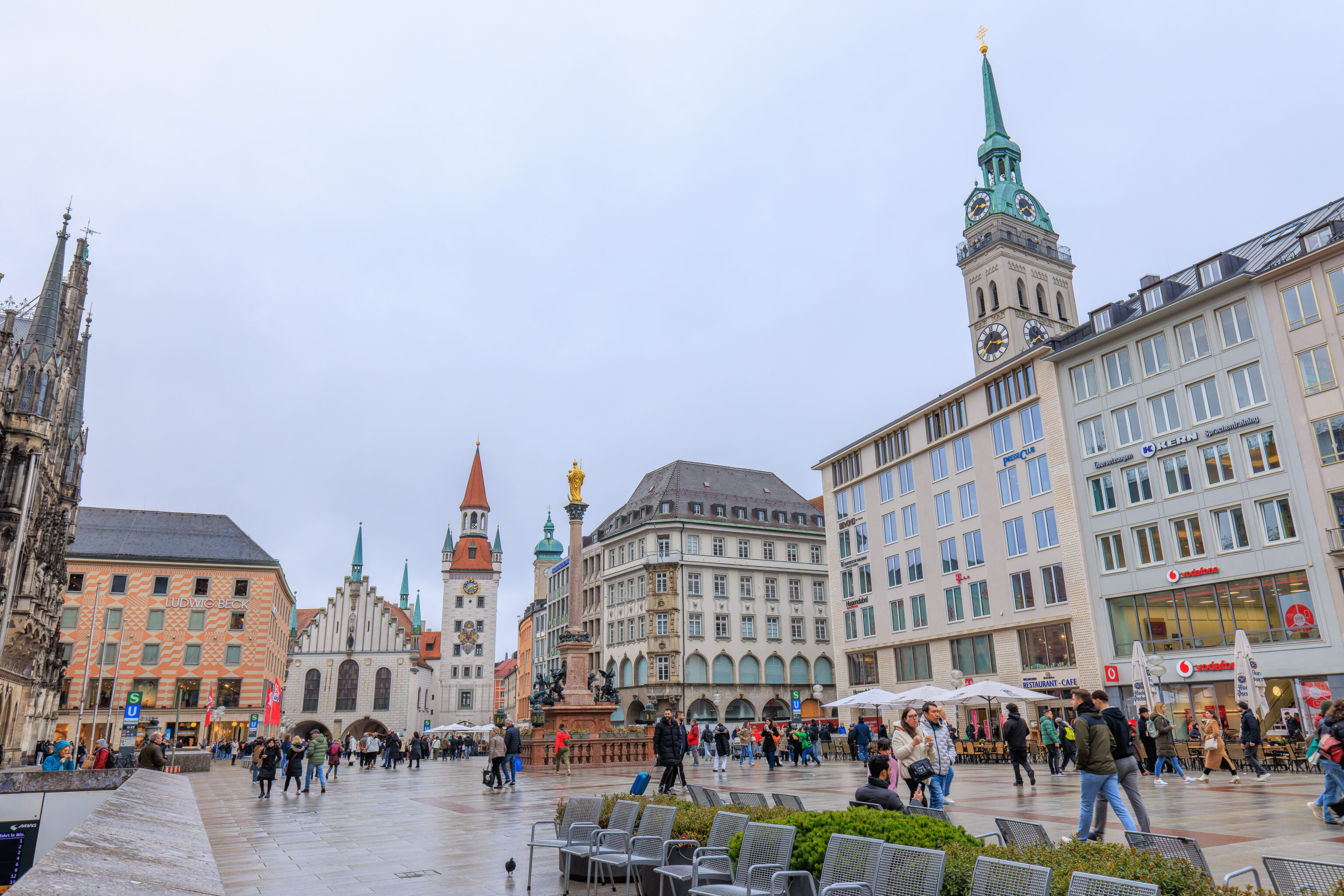
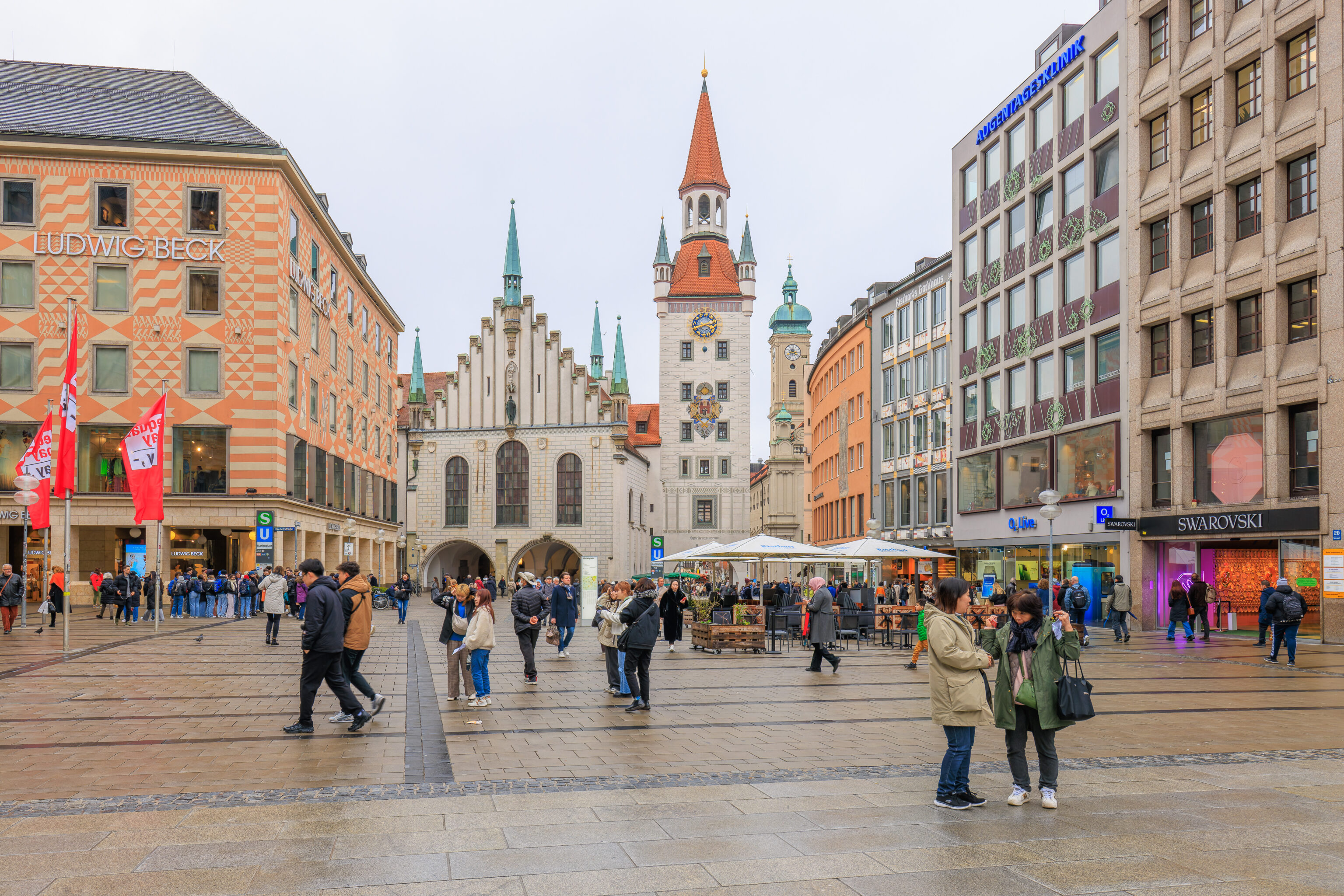
The Altes Rathaus (Old Town Hall) is on the east side of the Marienplatz. It currently houses a toy museum. The building dates back to the 14th century but has been reconstructed and redesigned several times throughout history, most recently after World War II6.
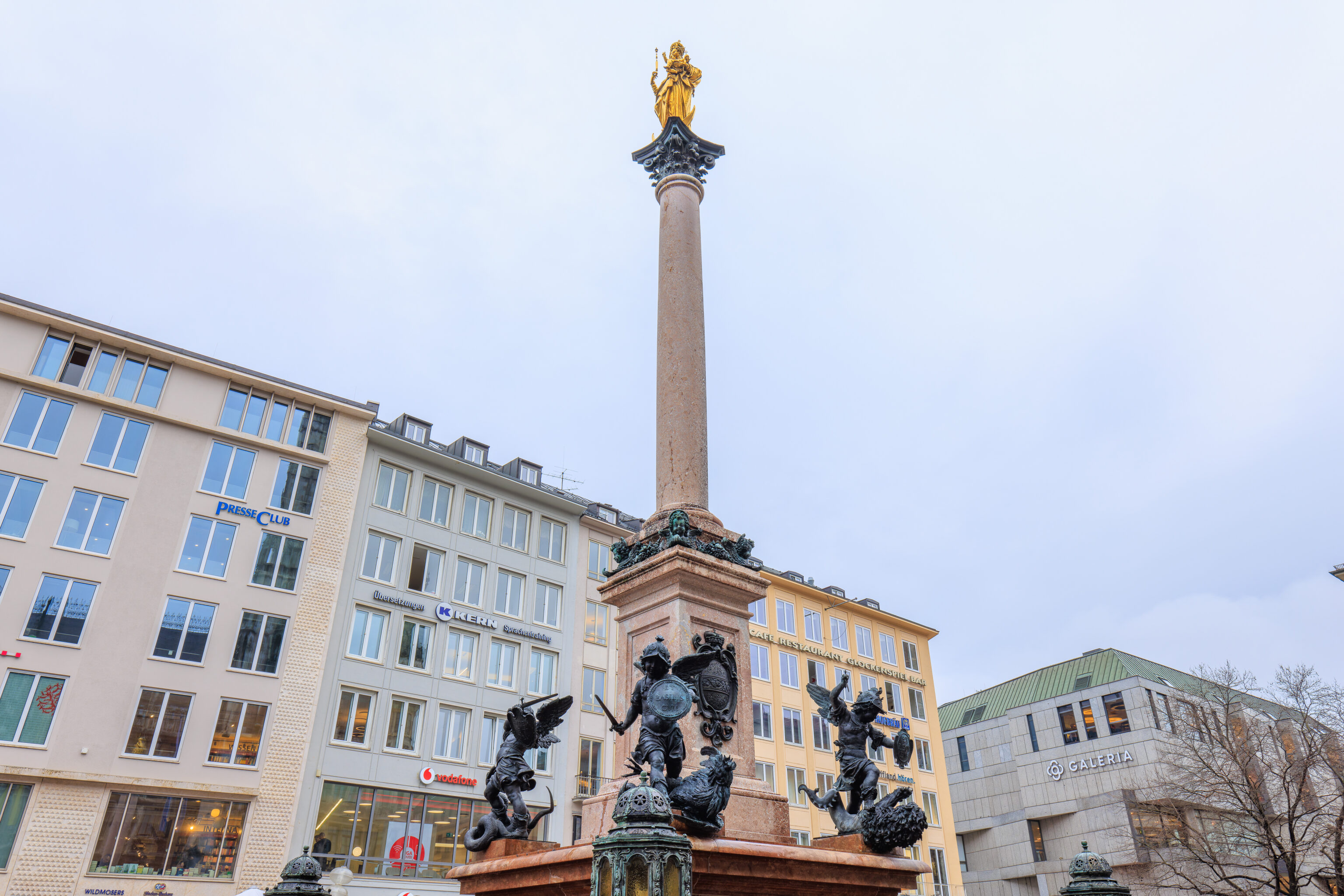
The Mariensäule (Mary’s Column) stands at the center of the Marienplatz. The cherub-like figures at the base of the column are apparently called putto.
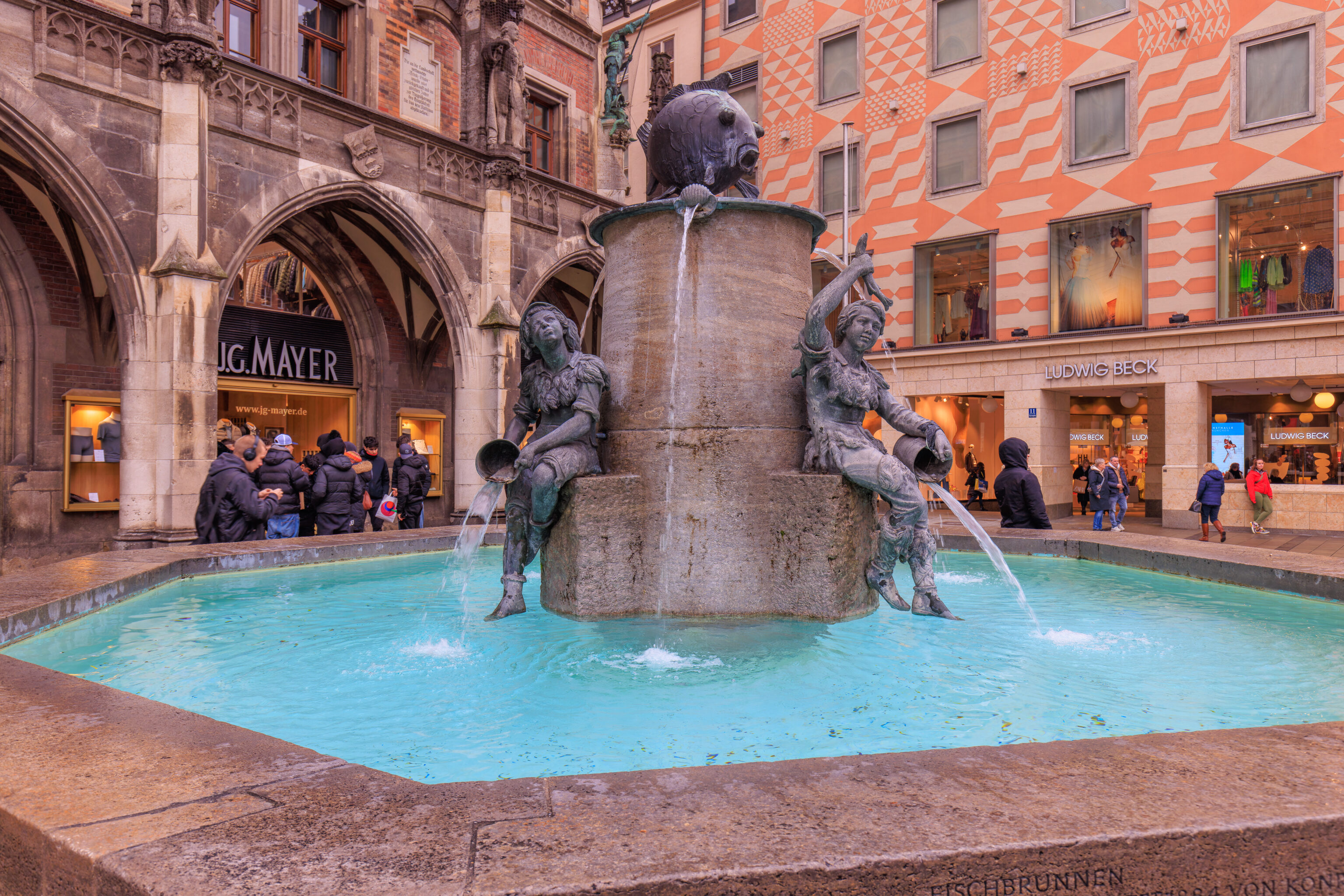
There was a working fountain, the Fischbrunnen (Fish Fountain), at the northeast corner of the Marienplatz. The fish theme comes from when the Marienplatz was a market and fish were sold here7.
Alter Peter
Our next stop was Alter Peter (Old Peter), formally known as St. Peter’s Church, just to the south of the Marienplatz. The current structure dates back to the 14th century8.
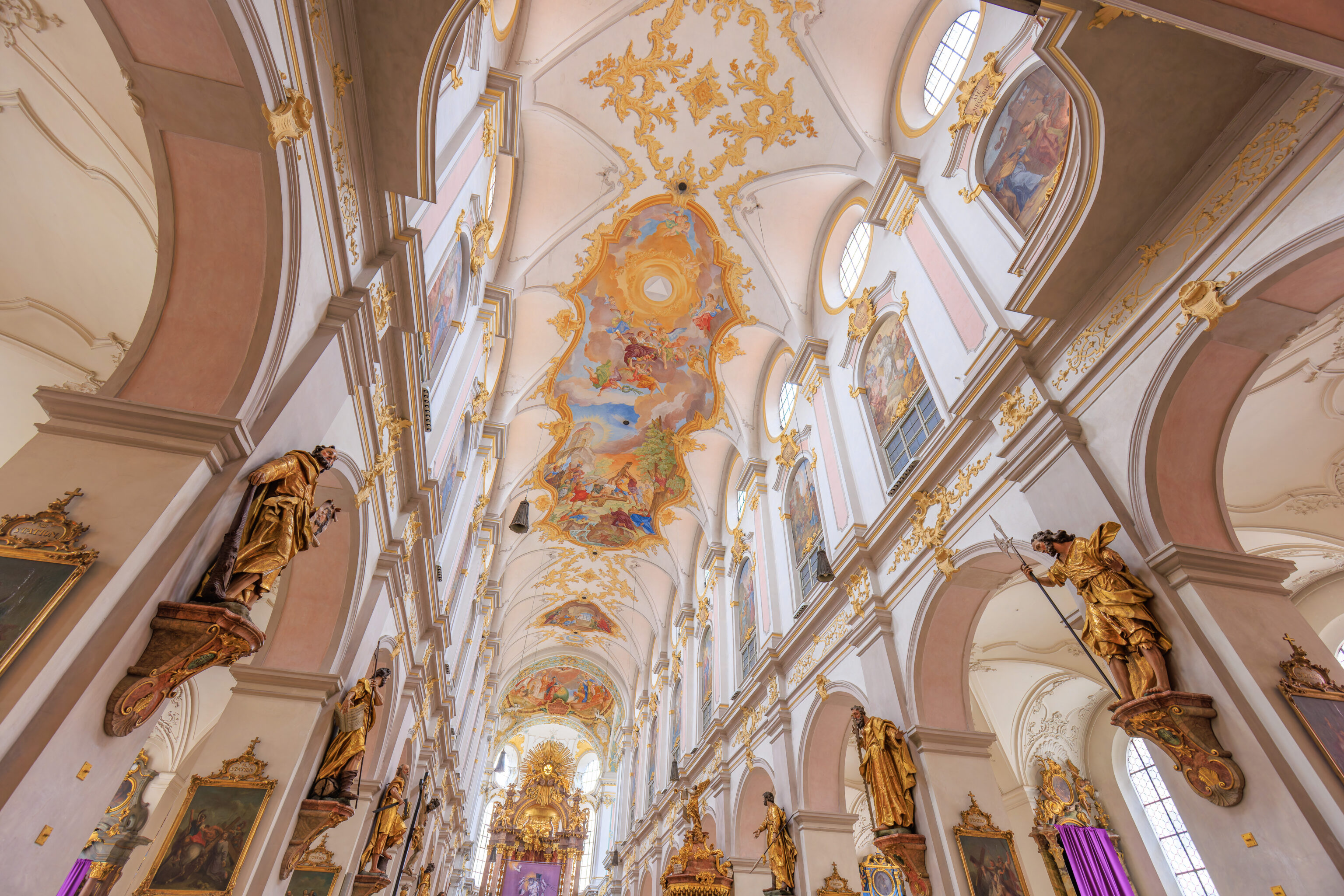
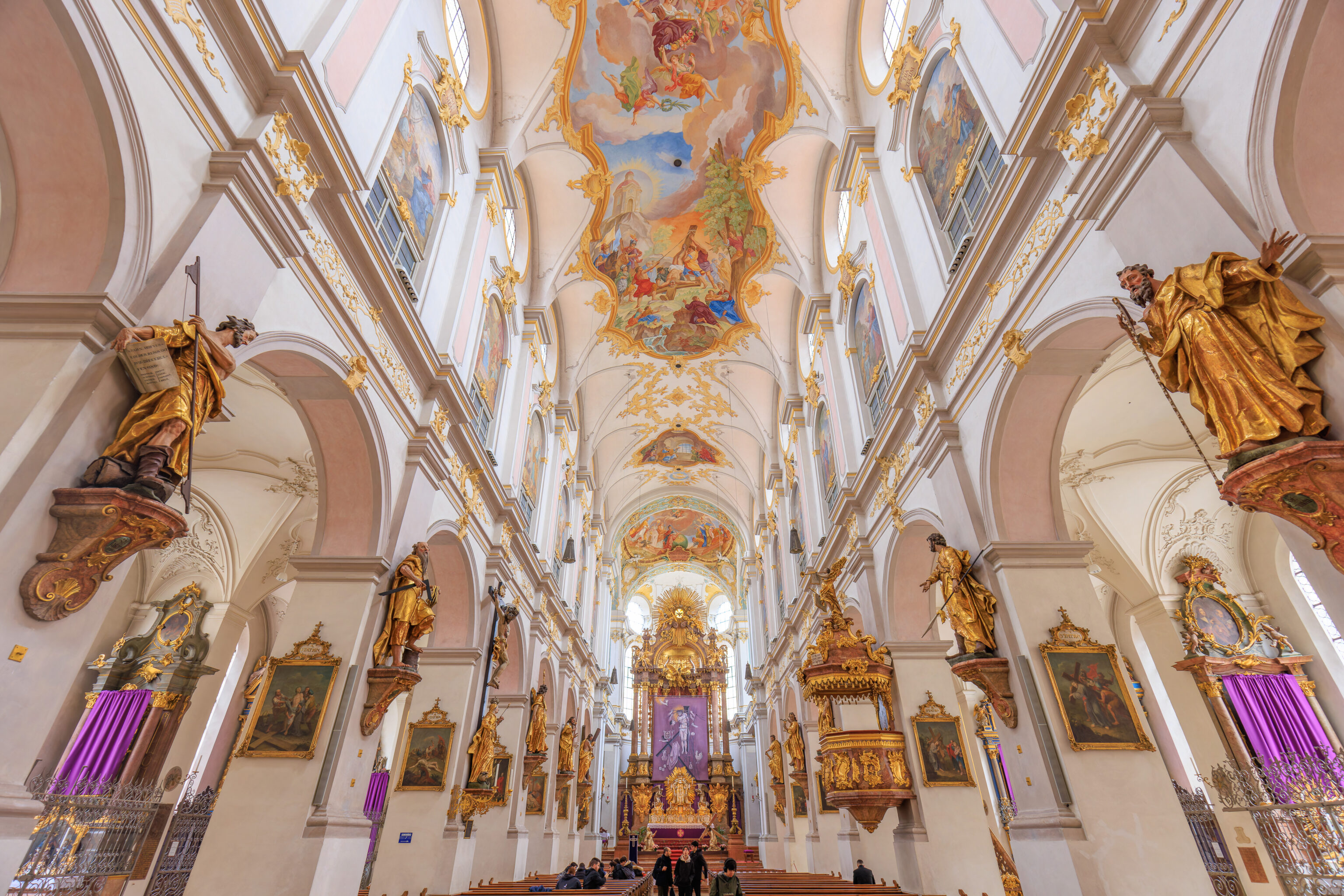
The interior of this church was very white but yet very different from Theatinerkirche. Much of the detailing had a gilded gold appearance. Colorful art was painted on the ceiling and upper walls.
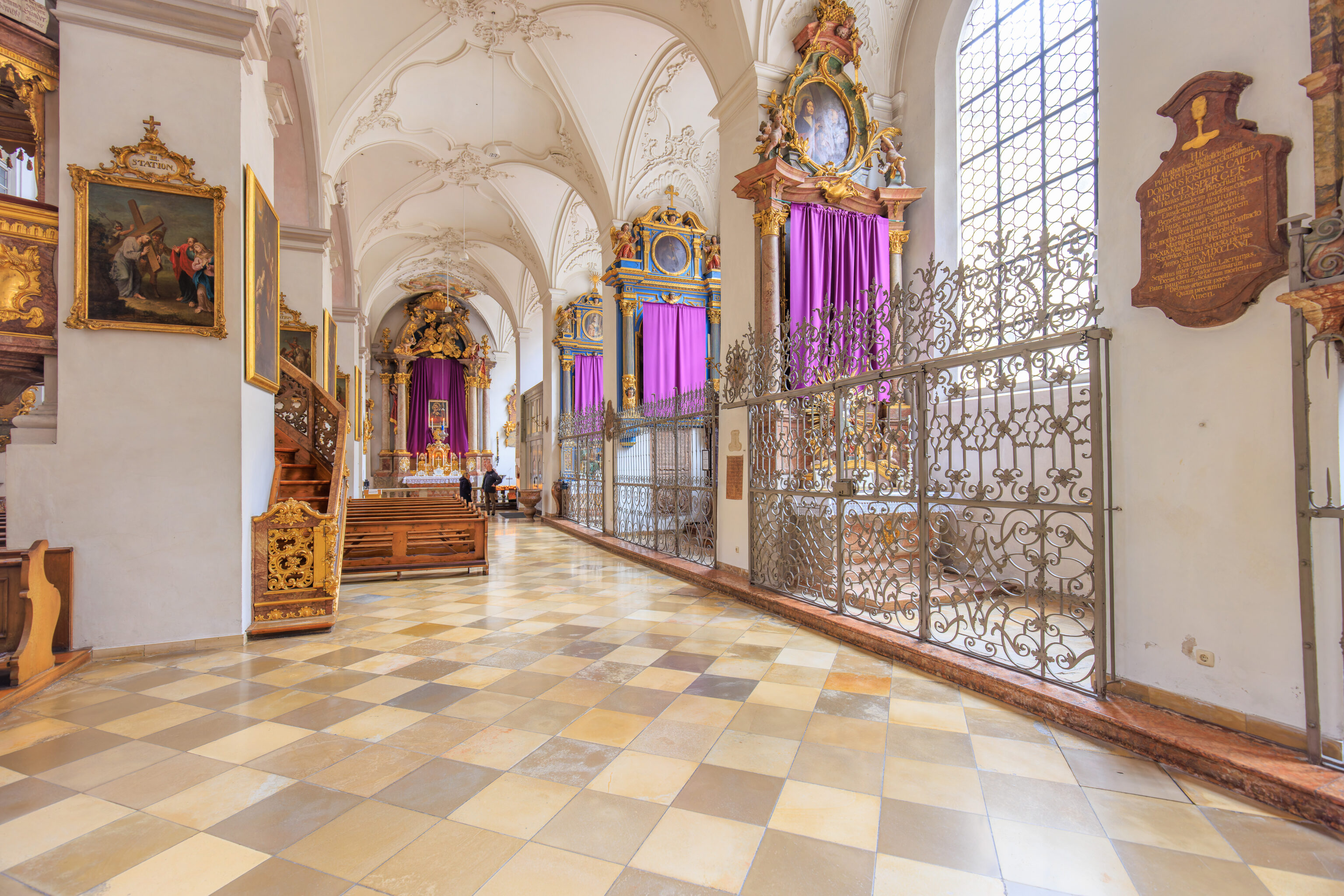
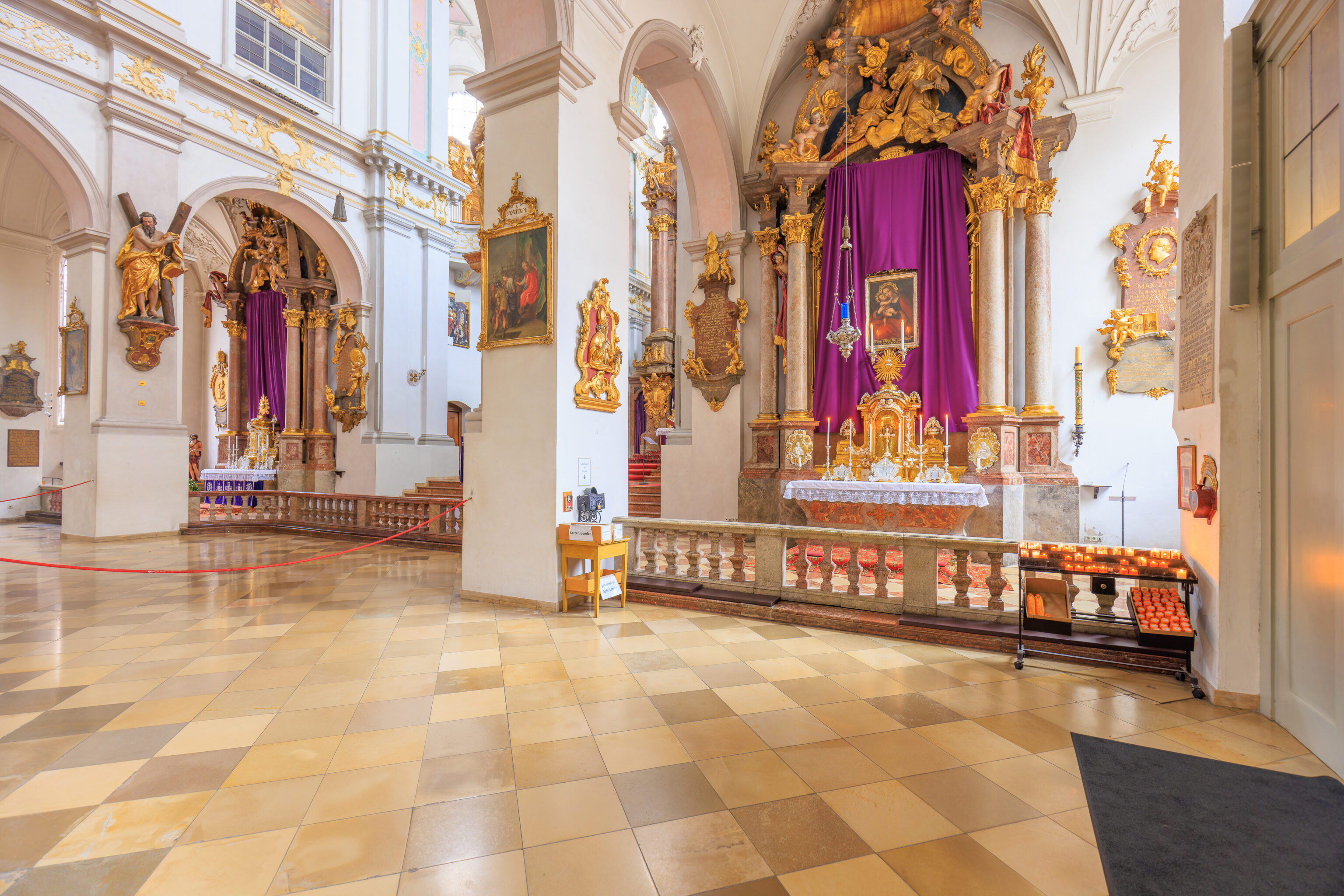
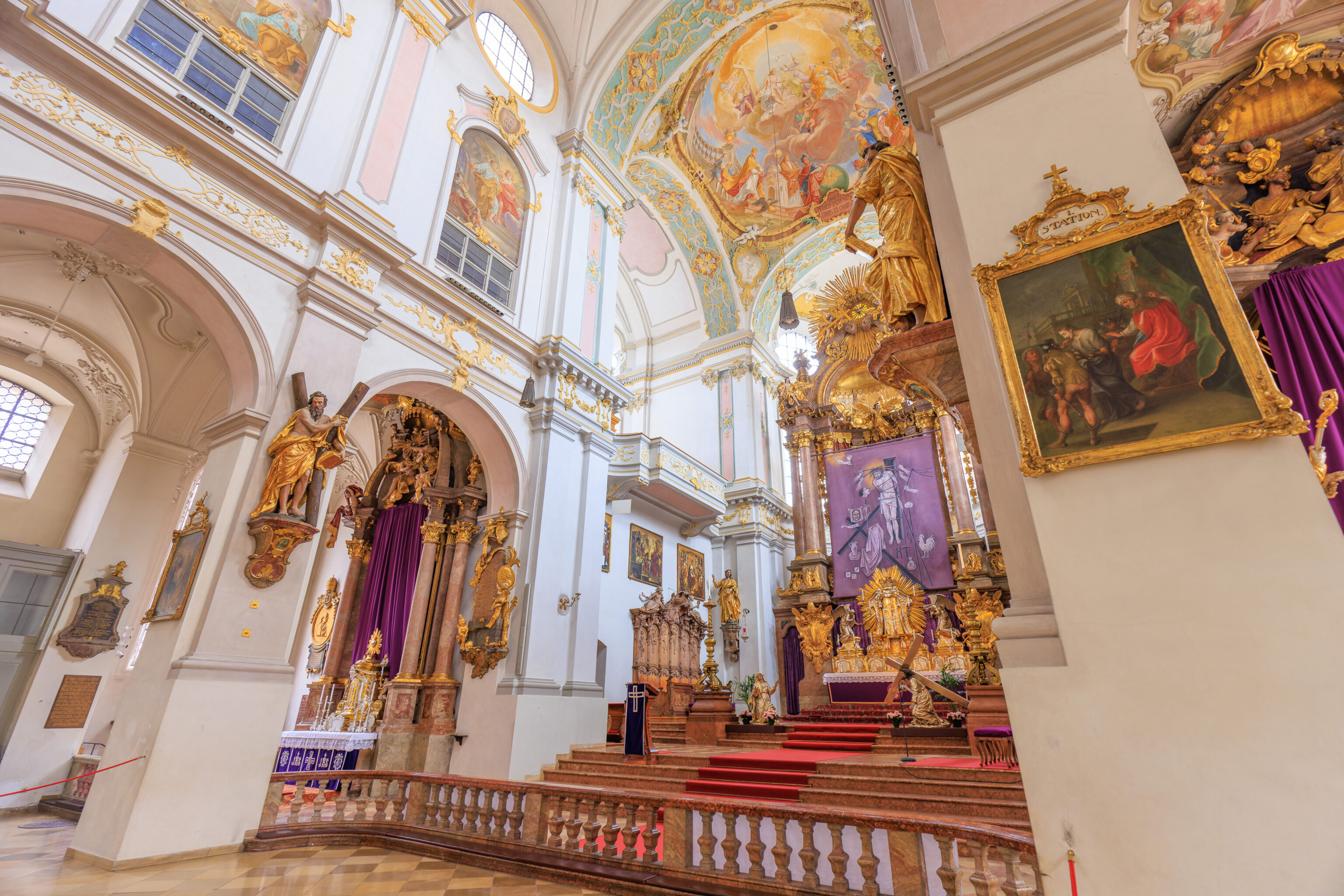
We walked around via the the southern side of the church.
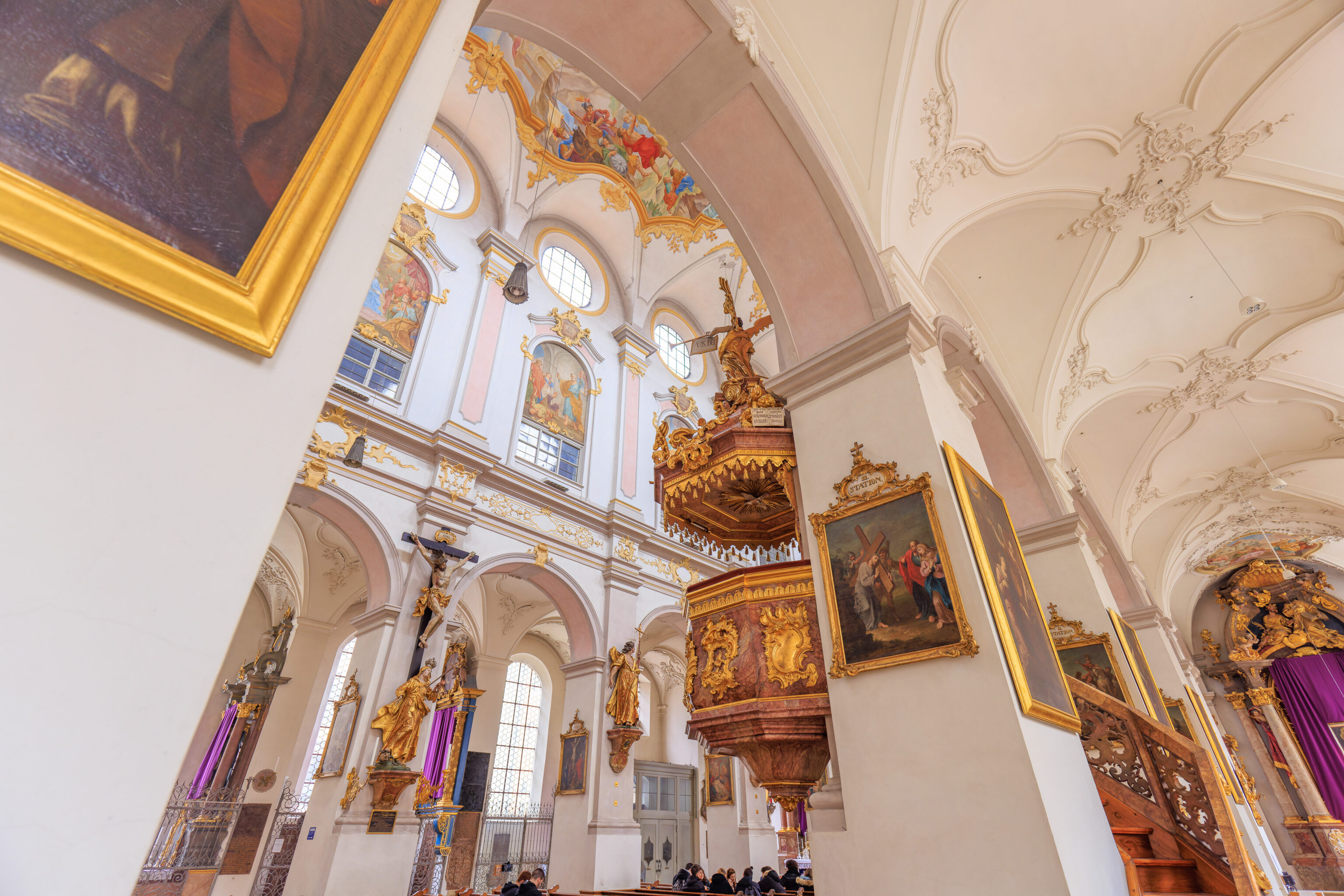
All the usual elements of a church were present, as expected.
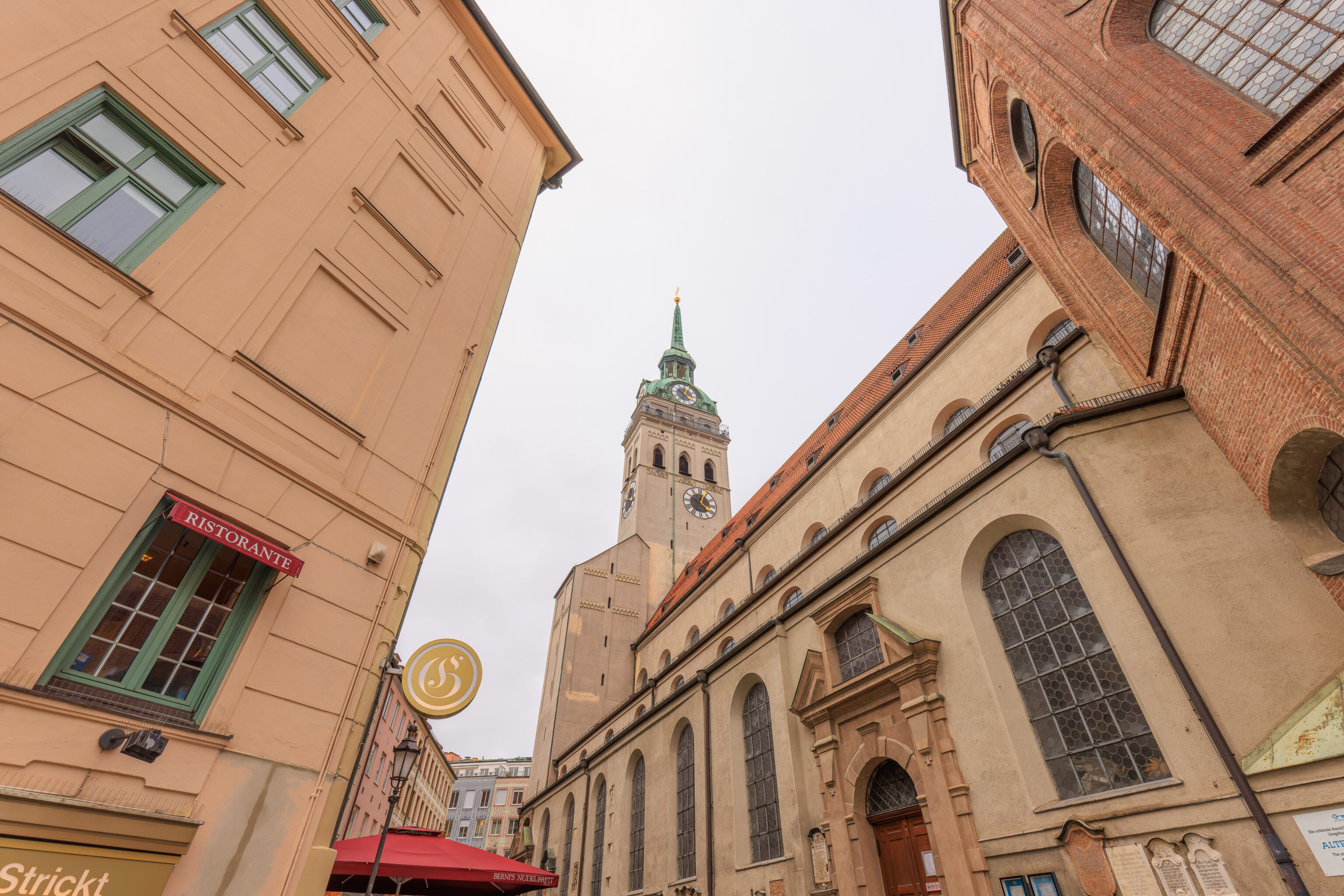
Because of the church’s location, there isn’t really any way to get a complete view of the whole building from the outside.
Old Town
We decided to walk around the Old Town area of Munich for a bit. The Viktualienmarkt (Food Market) is just to the south of Alter Peter.
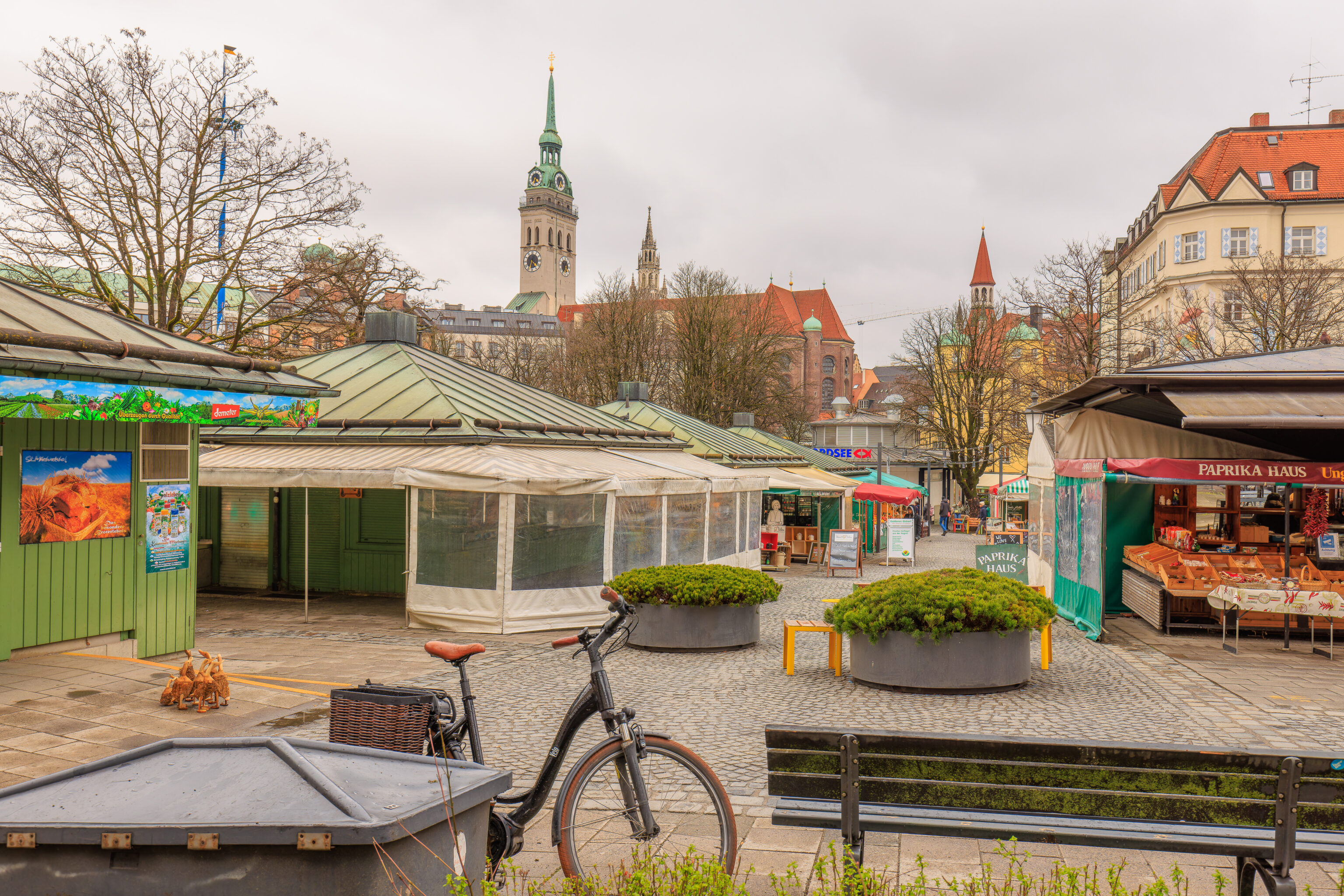
There are various vendors here selling fresh fruit and vegetables, meat, and prepared foods. It was not very busy when we arrived.

We decided to get some tomato soup from Münchner Suppenküche (Munich Soup Kitchen). The hot soup was nice on this cold afternoon. The English name for this shop is unfortunate as this is simply a small restaurant that sells various soups. Some sort of liver meatball soup seemed to be rather popular here but we decided not to get it as liver didn’t seem too appealing. It was apparently Leberknödelsuppe, a Bavarian specialty when served as a soup.
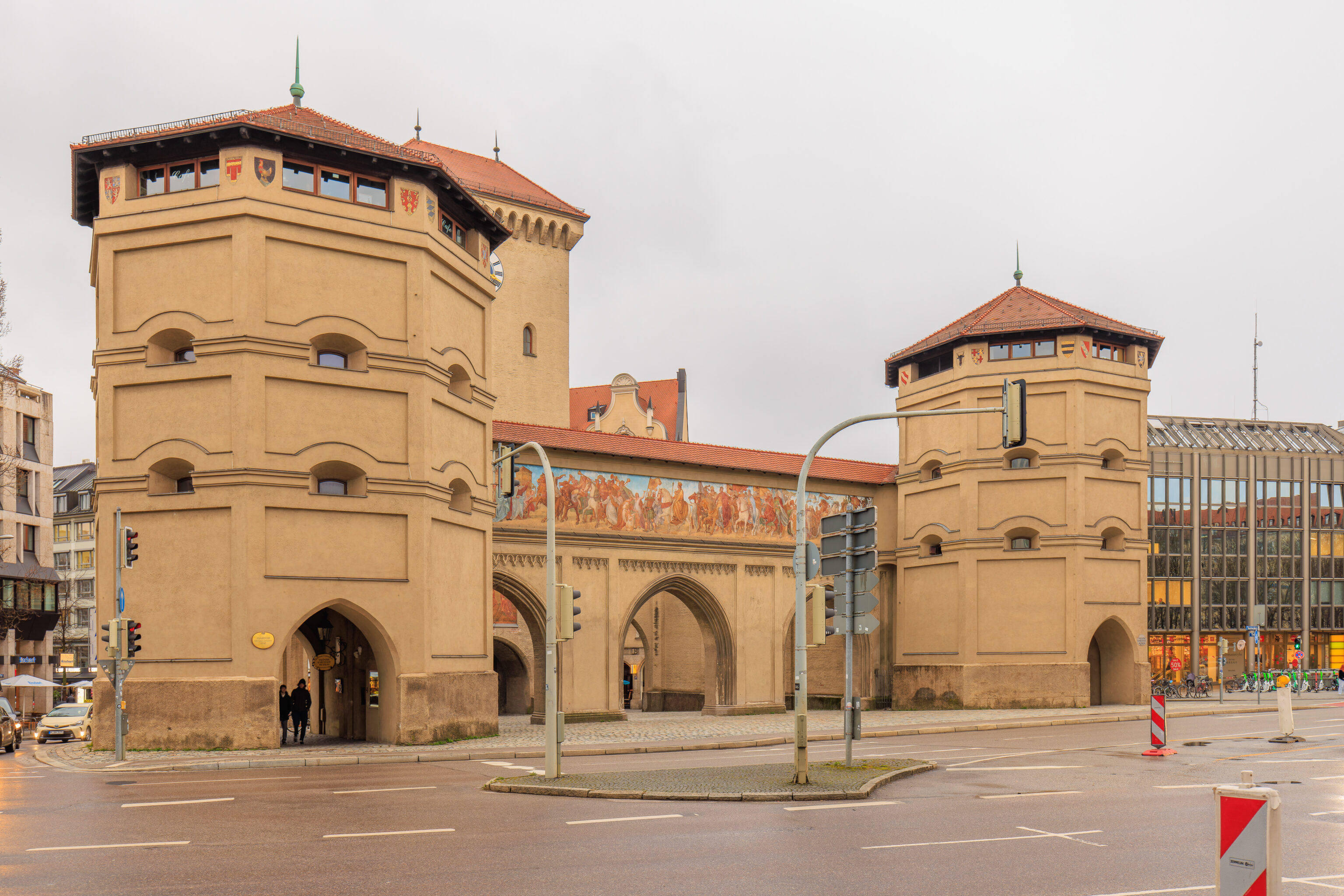
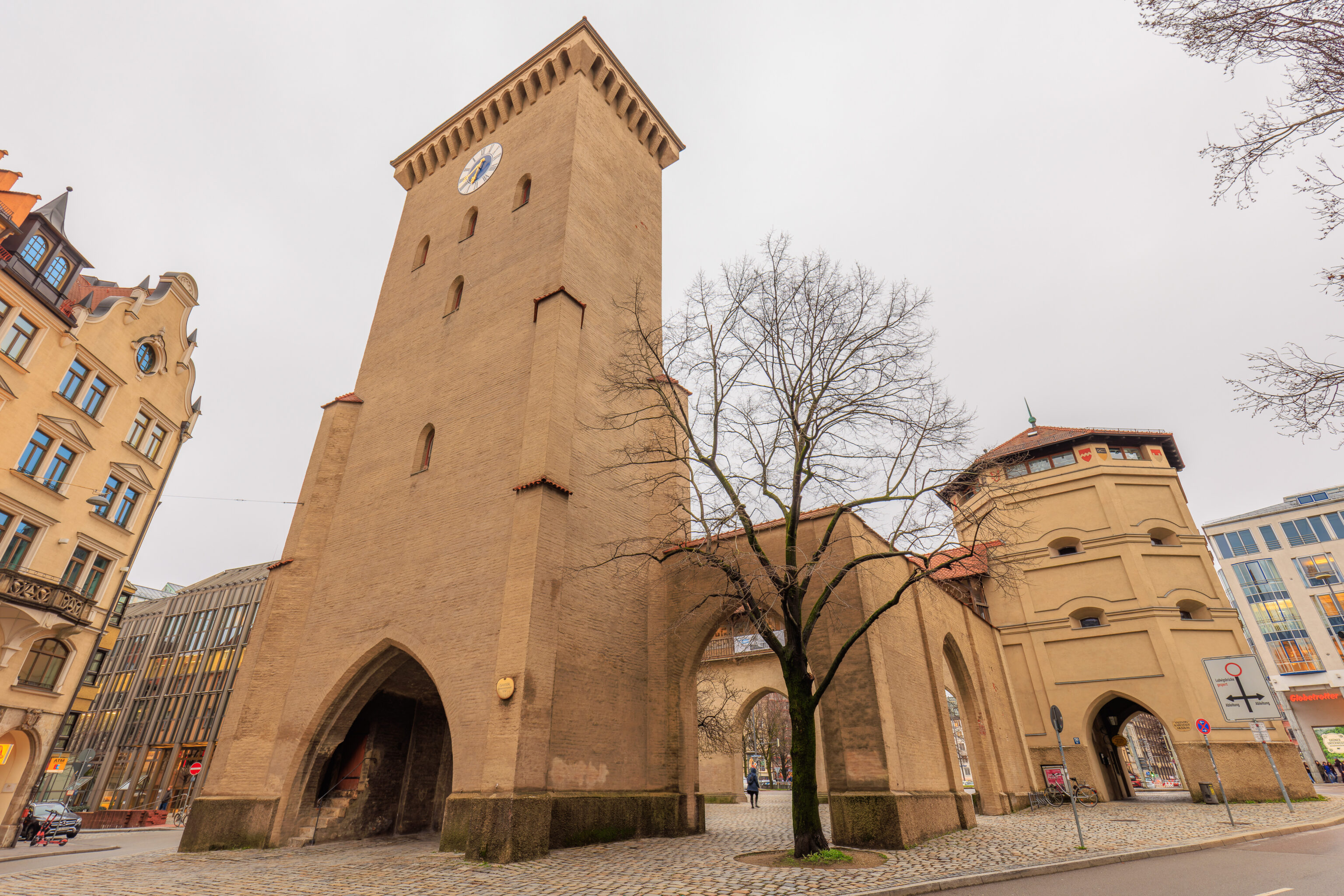
We continued walking past the market until reaching the Isartor (Isar Gate) at the east end of the old town area near the Isar, a river that runs through Munich.
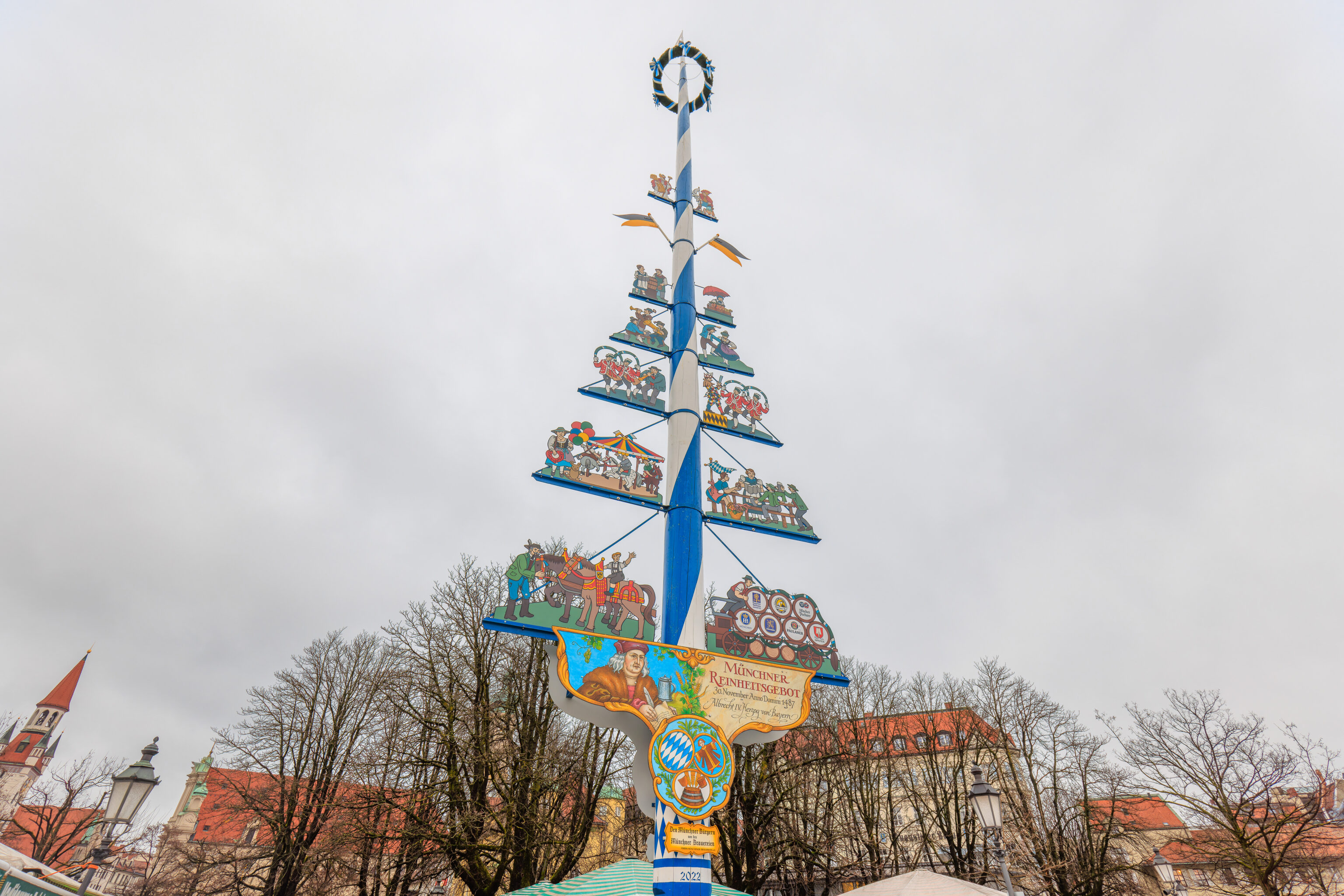
We ended up returning to the Viktualienmarkt on our way to find some dessert. We noticed this Maypole at the middle of the market.
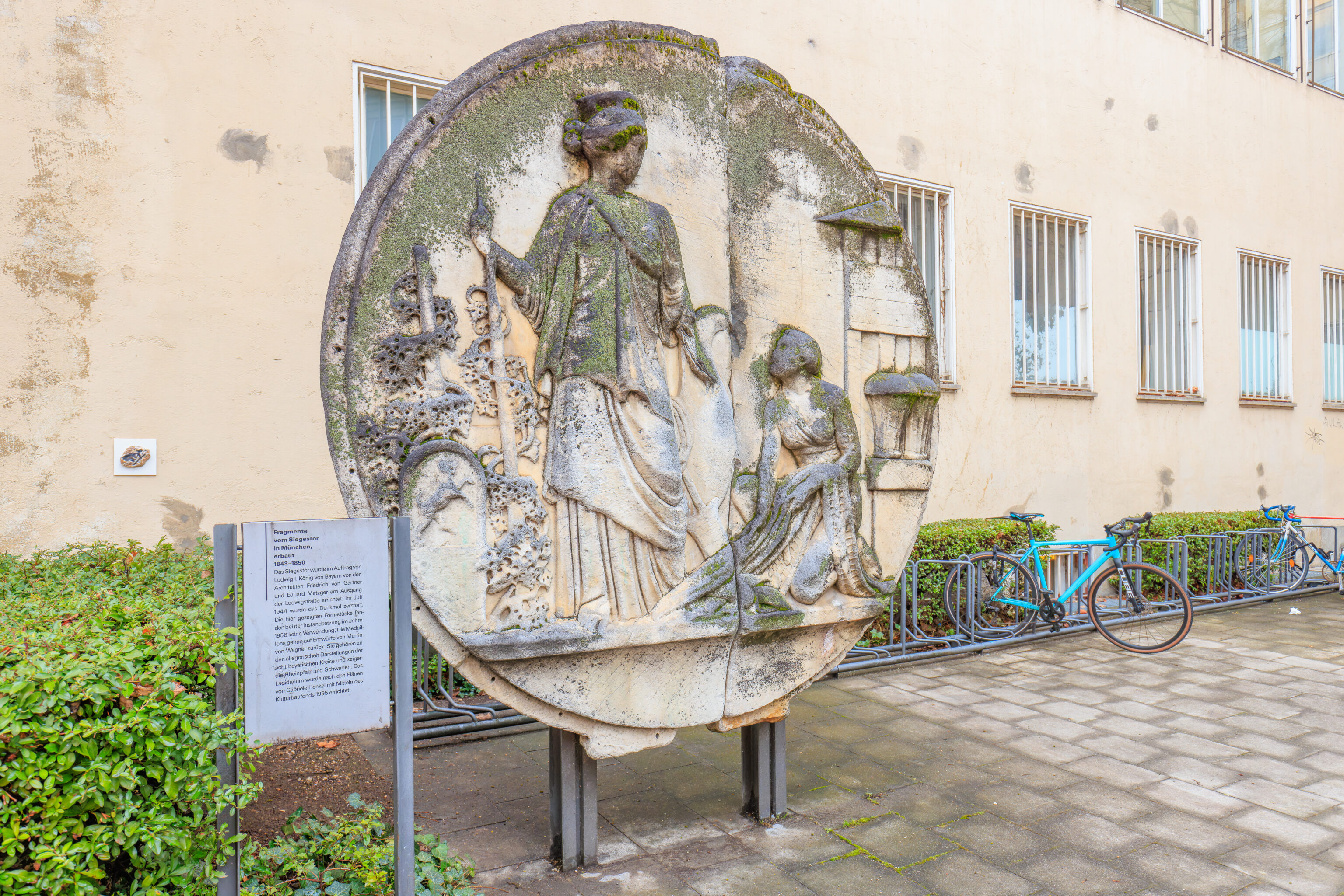
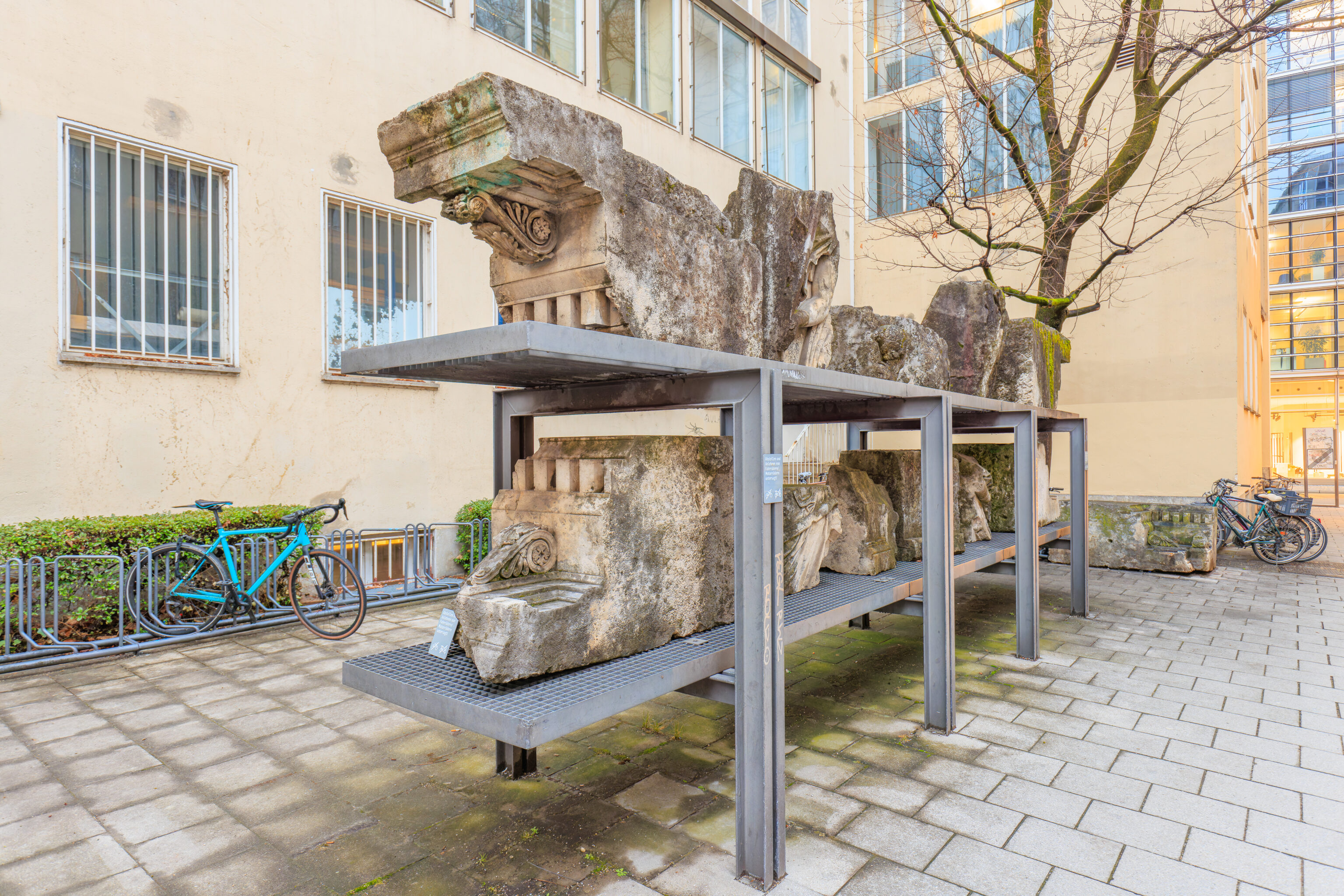
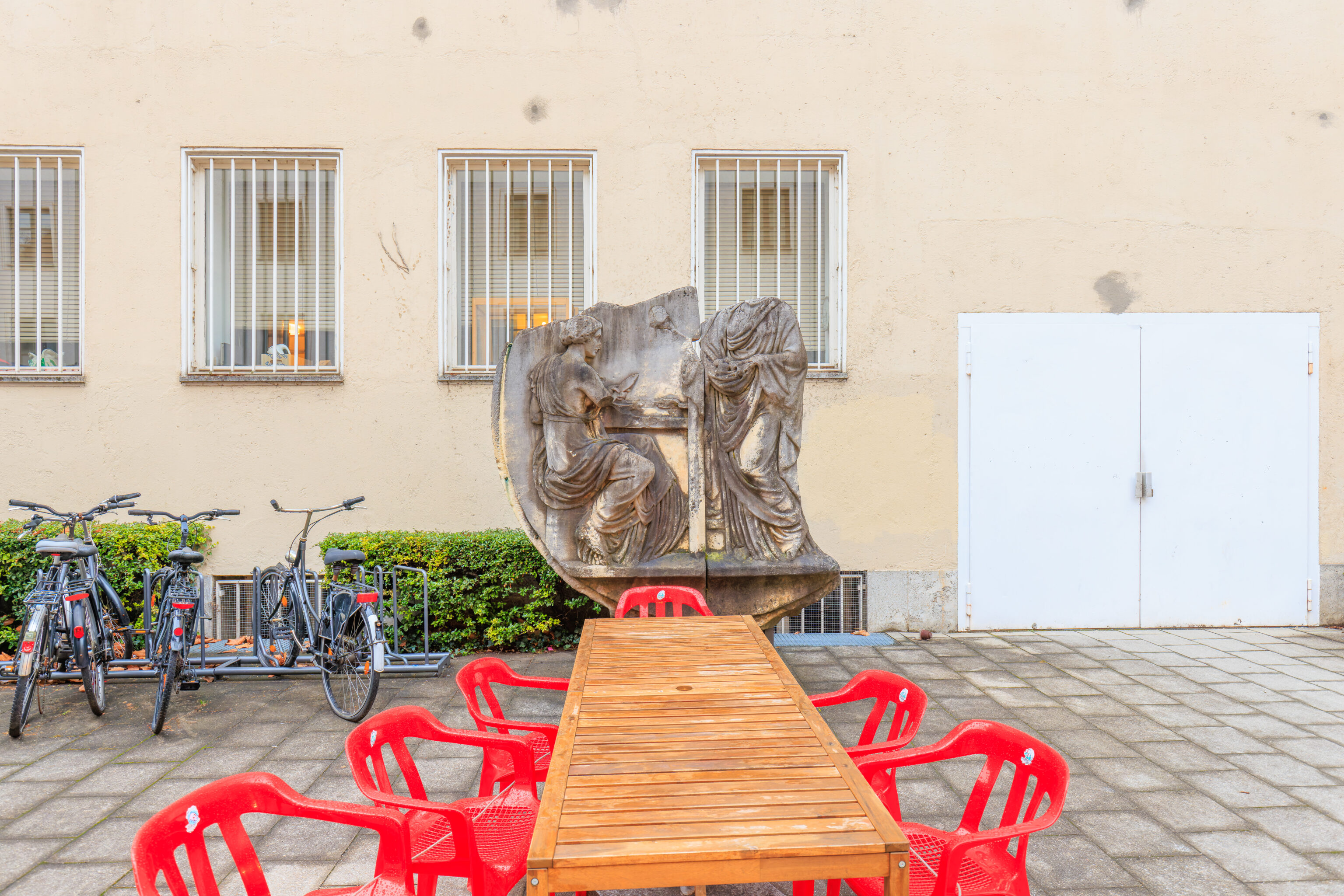
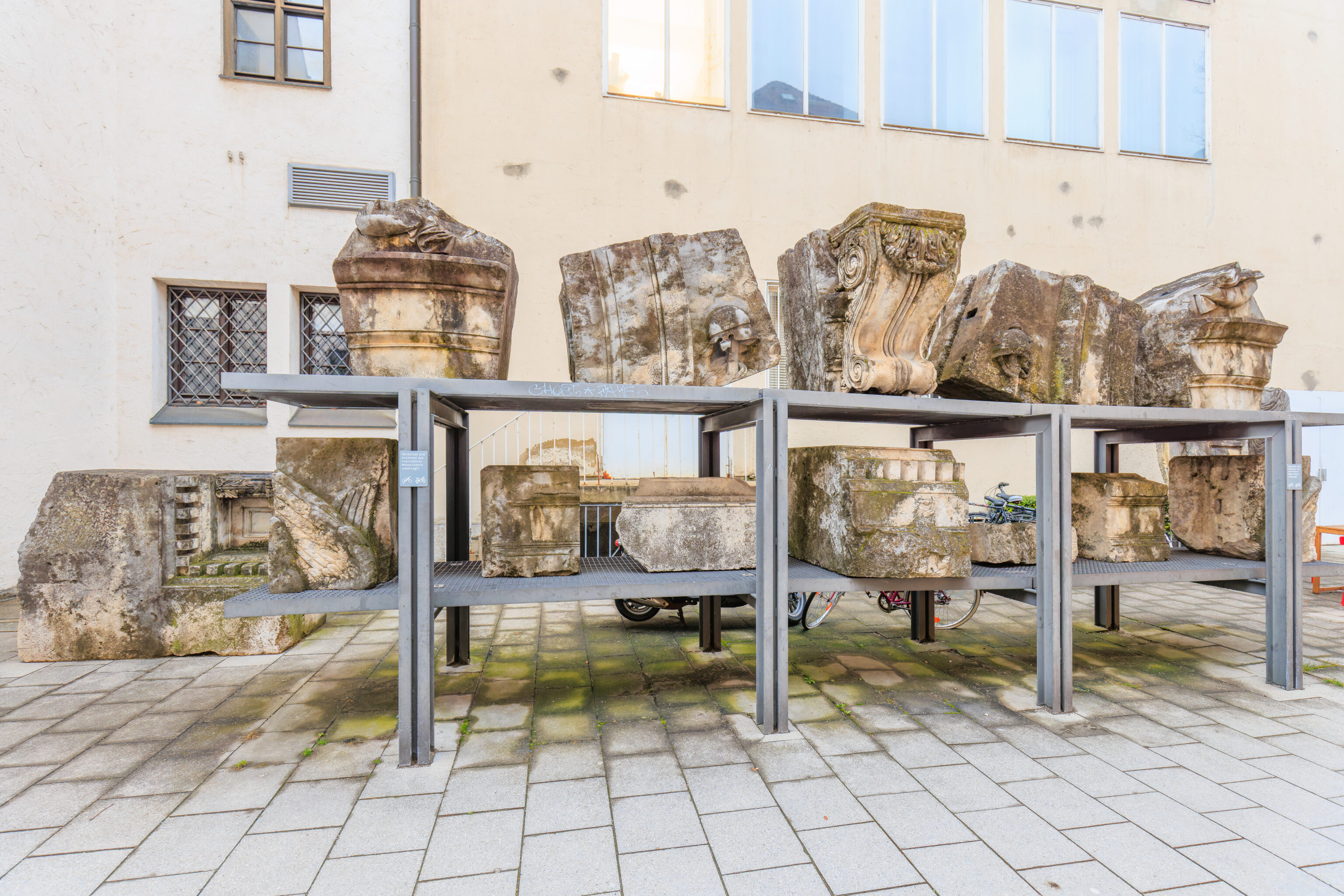
We randomly came across these stone pieces to the west of the Viktualienmarkt. They are from the Siegestor (Victory Gate). The actual gate is some distance to the north and was reconstructed after being damaged during World War II. It isn’t clear why these pieces from the gate ended up here. The sign in the first photograph reads:
The Victory Gate was built on behalf of Ludwig I, King of Bavaria, by the architects Friedrich von Gärtner and Eduard Metzger at the exit from Ludwigstrasse. In July 1944 the monument was destroyed. The fittings shown here were not used during the repairs in 1956. The medallions are based on designs by Martin von Wagner. They are among the allegorical representations of the eight Bavarian districts and show the Rhine Palatinate and Swabia. The lapidarium was built according to the plans of Gabriele Henkel with funds from the Cultural Building Fund in 1995.
There are smaller signs saying not to park bicycles or motorcycles on the structure as this seems to be an area where bicycles in particular are parked.
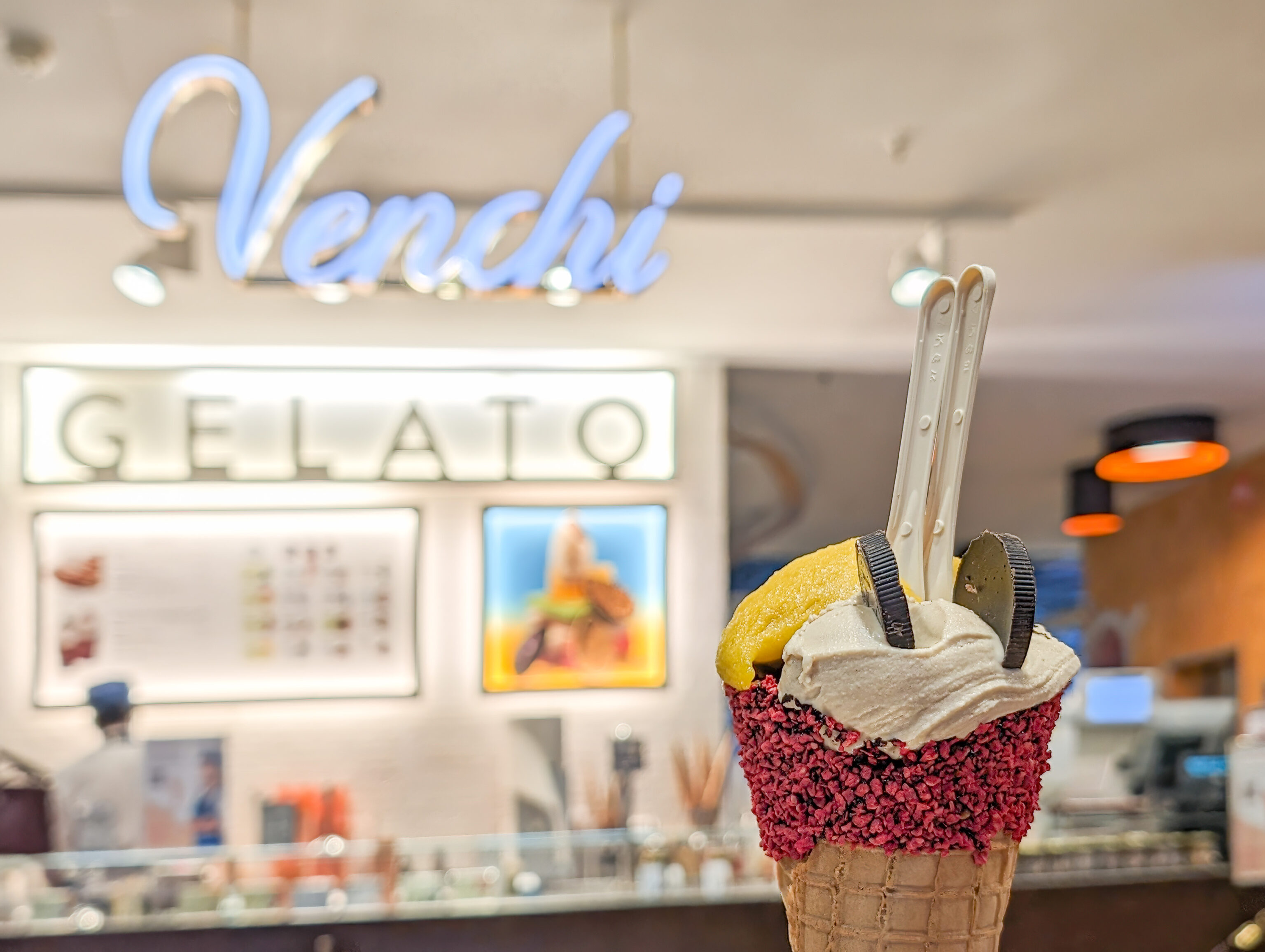
We eventually made it to Venchi at the Eataly to the southwest of the Viktualienmarkt. Both Venchi and Eataly are from Italy. We’ve been to both before, the Eataly in NYC and Venchi in London at Covent Garden. We got dark chocolate, rose & raspberry, hazelnut from the Piedmont region, and mango. All the flavors were excellent with rich but not overly sweet flavor. It was fantastic, just like our previous experience with the brand.
Le Méridien
After dessert, we headed back to the Hauptbahnhof to return to the Le Méridien.
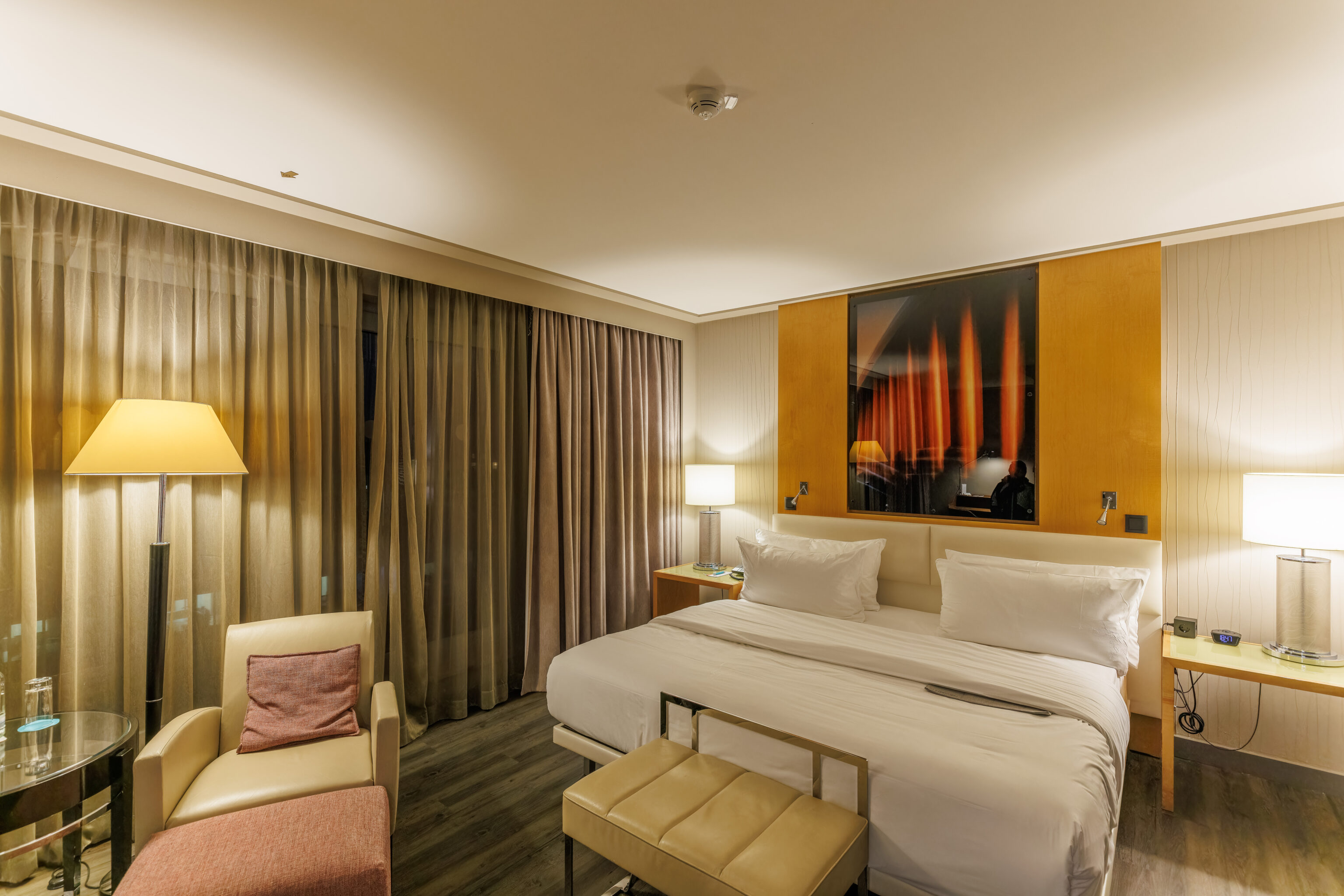
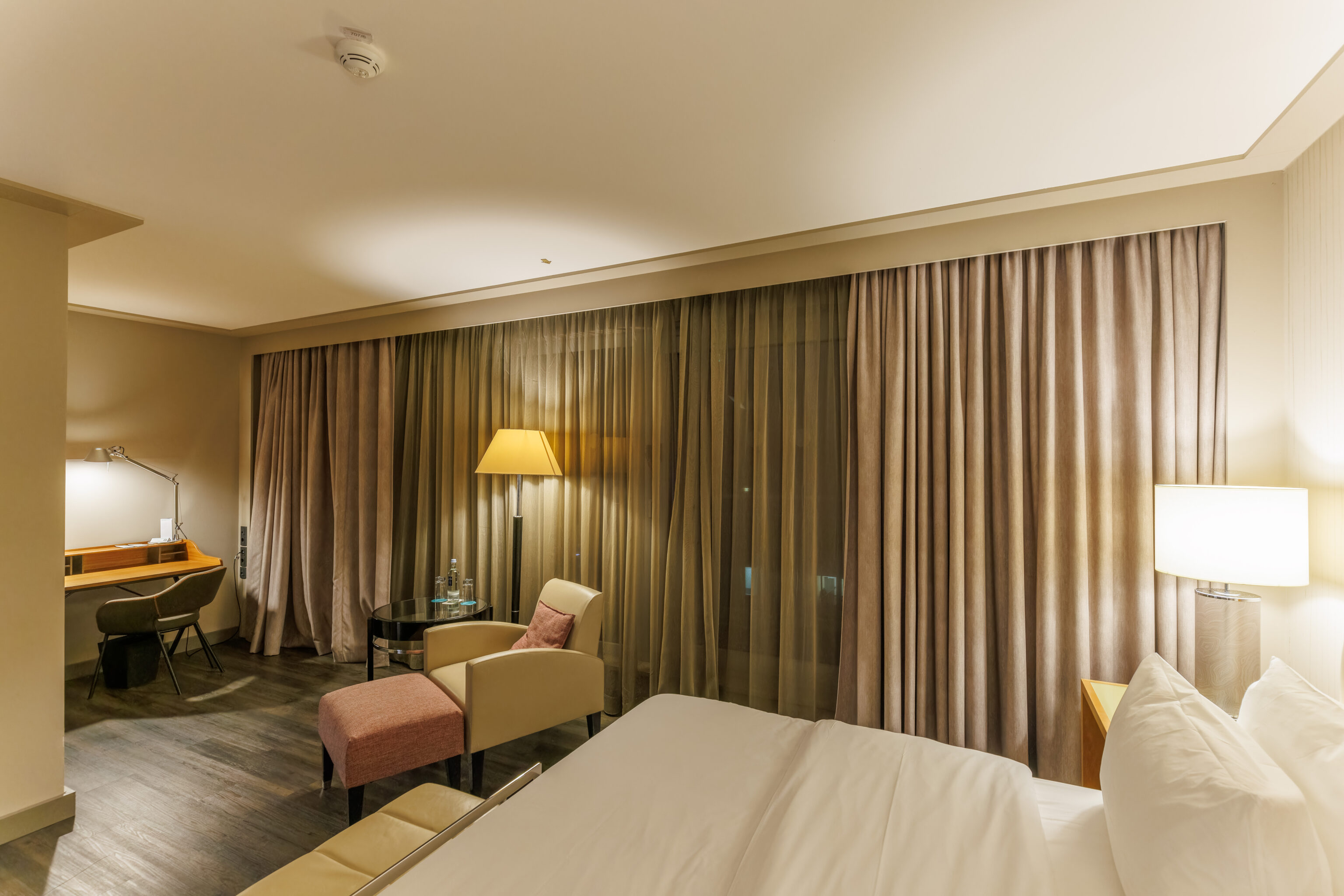
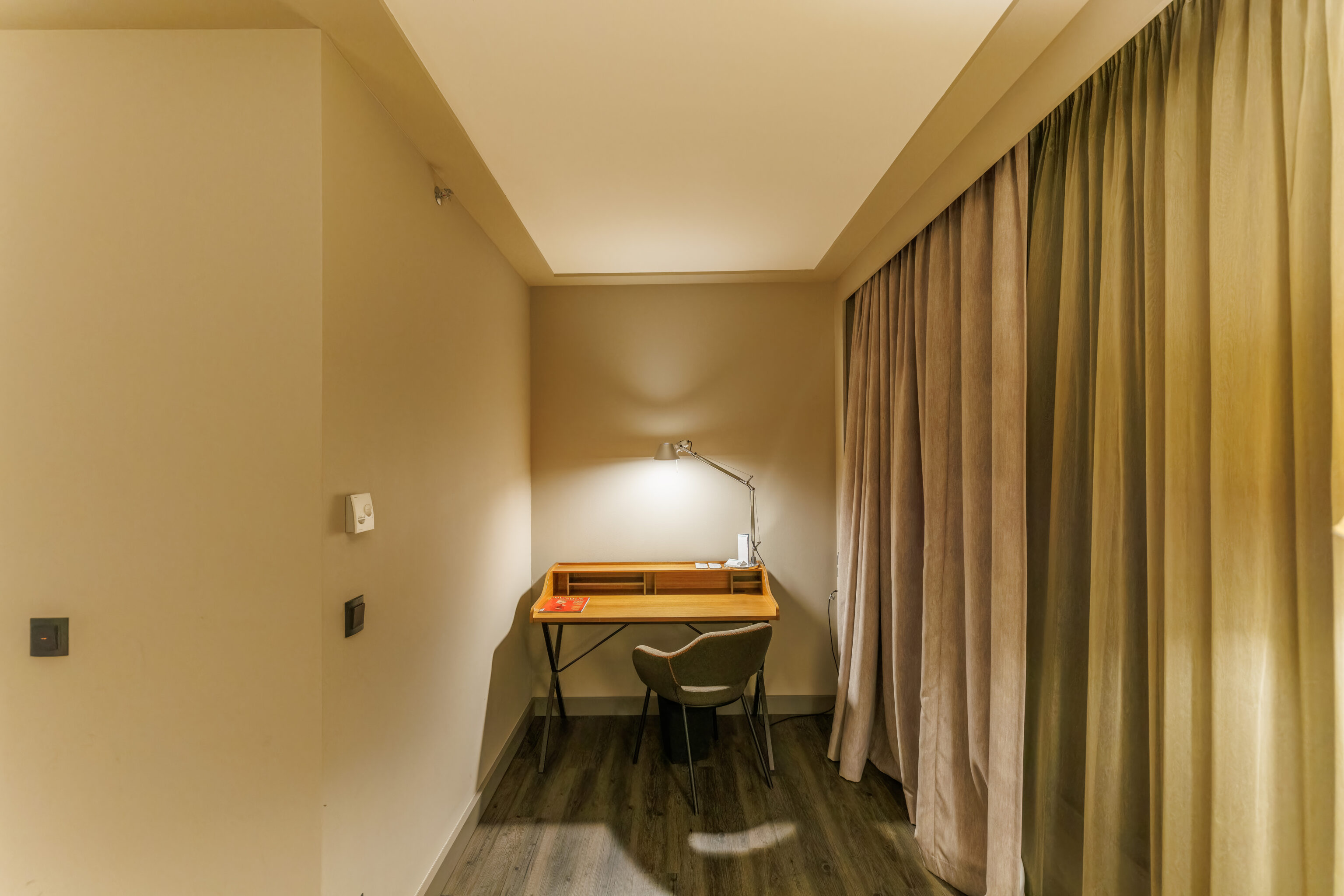
We were upgraded to a larger room with floor to ceiling windows, though there wasn’t too much of a view as the hotel building isn’t quite tall enough.
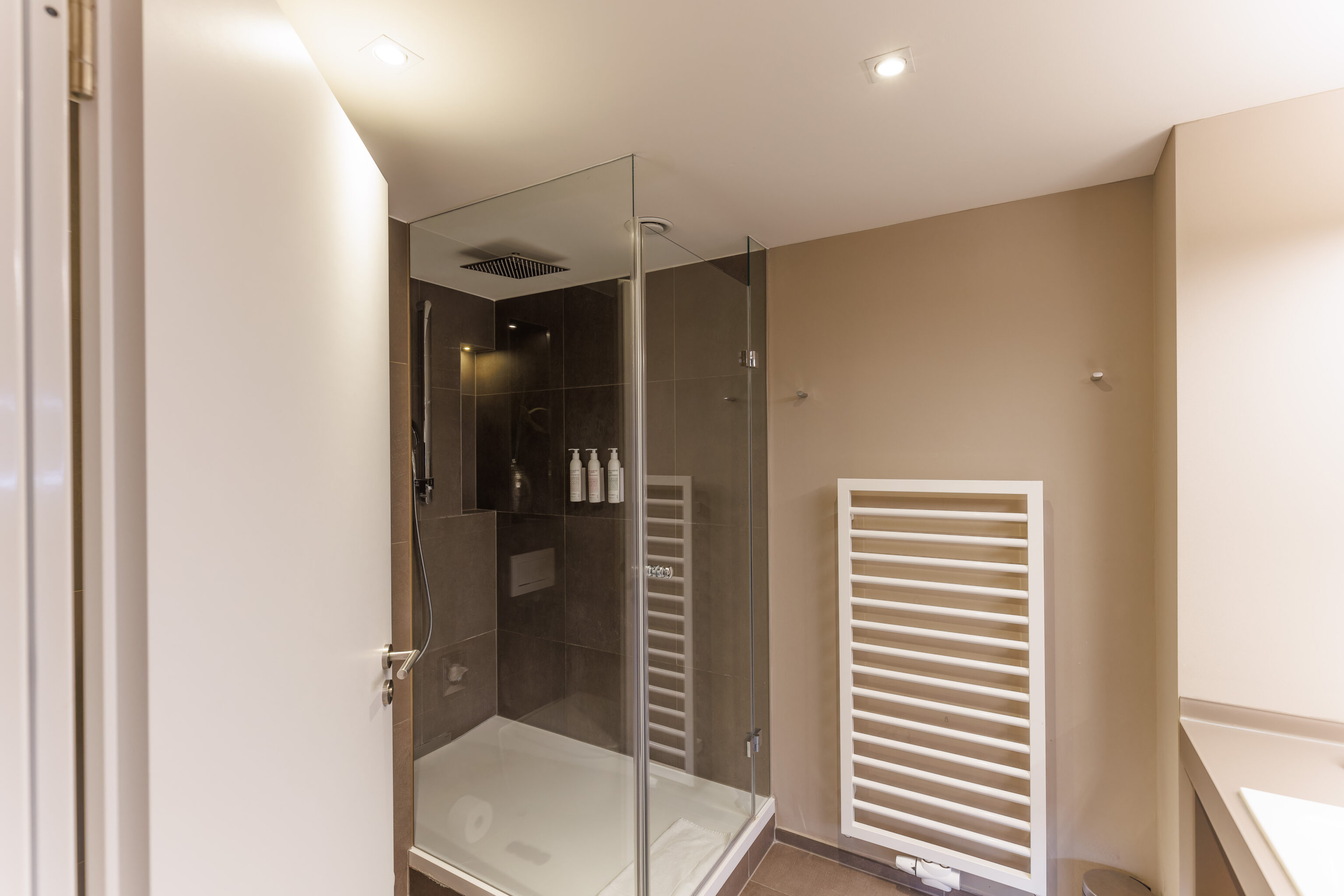
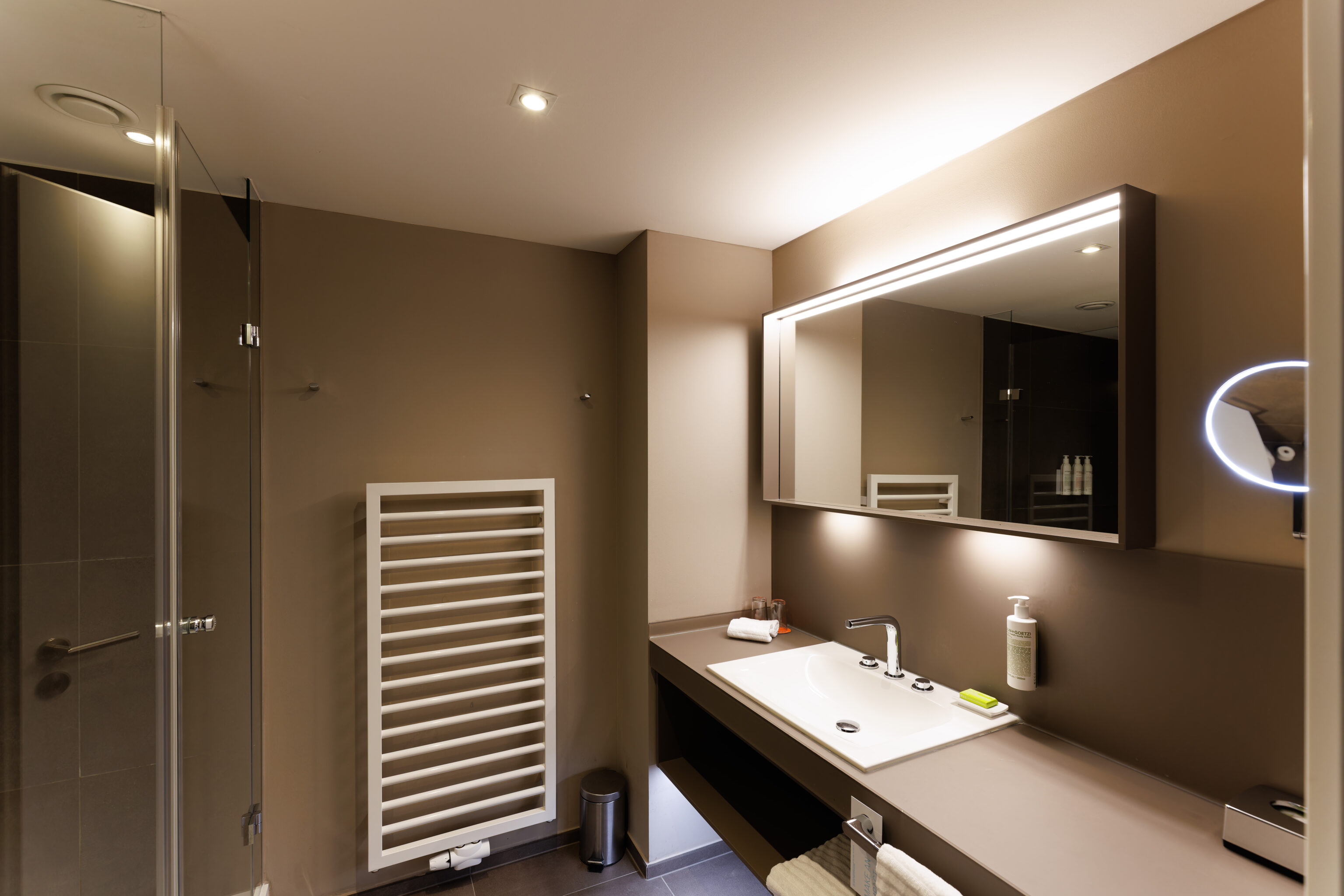
The bathroom was a good size though, unfortunately, did not have a bathtub. Our room was missing bathrobes and slippers, which was quickly resolved by chatting with the front desk via the Marriott app.
- https://en.wikipedia.org/wiki/Bavarian_Crown_Jewels ↩︎
- https://de.wikipedia.org/wiki/Theodo: Unter dem Vornamen Theodo werden folgende Persönlichkeiten genannt, wobei es fraglich bleibt, ob Theodon I.–III. tatsächlich regierten oder nur Legende bleiben ↩︎
- https://www.english-heritage.org.uk/visit/places/rangers-house-the-wernher-collection/history-and-stories/about-wernher-collection/: THE WORLD THROUGH ART
↩︎ - https://en.wikipedia.org/wiki/Theatine_Church,_Munich ↩︎
- https://en.wikipedia.org/wiki/New_Town_Hall_(Munich)#Inception_and_construction ↩︎
- https://en.wikipedia.org/wiki/Old_Town_Hall,_Munich: For the architectural design of the Munich Rathausturm, Hauberrisser was clearly inspired by Brussels’ Town Hall ↩︎
- https://en.wikipedia.org/wiki/Fischbrunnen#Story: This fish is reminiscent of the time when the Marienplatz still served as a central market place and the fishmonger hung their still living goods in baskets in the fresh fountain water. The three butchers let their buckets pour water into the basin ↩︎
- https://en.wikipedia.org/wiki/St._Peter’s_Church,_Munich: After its reconstruction the church was dedicated anew in 1368 ↩︎


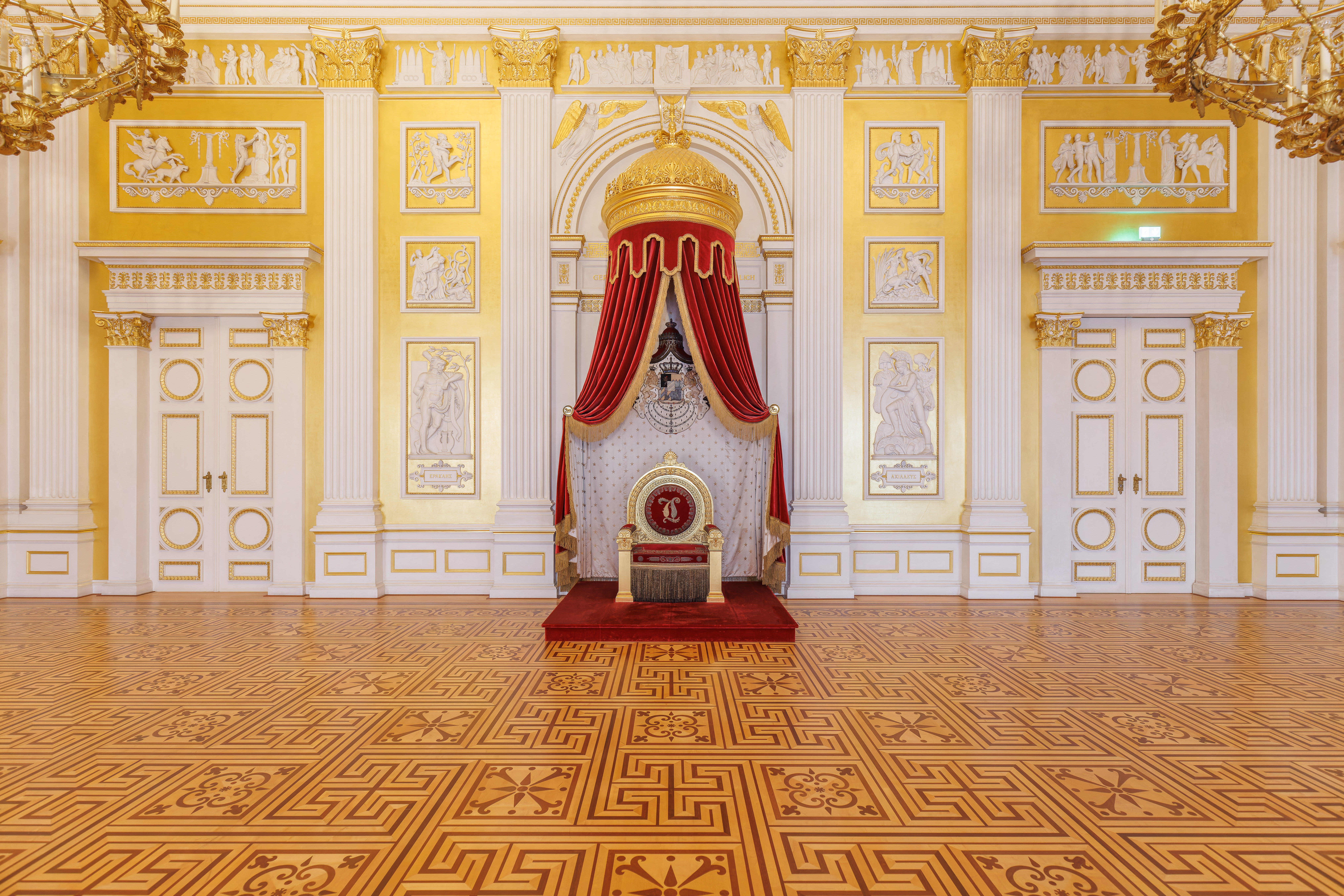
One Reply to “Munich Residenz and the Old Town”